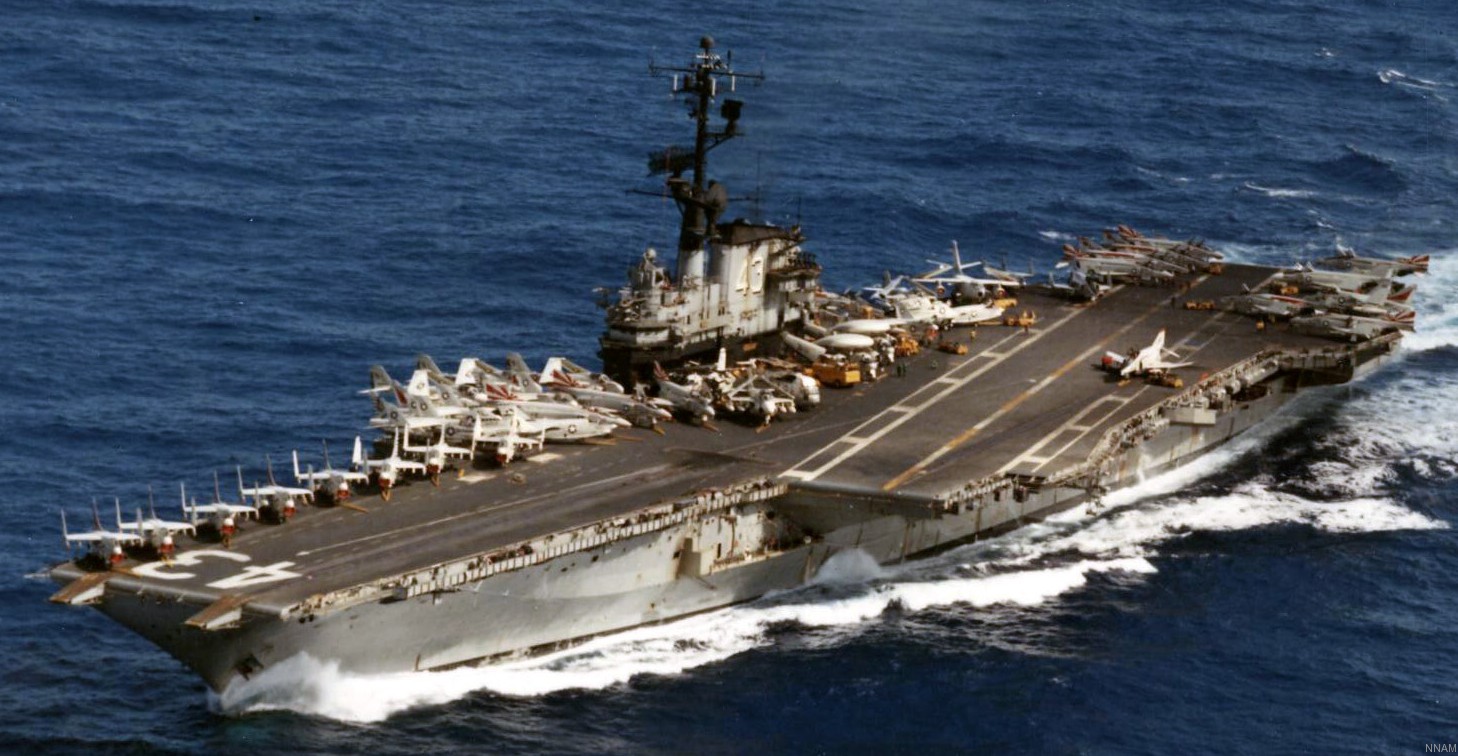 |
||
|
HOME
|
US Navy -
ships
|
US Navy - air
units
|
USMC - air
units
|
International
Navies
|
Weapon Systems
|
Special Reports |
||
|
US Navy - Aircraft Carrier CVB 43 / CVA 43 / CV 43 - USS Coral Sea |
||
|
||
| 03/20 | ||
|
Type, class: Aircraft Carrier, Midway class Builder: Newport News Shipbuilding, Newport News, Virginia, USA STATUS: Awarded: June 14, 1943 Laid down: July 10, 1944 Launched: April 2, 1946 Commissioned: October 1, 1947 (as CVB 43) redesignated CVA 43 on October 1, 1952 decommissioned: May 24, 1957 SCB-110A modification: April 1957 - February 1960 recommissioned: January 25, 1960 redesignated CV 43 on June 30, 1975 Decommissioned: April 26, 1990 Struck: April 28, 1990 Fate: sold for scrap / scrapping completed in September 2000 Namesake: Battle of the Coral Sea (May 1942) Ships Motto: Older and Bolder Technical Data: see: INFO > Midway class Aircraft Carrier - CV |
||
|
Deployments - Carrier Air Groups/Wings embarked: January 1948 - April 1948 with Large Carrier Air Group 5 (CVBG-5) - shakedown cruise - Atlantic Ocean June 1948 - August 1948 with Attack Carrier Air Group 17 (CVAG-17) - Atlantic Ocean, Mediterranean Sea May 1949 - September 1949 with Carrier Air Group 2 (CVG-2) - Mediterranean Sea September 1950 - February 1951 with Carrier Air Group 17 (CVG-17) - Mediterranean Sea March 1951 - October 1951 with Carrier Air Group 1 (CVG-1) - Mediterranean Sea April 1952 - October 1952 with Carrier Air Group 4 (CVG-4) - Mediterranean Sea April 1953 - October 1953 with Carrier Air Group 8 (CVG-8) - Mediterranean Sea July 1954 - December 1954 with Carrier Air Group 10 (CVG-10) - Mediterranean Sea March 1955 - September 1955 with Carrier Air Group 17 (CVG-17) - Mediterranean Sea August 1956 - February 1957 with Carrier Air Group 10 (CVG-10) - Mediterranean Sea April 1957 - February 1960 - SCB-110A modification September 1960 - May 1961 with Carrier Air Group 15 (CVG-15) - Western Pacific Ocean December 1961 - July 1962 with Carrier Air Group 15 (CVG-15) - Western Pacific Ocean April 1963 - November 1963 with Carrier Air Group 15 (CVG-15) - Western Pacific Ocean December 1964 - November 1965 with Carrier Air Wing 15 (CVW-15) - Vietnam War July 1966 - February 1967 with Carrier Air Wing 2 (CVW-2) - Vietnam War July 1967 - April 1968 with Carrier Air Wing 15 (CVW-15) - Vietnam War September 1968 - April 1969 with Carrier Air Wing 15 (CVW-15) - Vietnam War September 1969 - July 1970 with Carrier Air Wing 15 (CVW-15) - Vietnam War November 1971 - July 1972 with Carrier Air Wing 15 (CVW-15) - Vietnam War March 1973 - November 1973 with Carrier Air Wing 15 (CVW-15) - Vietnam War December 1974 - July 1975 with Carrier Air Wing 15 (CVW-15) - Western Pacific Ocean February 1977 - October 1977 with Carrier Air Wing 15 (CVW-15) - Western Pacific Ocean November 1979 - June 1980 with Carrier Air Wing 14 (CVW-14) - Pacific Ocean May 1981 - June 1981 with Carrier Air Wing 14 (CVW-14) - off Hawaii August 1981 - March 1982 with Carrier Air Wing 14 (CVW-14) - Pacific Ocean March 1983 - September 1983 with Carrier Air Wing 14 (CVW-14) - World Cruise - Alameda to Norfolk via Suez Canal October 1985 - May 1986 with Carrier Air Wing 13 (CVW-13) - Mediterranean Sea September 1987 - March 1988 with Carrier Air Wing 13 (CVW-13) - Mediterranean Sea May 1989 - September 1989 with Carrier Air Wing 13 (CVW-13) - Mediterranean Sea |
||
| images (1980 - scrapping) | ||
|
scrapping / dismantling: May 1993 - September 2000 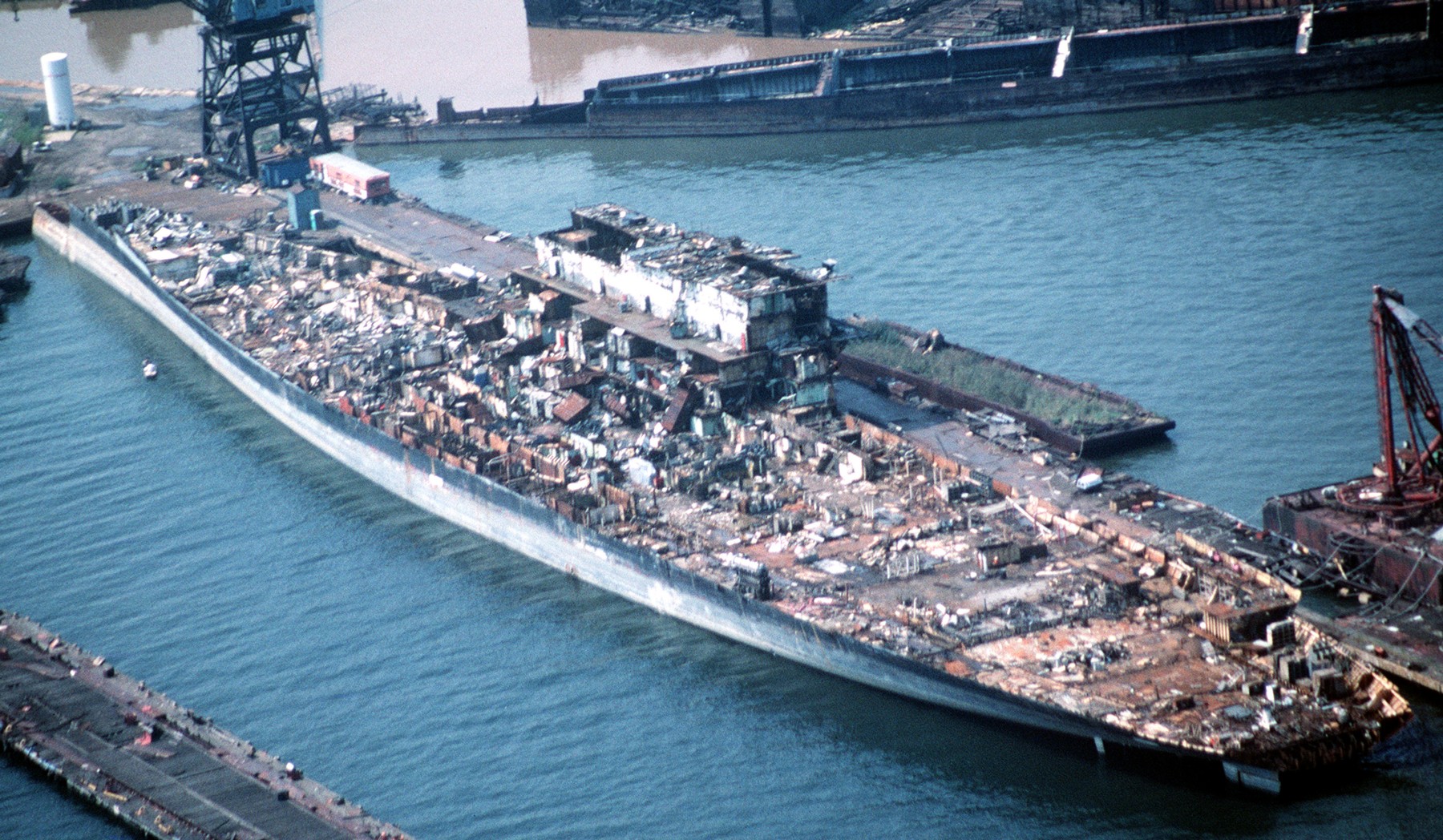 scrapping at Lambert Point facility of the new Patapsco Marine Salvage Company - September 1997 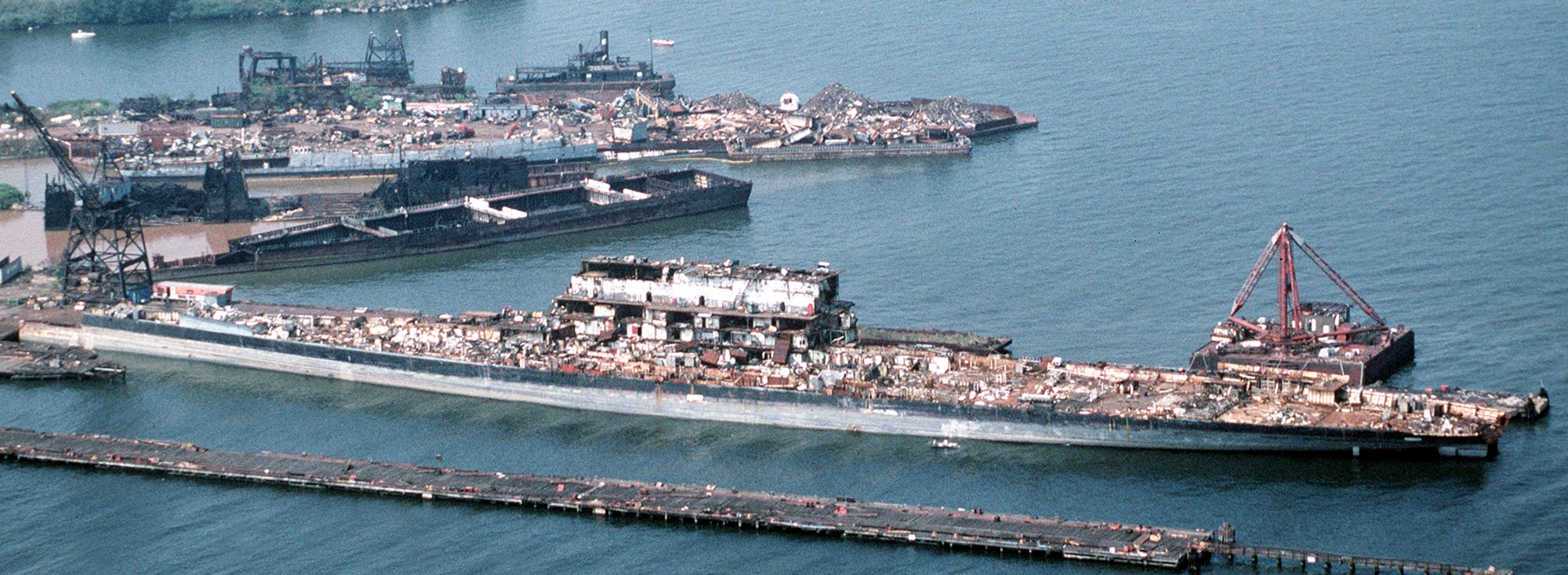 scrapping at Lambert Point facility of the new Patapsco Marine Salvage Company - September 1997 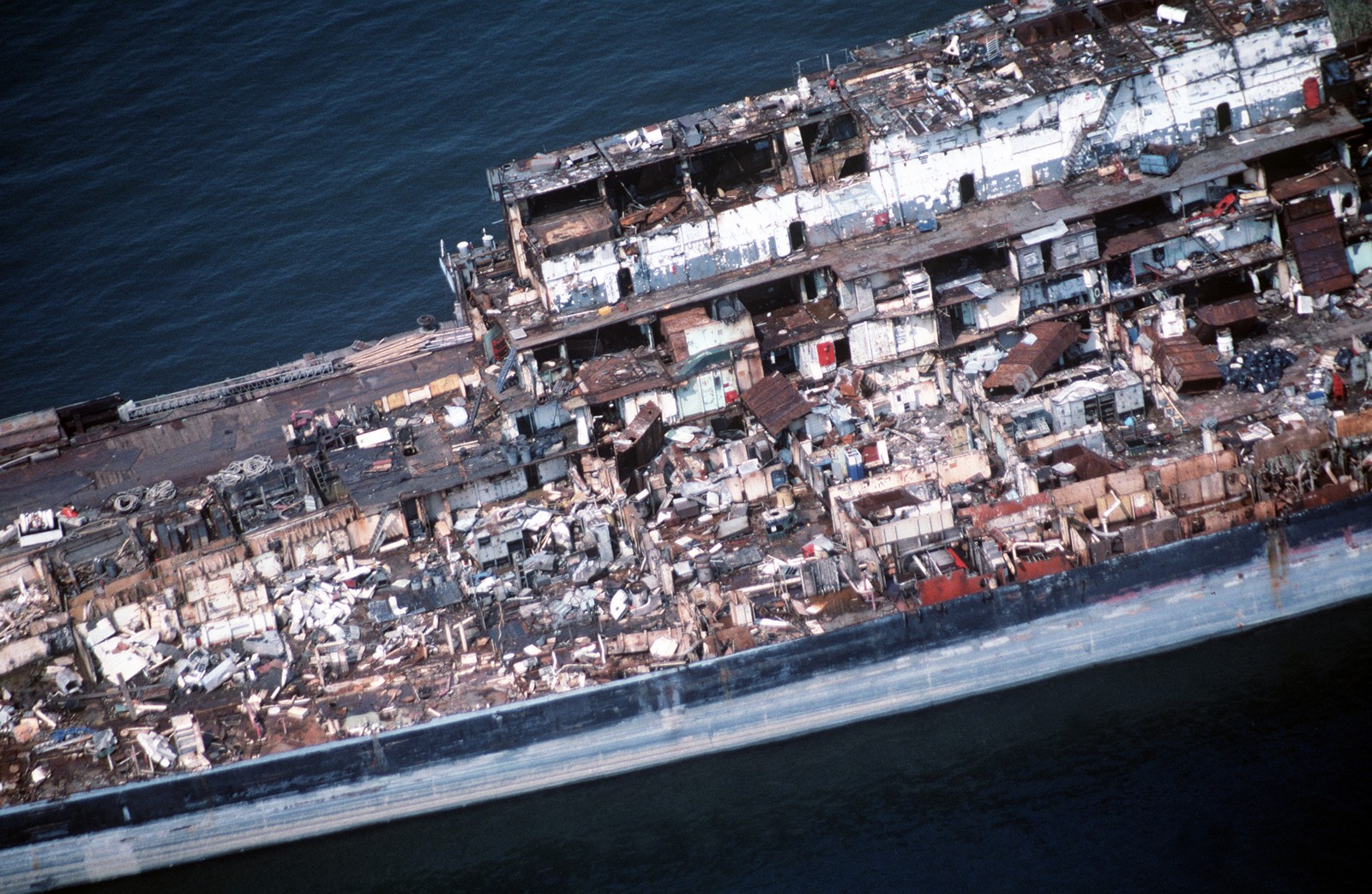 scrapping at Lambert Point facility of the new Patapsco Marine Salvage Company - September 1997 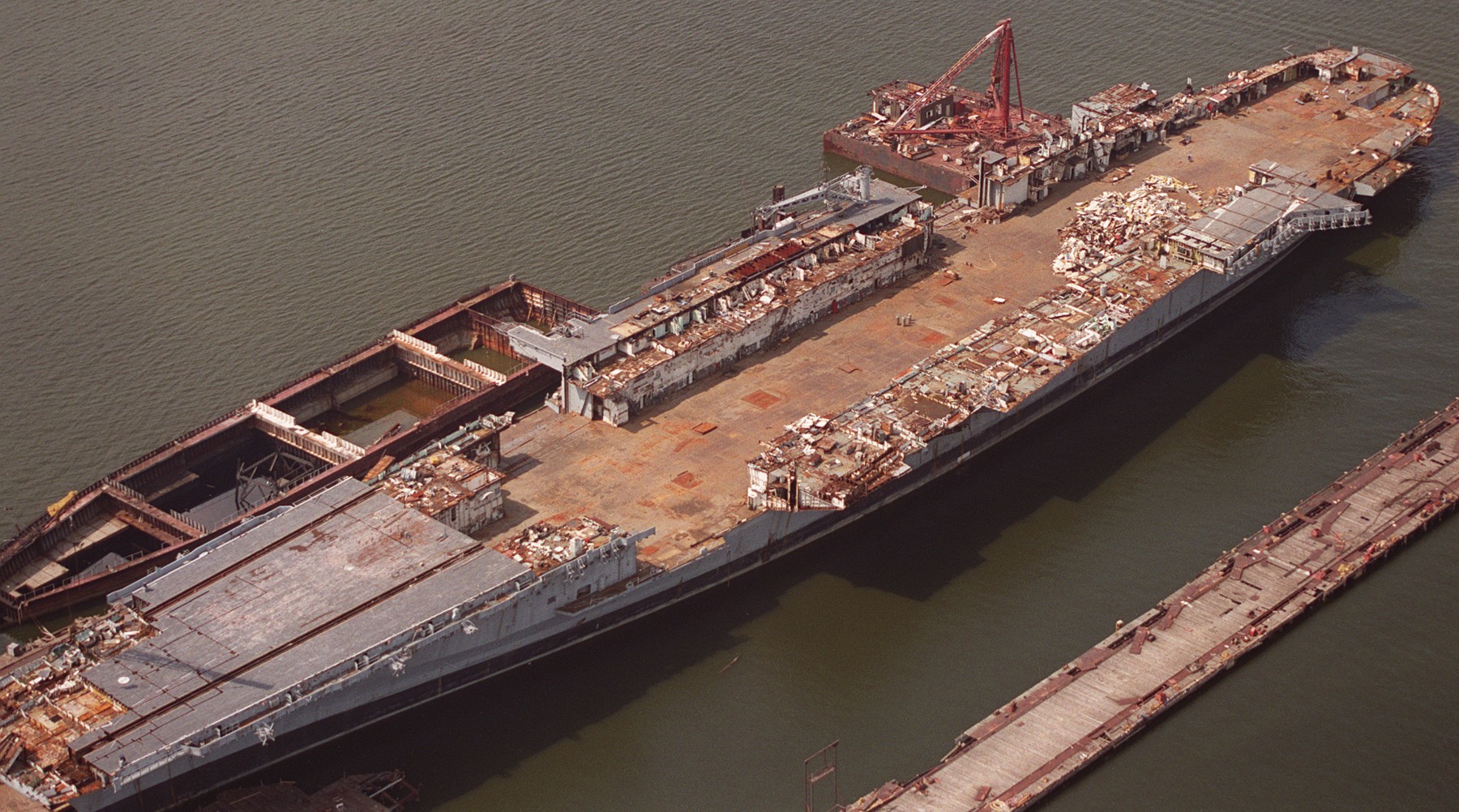 scrapping at the Seawitch Marine Salvage Company's Fairfield Terminal - Baltimore, Maryland - May 1996 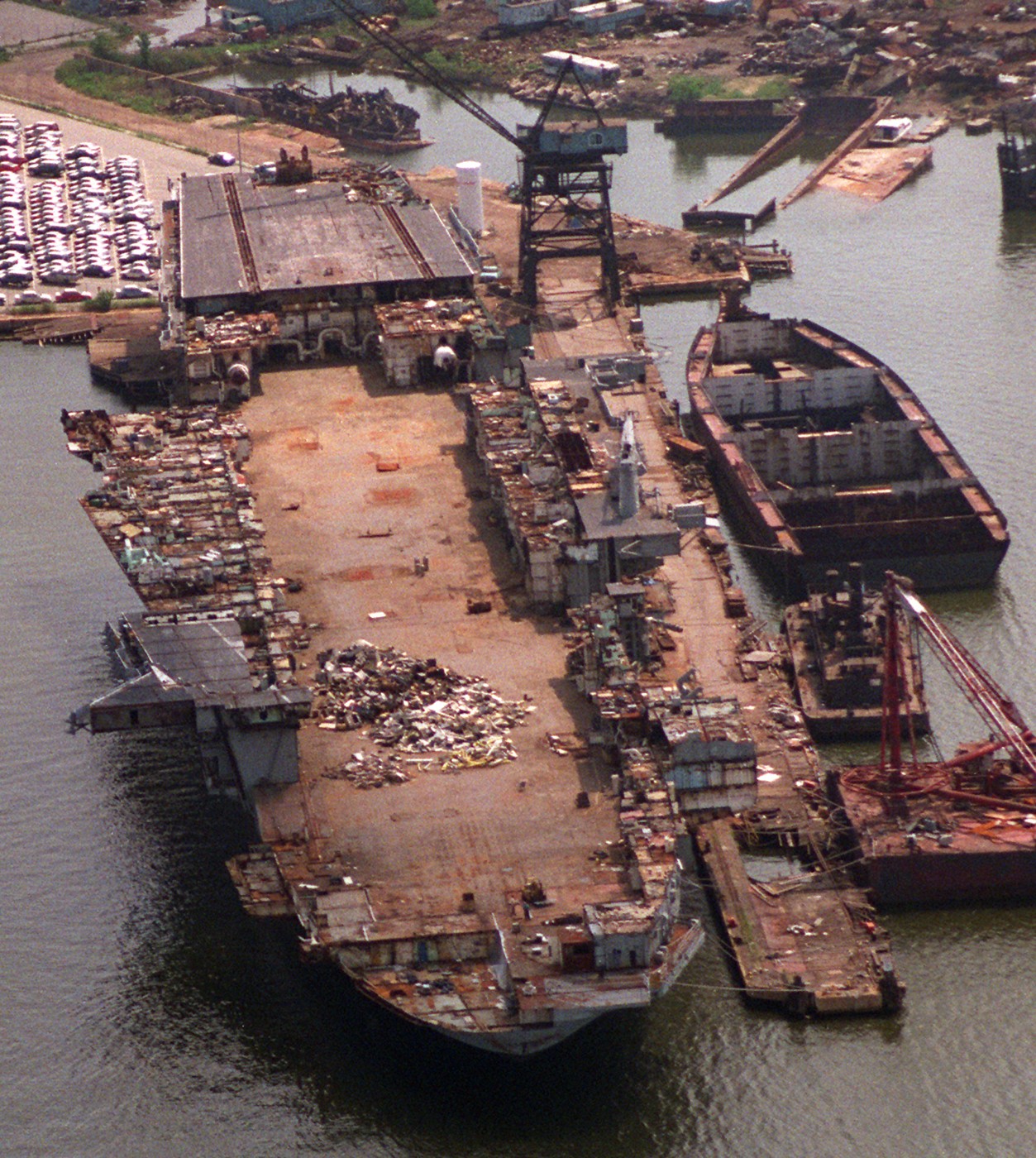 scrapping at the Seawitch Marine Salvage Company's Fairfield Terminal - Baltimore, Maryland - May 1996 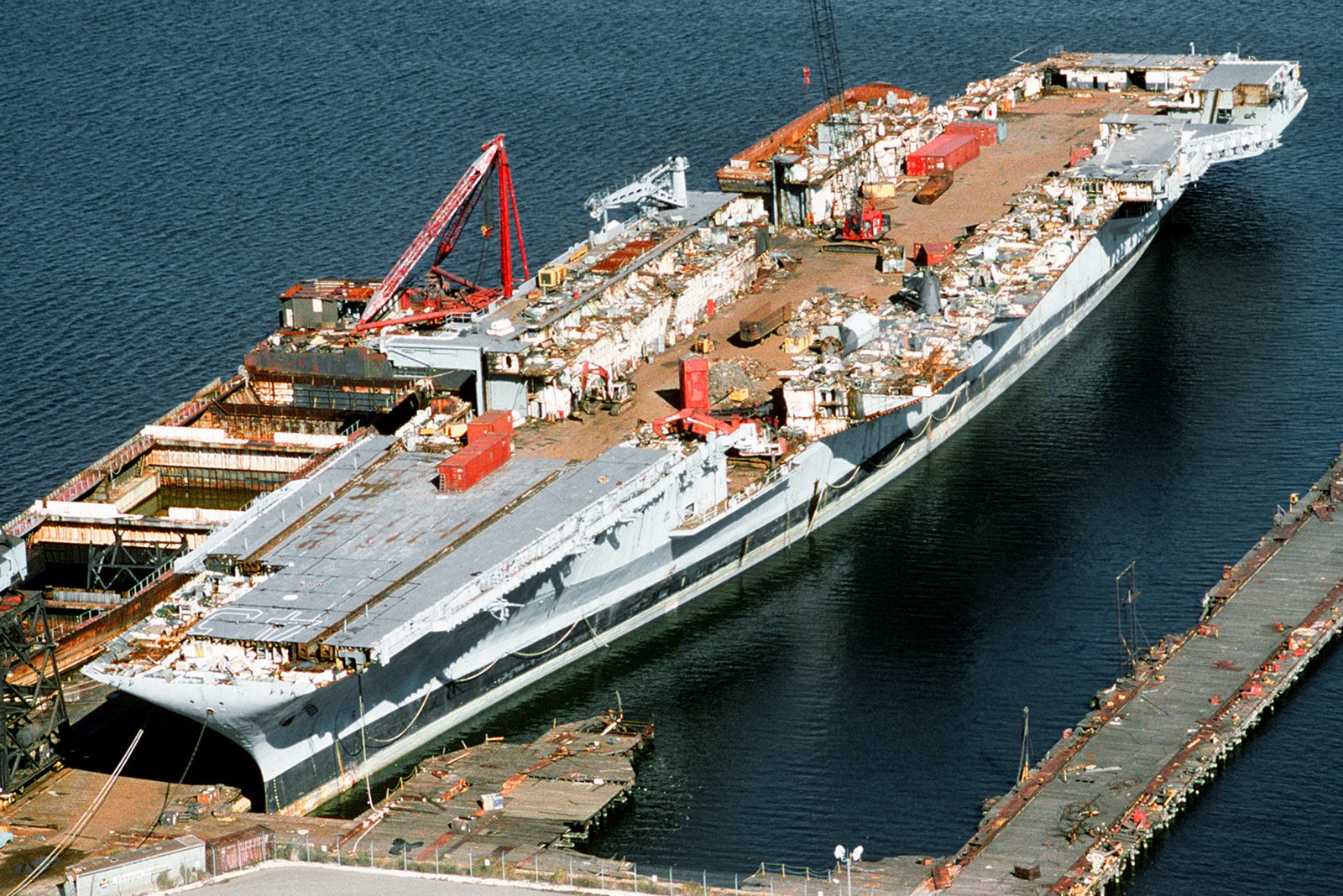 scrapping at the Seawitch Marine Salvage Company's Fairfield Terminal - Baltimore, Maryland - November 1994 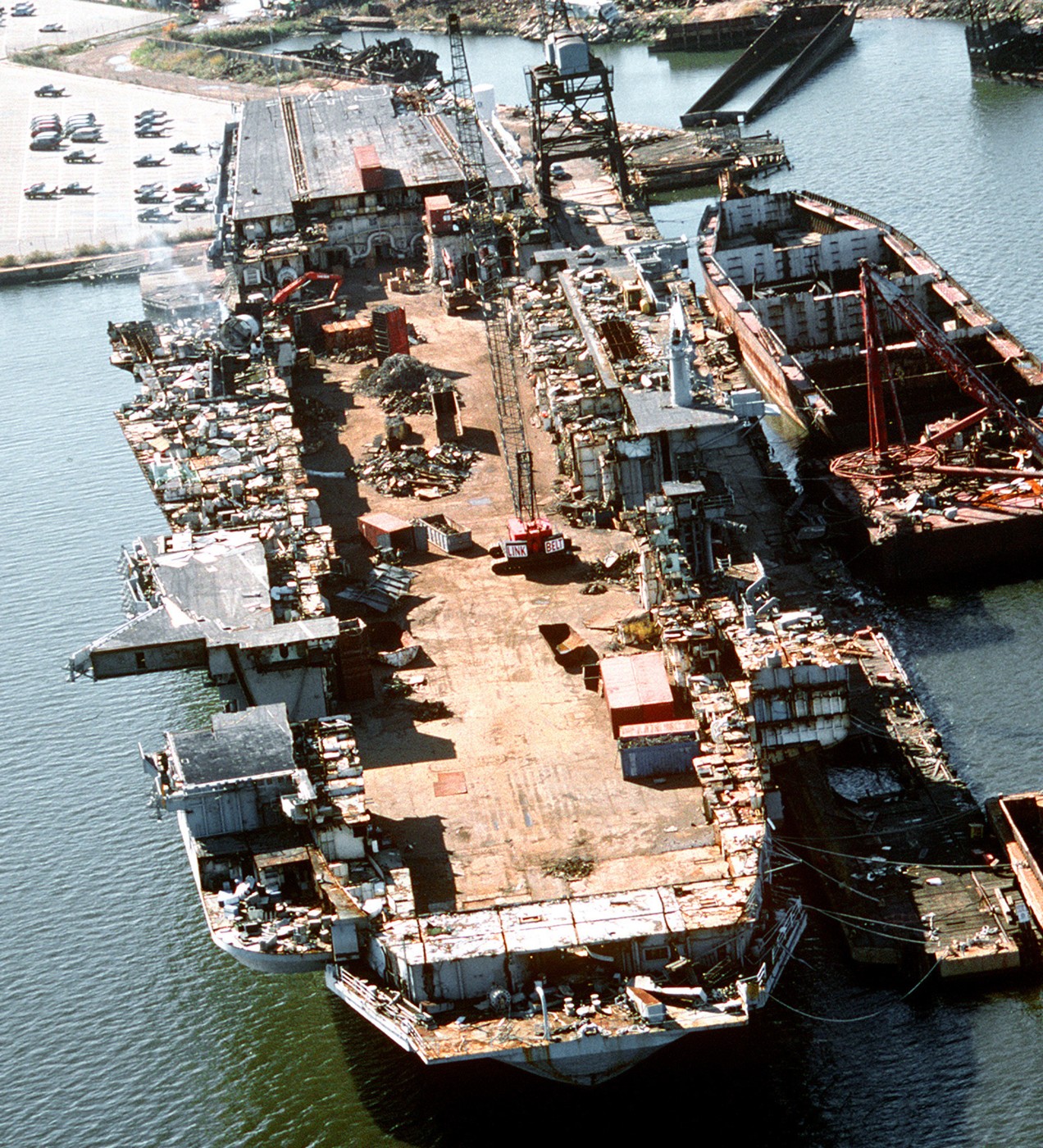 scrapping at the Seawitch Marine Salvage Company's Fairfield Terminal - Baltimore, Maryland - November 1994 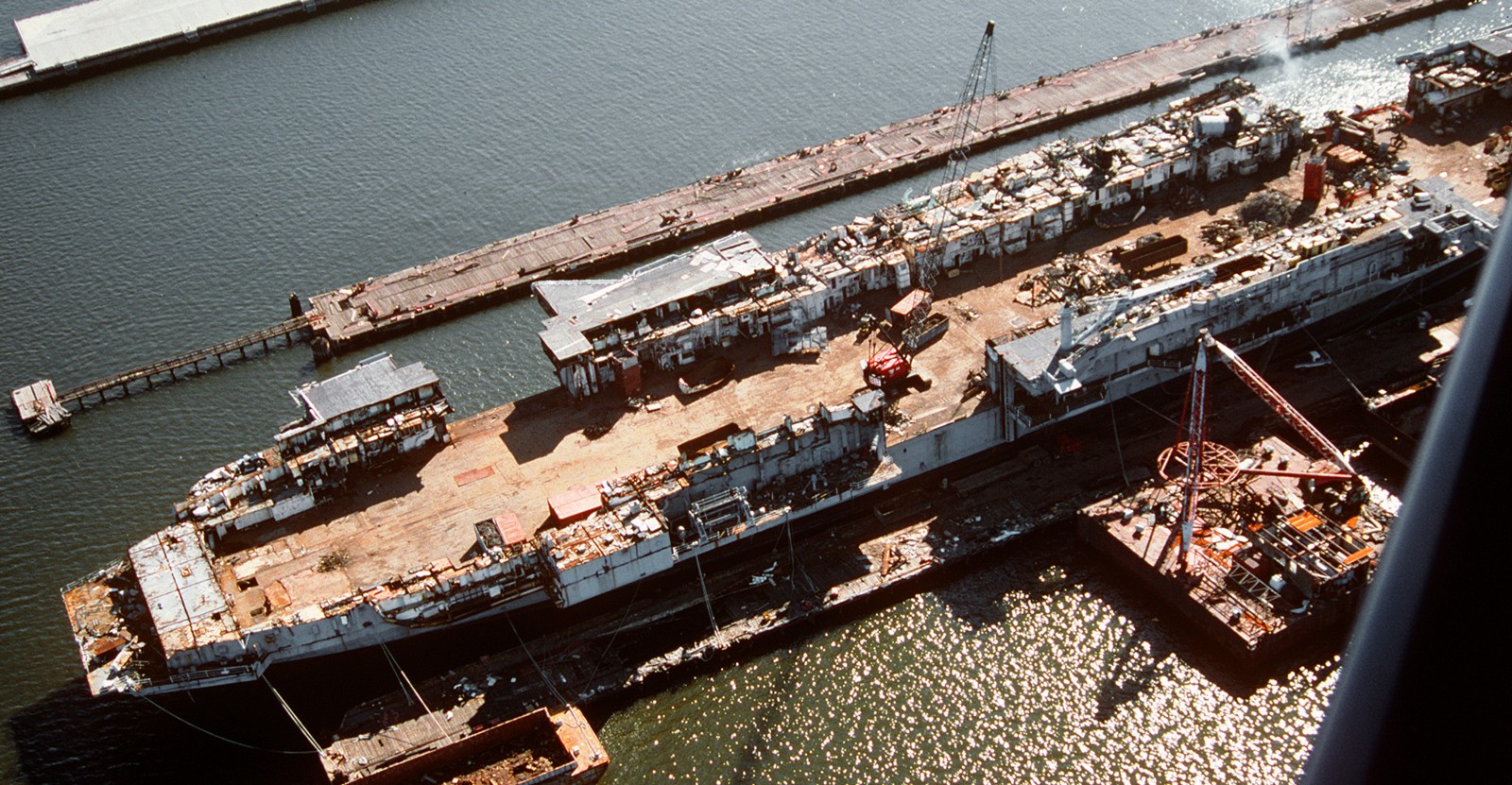 scrapping at the Seawitch Marine Salvage Company's Fairfield Terminal - Baltimore, Maryland - November 1994 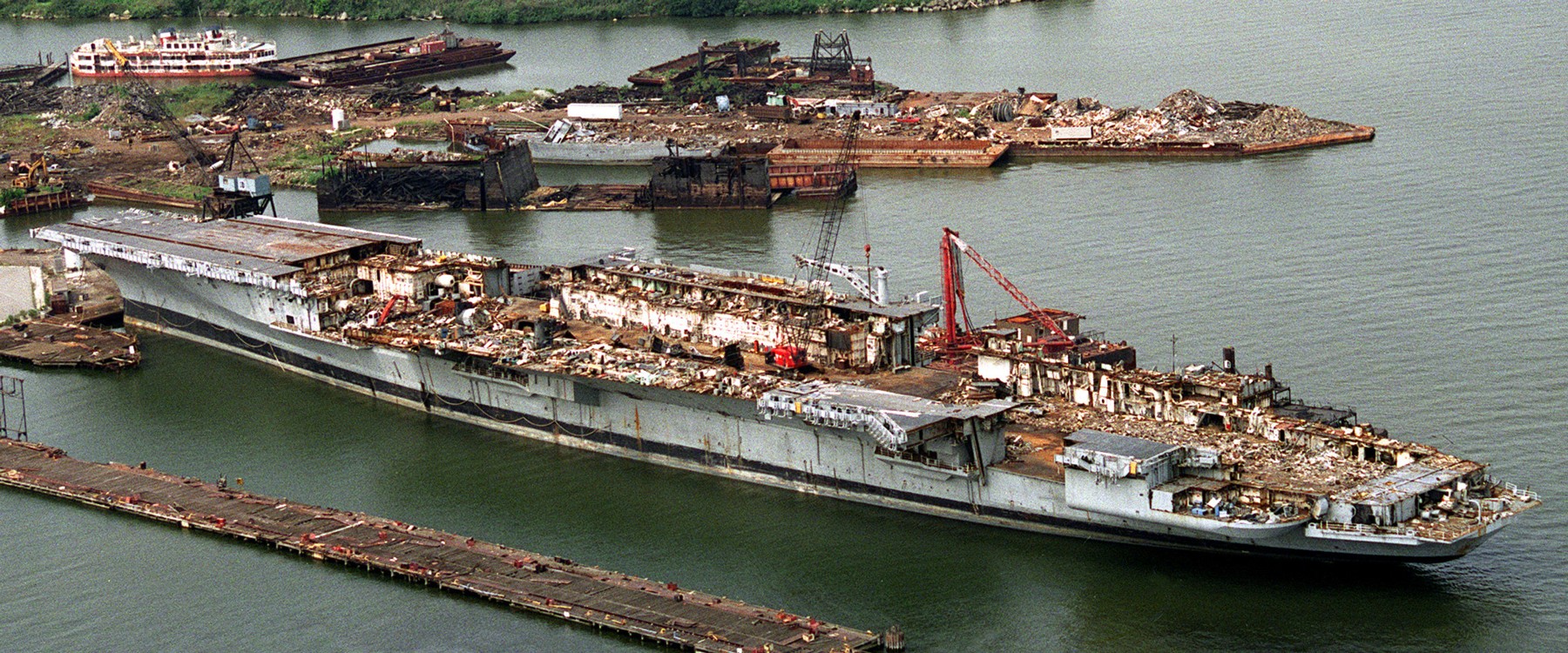 scrapping at the Seawitch Marine Salvage Company's Fairfield Terminal - Baltimore, Maryland - August 1994 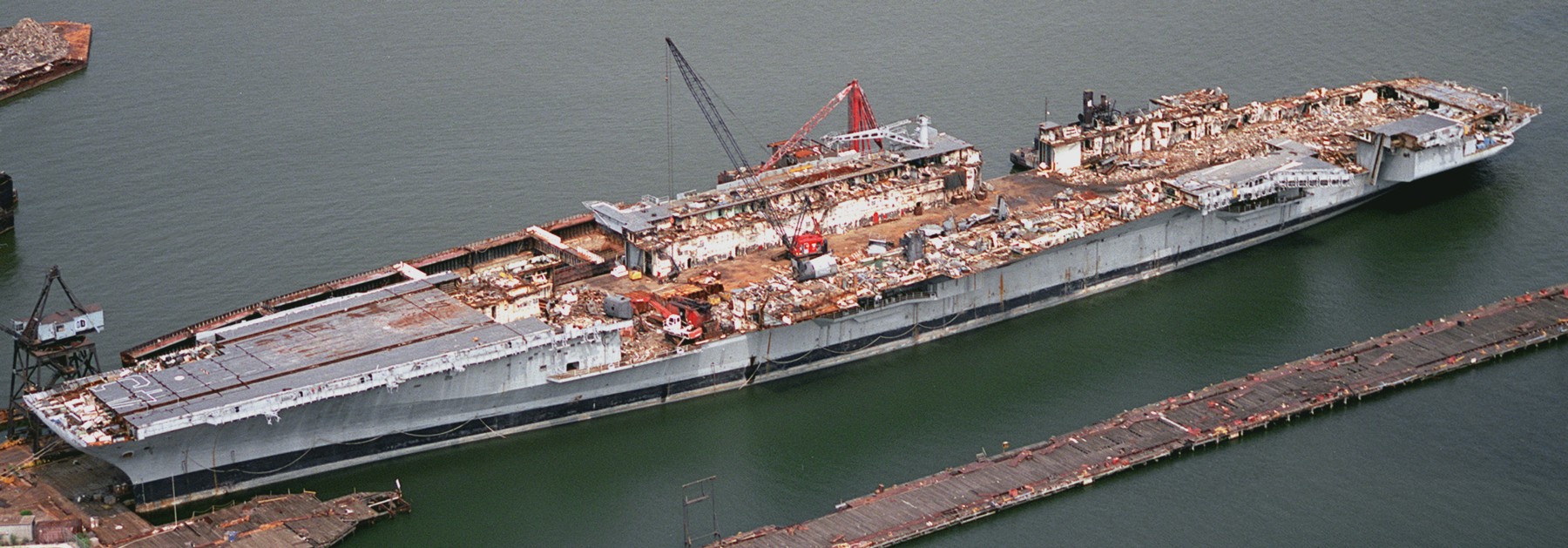 scrapping at the Seawitch Marine Salvage Company's Fairfield Terminal - Baltimore, Maryland - August 1994 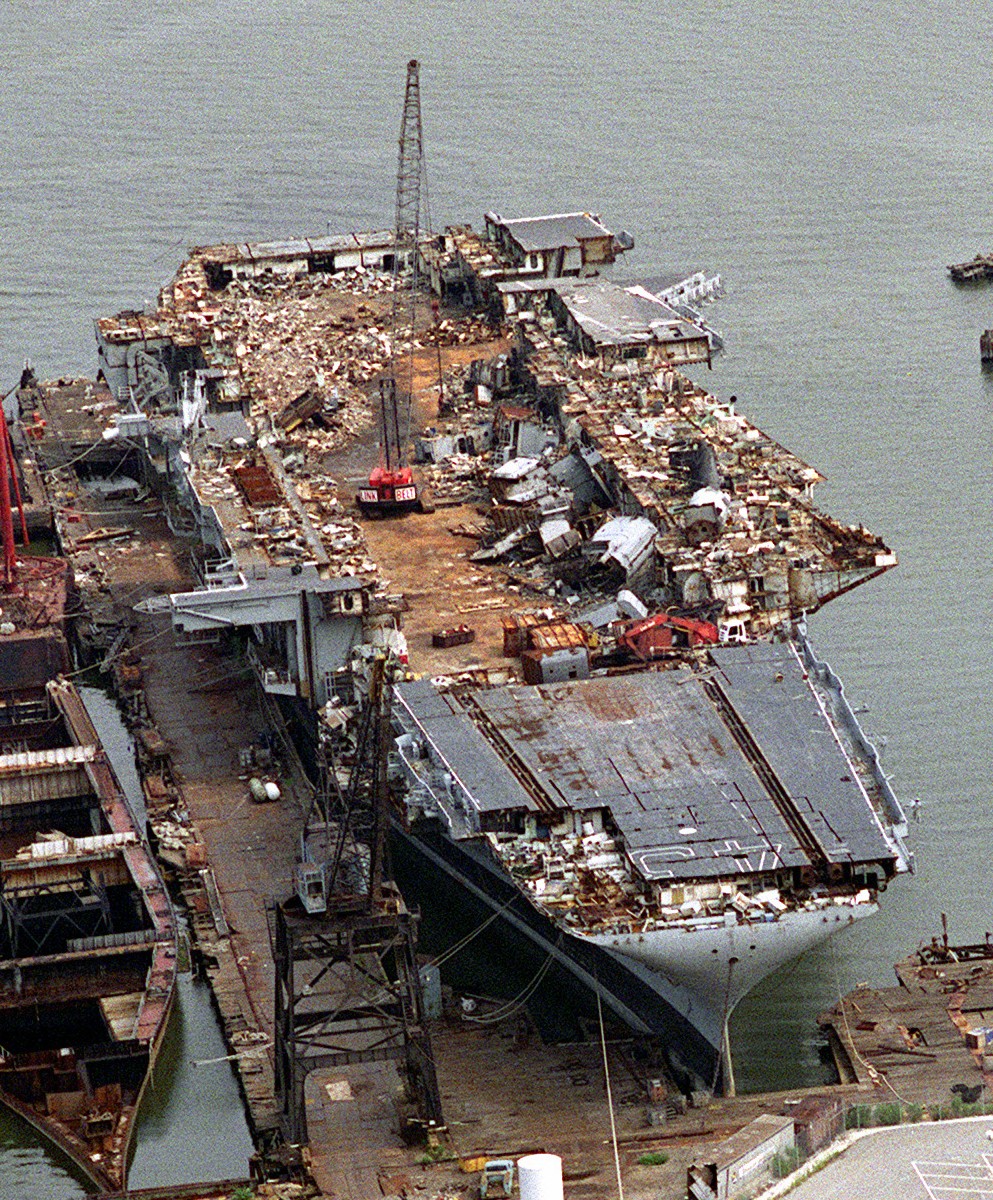 scrapping at the Seawitch Marine Salvage Company's Fairfield Terminal - Baltimore, Maryland - August 1994 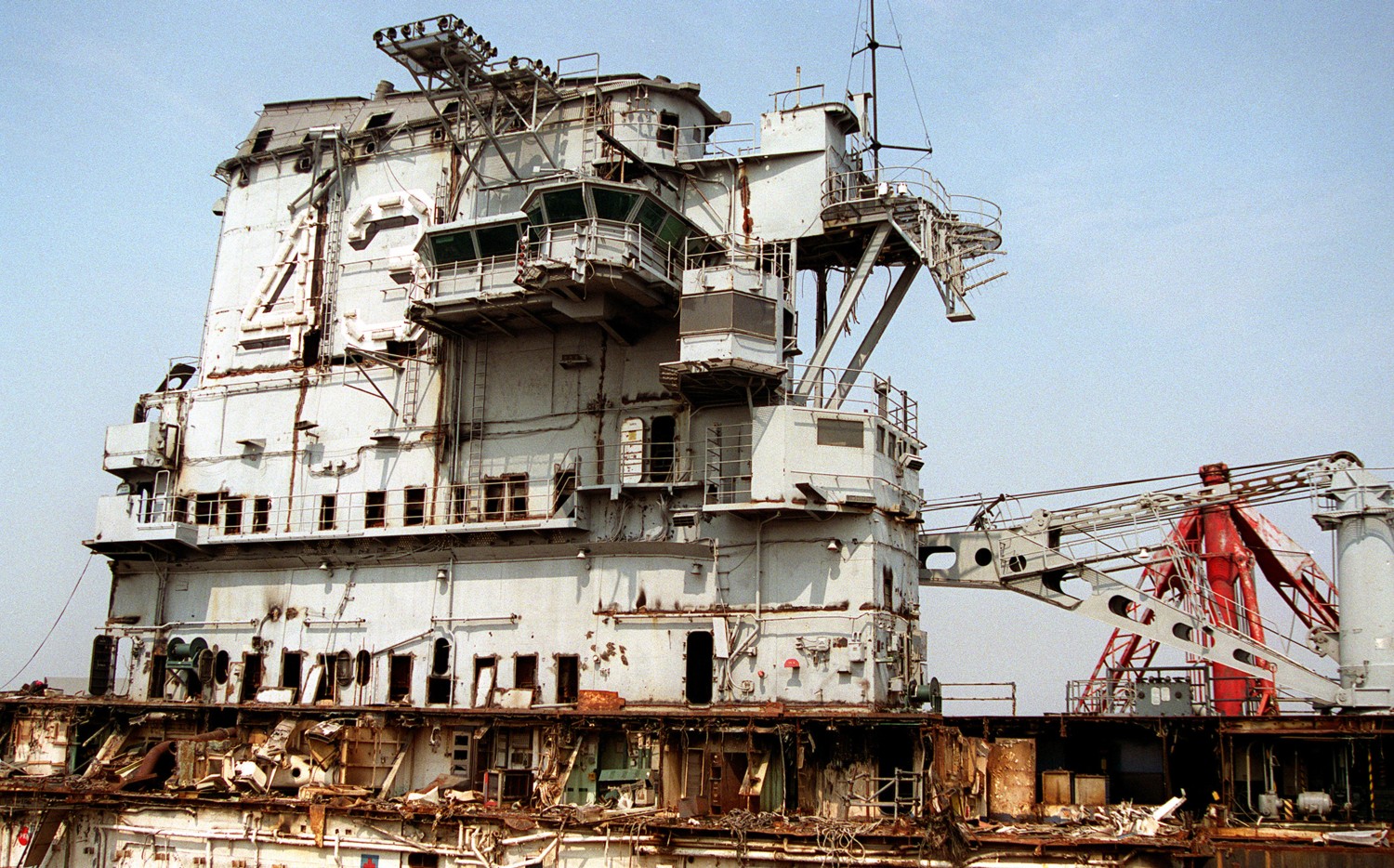 scrapping at the Seawitch Marine Salvage Company's Fairfield Terminal - Baltimore, Maryland - July 1994 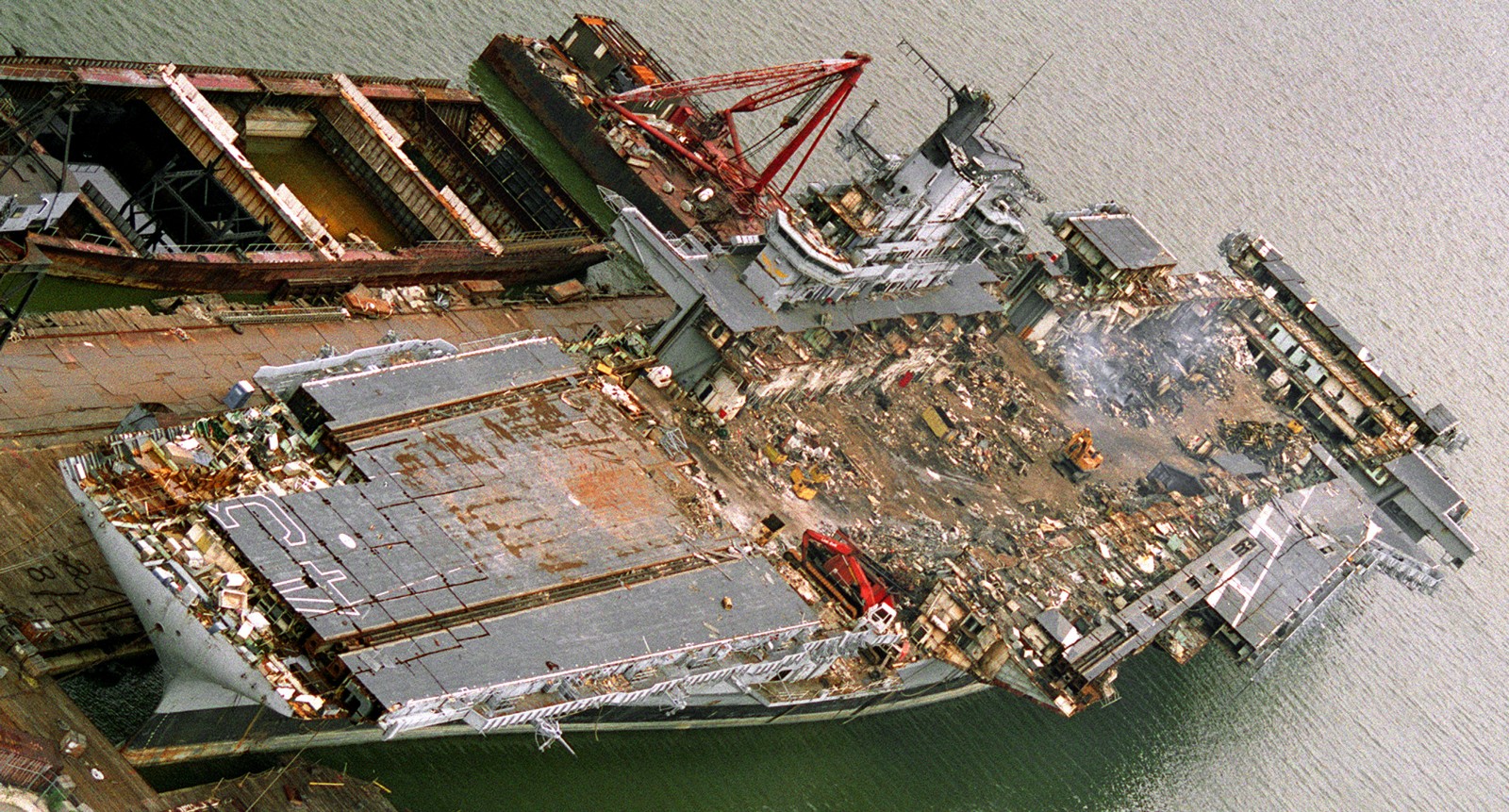 scrapping at the Seawitch Marine Salvage Company's Fairfield Terminal - Baltimore, Maryland - May 1994 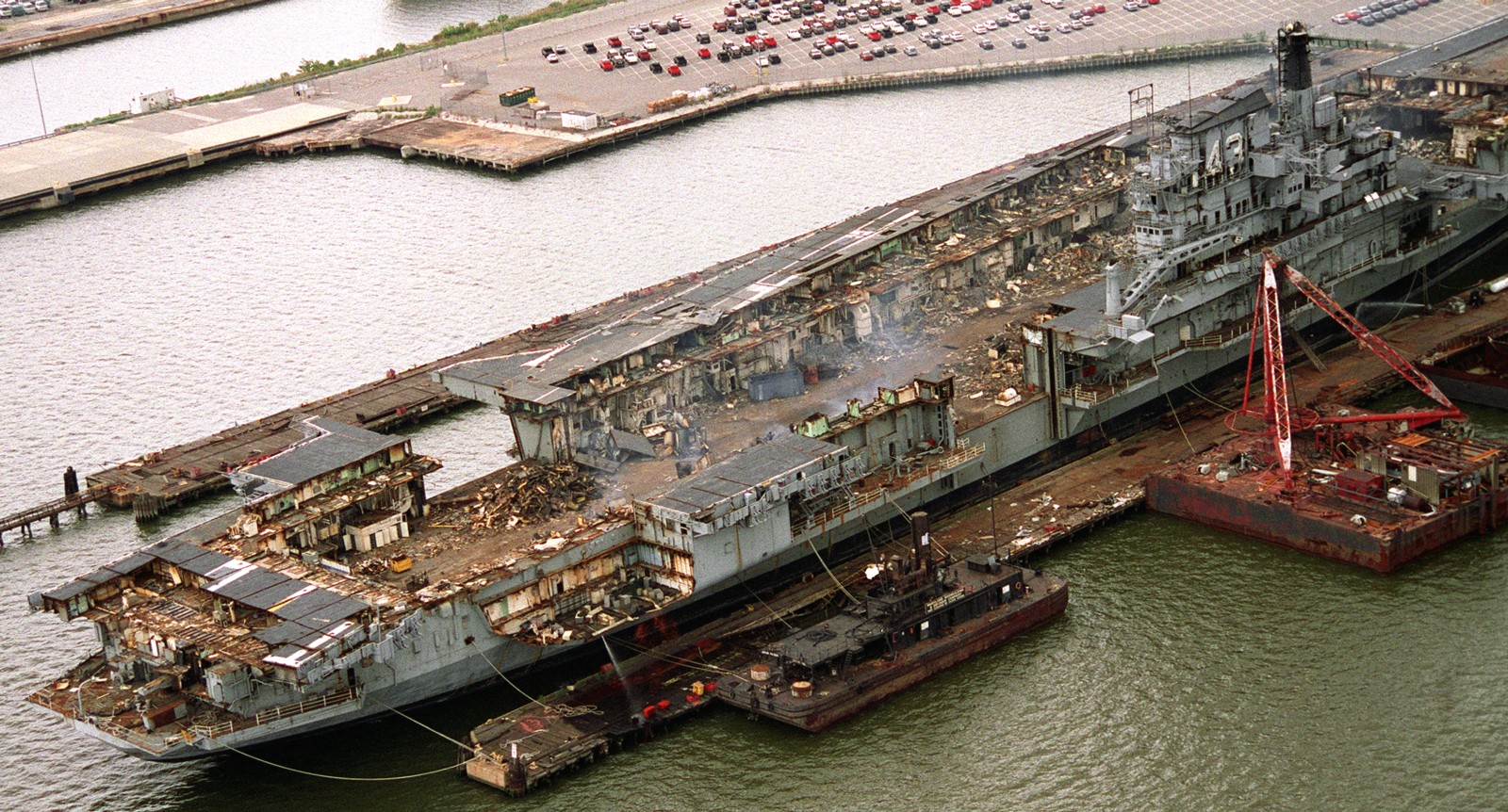 scrapping at the Seawitch Marine Salvage Company's Fairfield Terminal - Baltimore, Maryland - May 1994 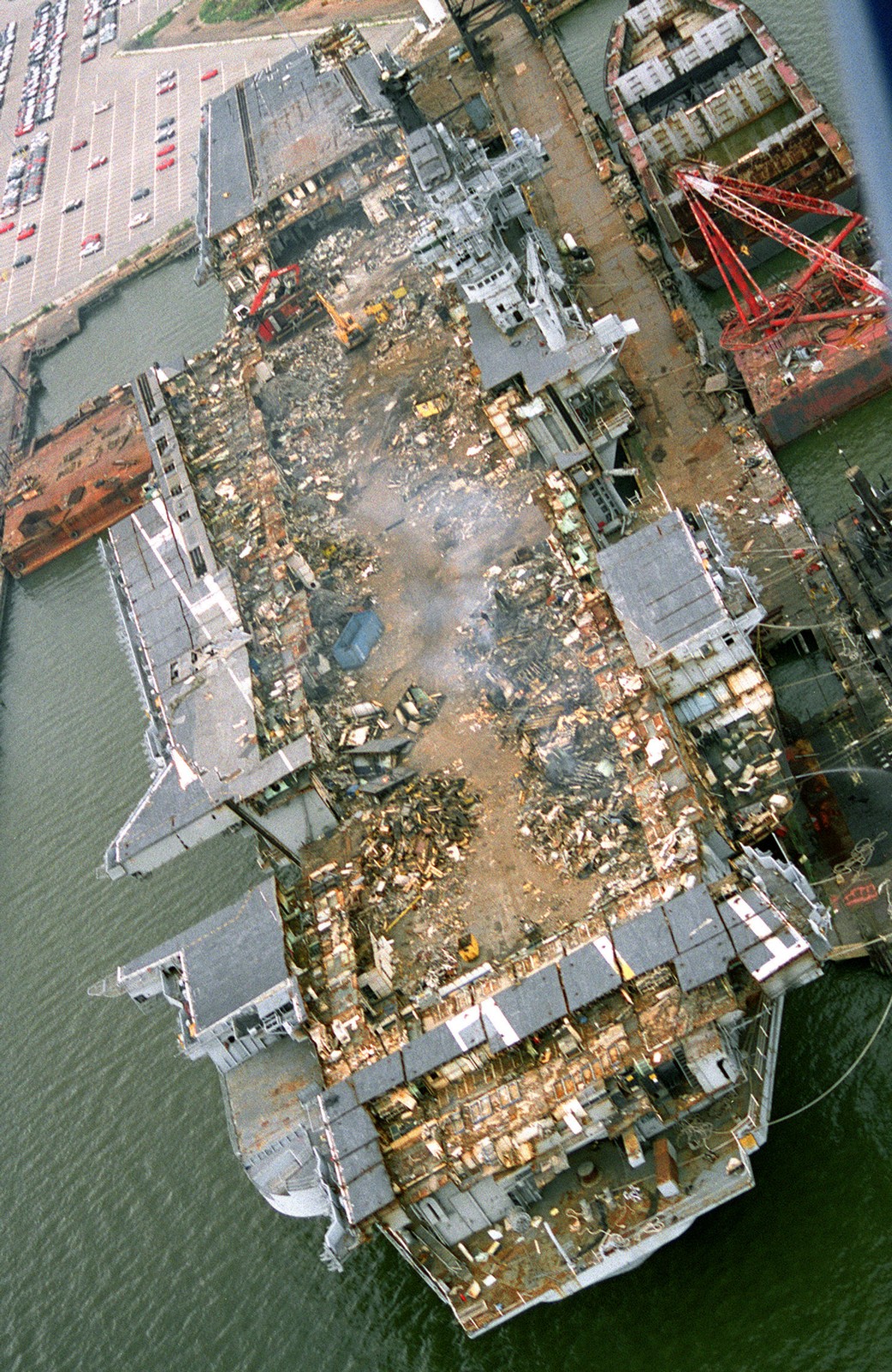 scrapping at the Seawitch Marine Salvage Company's Fairfield Terminal - Baltimore, Maryland - May 1994  scrapping at the Seawitch Marine Salvage Company's Fairfield Terminal - Baltimore, Maryland - March 1994 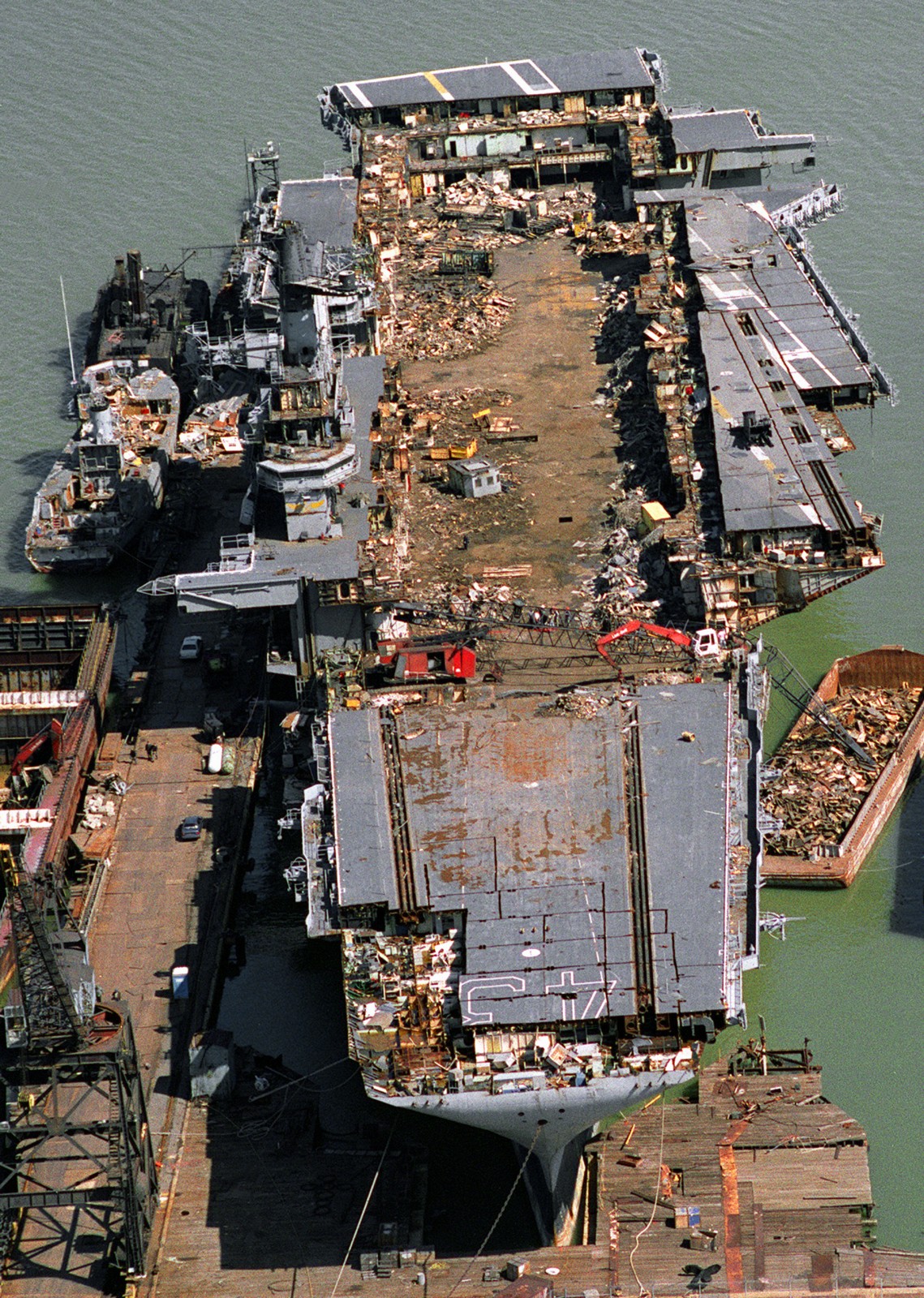 scrapping at the Seawitch Marine Salvage Company's Fairfield Terminal - Baltimore, Maryland - March 1994 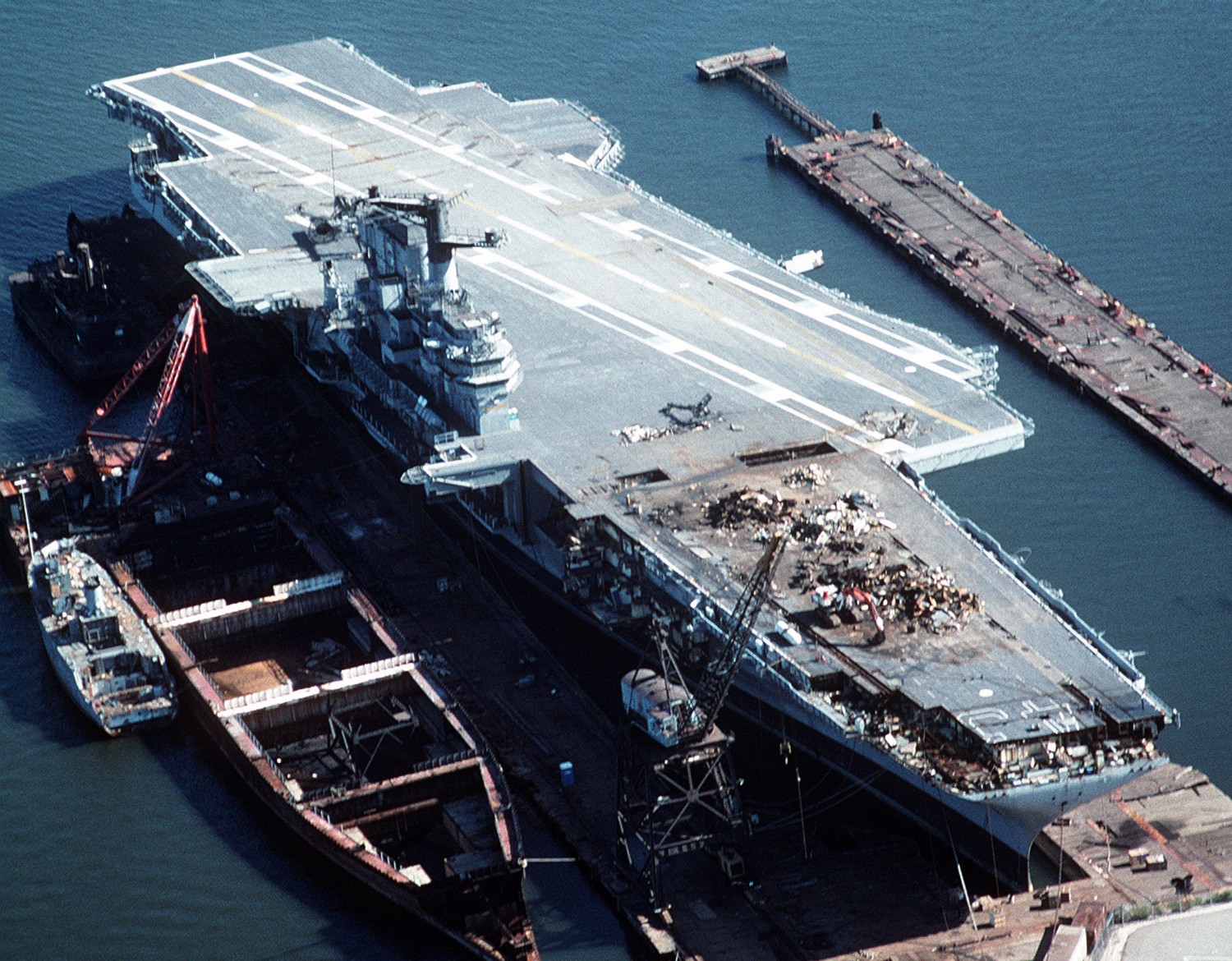 scrapping at the Seawitch Marine Salvage Company's Fairfield Terminal - Baltimore, Maryland - October 1993 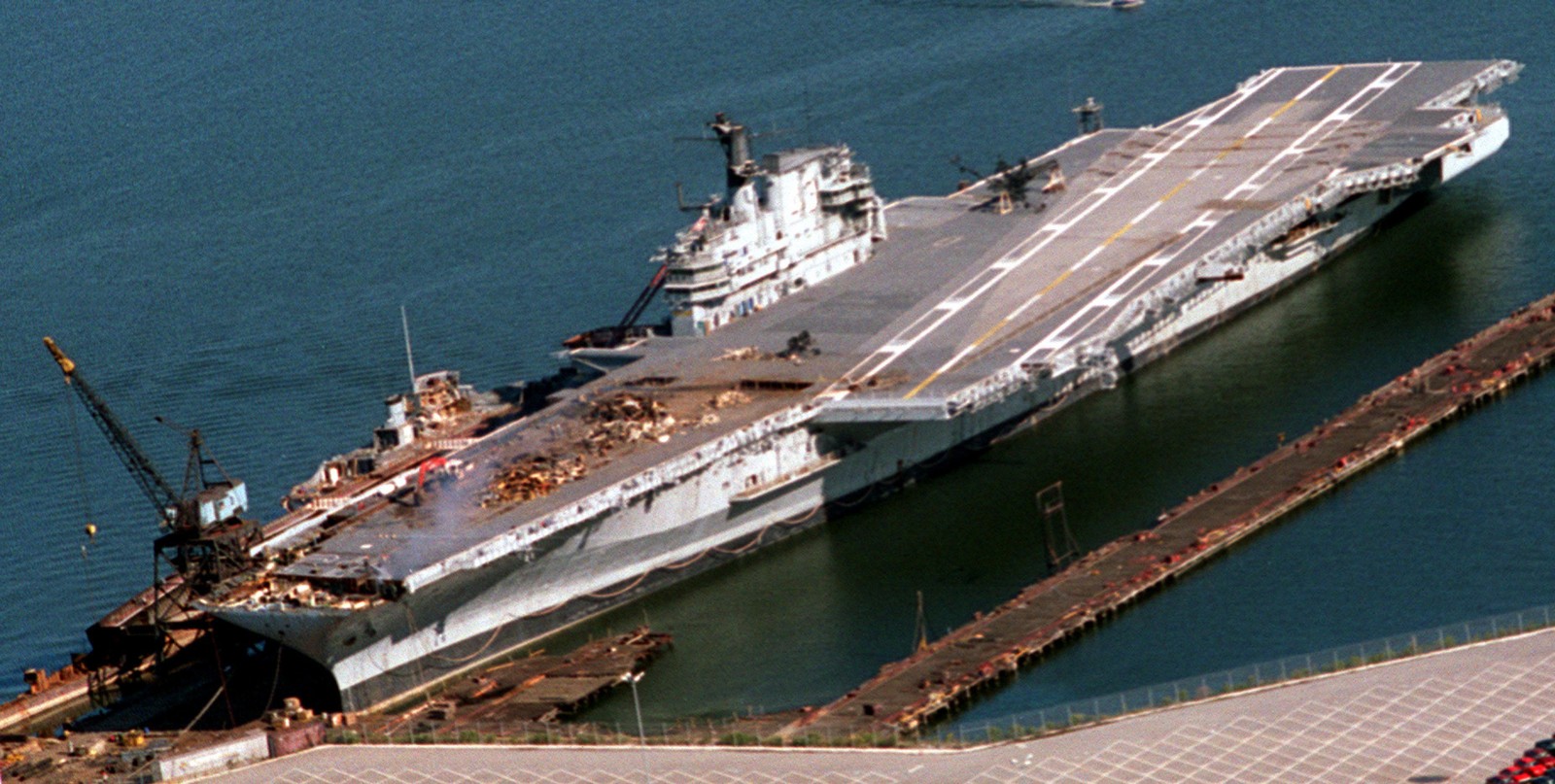 scrapping at the Seawitch Marine Salvage Company's Fairfield Terminal - Baltimore, Maryland - September 1993 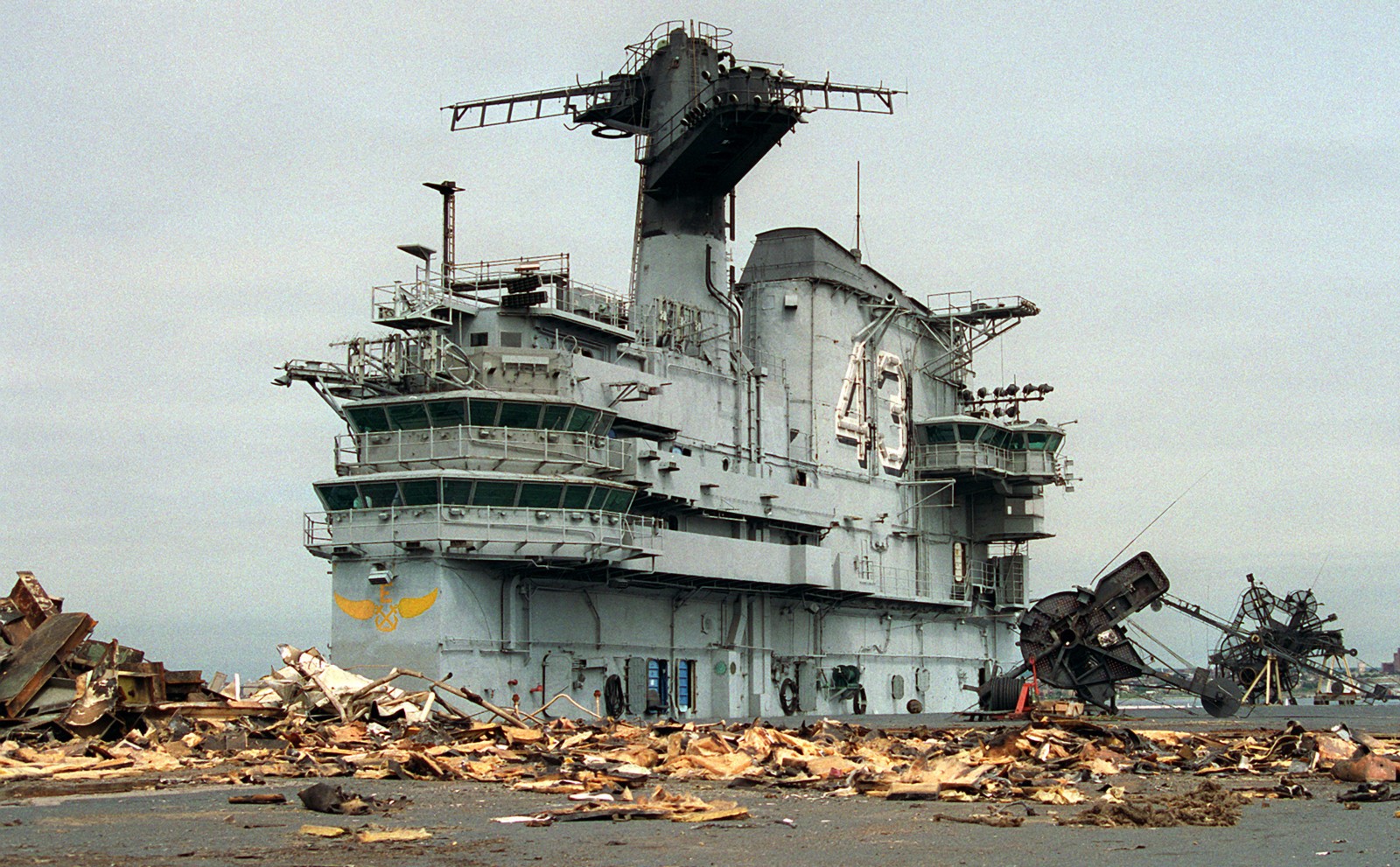 scrapping at the Seawitch Marine Salvage Company's Fairfield Terminal - Baltimore, Maryland - September 1993 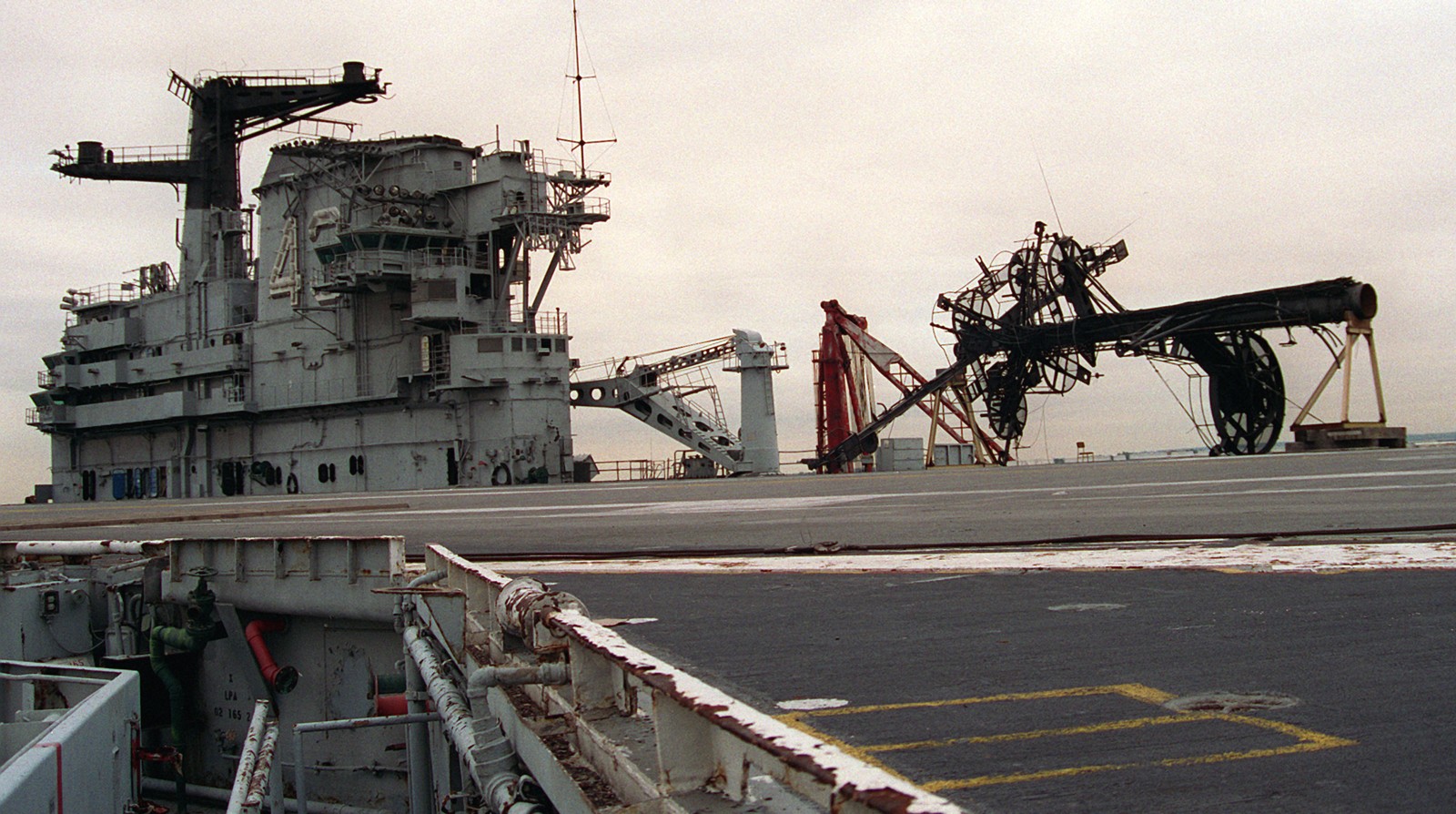 scrapping at the Seawitch Marine Salvage Company's Fairfield Terminal - Baltimore, Maryland - September 1993 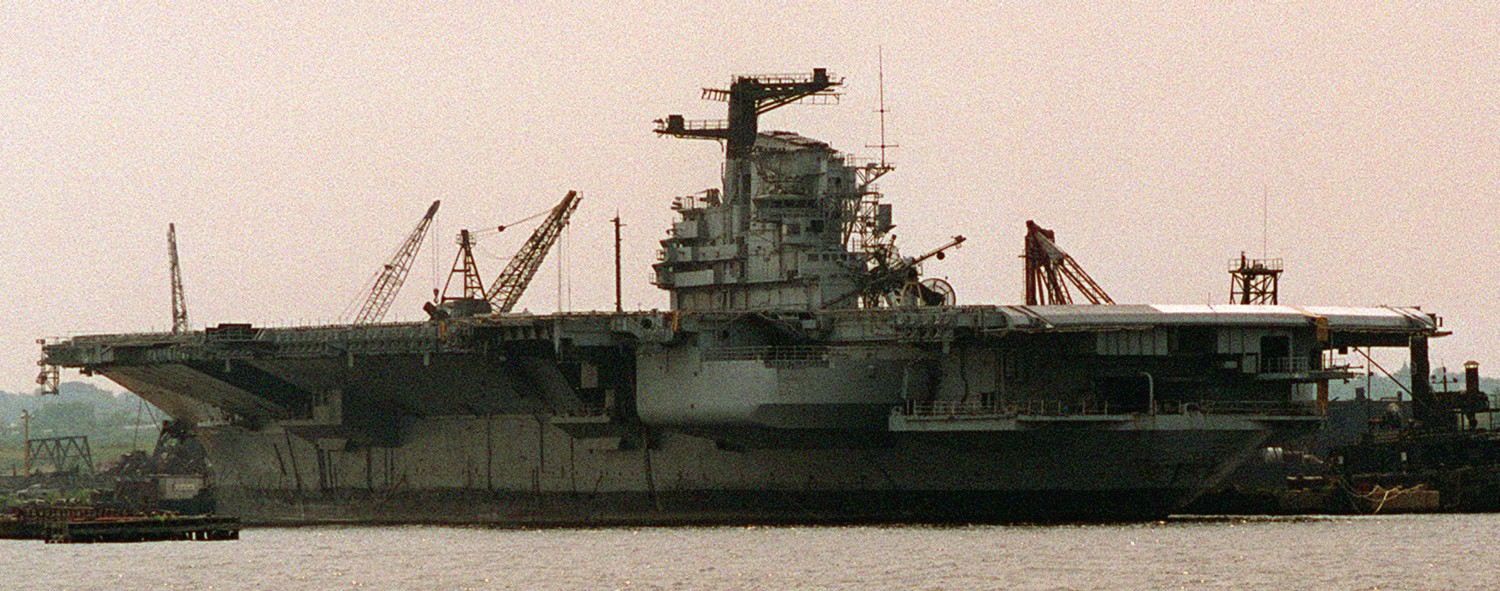 awaiting her dismantling - Baltimore, Maryland - August 1993 CVB 43 / CVA 43 / CV 43 - USS Coral Sea > in service: October 1, 1947 - April 26, 1990 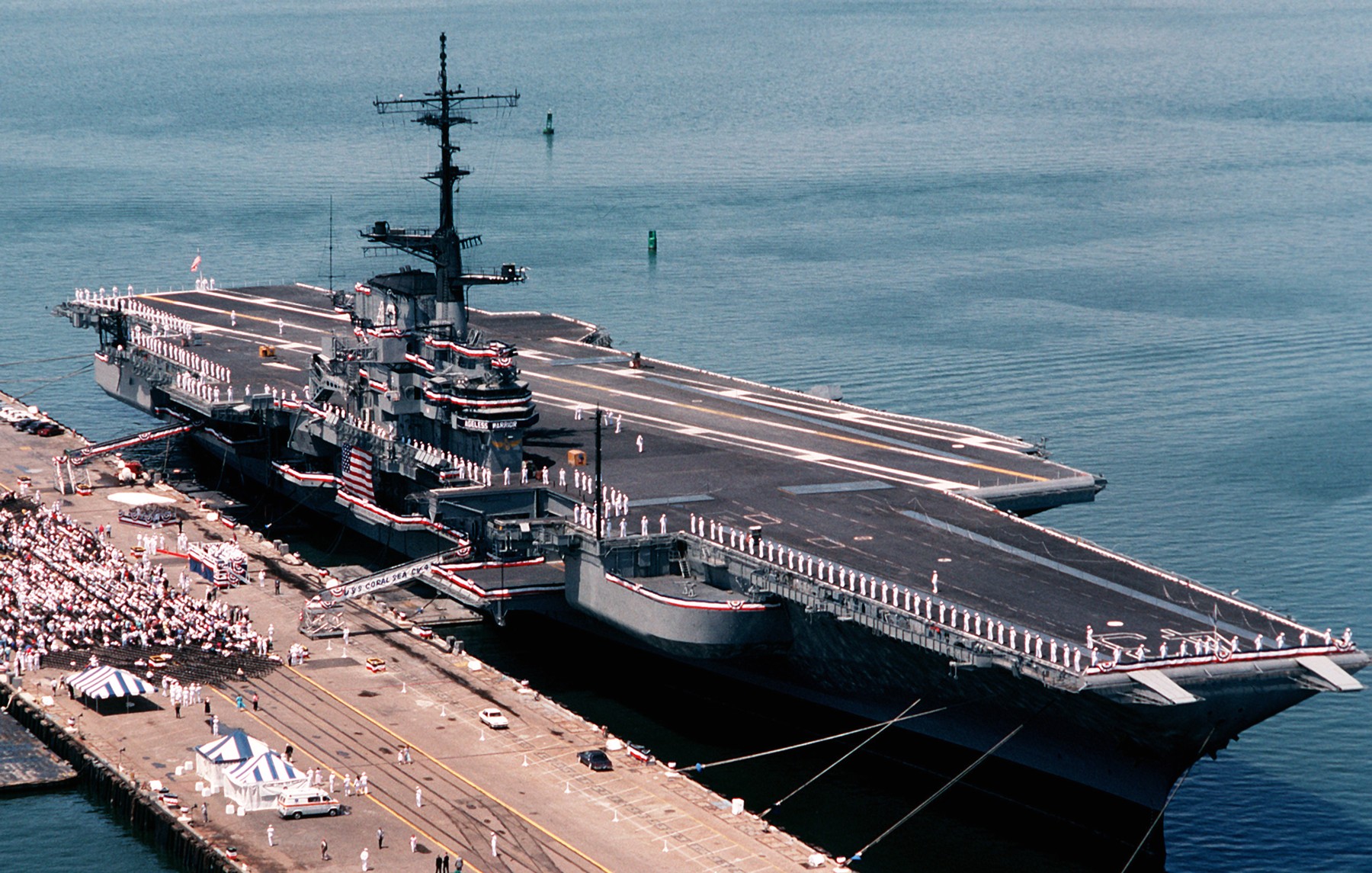 decommissioning ceremony at Naval Station Norfolk, Virginia - April 26, 1990 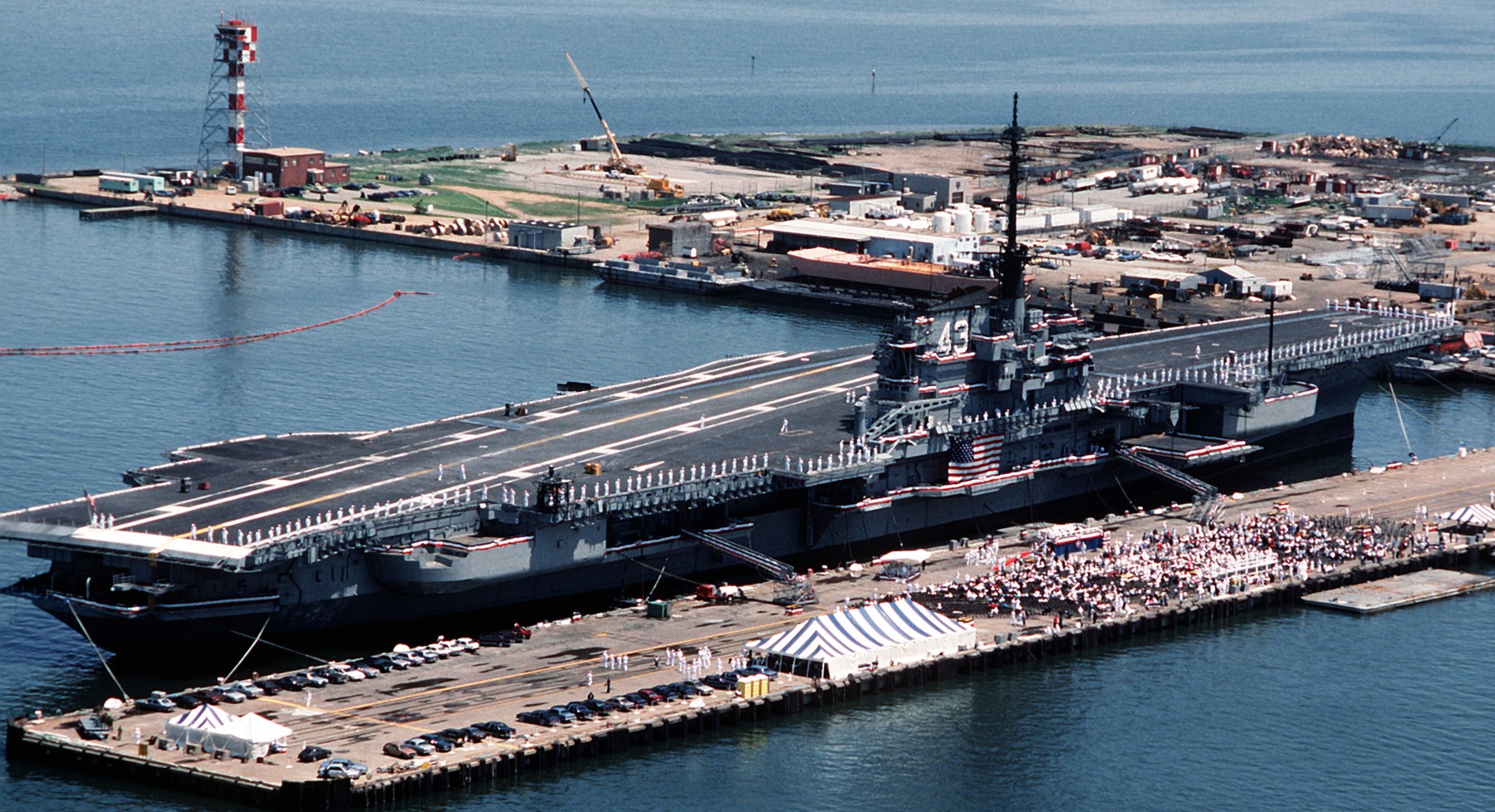 decommissioning ceremony at Naval Station Norfolk, Virginia - April 26, 1990 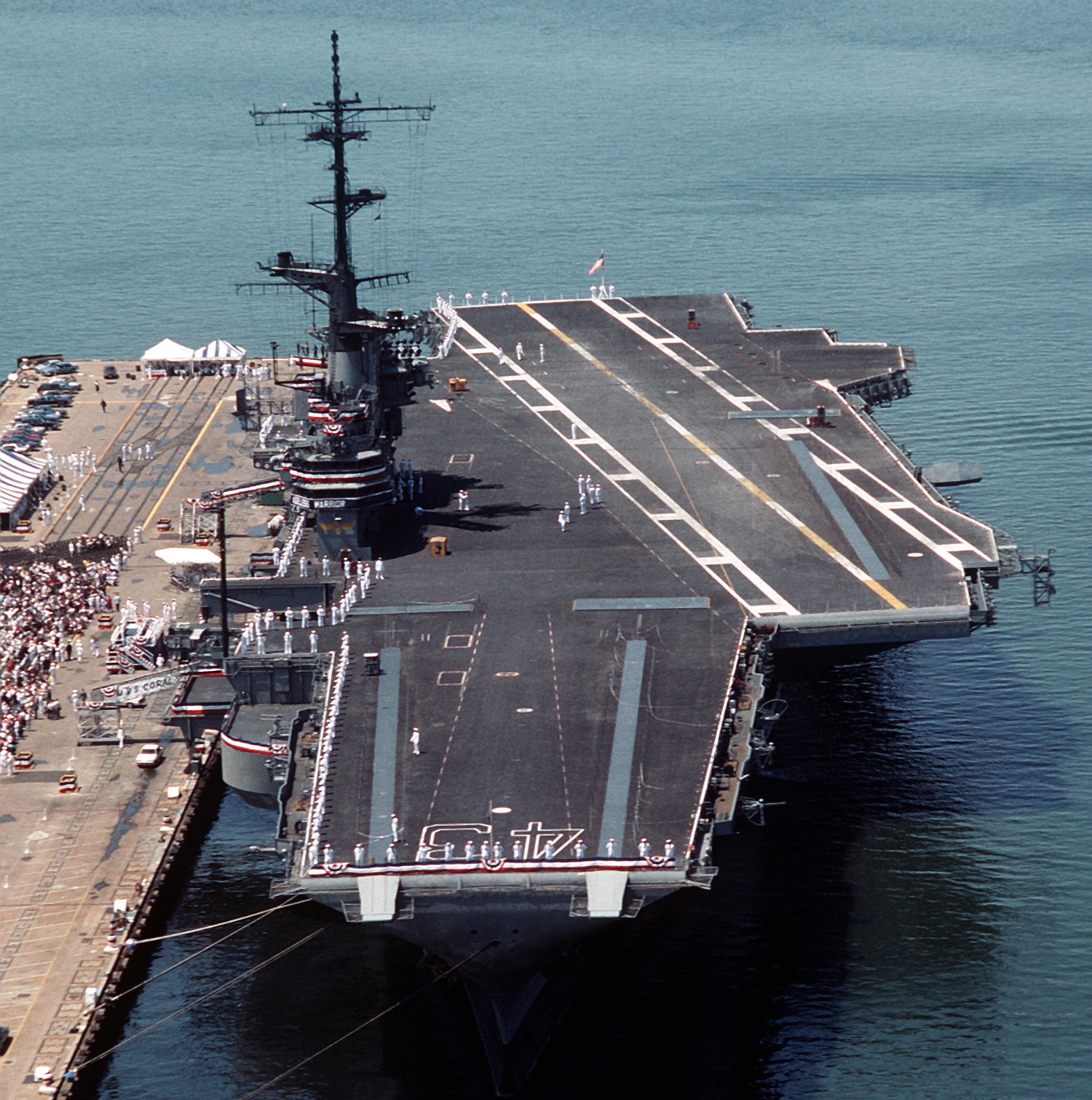 decommissioning ceremony at Naval Station Norfolk, Virginia - April 26, 1990 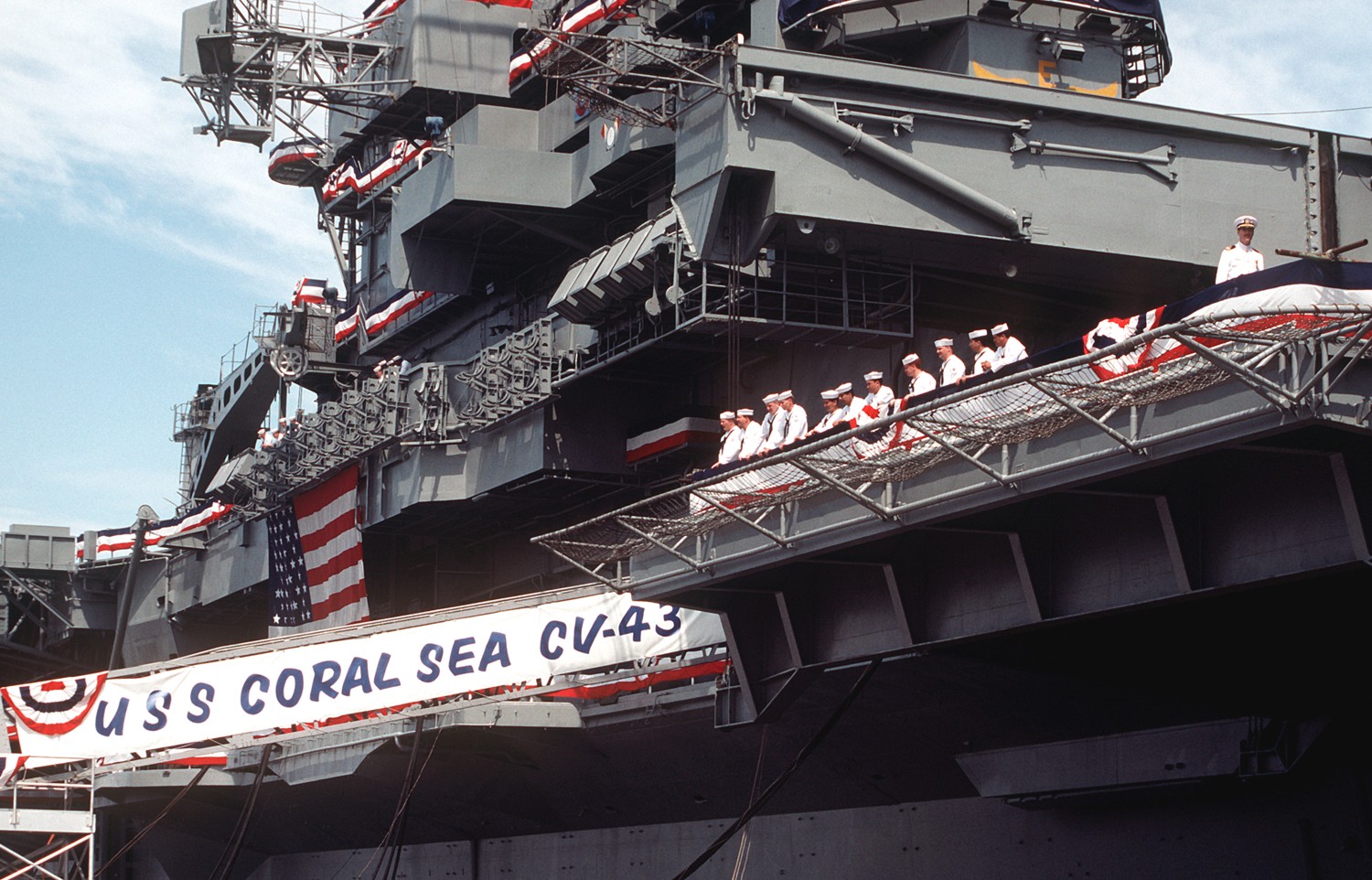 decommissioning ceremony at Naval Station Norfolk, Virginia - April 26, 1990 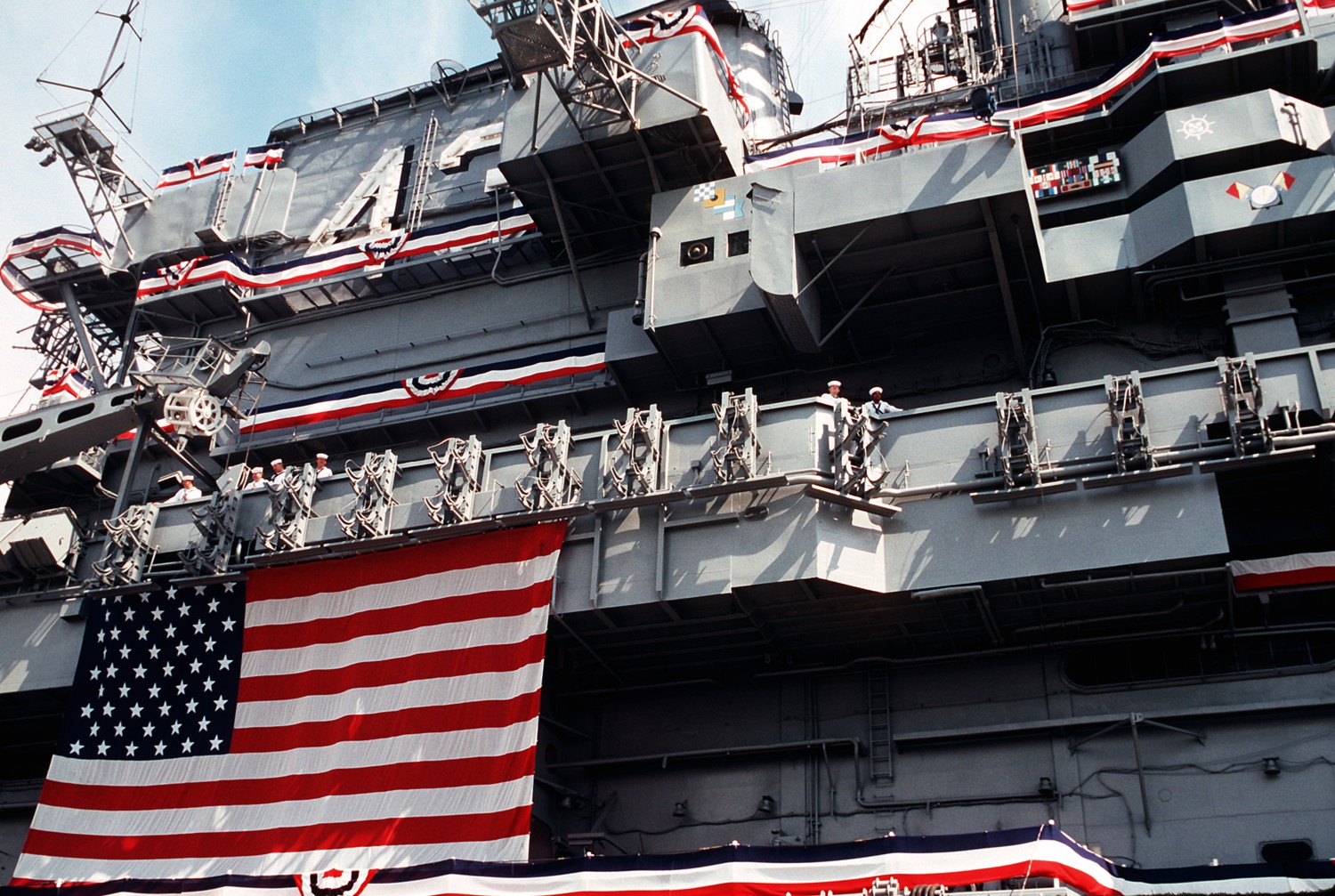 decommissioning ceremony at Naval Station Norfolk, Virginia - April 26, 1990 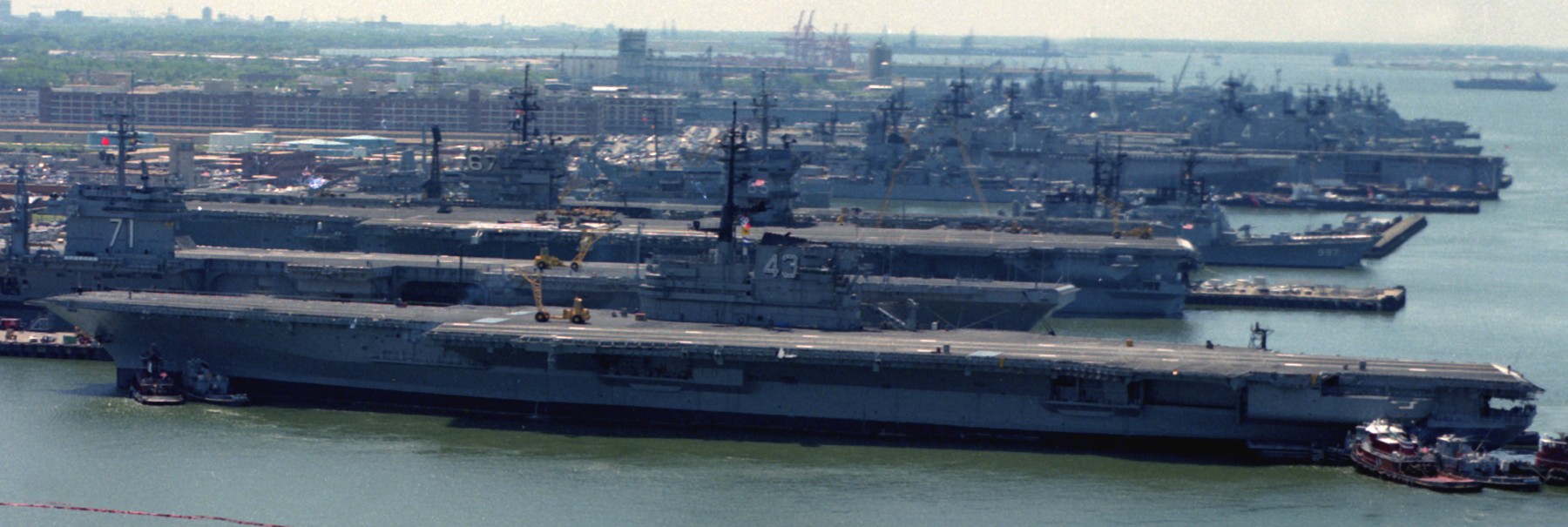 arriving at Naval Station Norfolk, Virginia for decommissioning - April 1990 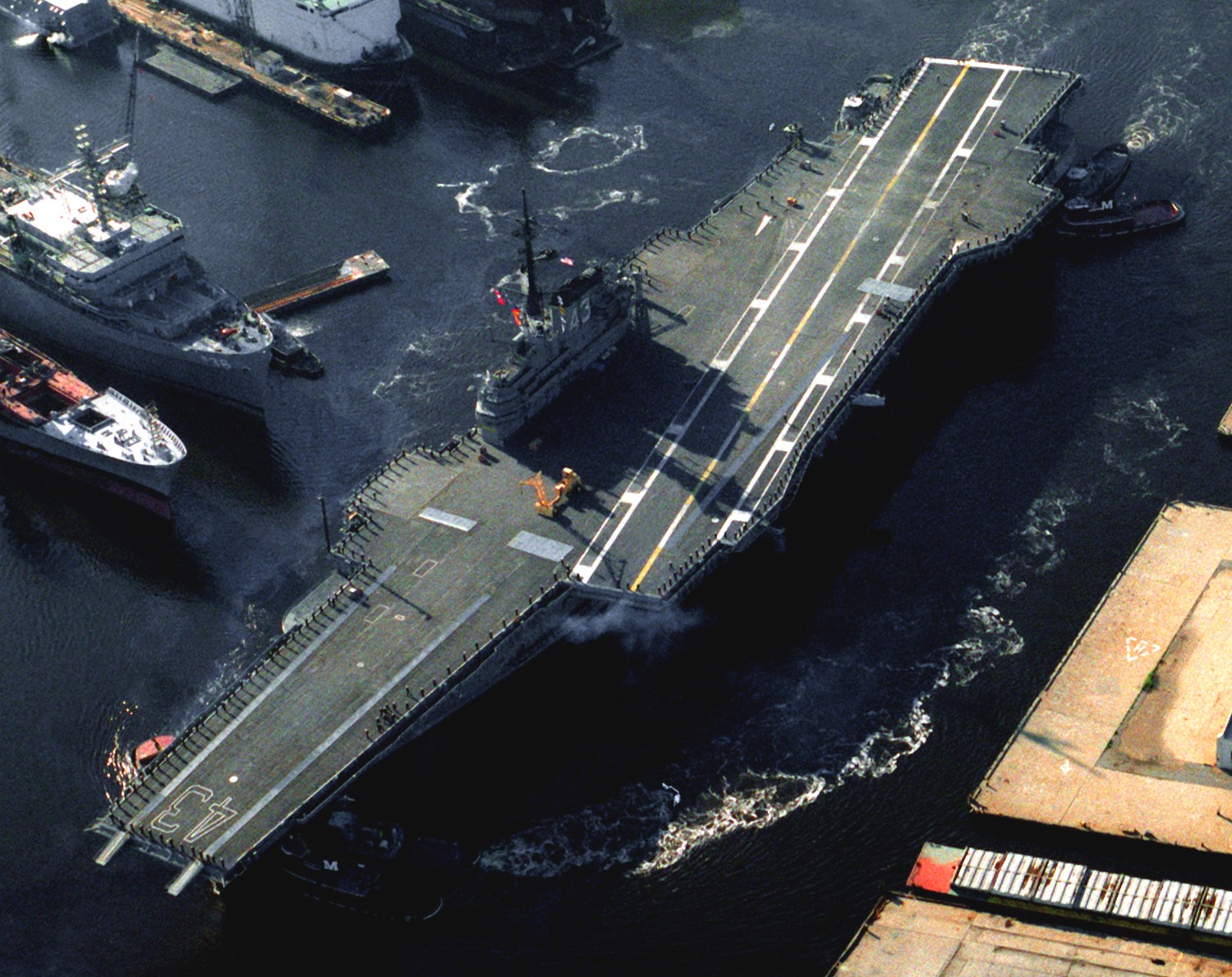 arriving at Naval Station Norfolk, Virginia for decommissioning - April 1990 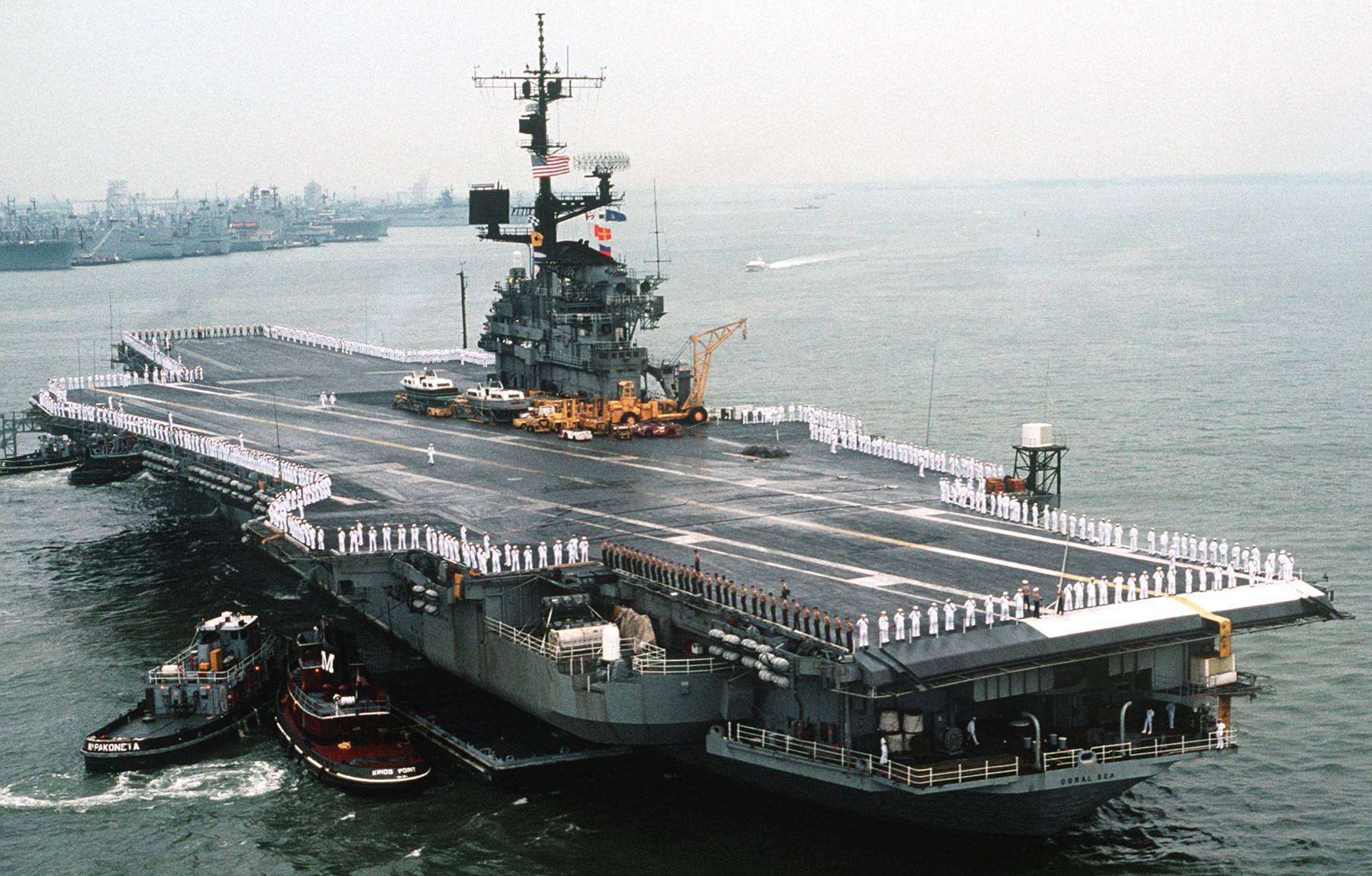 Naval Station Norfolk, Virginia - September 1989 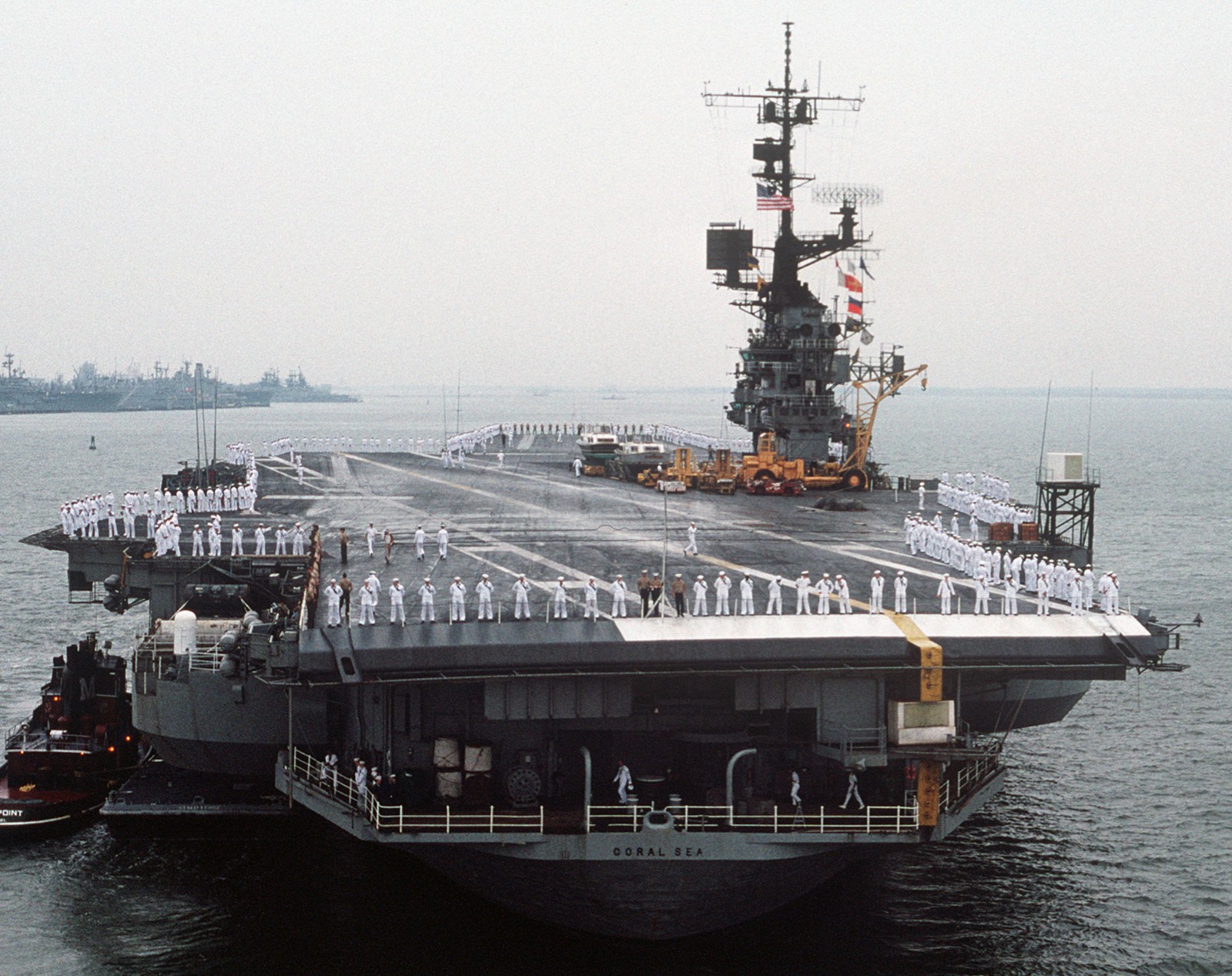 Naval Station Norfolk, Virginia - September 1989 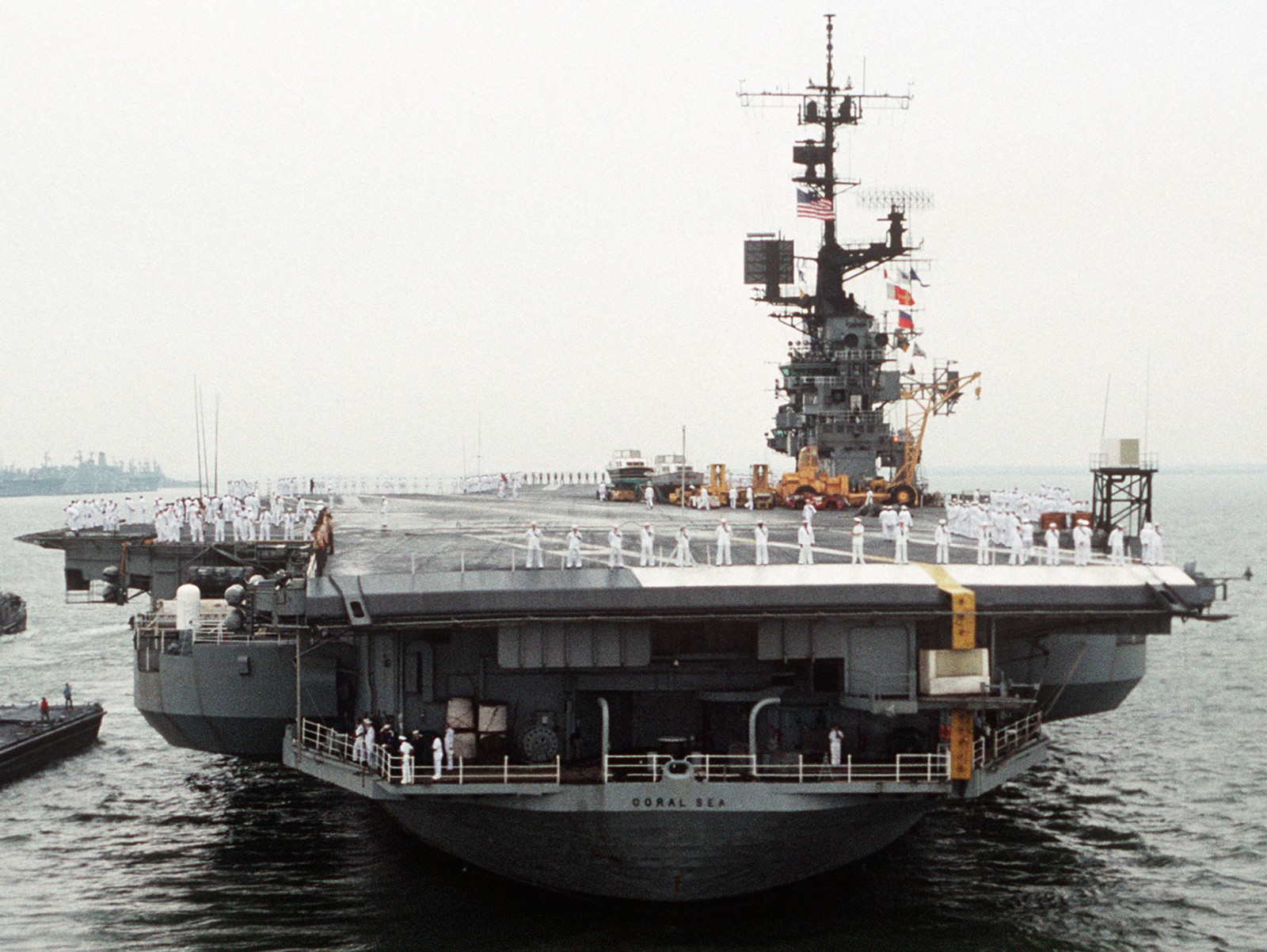 Naval Station Norfolk, Virginia - September 1989 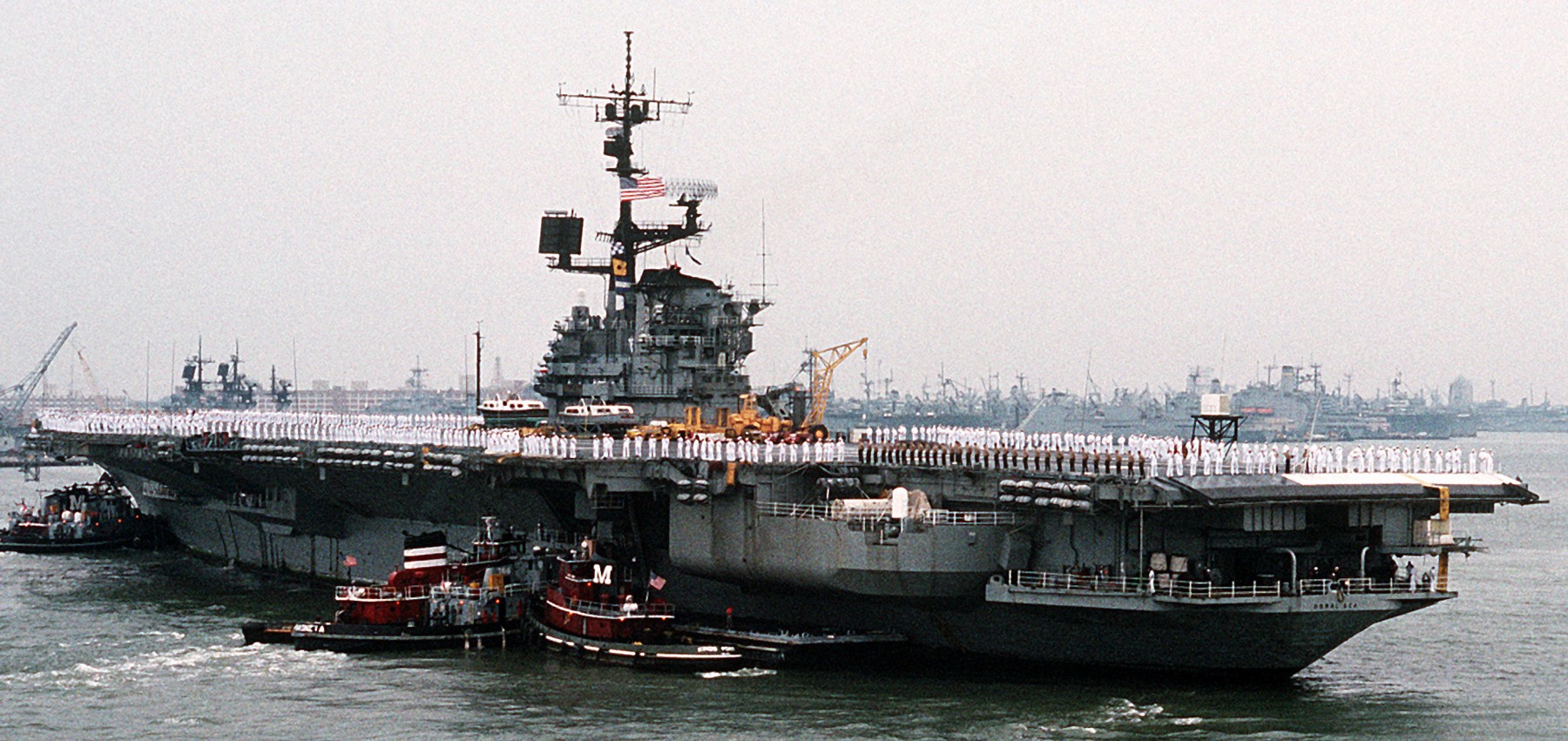 Naval Station Norfolk, Virginia - September 1989 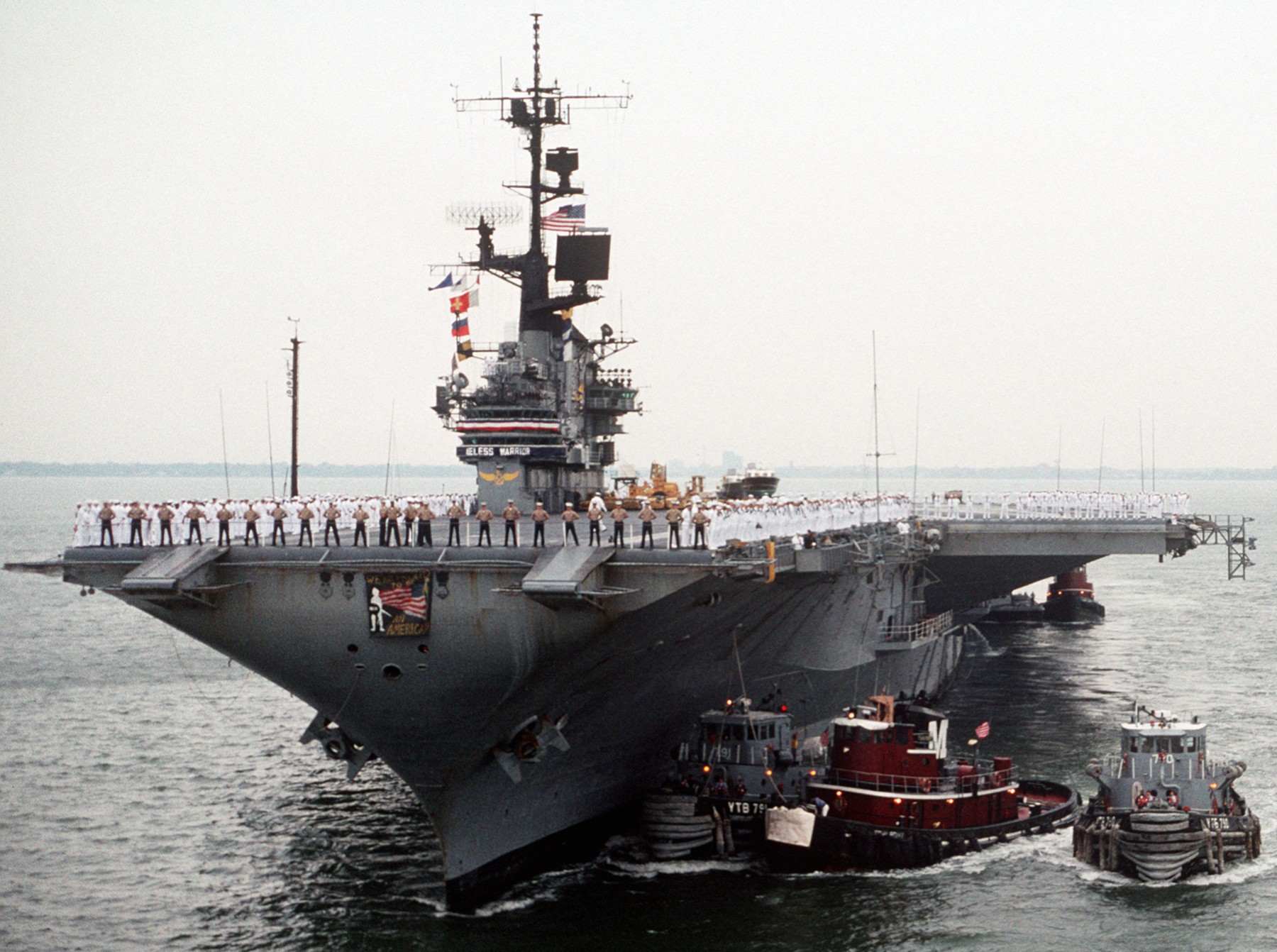 off Norfolk, Virginia - September 1989 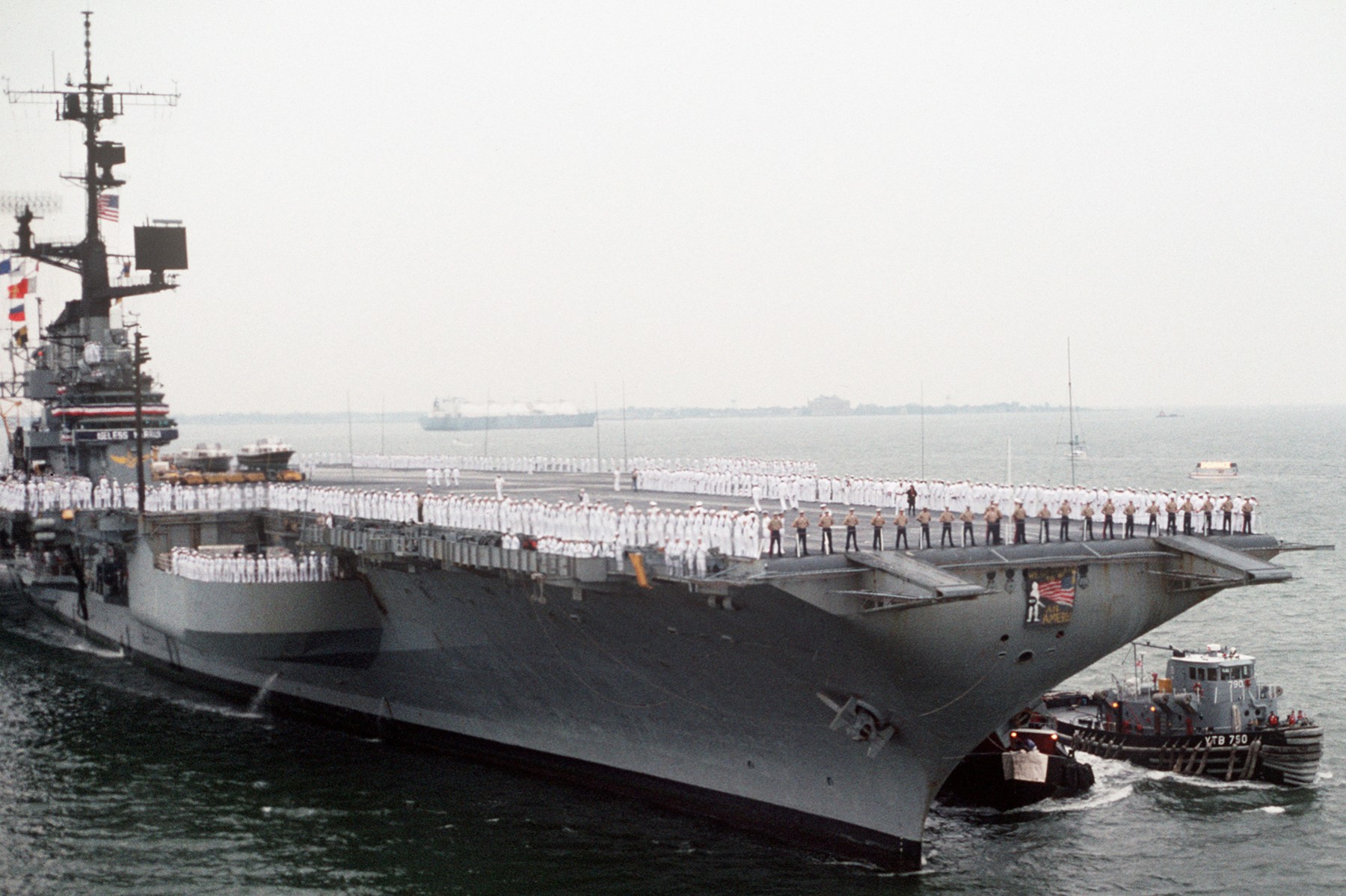 off Norfolk, Virginia - September 1989 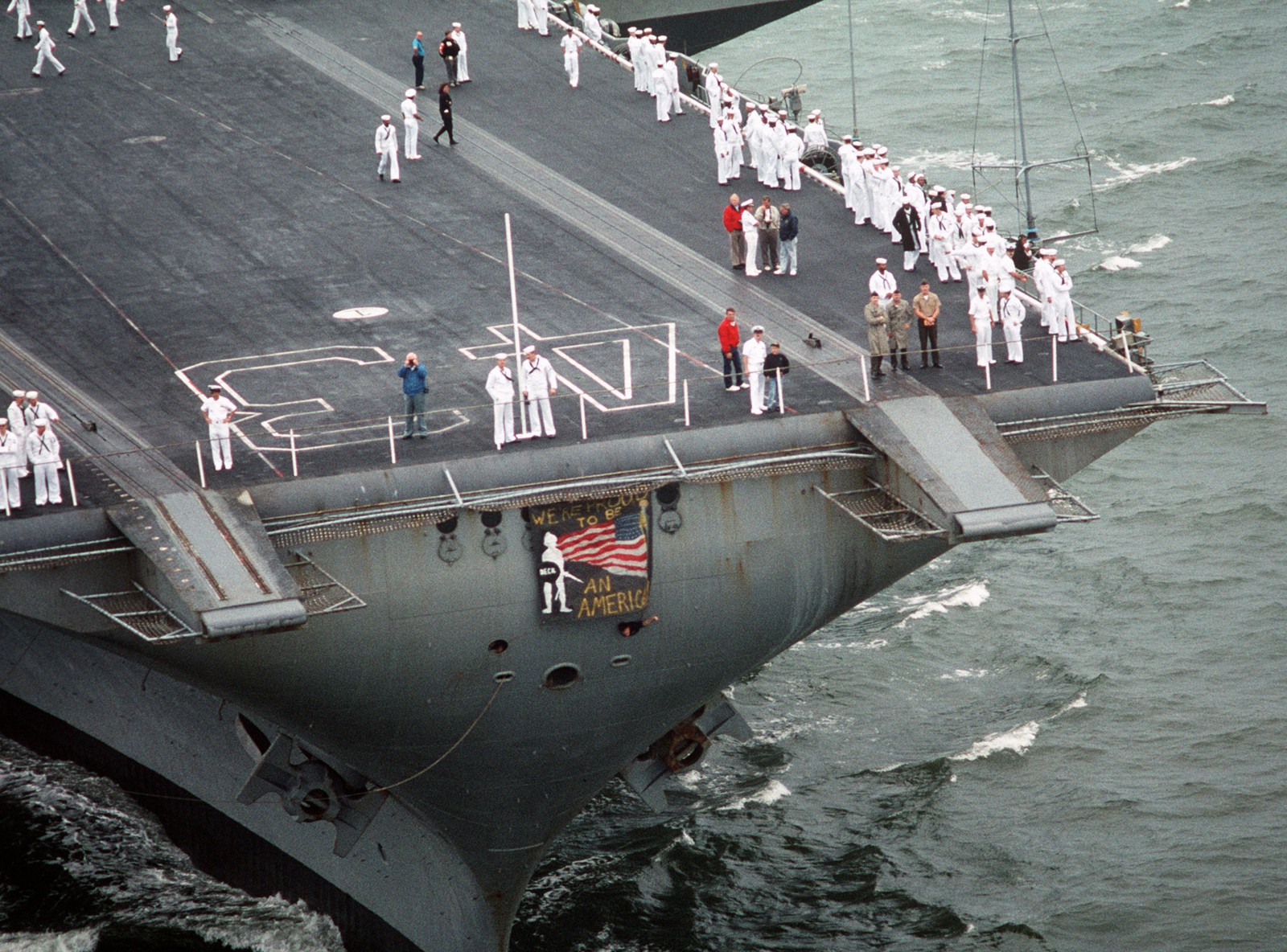 off Norfolk, Virginia - September 1989 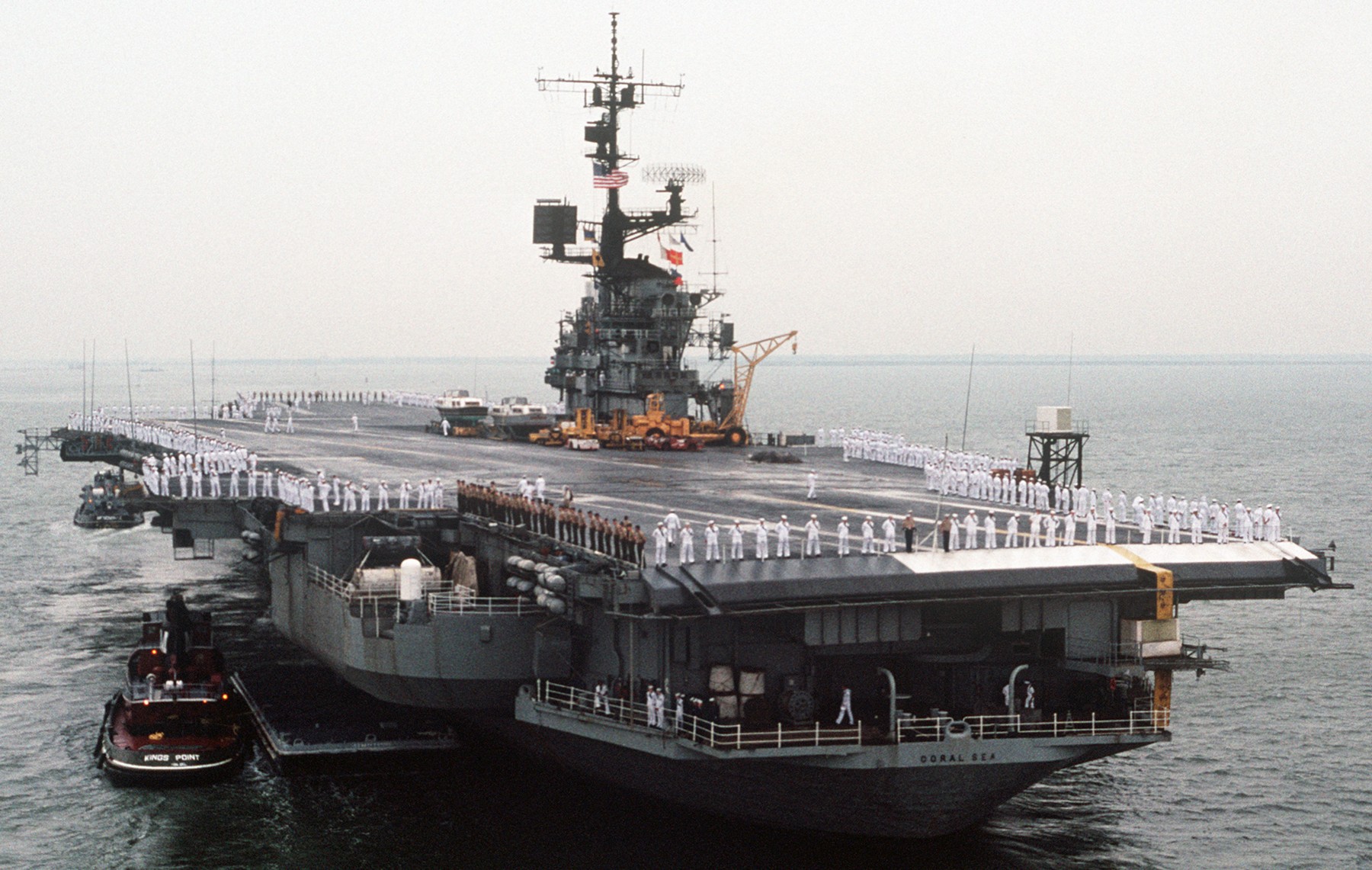 off Norfolk, Virginia - September 1989 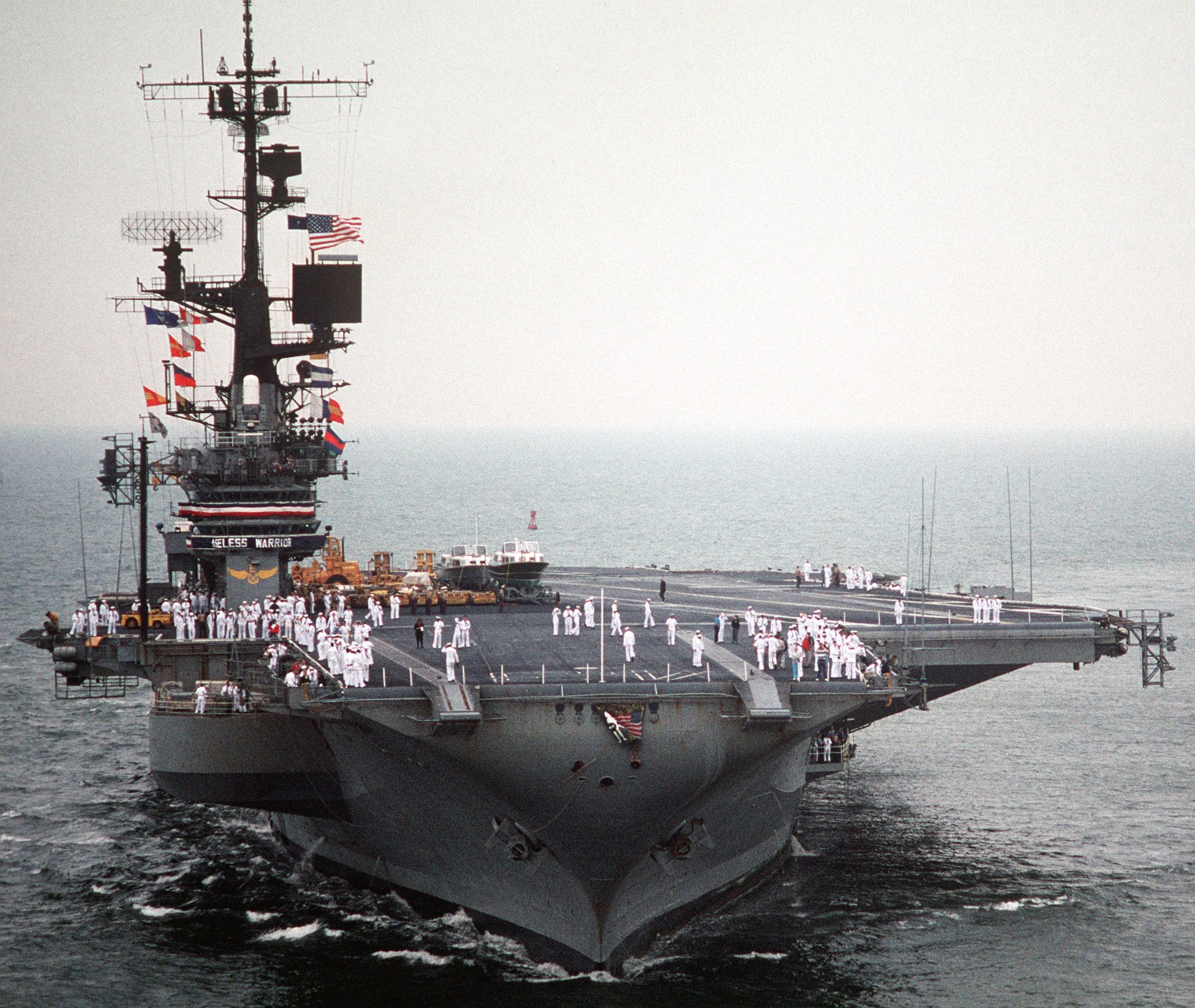 off Norfolk, Virginia - September 1989 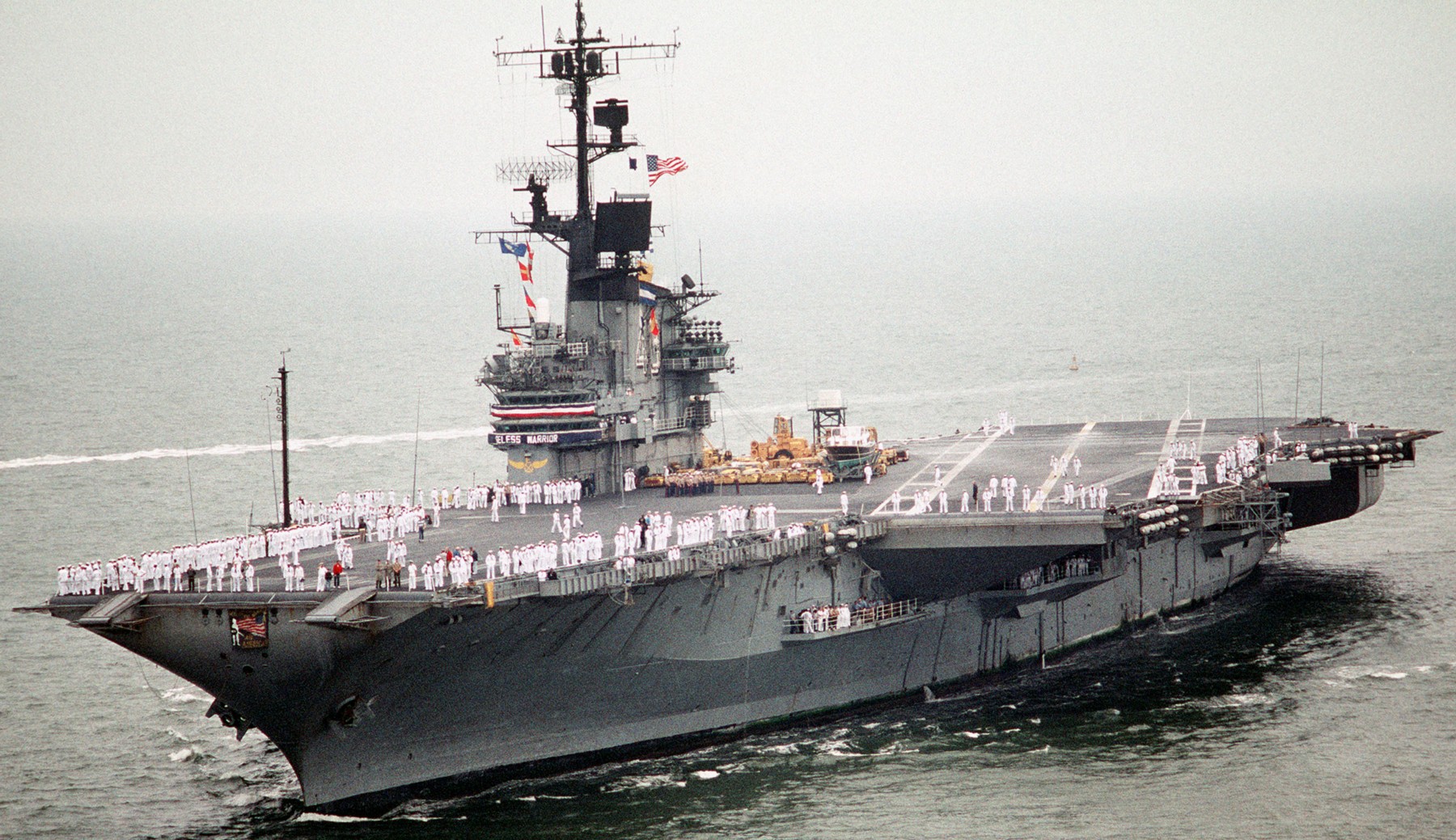 off Norfolk, Virginia - September 1989 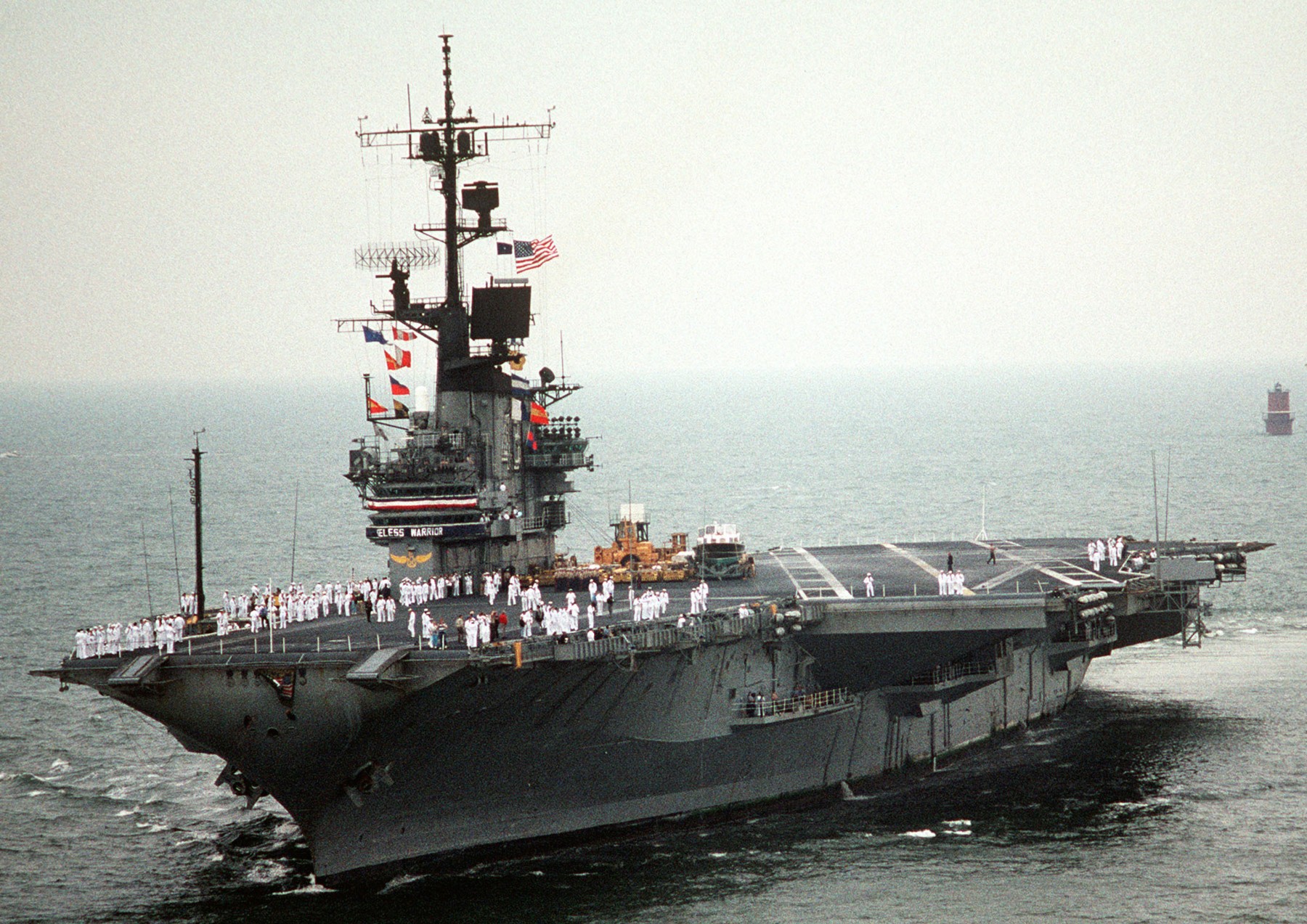 off Norfolk, Virginia - September 1989 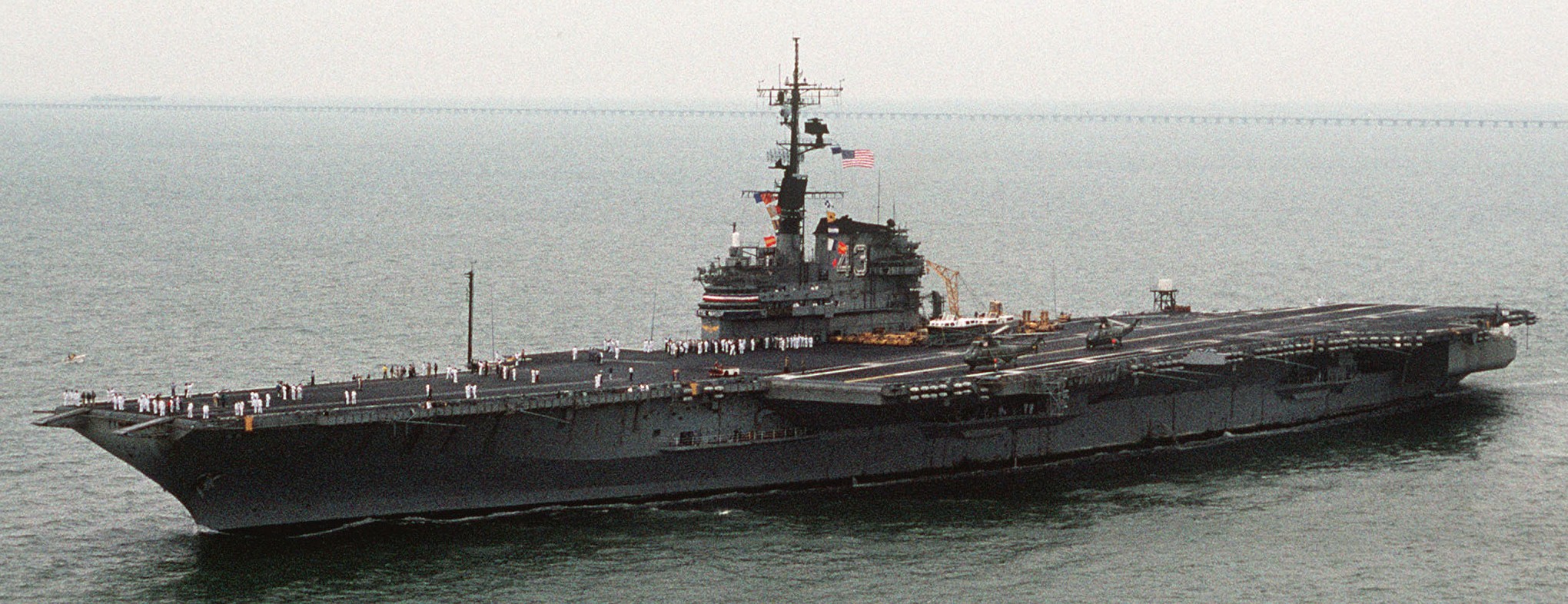 off Norfolk, Virginia - September 1989 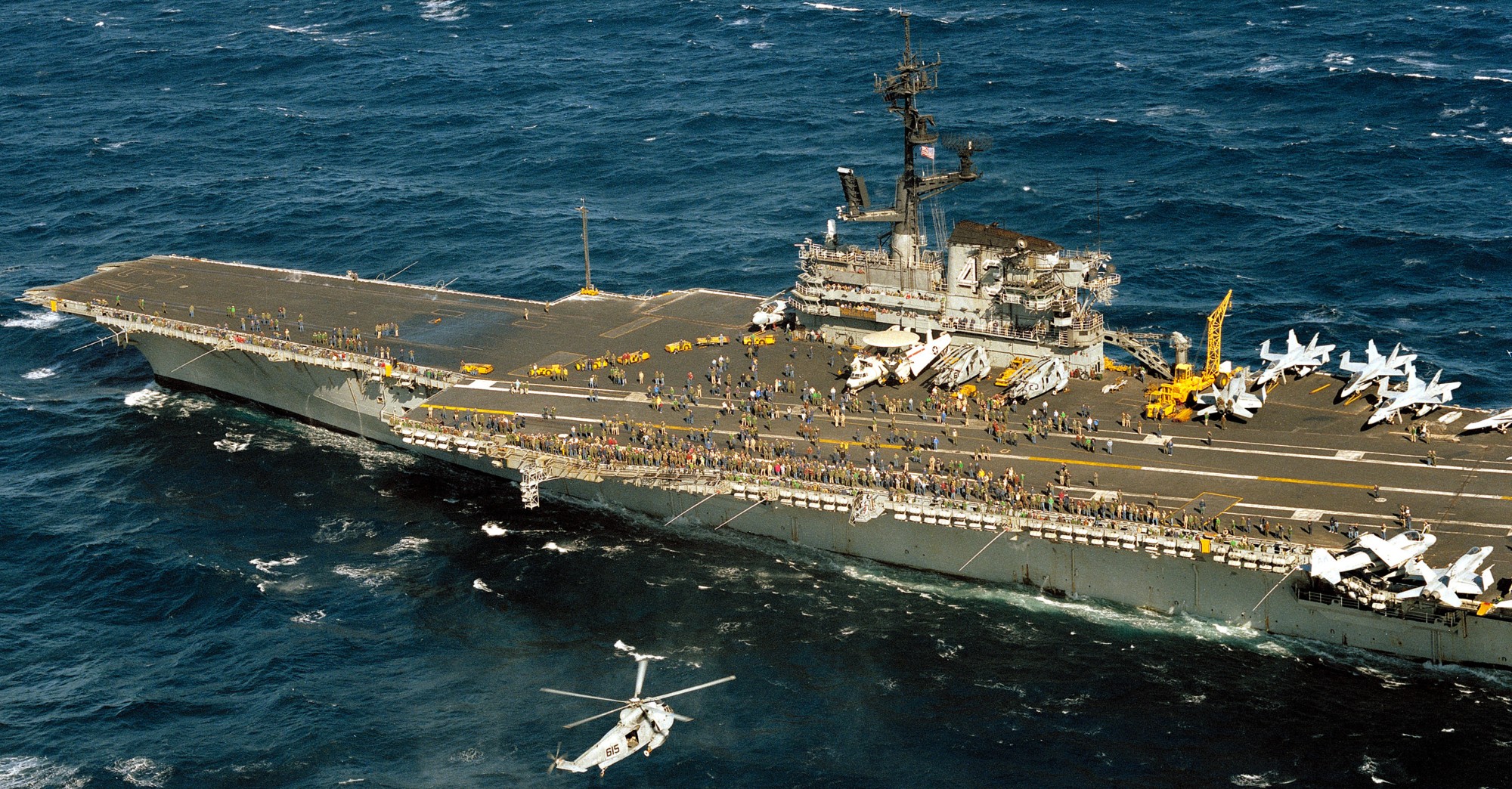 Tiger cruise - September 1989  September 1989 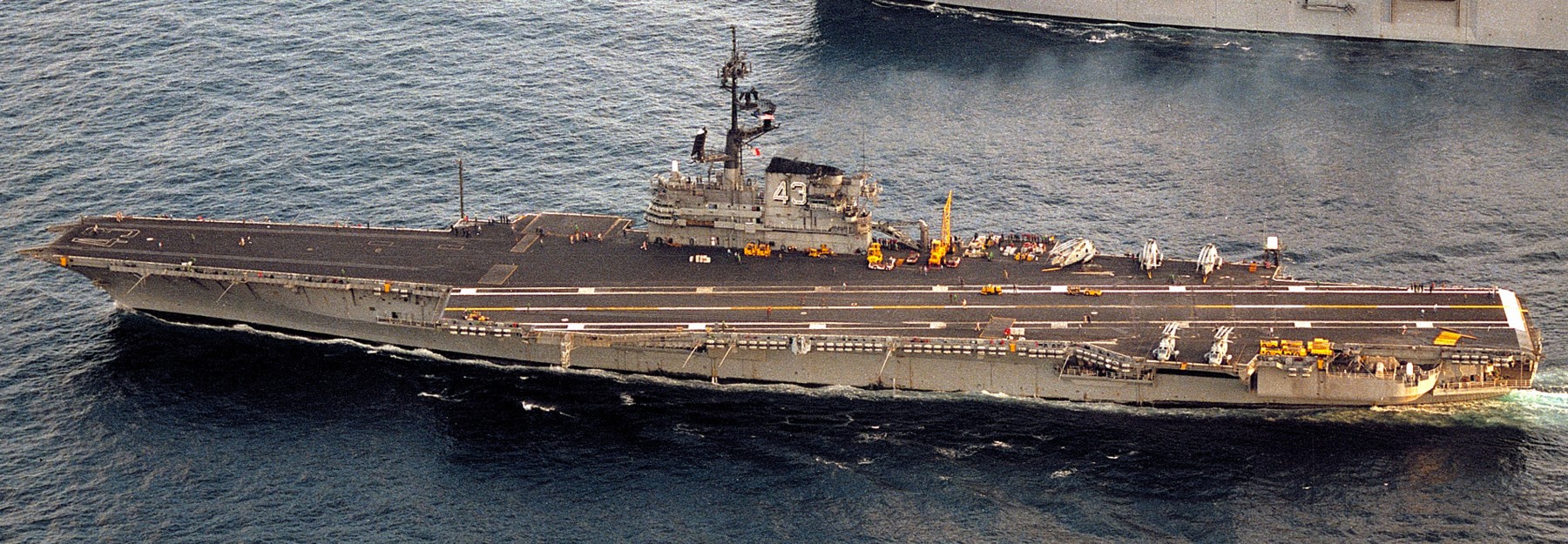 September 1989 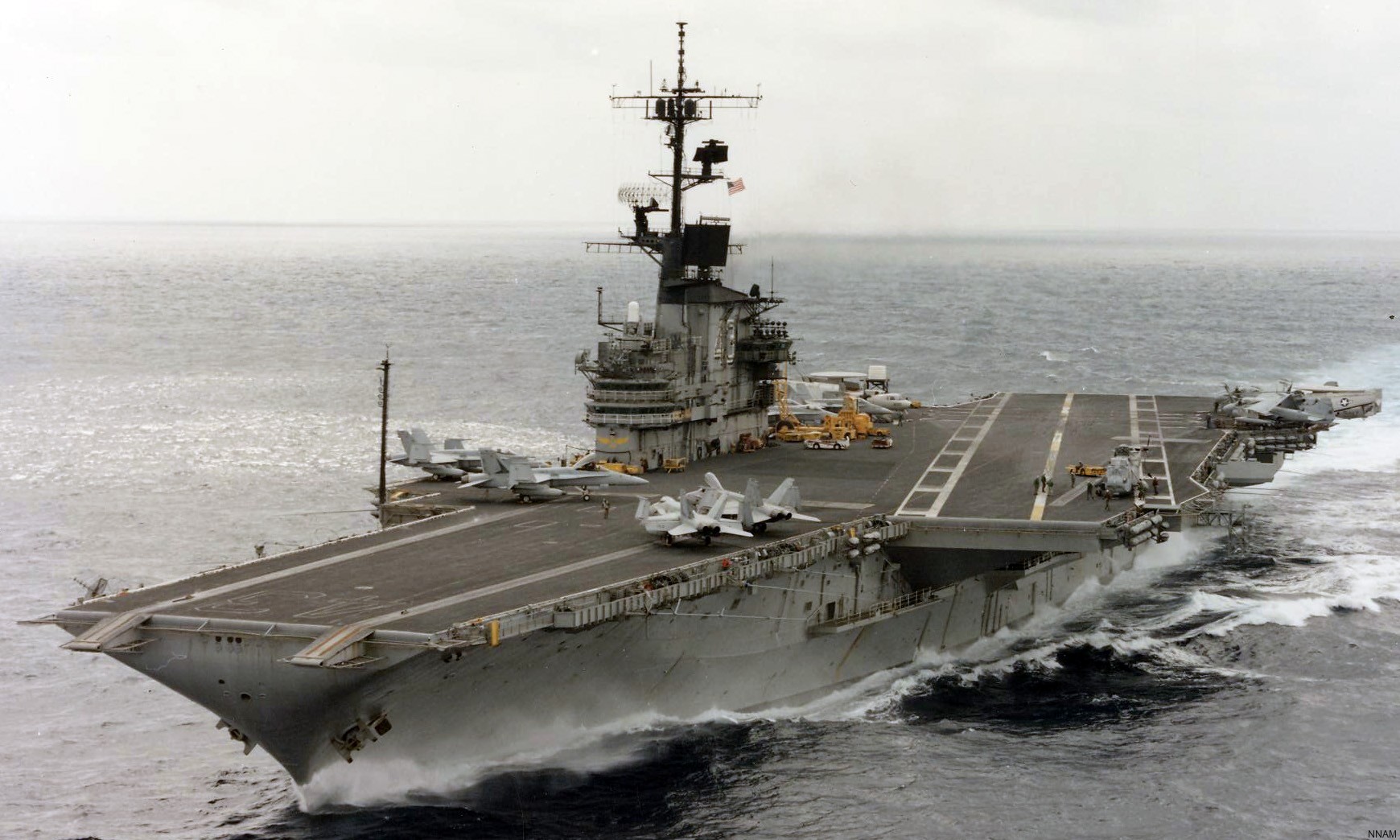 March 1989 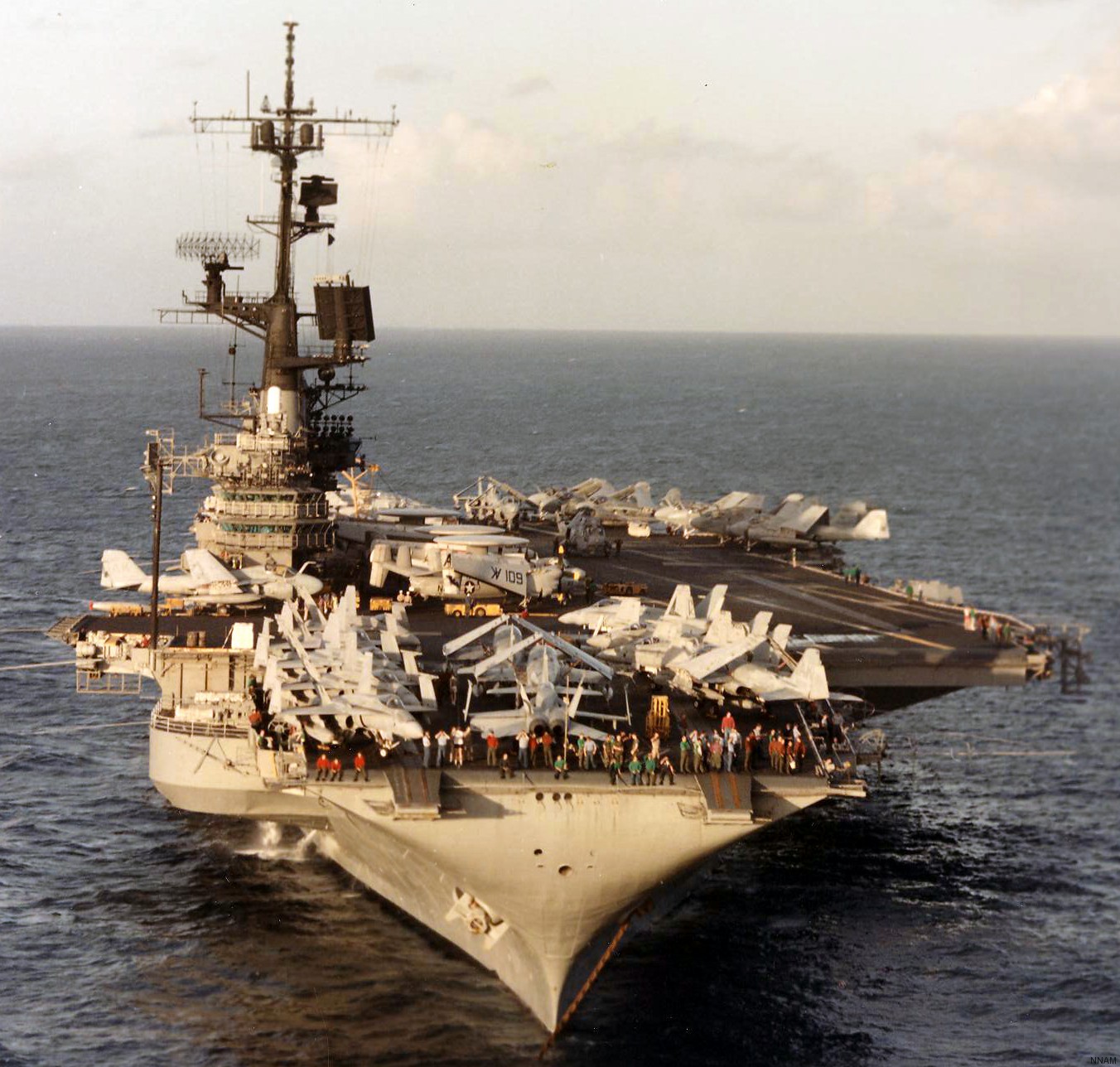 with Carrier Air Wing 13 (CVW-13) embarked - February 1989 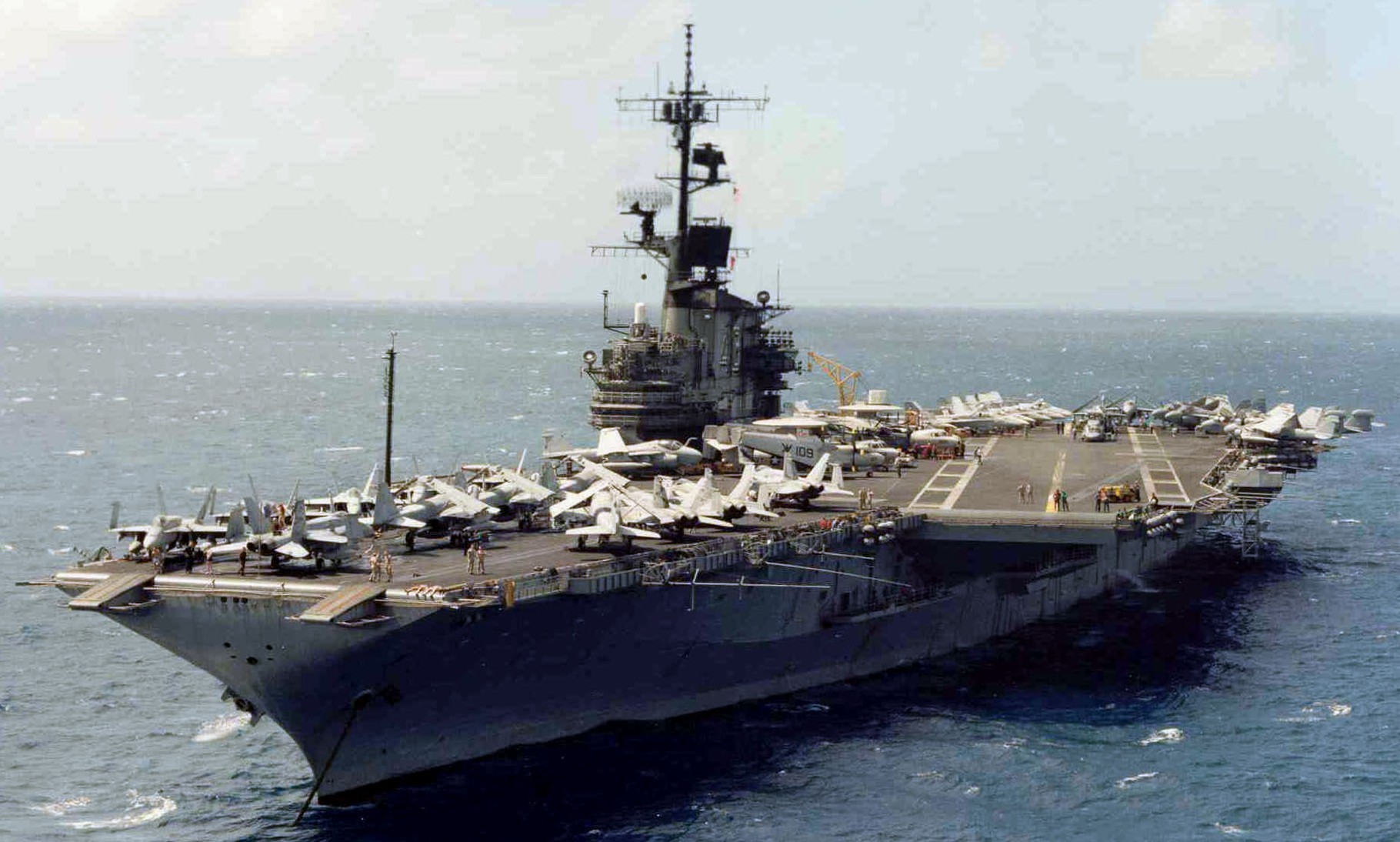 with Carrier Air Wing 13 (CVW-13) embarked - February 1989 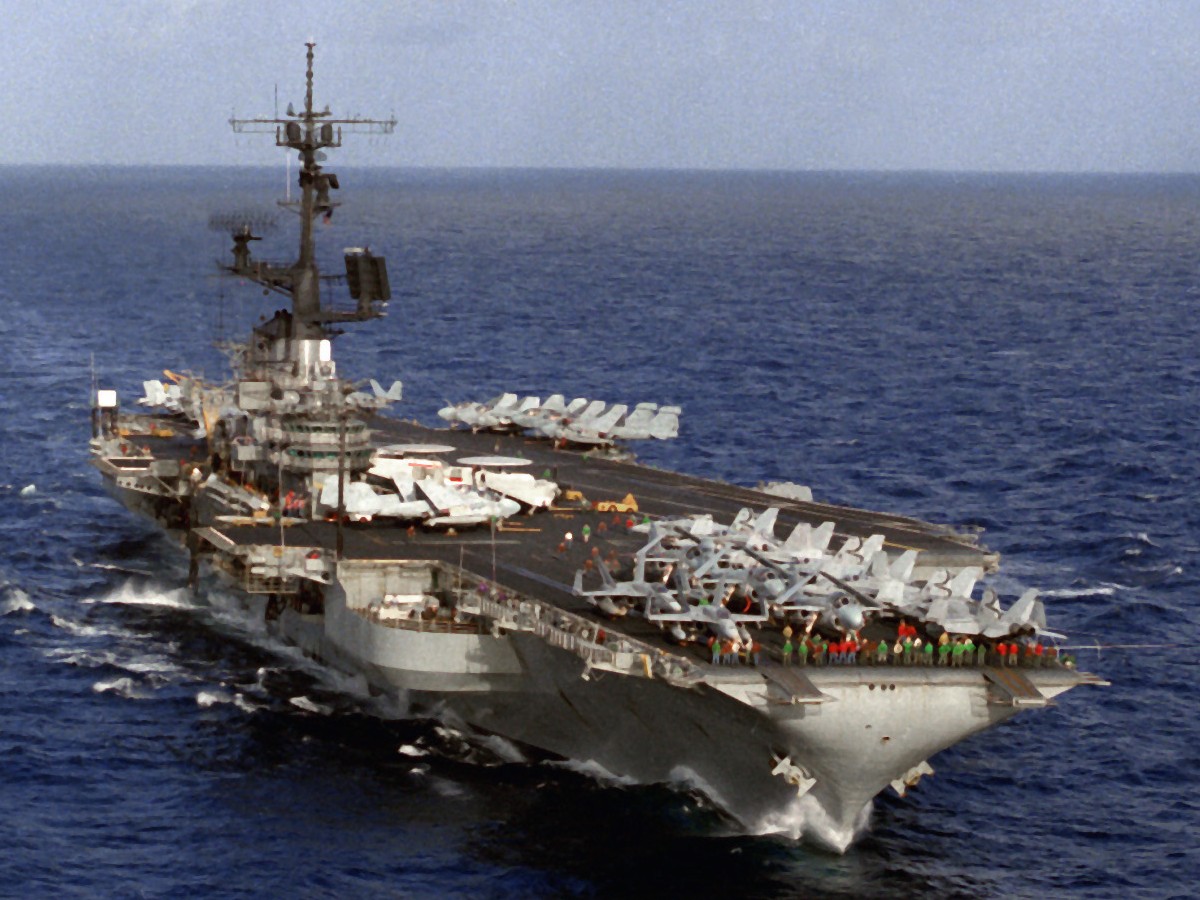 with Carrier Air Wing 13 (CVW-13) embarked - February 1989 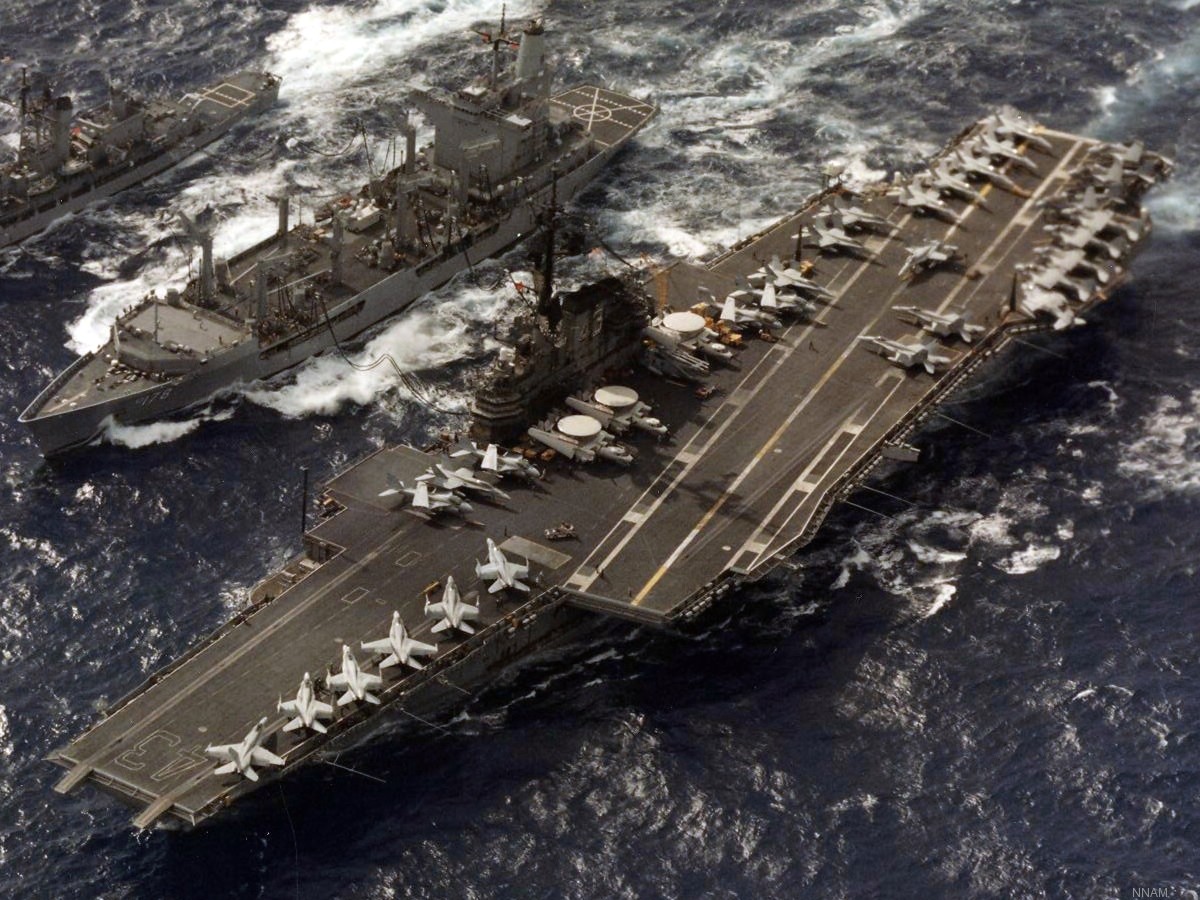 en route to St. Thomas, Virgin Islands with Carrier Air Wing 13 (CVW-13) embarked - February 1989 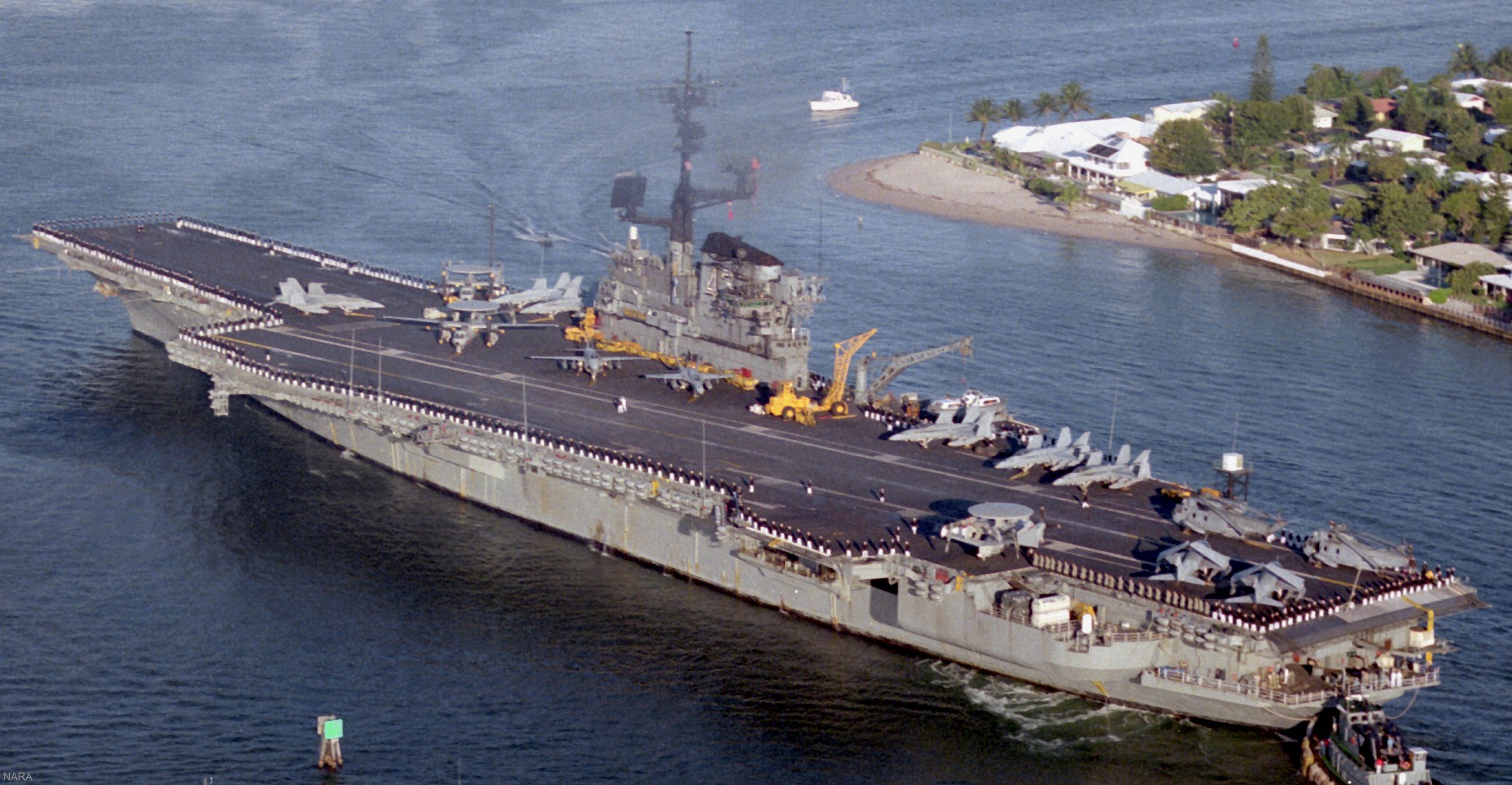 Fort Lauderdale, Florida - February 1989 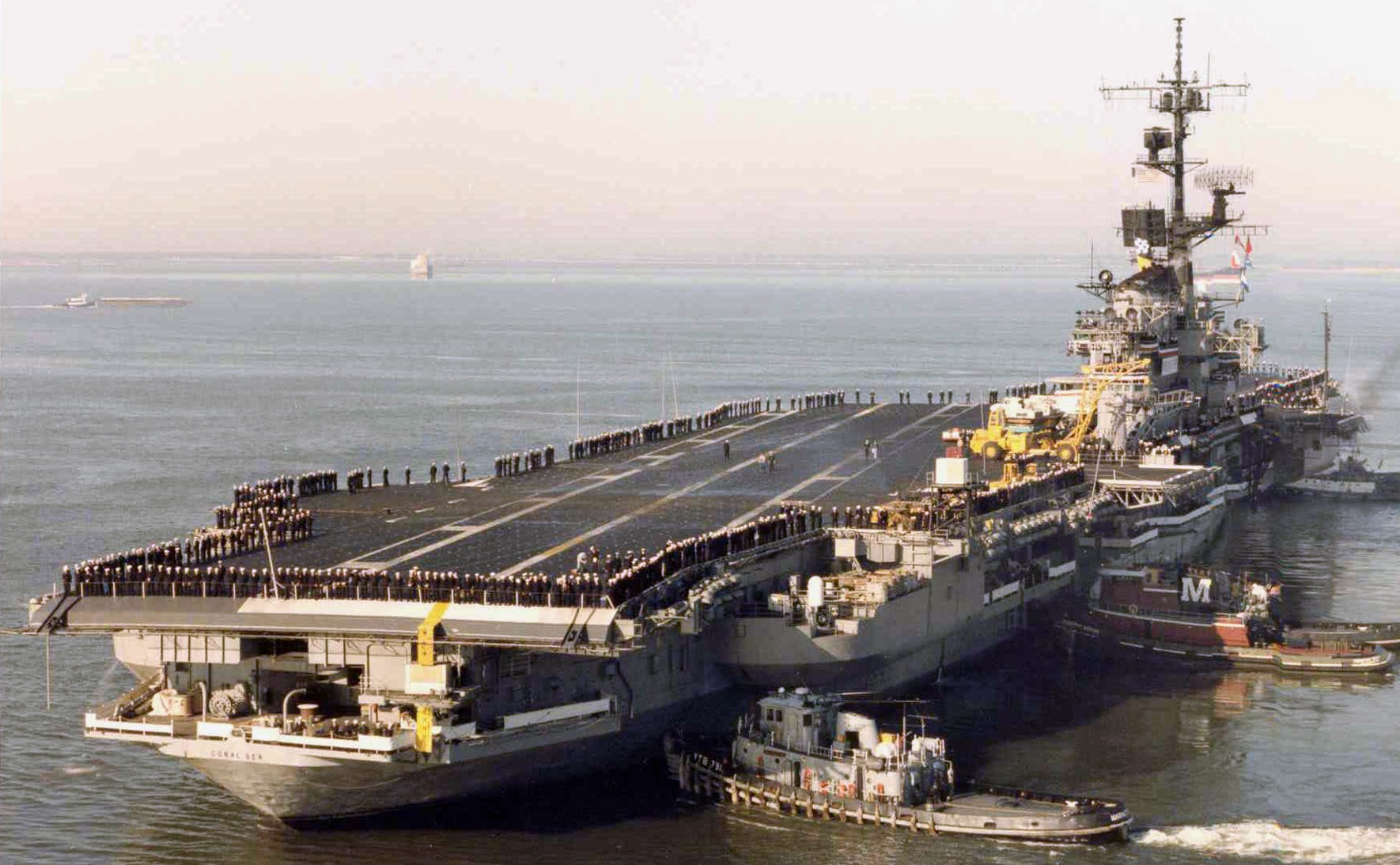 returning to Naval Station Norfolk, Virginia - March 1988 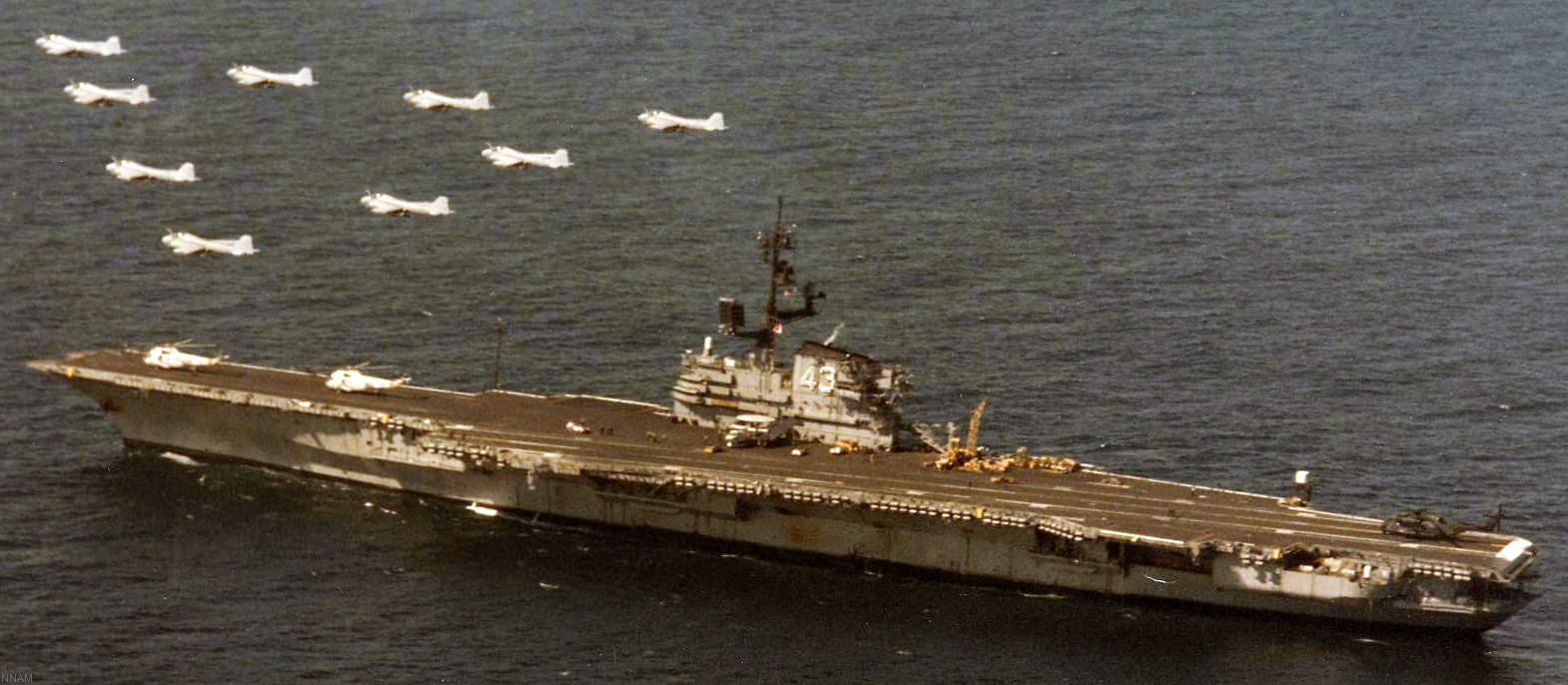 with Carrier Air Wing 13 (CVW-13) embarked - returning from deployment to Norfolk, Virginia - March 1988 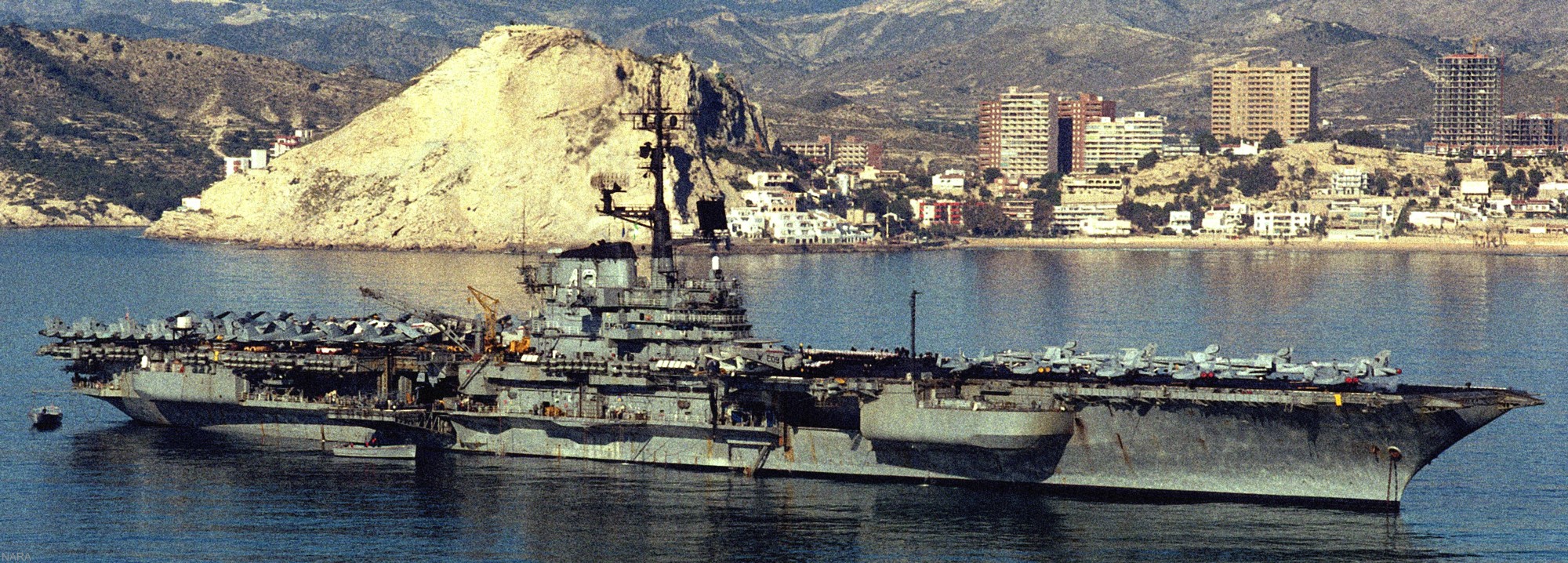 with Carrier Air Wing 13 (CVW-13) embarked - Benidorm, Spain - March 1988 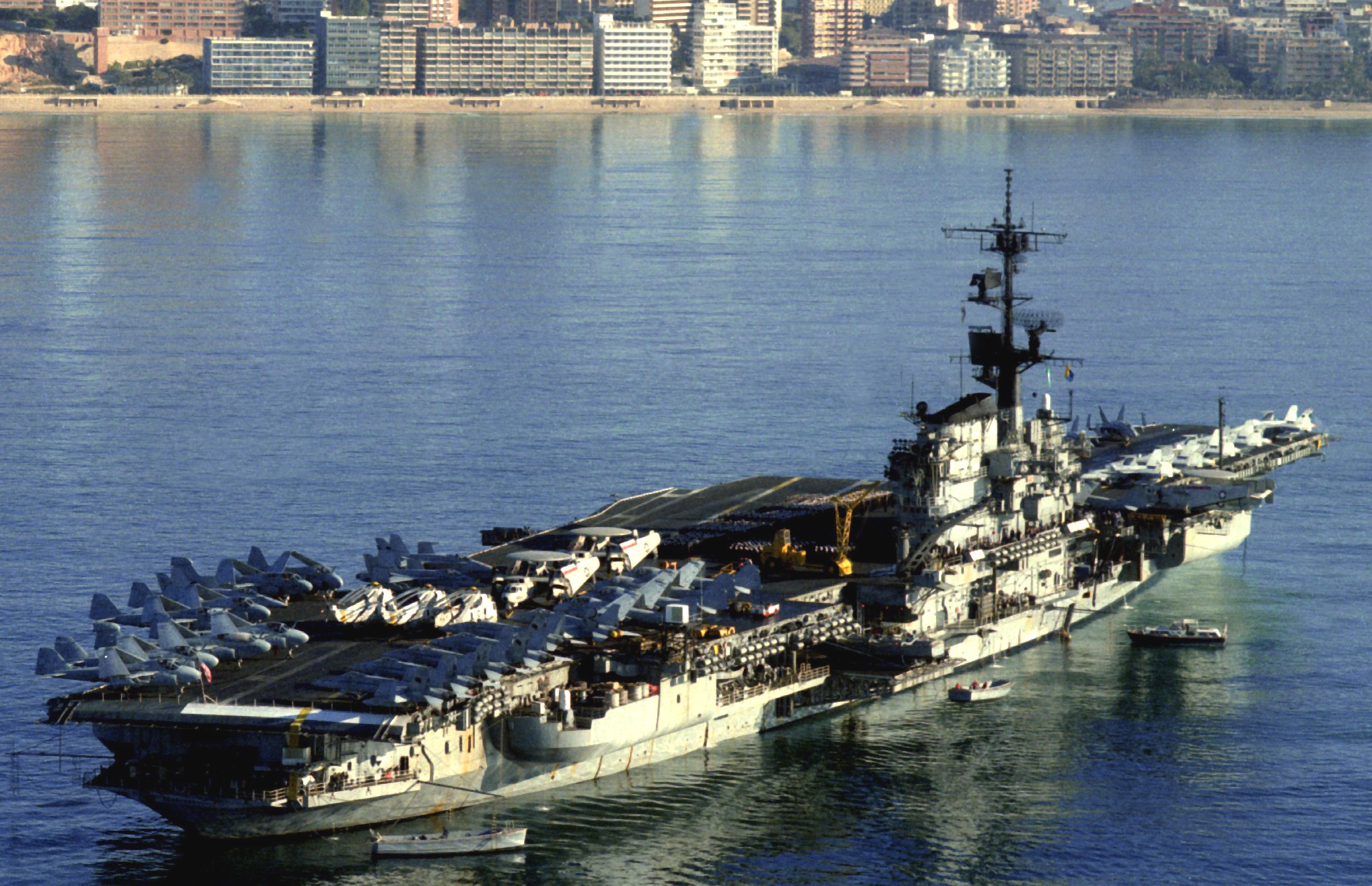 with Carrier Air Wing 13 (CVW-13) embarked - Benidorm, Spain - March 1988 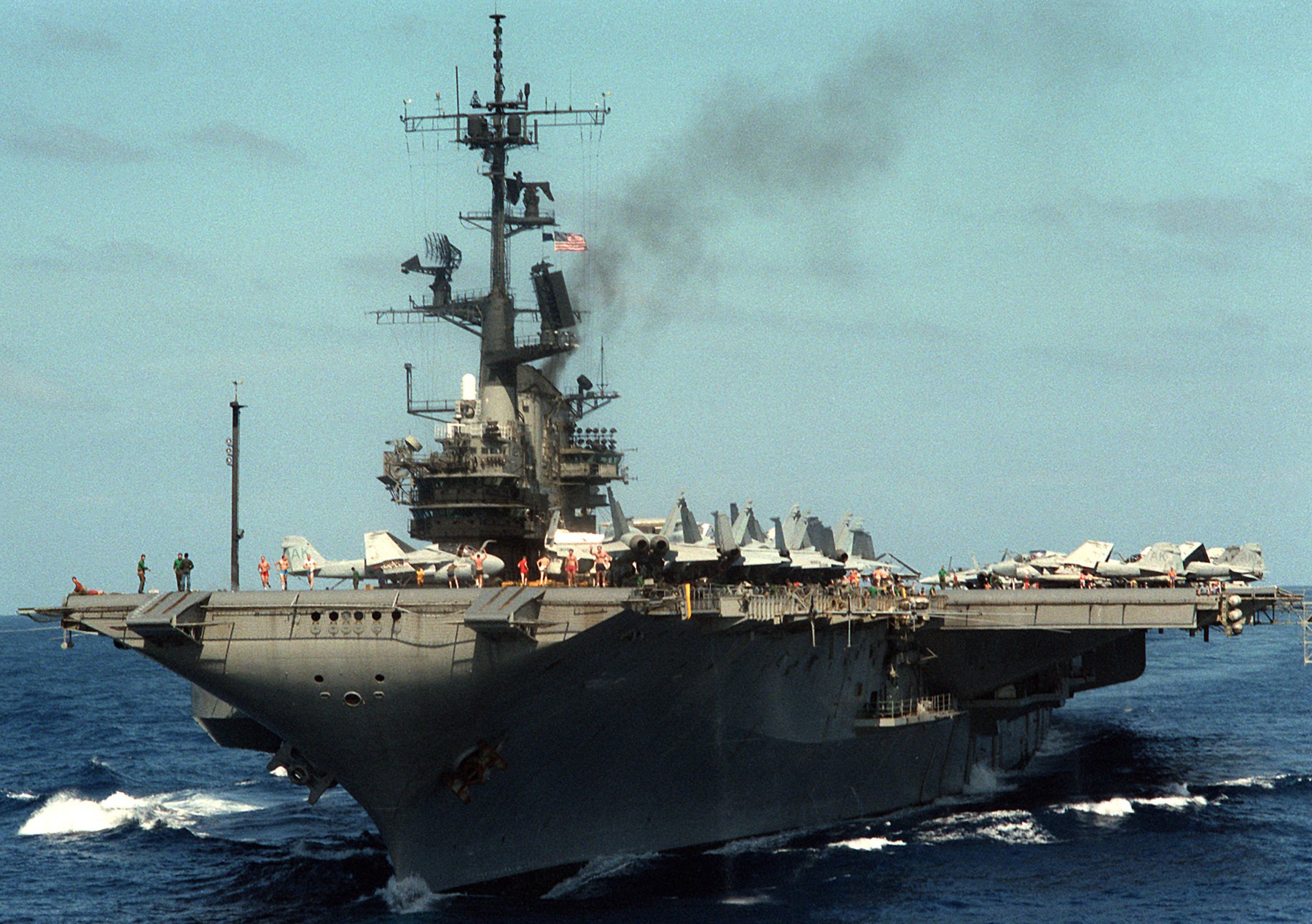 with Carrier Air Wing 13 (CVW-13) embarked - Mediterranean Sea - March 1988 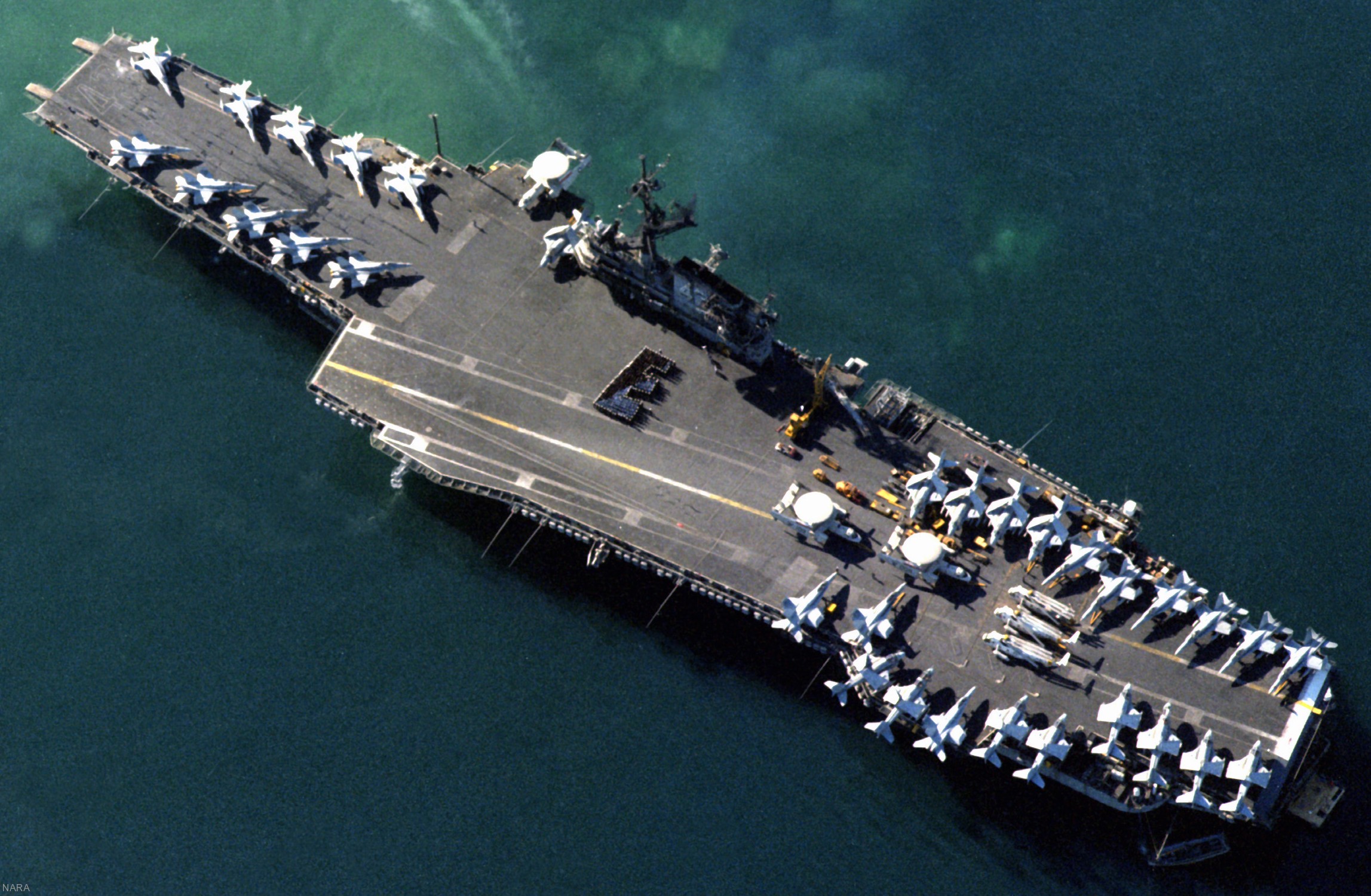 with Carrier Air Wing 13 (CVW-13) embarked - Mediterranean Sea - March 1988 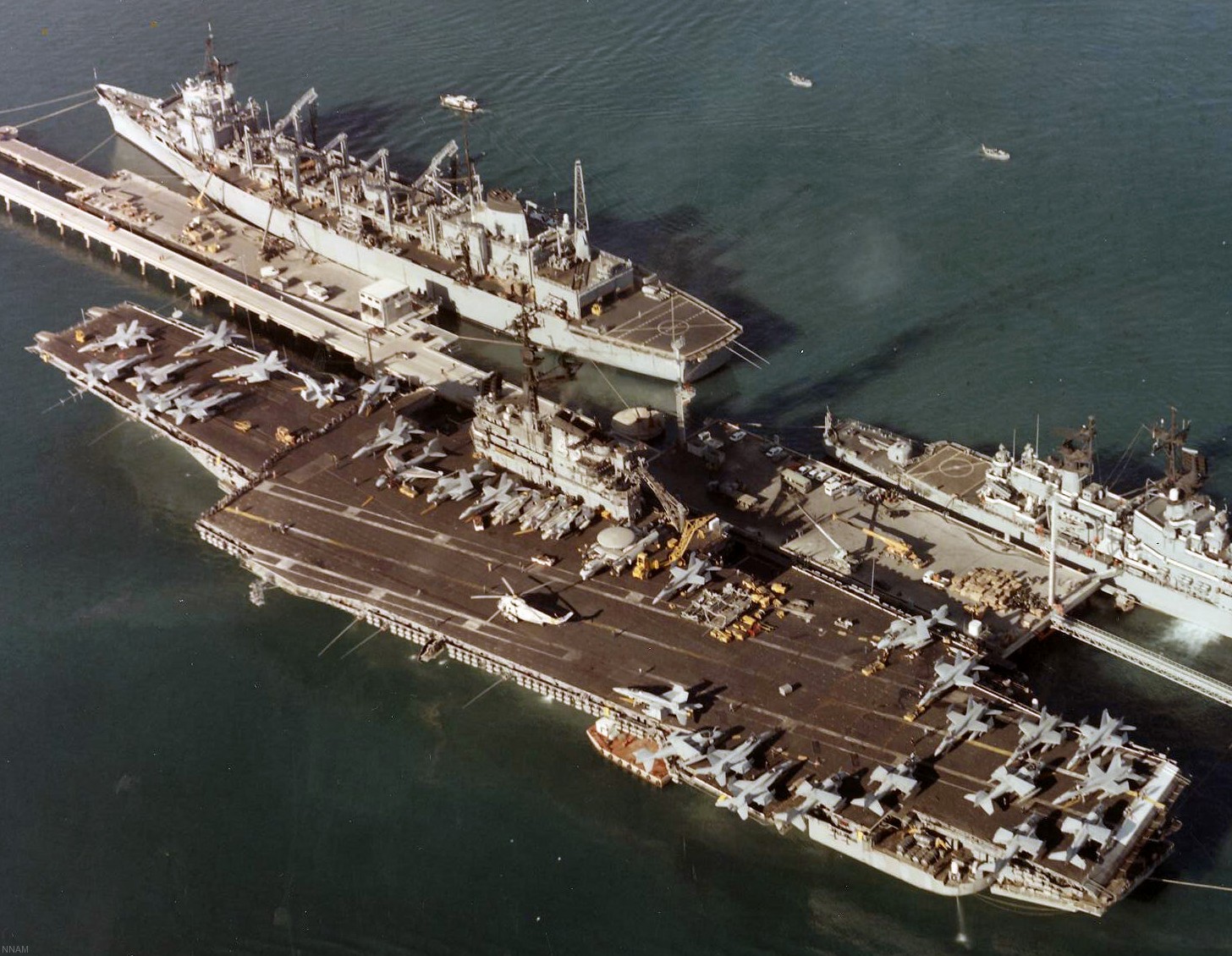 with Carrier Air Wing 13 (CVW-13) embarked - Augusta Bay, Sicily, Italy - January 1988 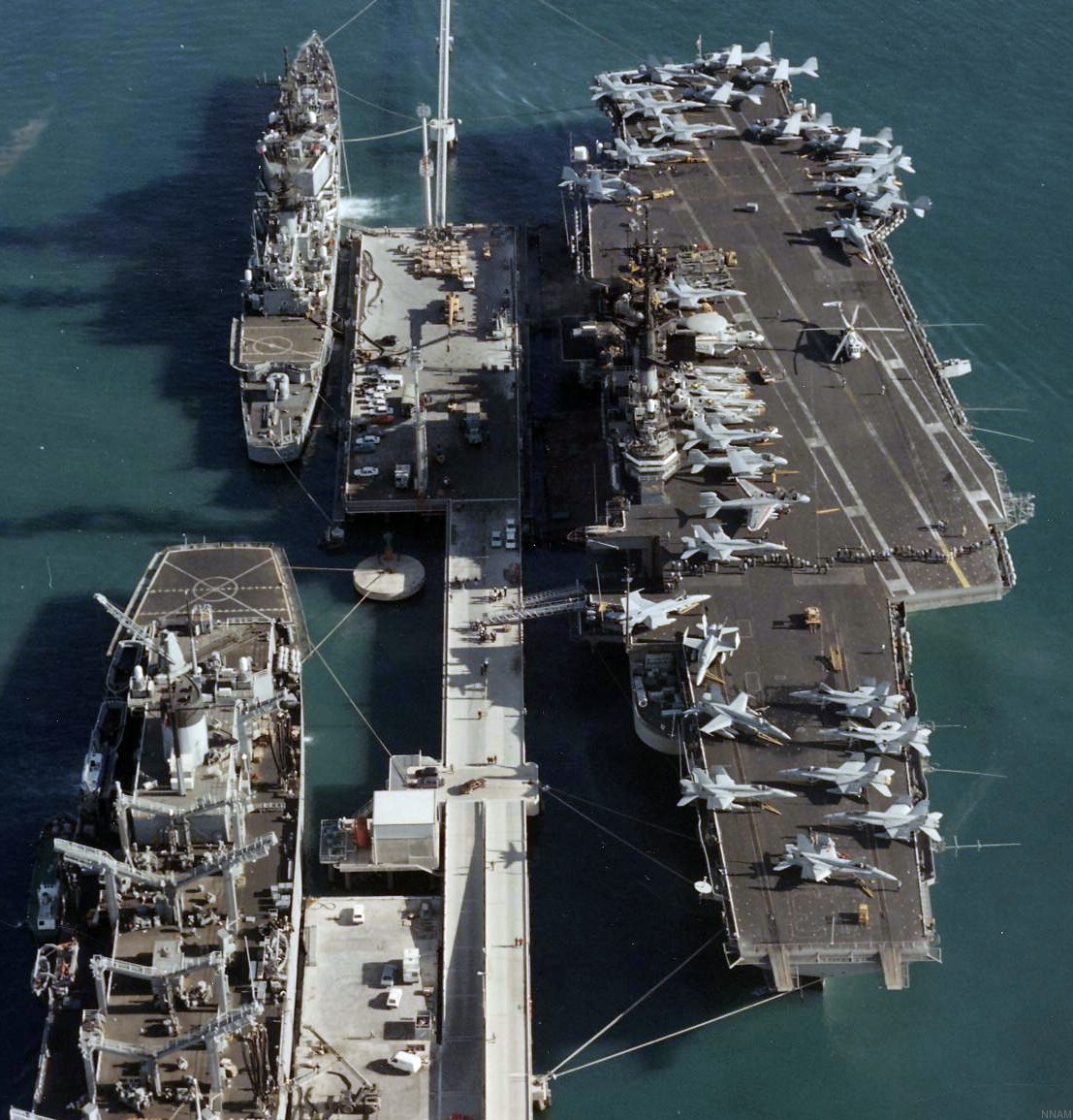 with Carrier Air Wing 13 (CVW-13) embarked - Augusta Bay, Sicily, Italy - January 1988 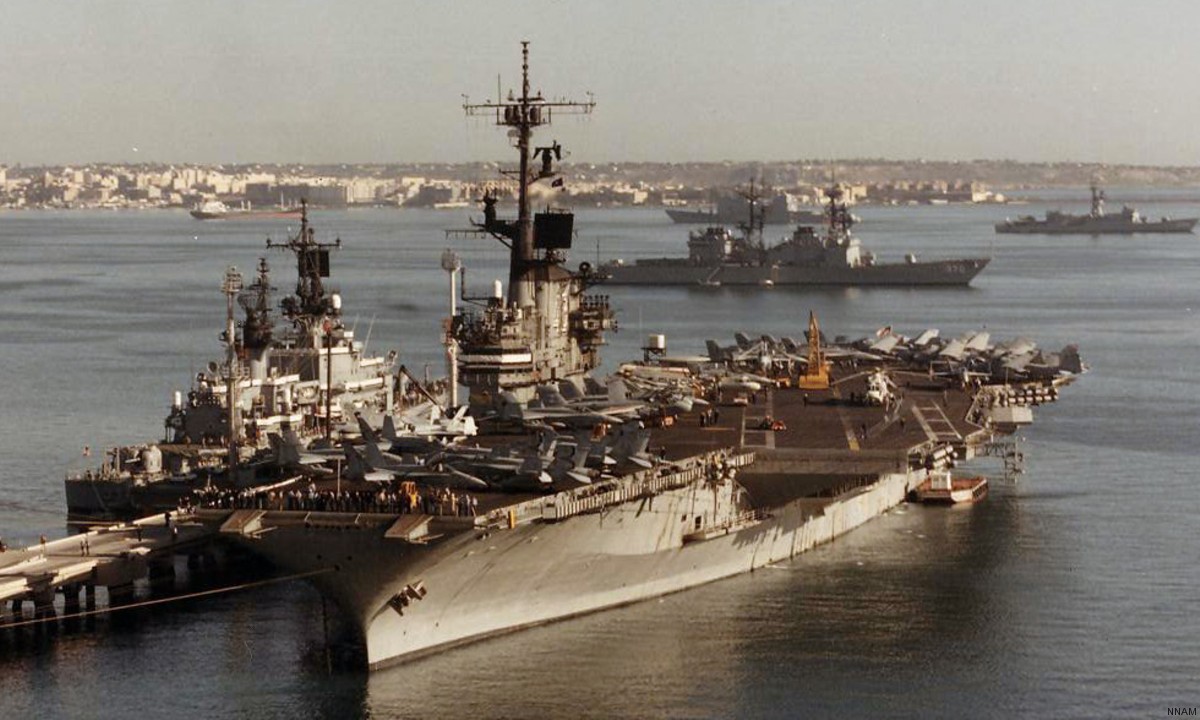 with Carrier Air Wing 13 (CVW-13) embarked - Augusta Bay, Sicily, Italy - January 1988 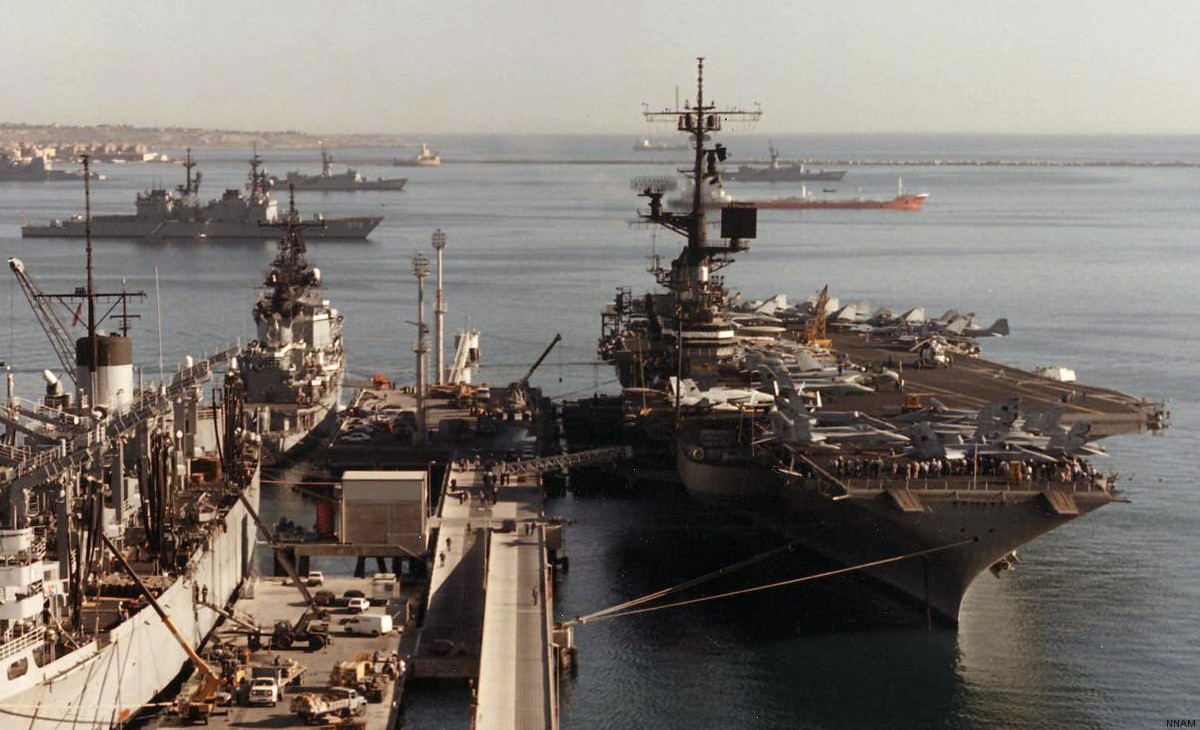 with Carrier Air Wing 13 (CVW-13) embarked - Augusta Bay, Sicily, Italy - January 1988 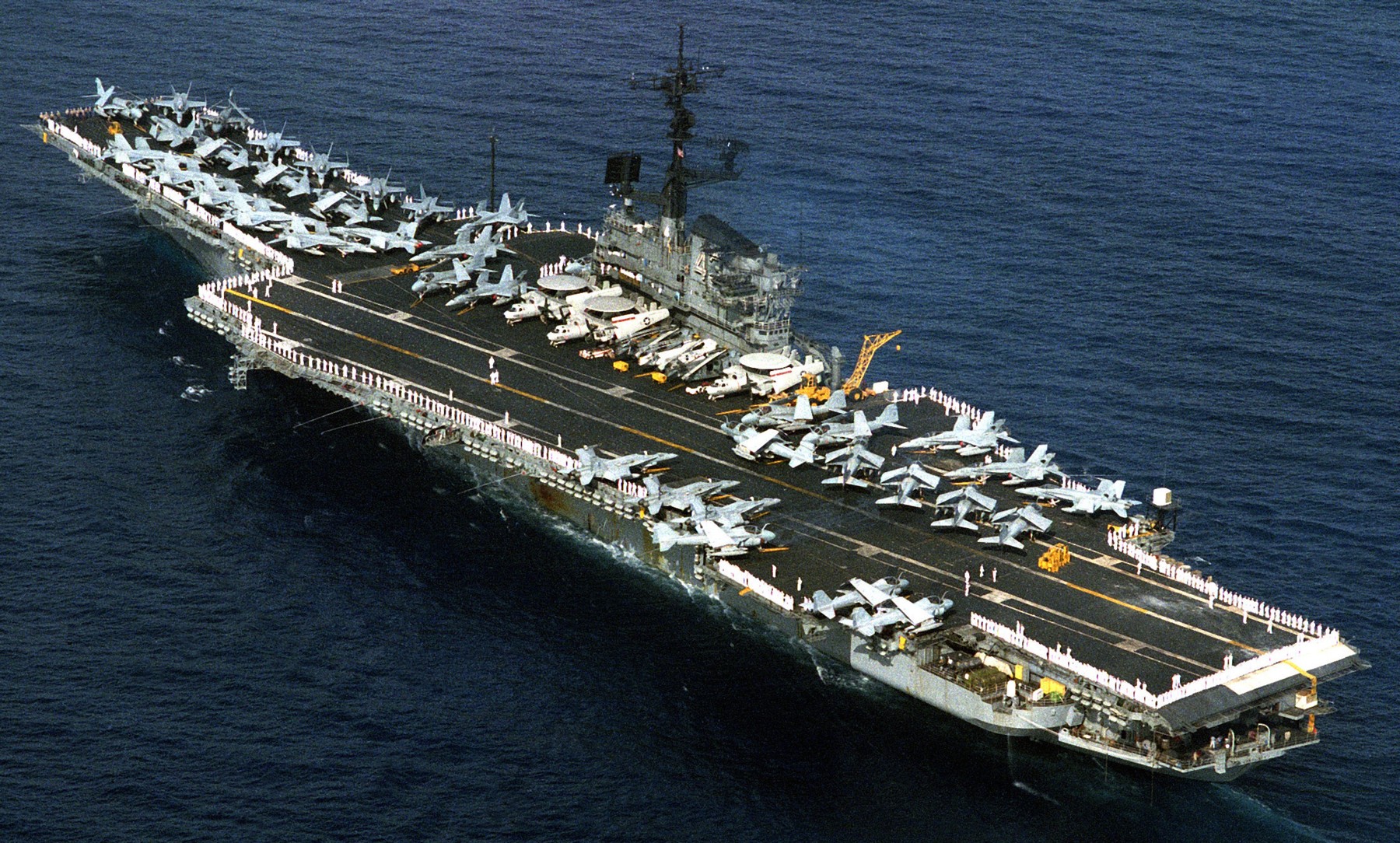 with Carrier Air Wing 13 (CVW-13) embarked - October 1987 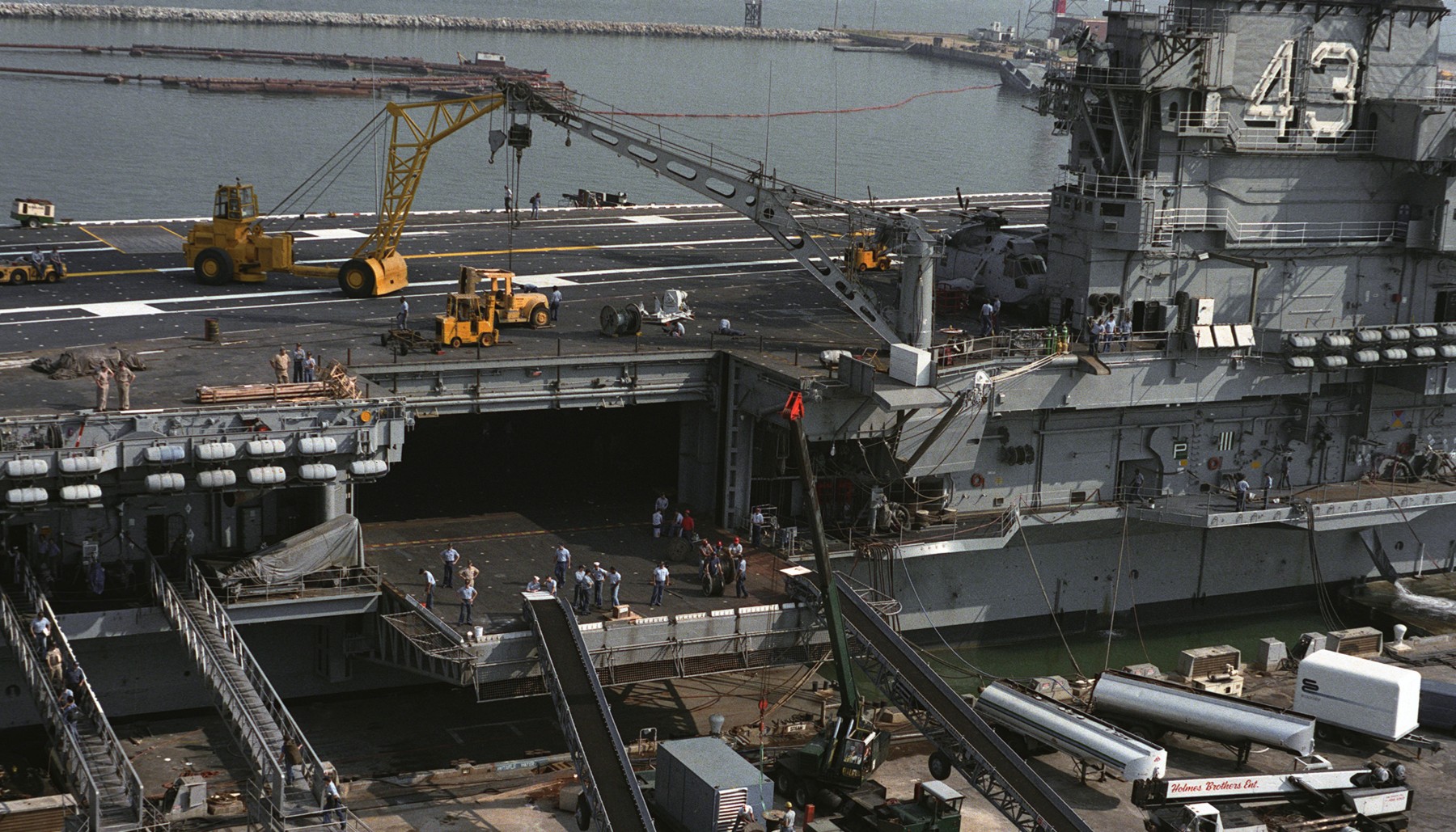 Naval Station Norfolk, Virginia - September 1987 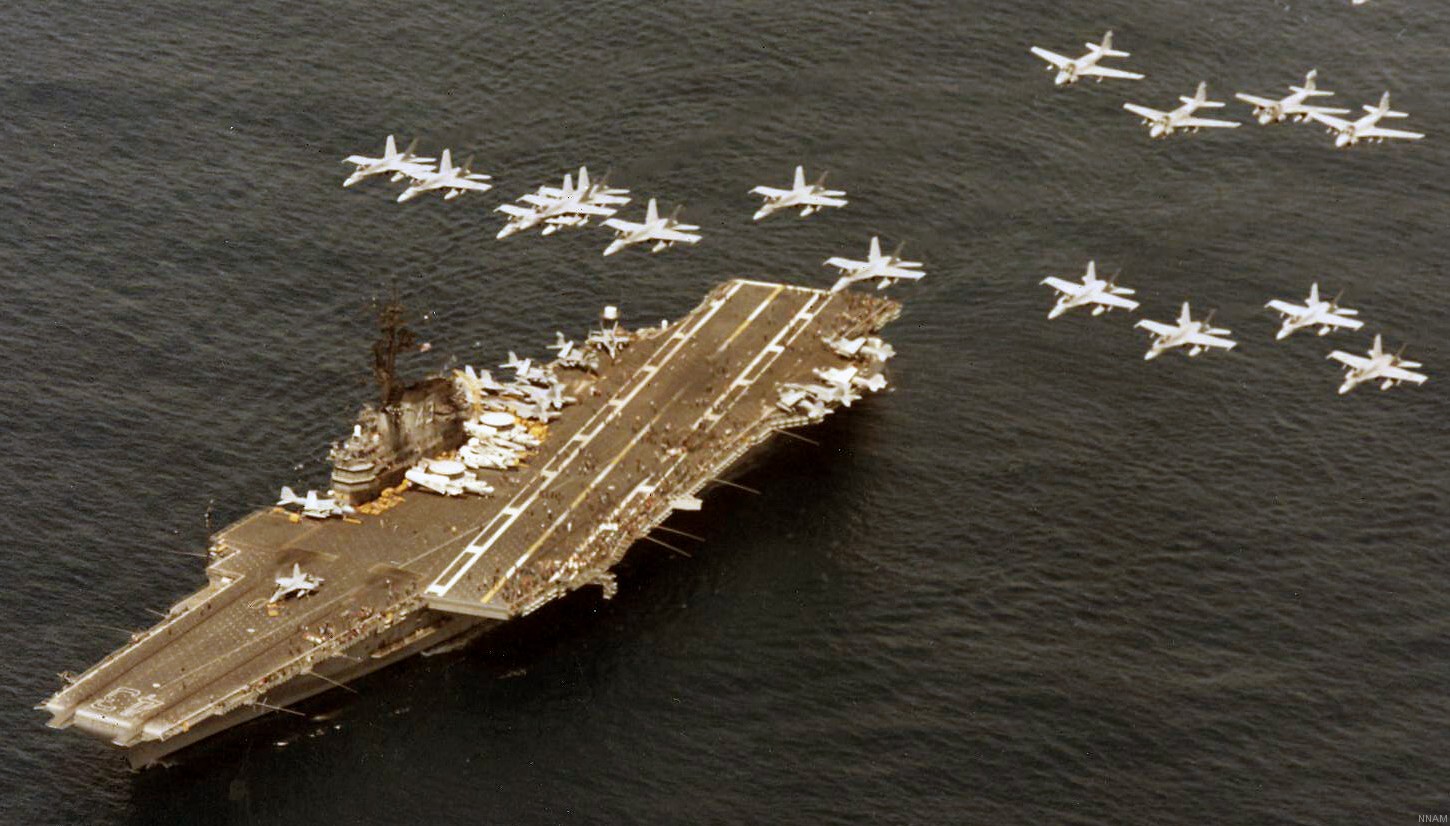 with Carrier Air Wing 13 (CVW-13) embarked - April 1987 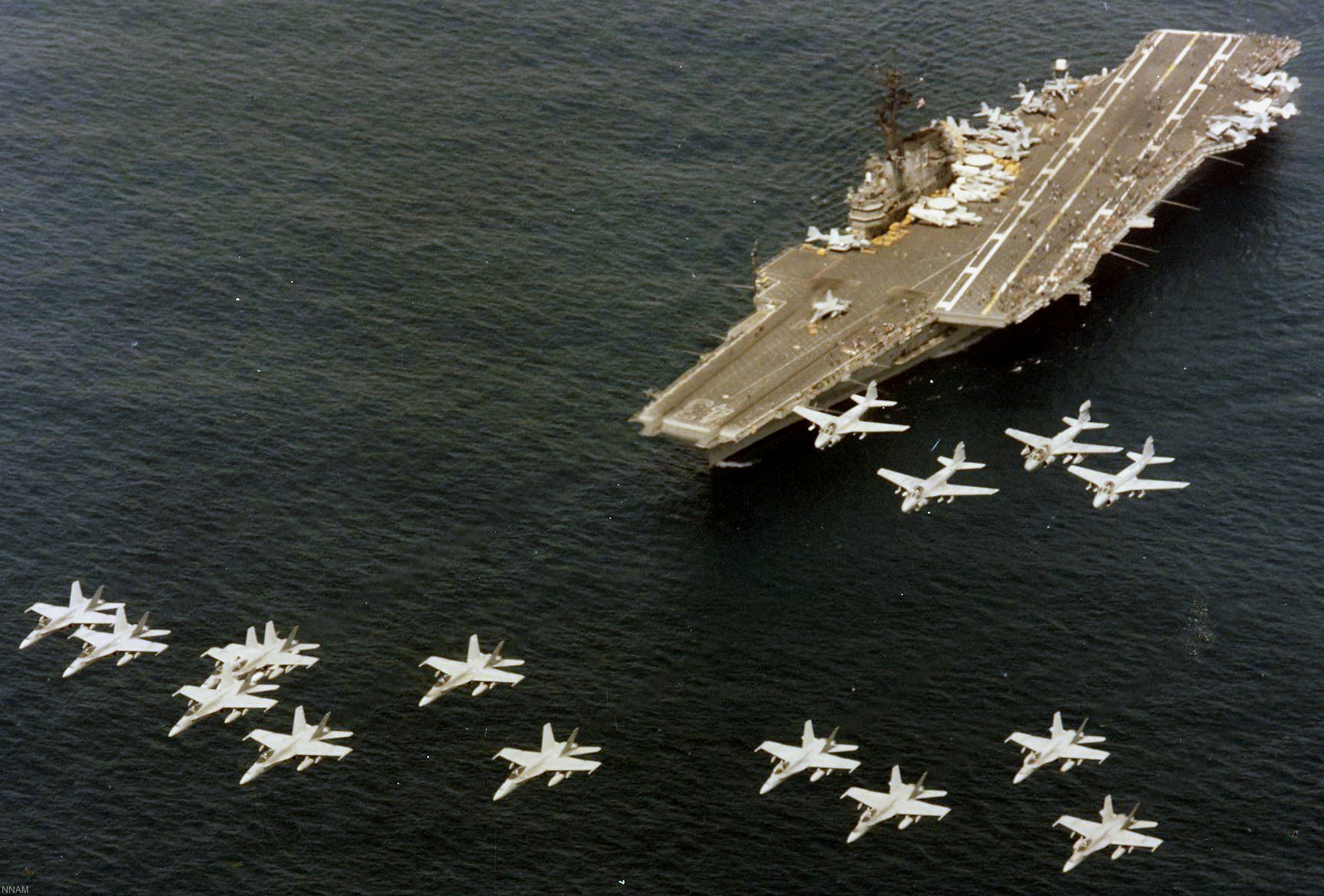 with Carrier Air Wing 13 (CVW-13) embarked - April 1987 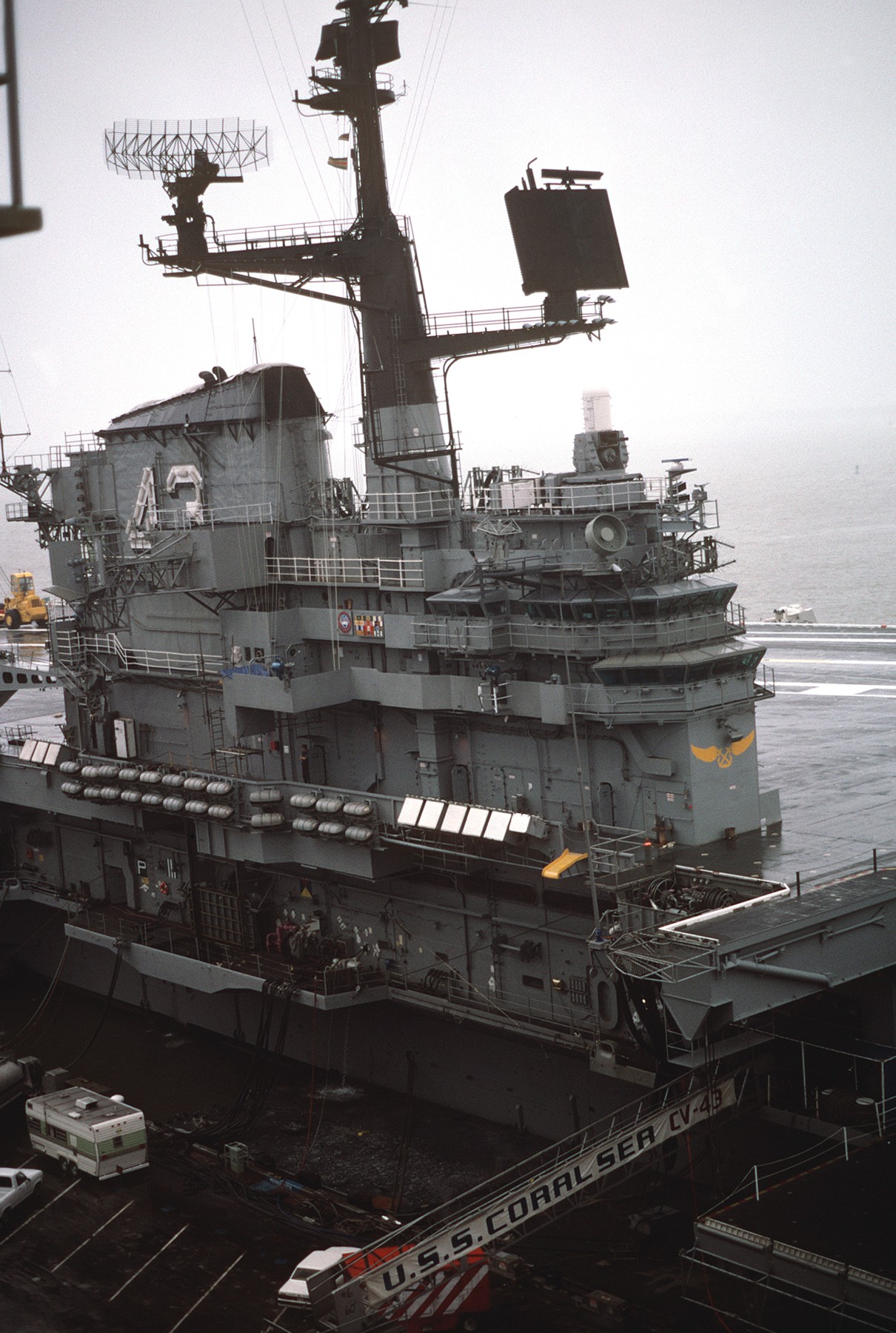 Naval Station Norfolk, Virginia - April 1987  Naval Station Norfolk, Virginia - January 1987 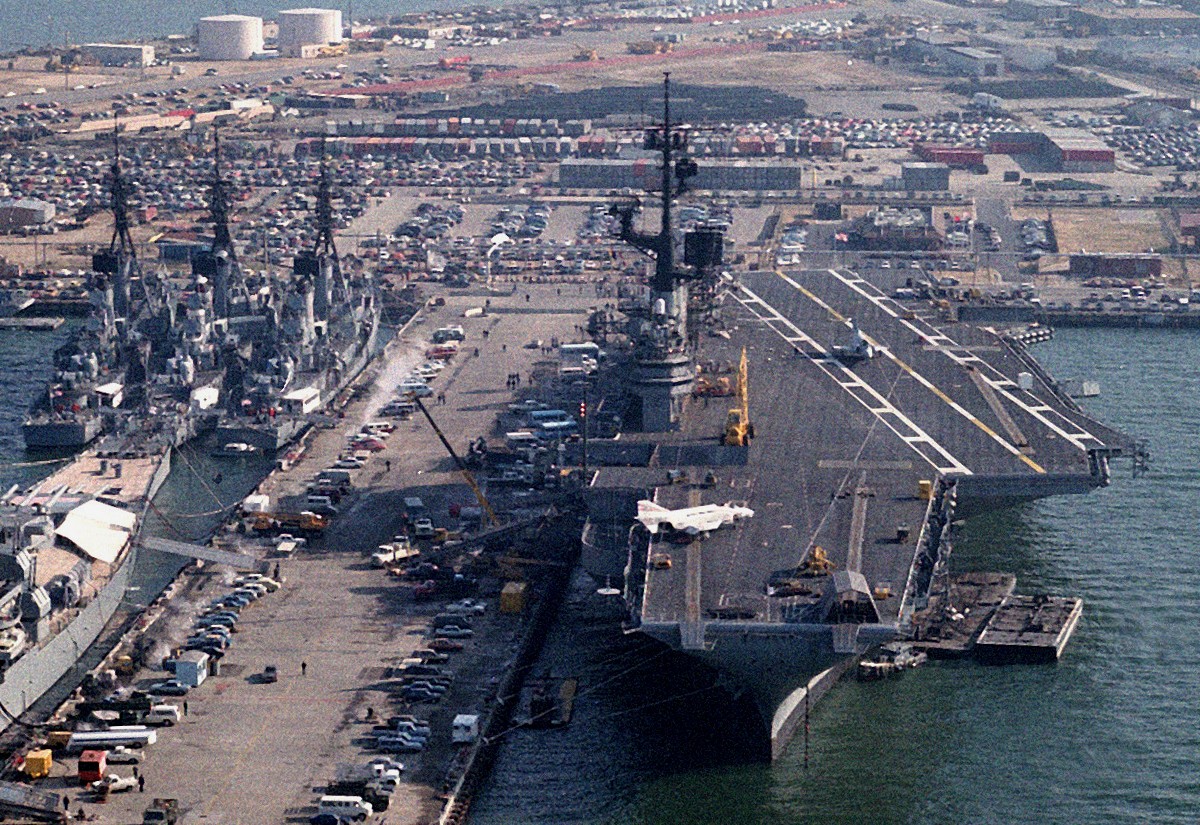 Naval Station Norfolk, Virginia - January 1987 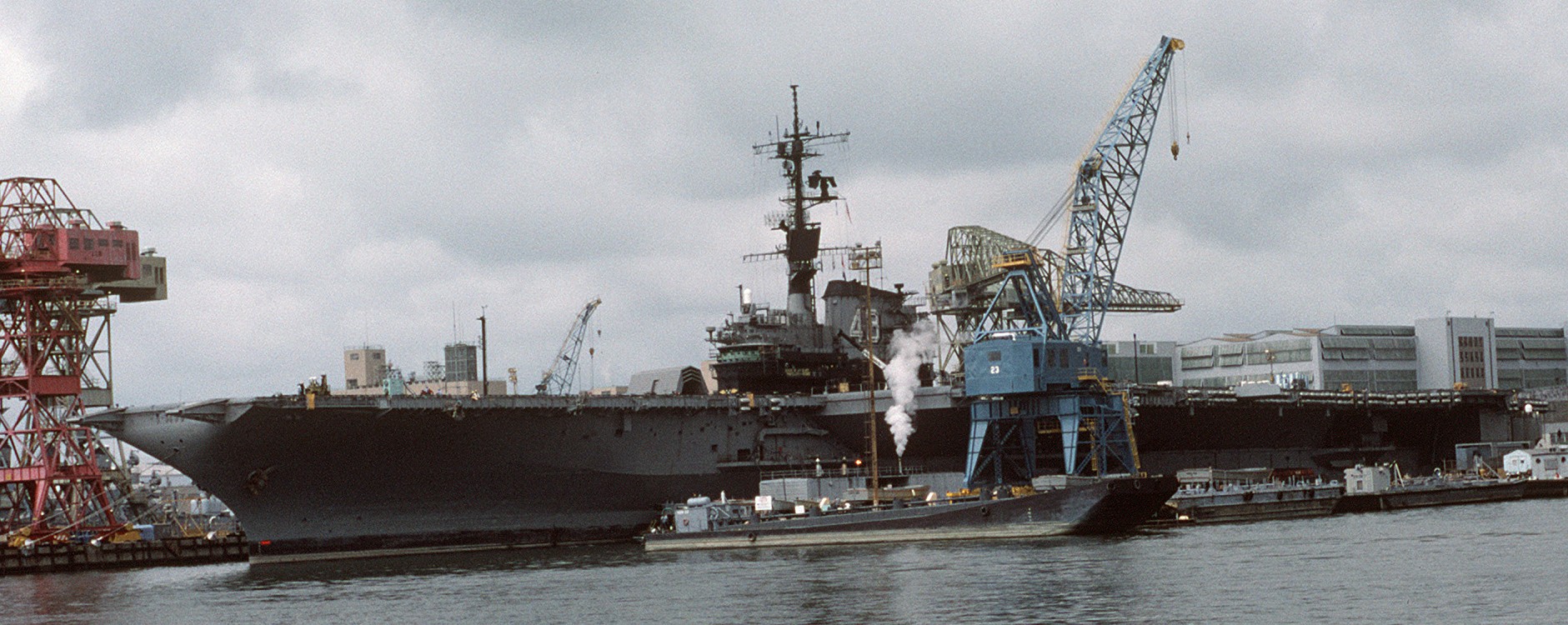 Naval Station Norfolk, Virginia - August 1986 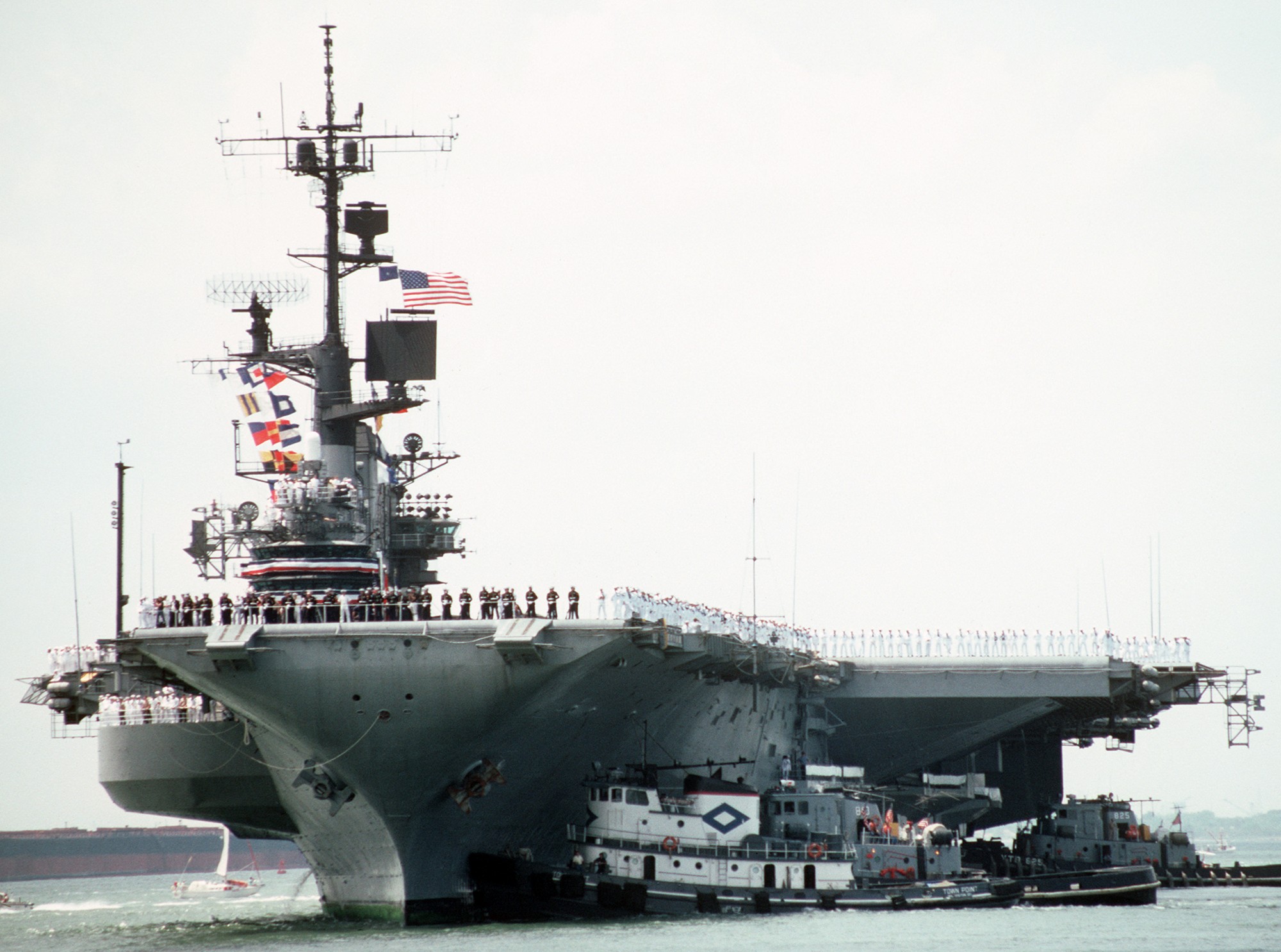 returning to Norfolk, Virginia - May 1986 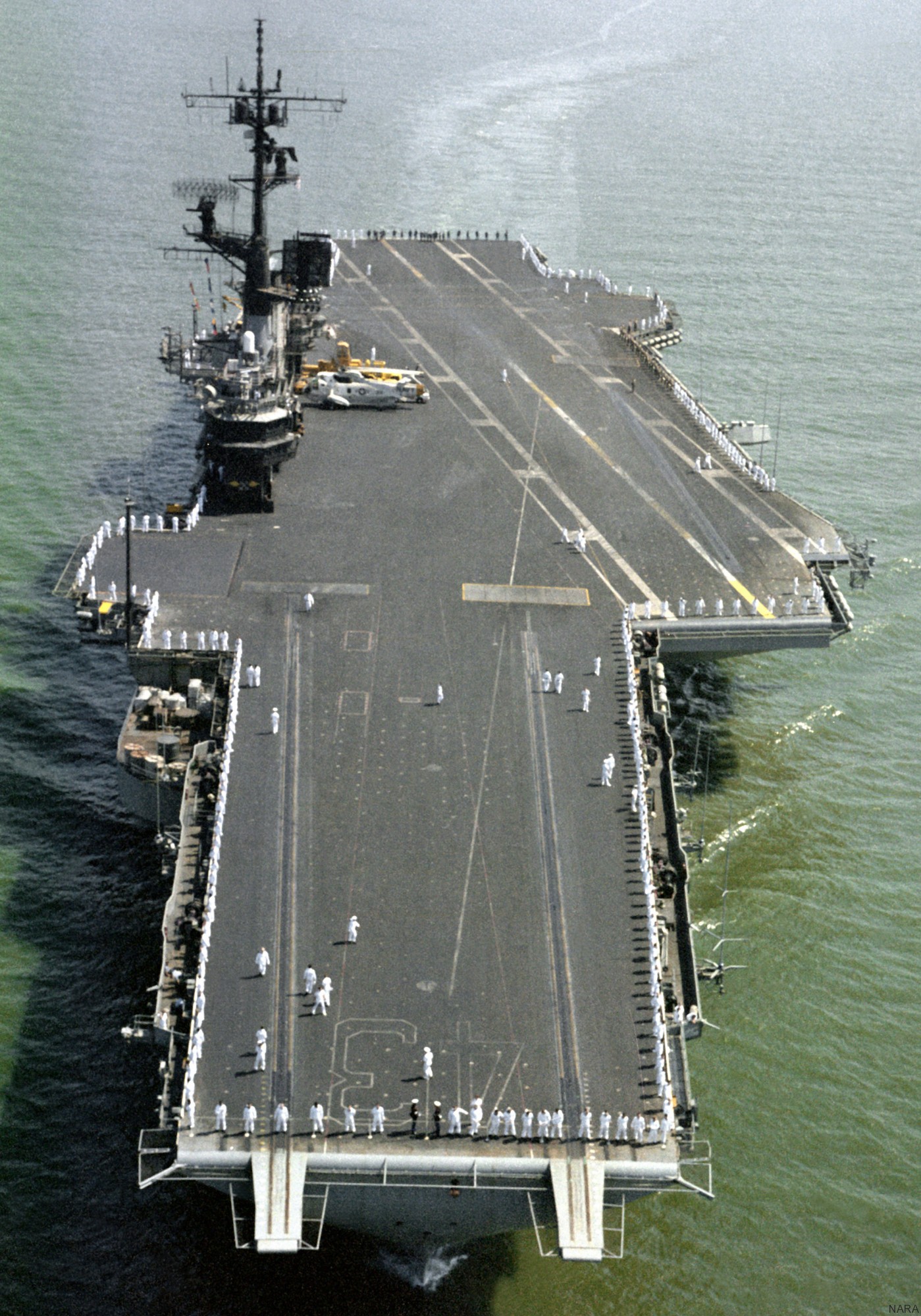 returning to Norfolk, Virginia - May 1986 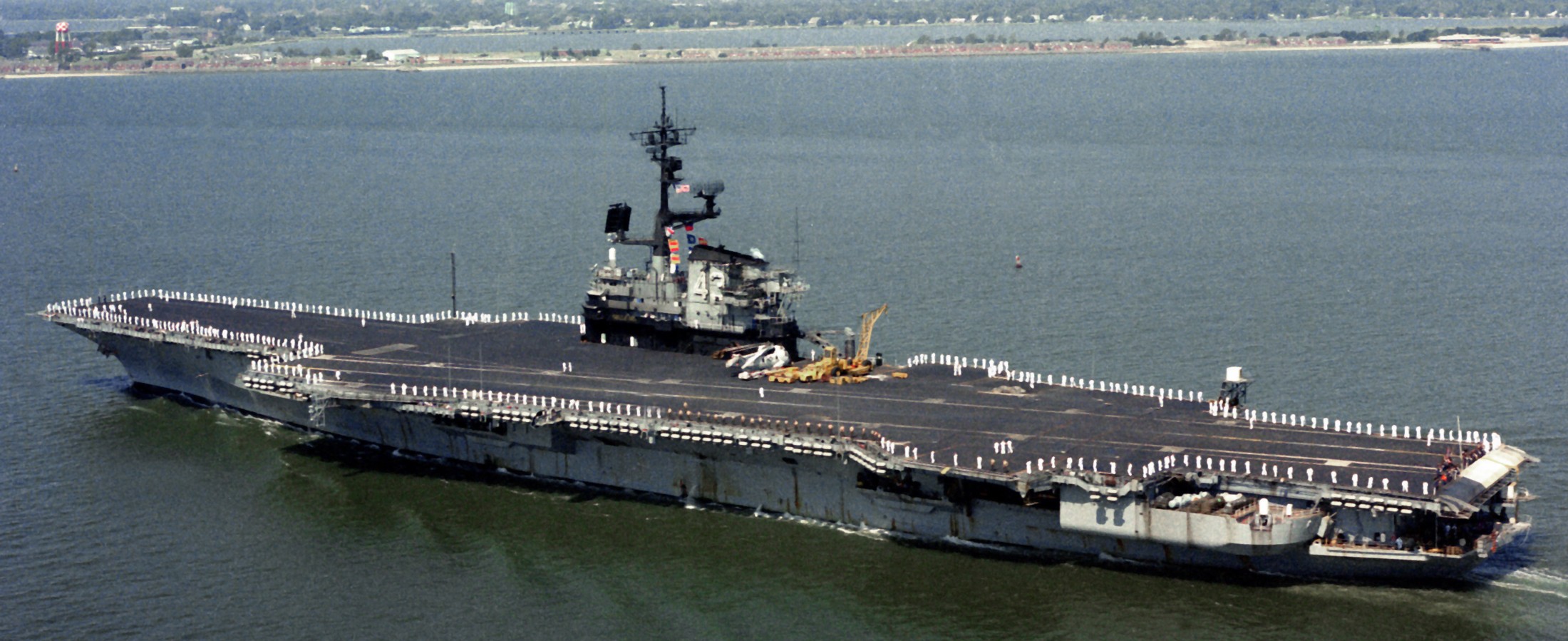 returning to Norfolk, Virginia - May 1986  returning to Norfolk, Virginia - May 1986 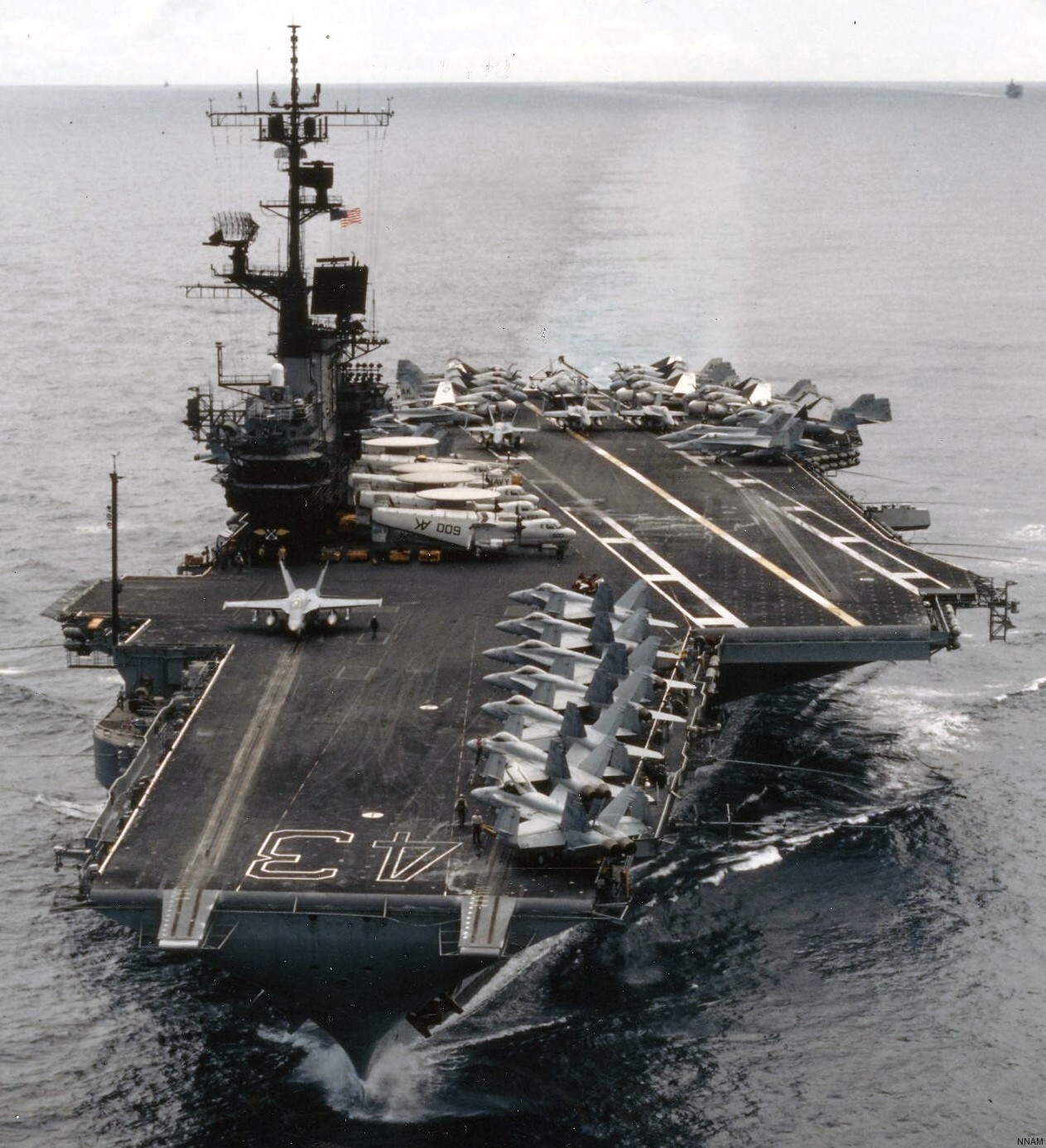 with Carrier Air Wing 13 (CVW-13) embarked - Mediterranean Sea - 1986 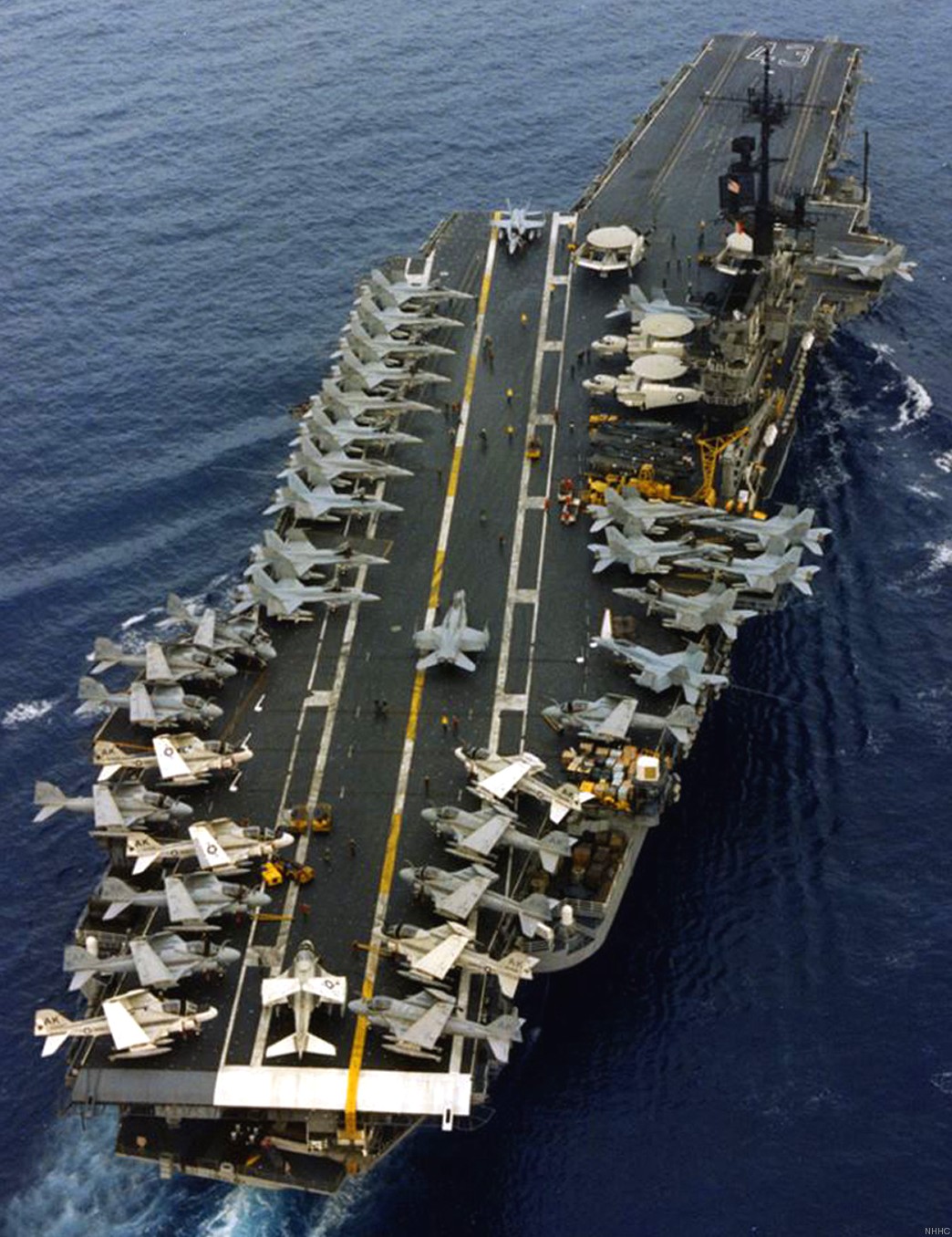 with Carrier Air Wing 13 (CVW-13) embarked - Mediterranean Sea - 1986 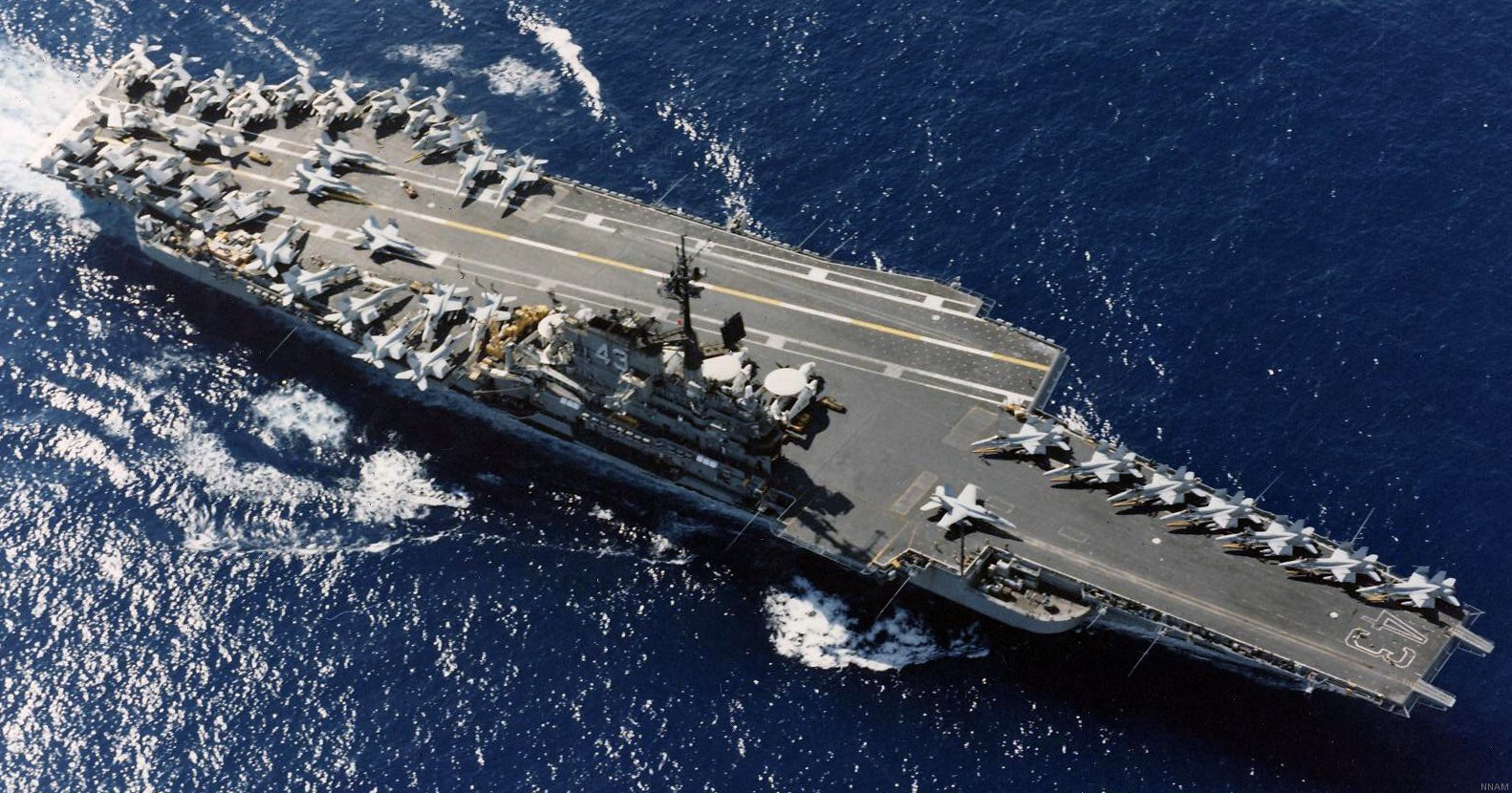 with Carrier Air Wing 13 (CVW-13) embarked - Mediterranean Sea - May 1986 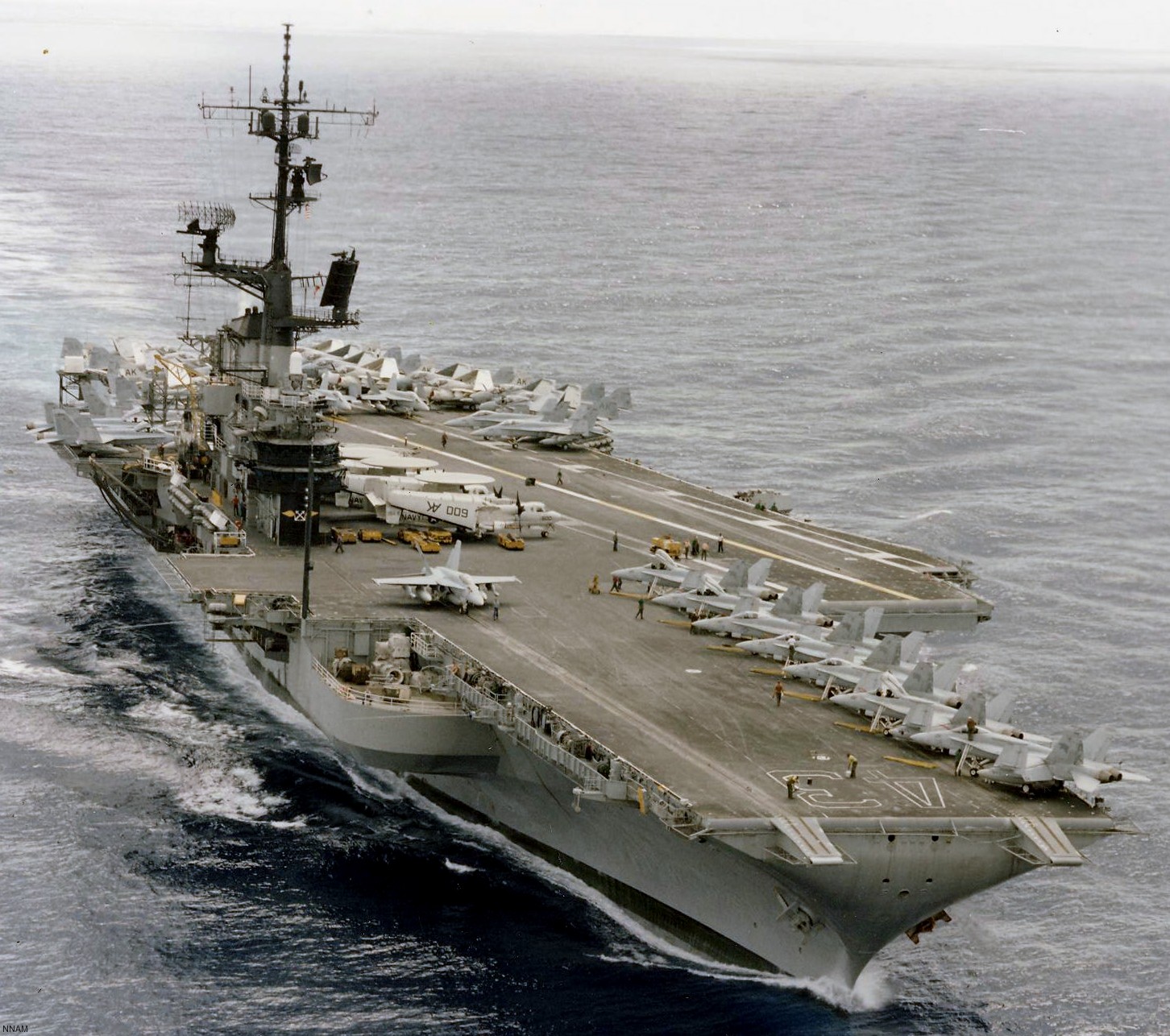 with Carrier Air Wing 13 (CVW-13) embarked - Mediterranean Sea - May 1986 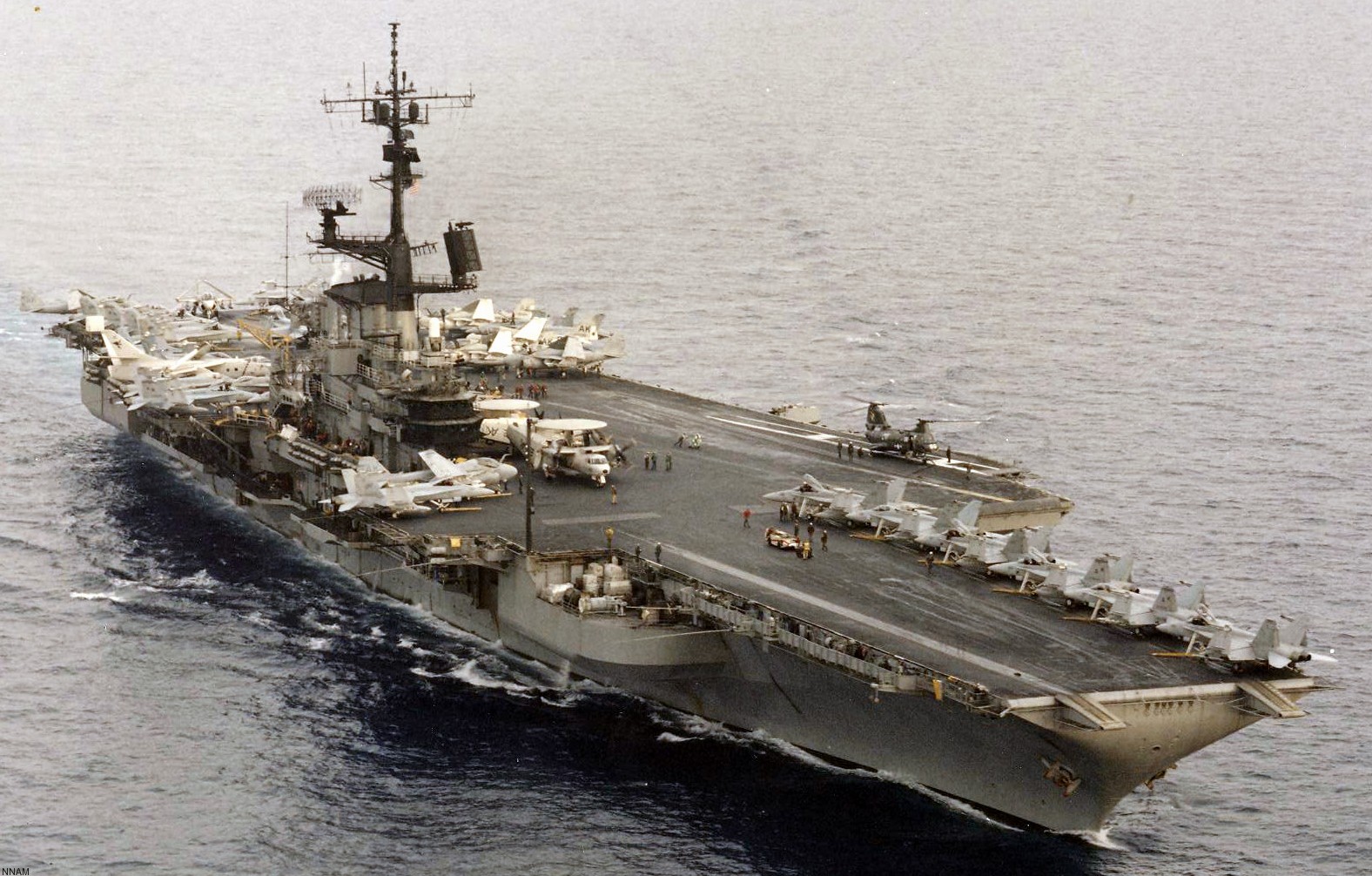 with Carrier Air Wing 13 (CVW-13) embarked - Mediterranean Sea - May 1986 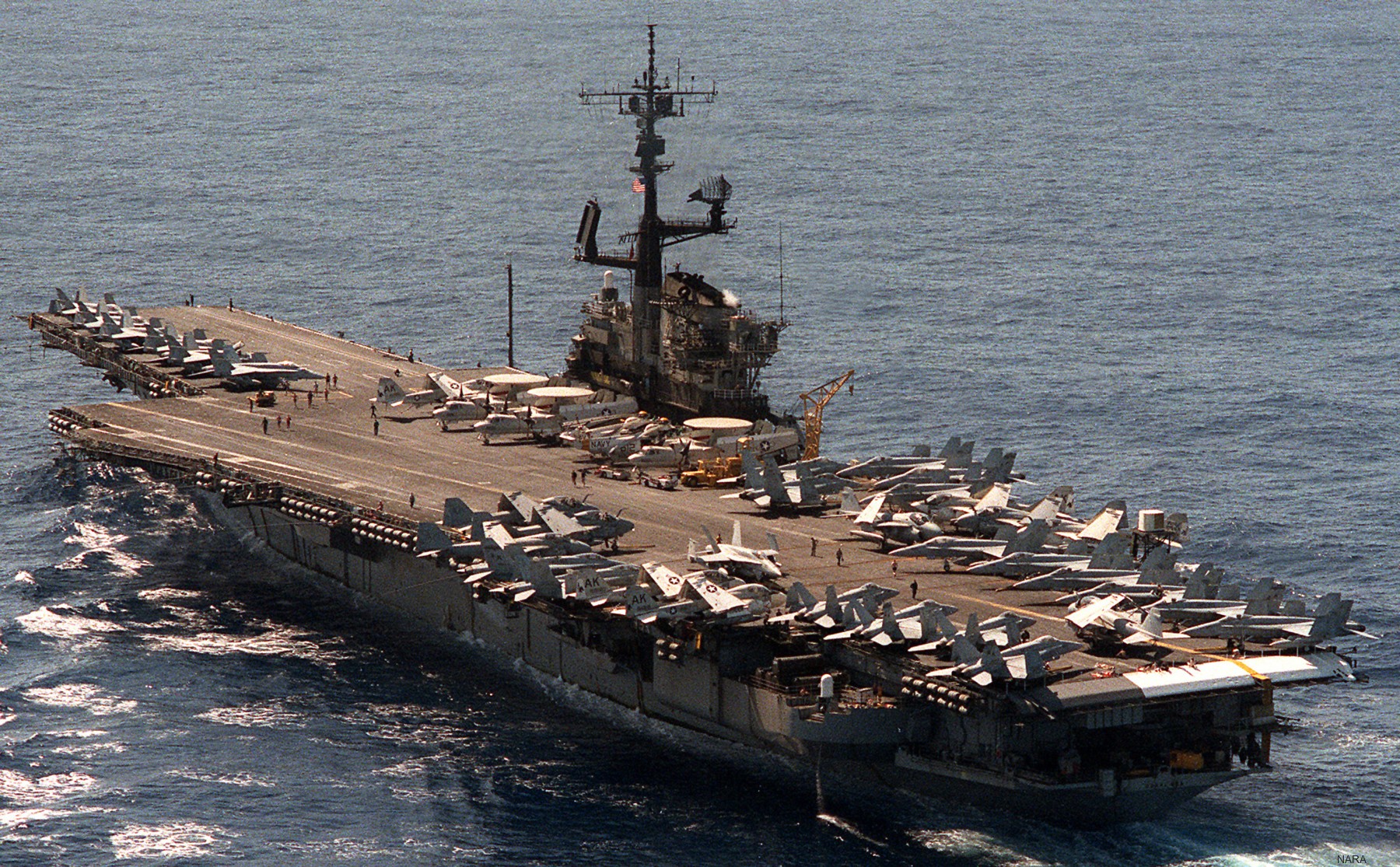 with Carrier Air Wing 13 (CVW-13) embarked - Mediterranean Sea - May 1986 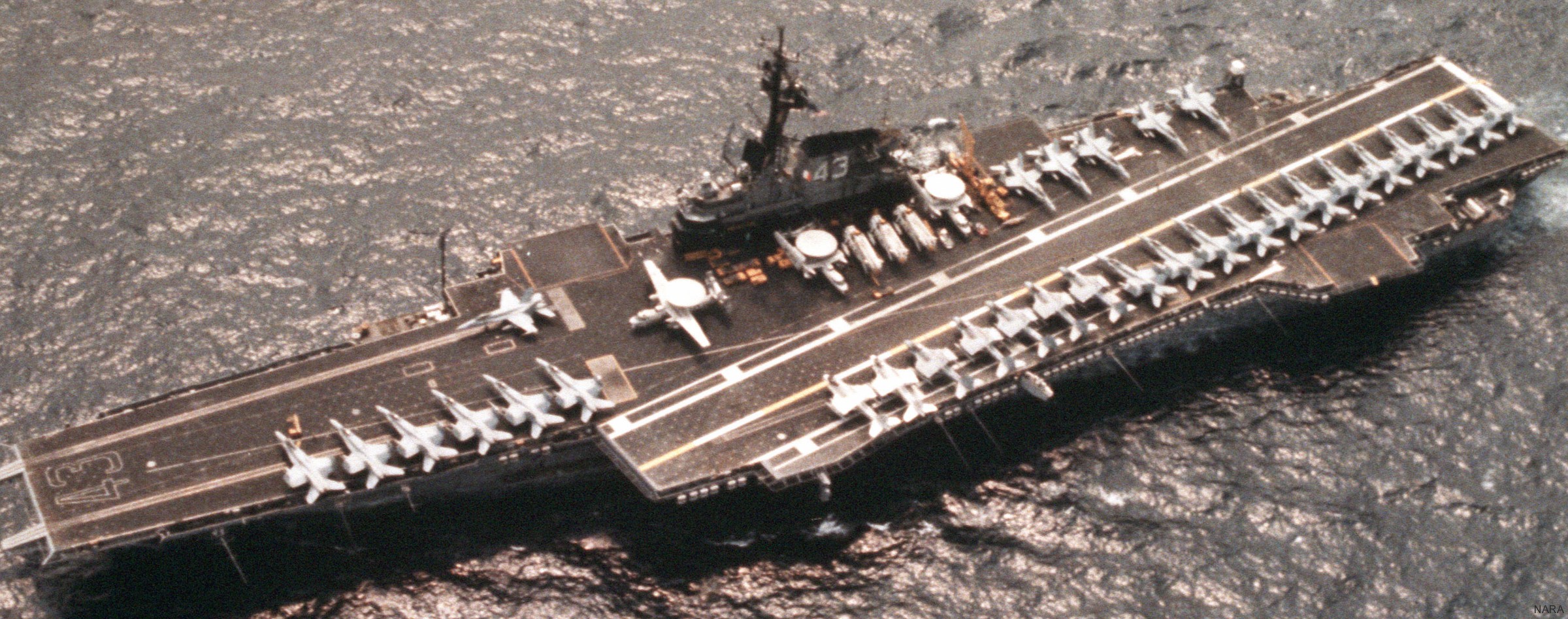 with Carrier Air Wing 13 (CVW-13) embarked - Mediterranean Sea - 1986 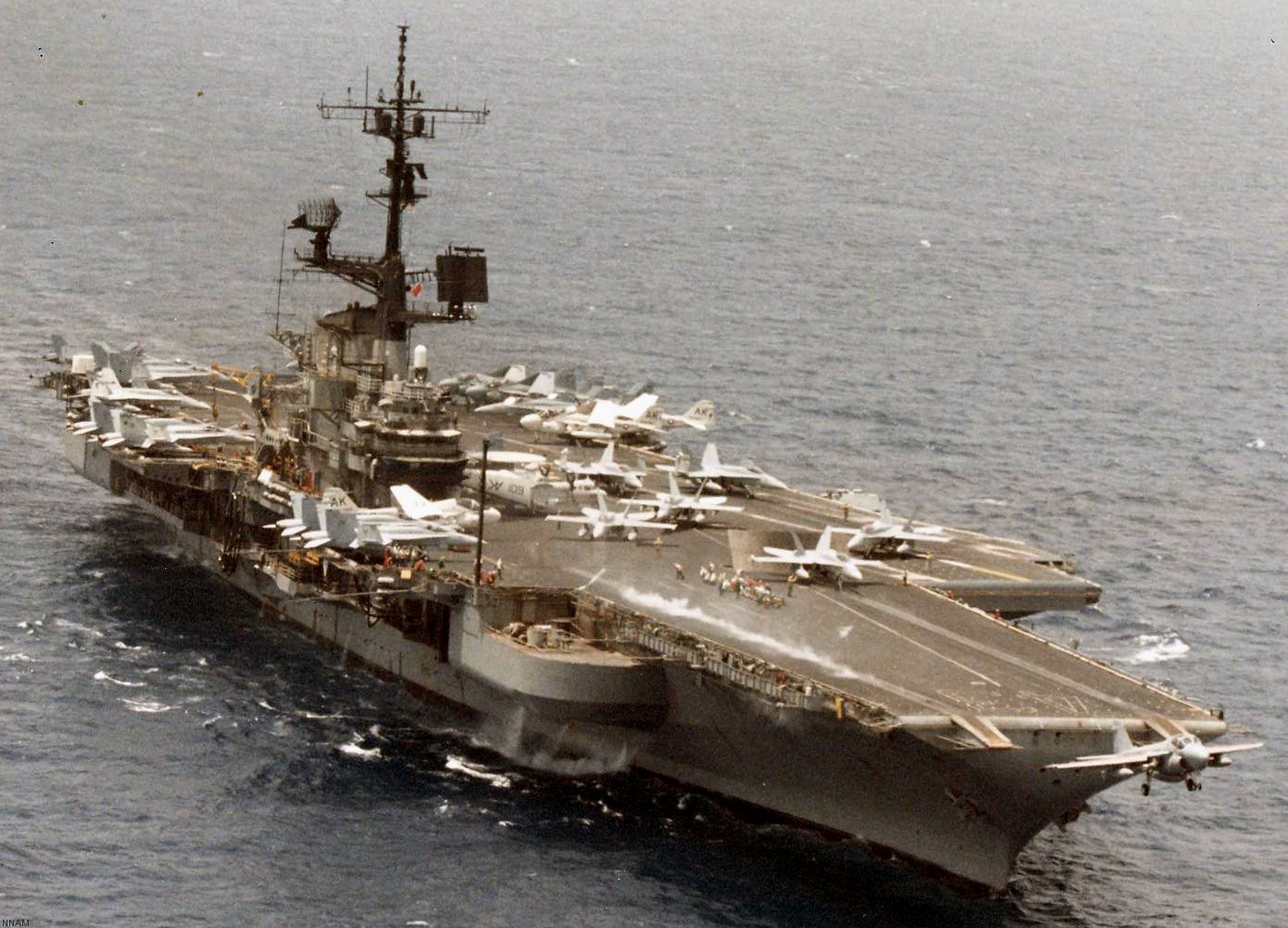 with Carrier Air Wing 13 (CVW-13) embarked - Mediterranean Sea - 1986 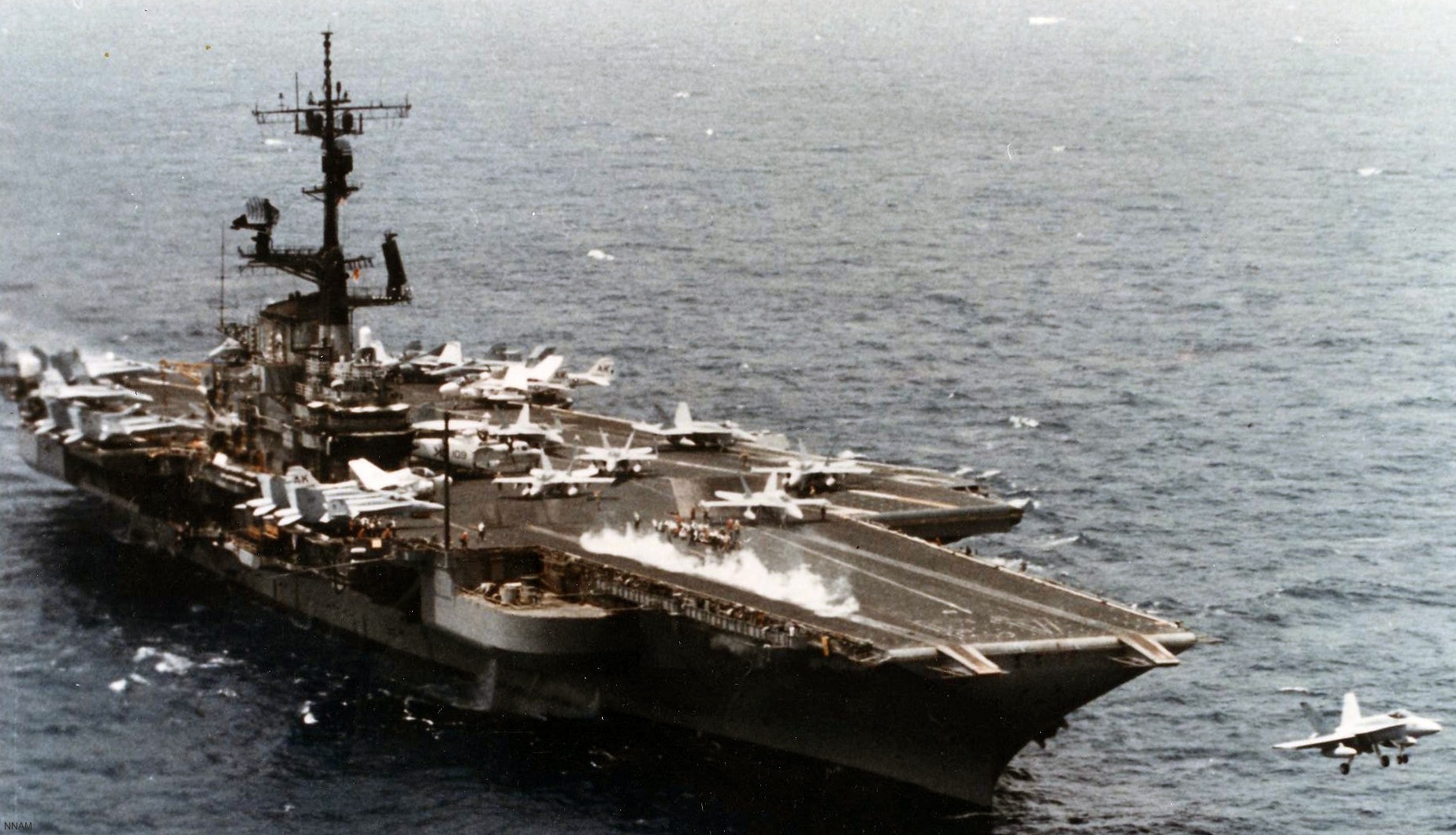 with Carrier Air Wing 13 (CVW-13) embarked - Mediterranean Sea - 1986 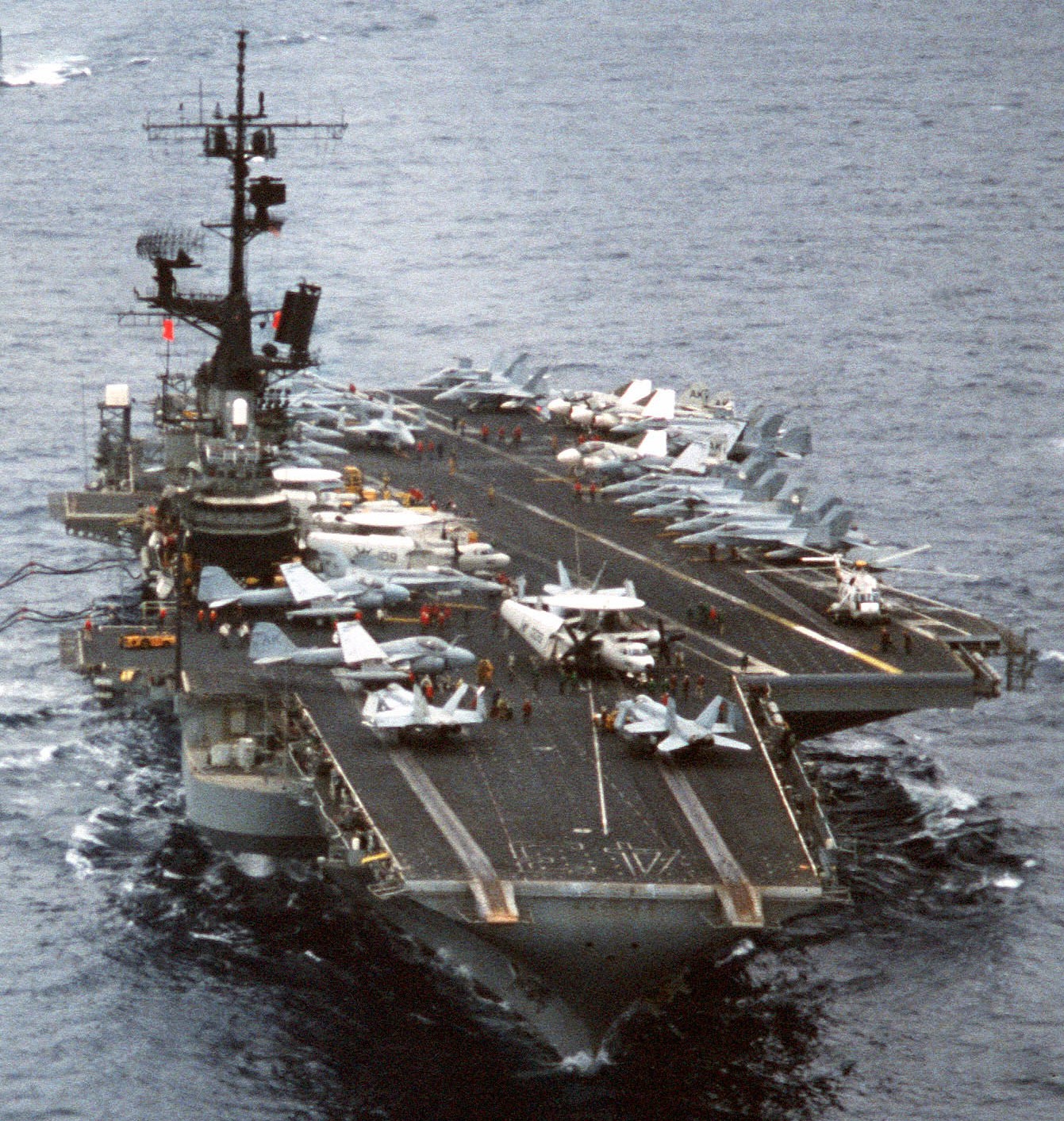 with Carrier Air Wing 13 (CVW-13) embarked - Mediterranean Sea - 1986  with Carrier Air Wing 13 (CVW-13) embarked - Mediterranean Sea - 1986  with Carrier Air Wing 13 (CVW-13) embarked - Mediterranean Sea - 1986  with Carrier Air Wing 13 (CVW-13) embarked - Mediterranean Sea - 1986 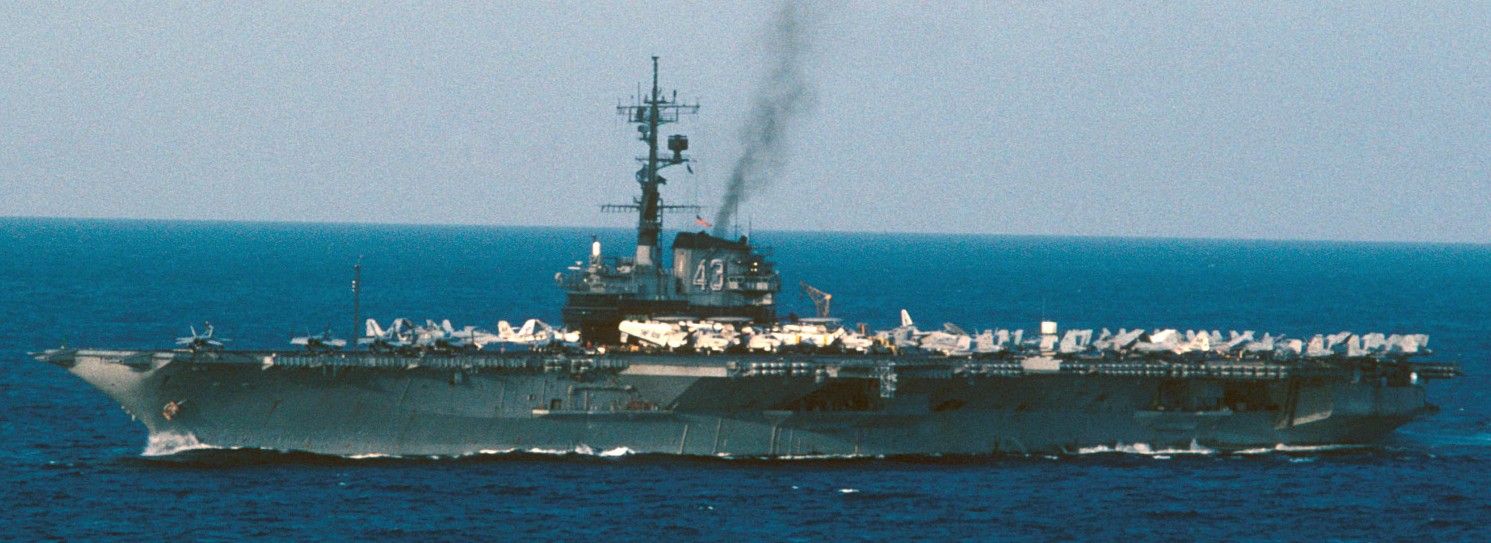 with Carrier Air Wing 13 (CVW-13) embarked - Mediterranean Sea - 1986 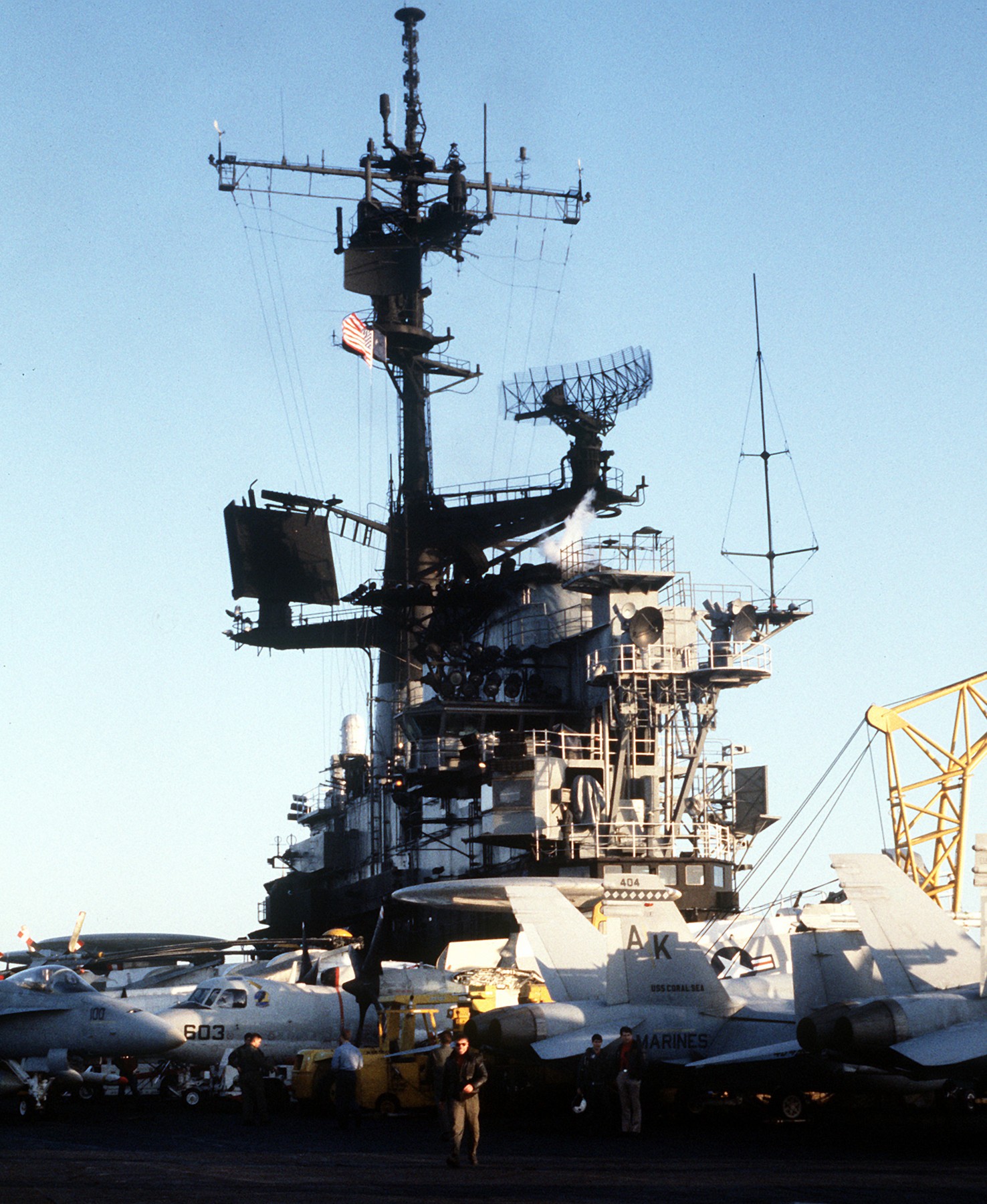 with Carrier Air Wing 13 (CVW-13) embarked - Mediterranean Sea - 1986 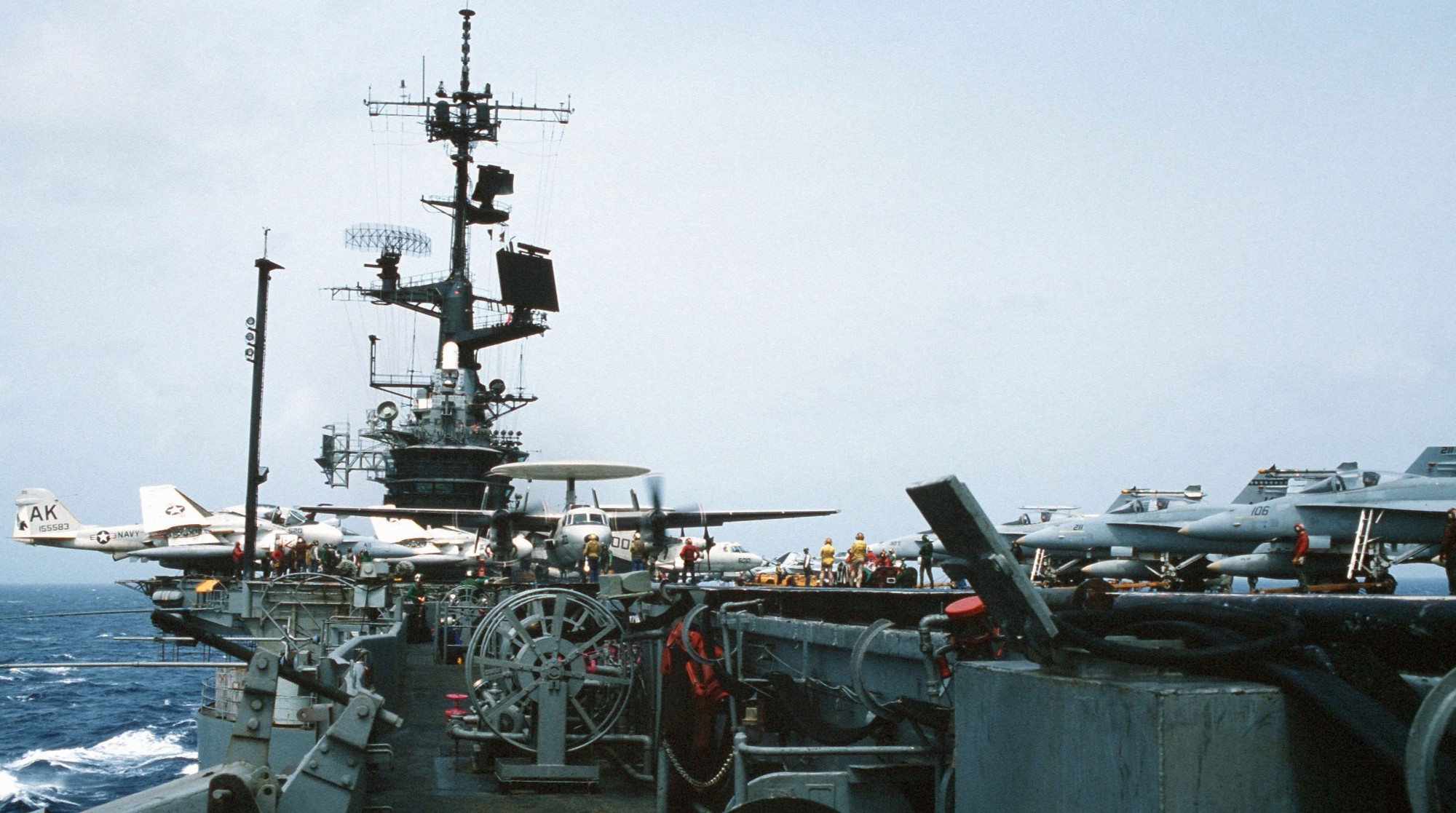 with Carrier Air Wing 13 (CVW-13) embarked - Mediterranean Sea - 1986 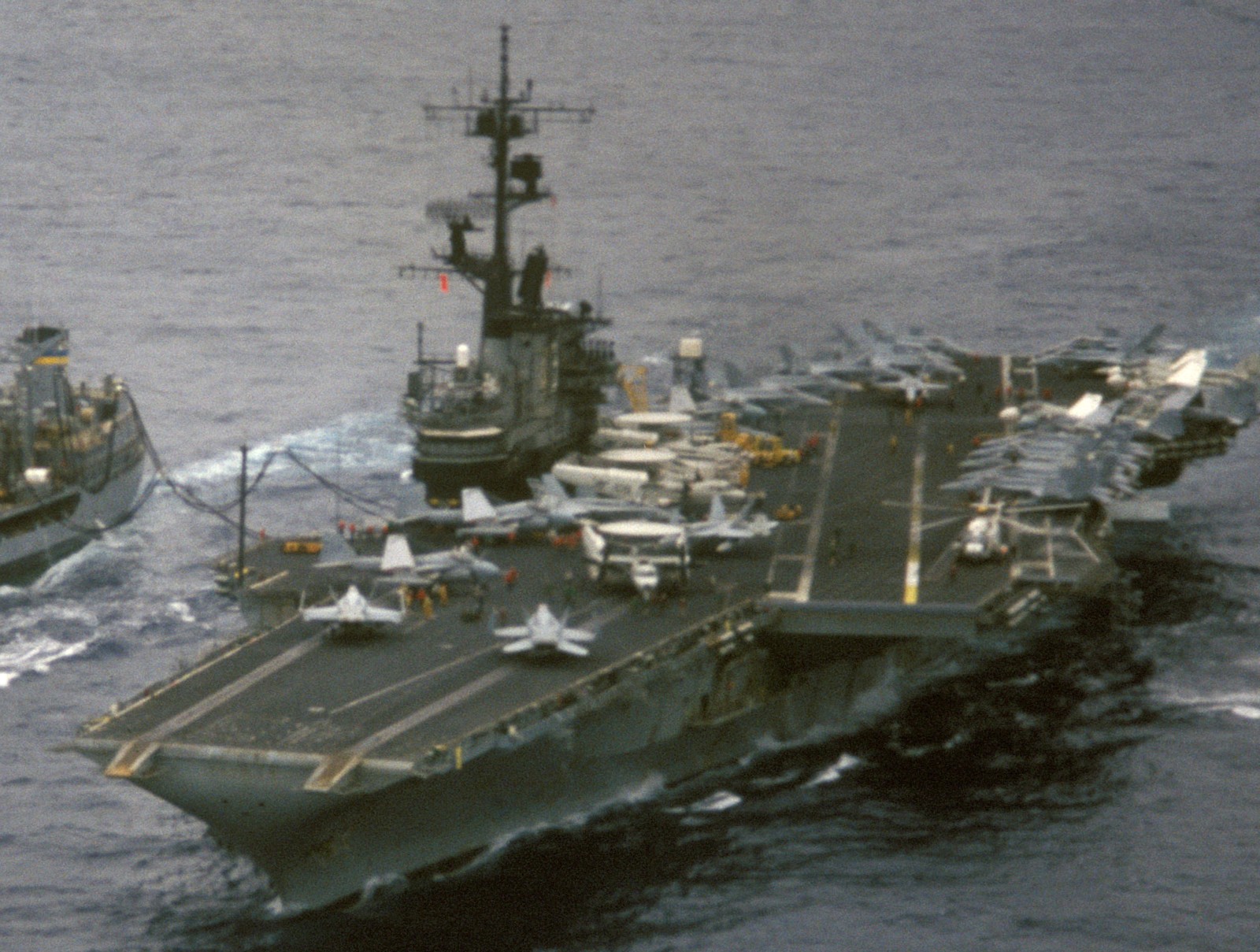 with Carrier Air Wing 13 (CVW-13) embarked - Mediterranean Sea - 1986  with Carrier Air Wing 13 (CVW-13) embarked - off Lybia - Mediterranean Sea - 1986 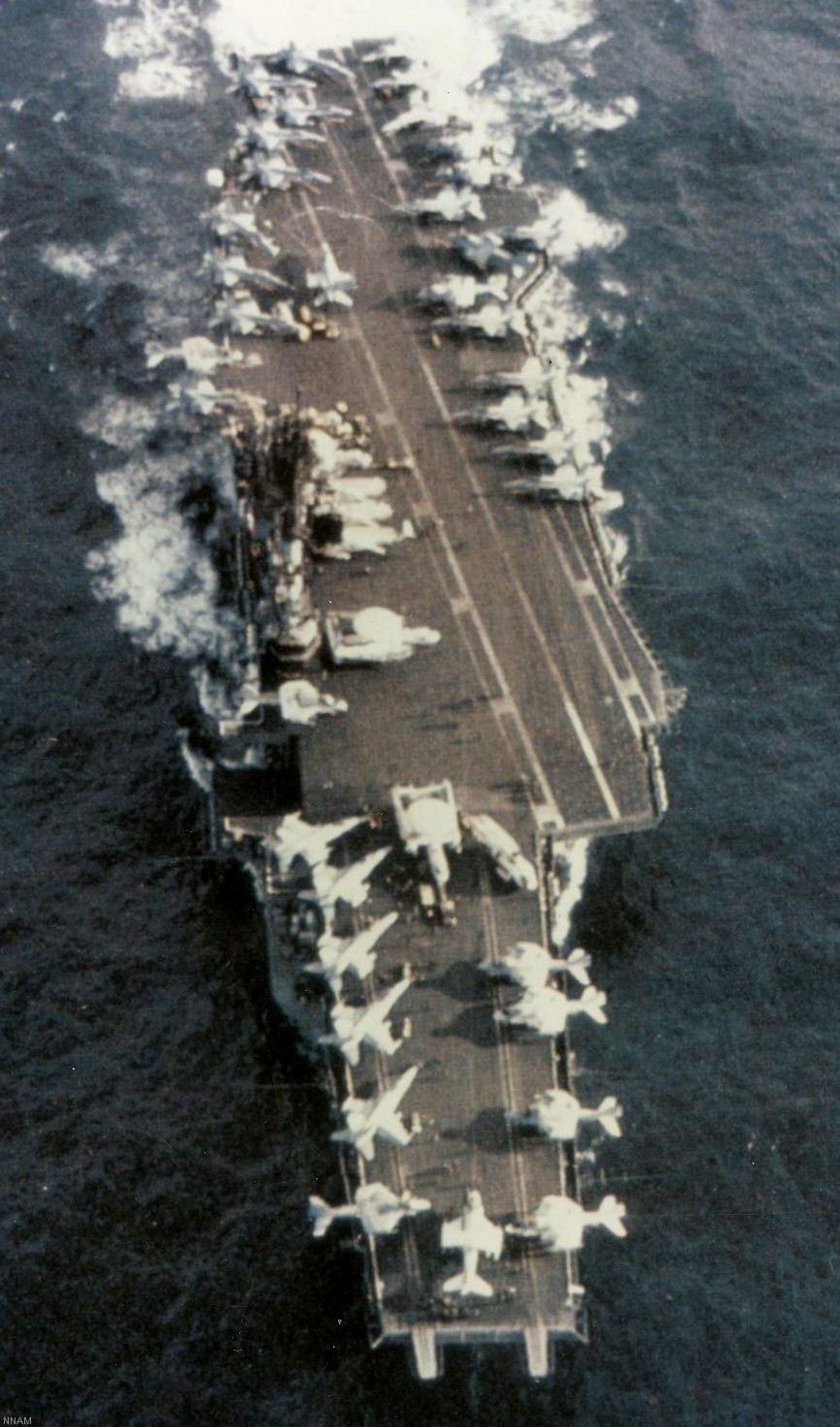 with Carrier Air Wing 13 (CVW-13) embarked - Mediterranean Sea - 1986 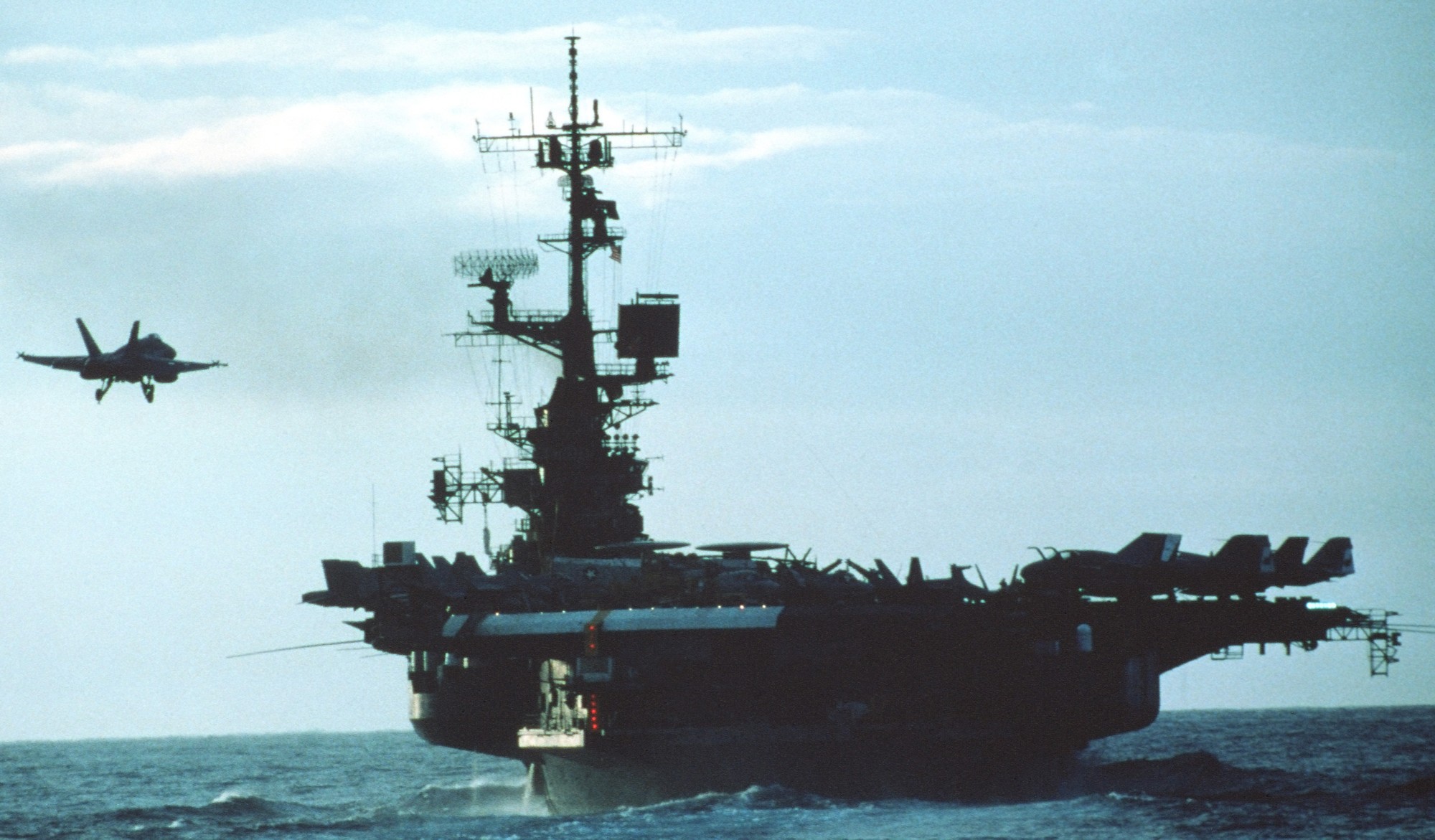 with Carrier Air Wing 13 (CVW-13) embarked - October 1985 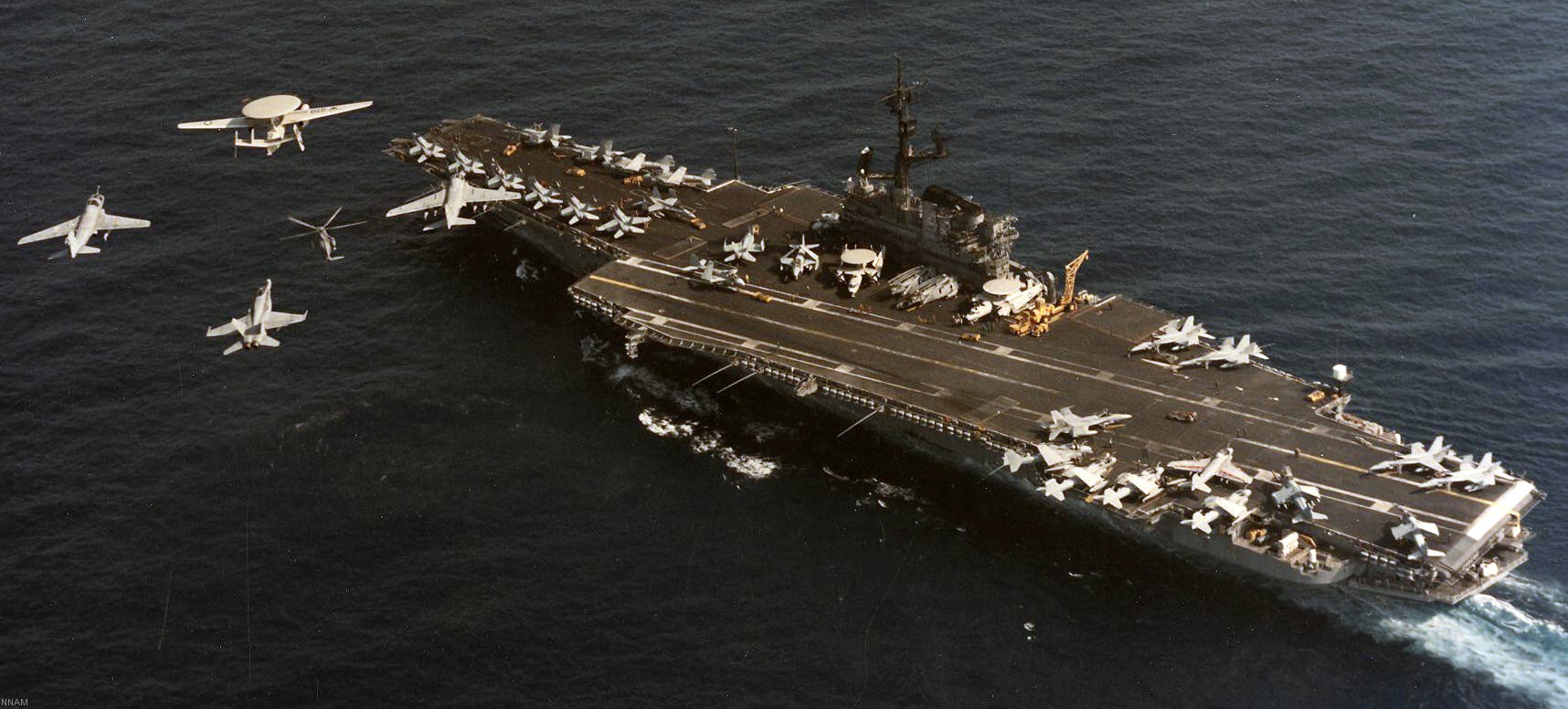 with Carrier Air Wing 13 (CVW-13) embarked - circa 1985 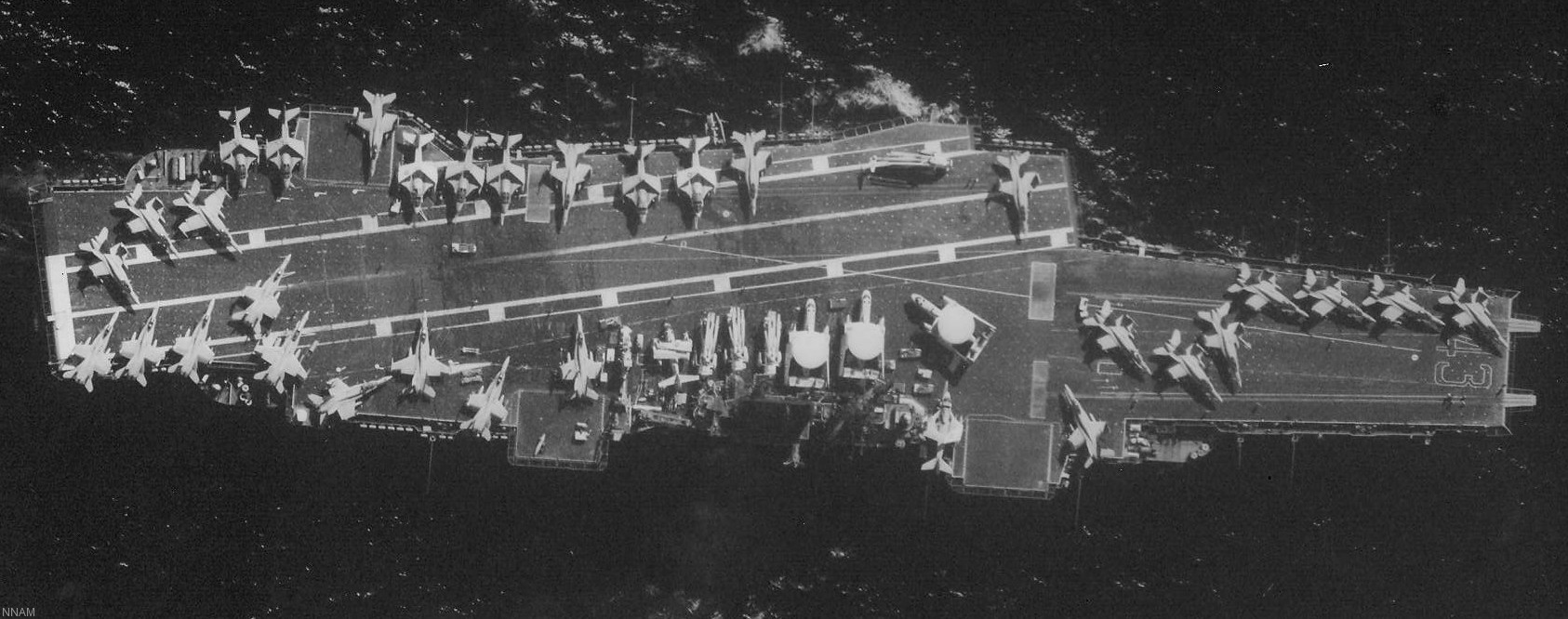 with Carrier Air Wing 13 (CVW-13) embarked - July 1985 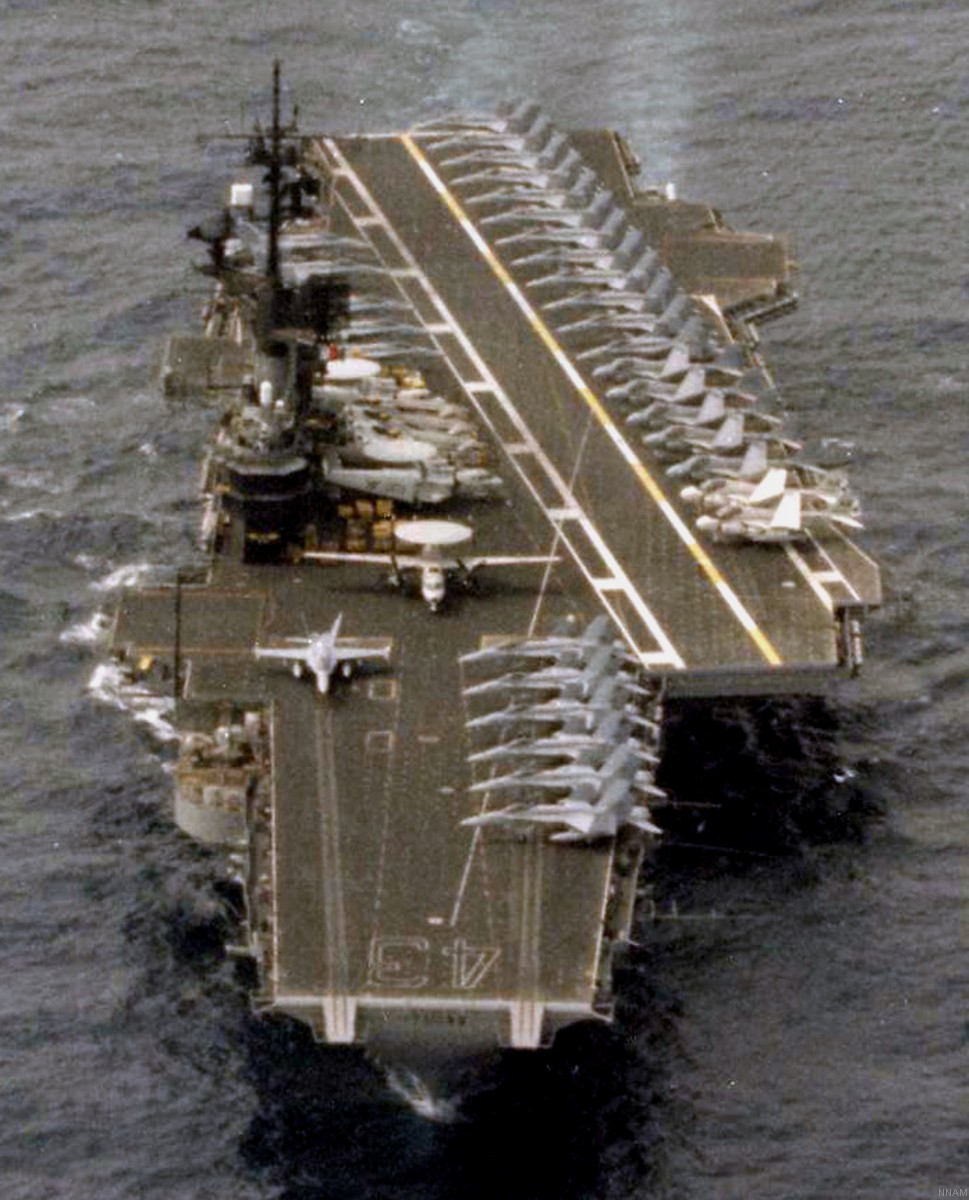 with Carrier Air Wing 13 (CVW-13) embarked - July 1985 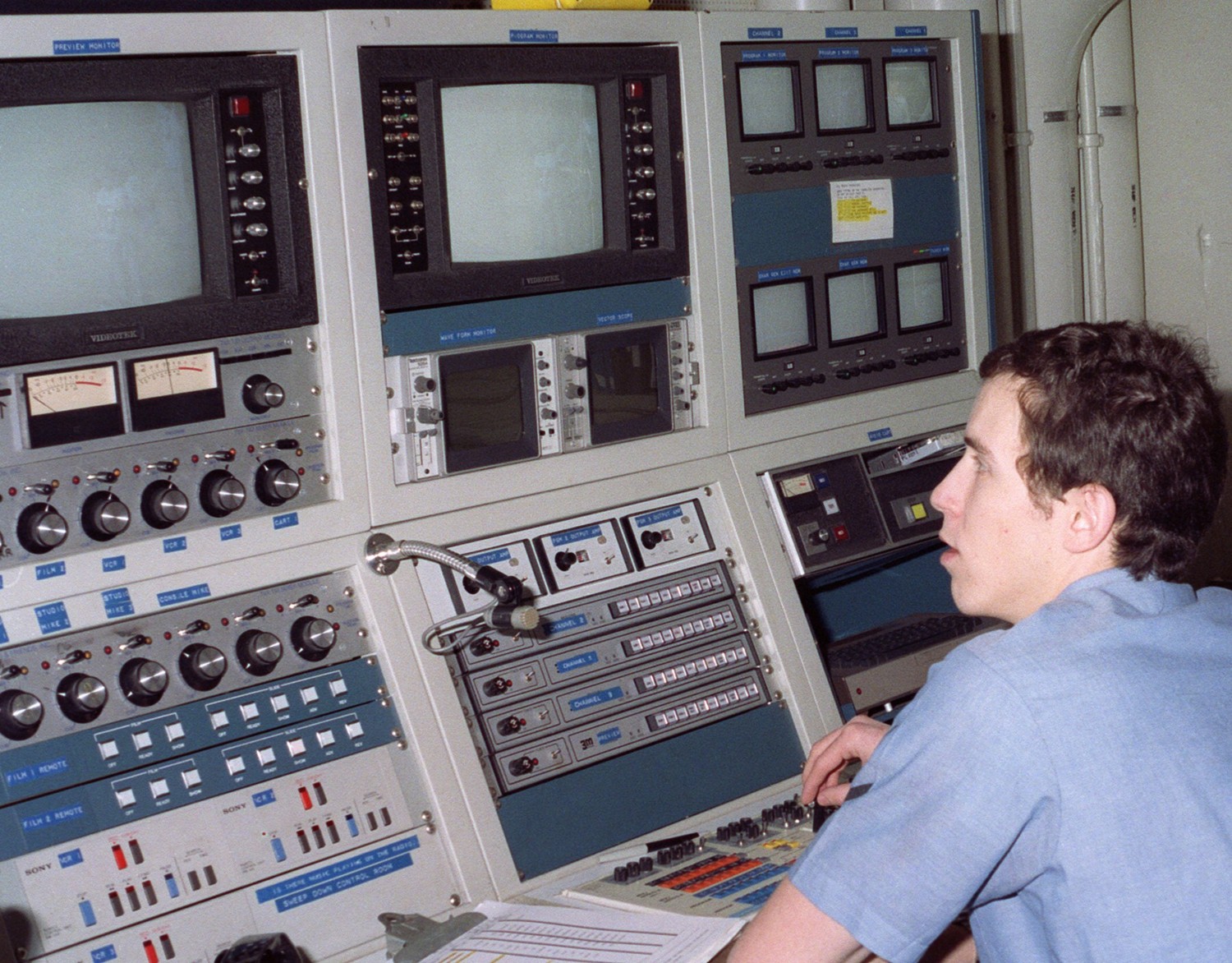 TV studio - 1985 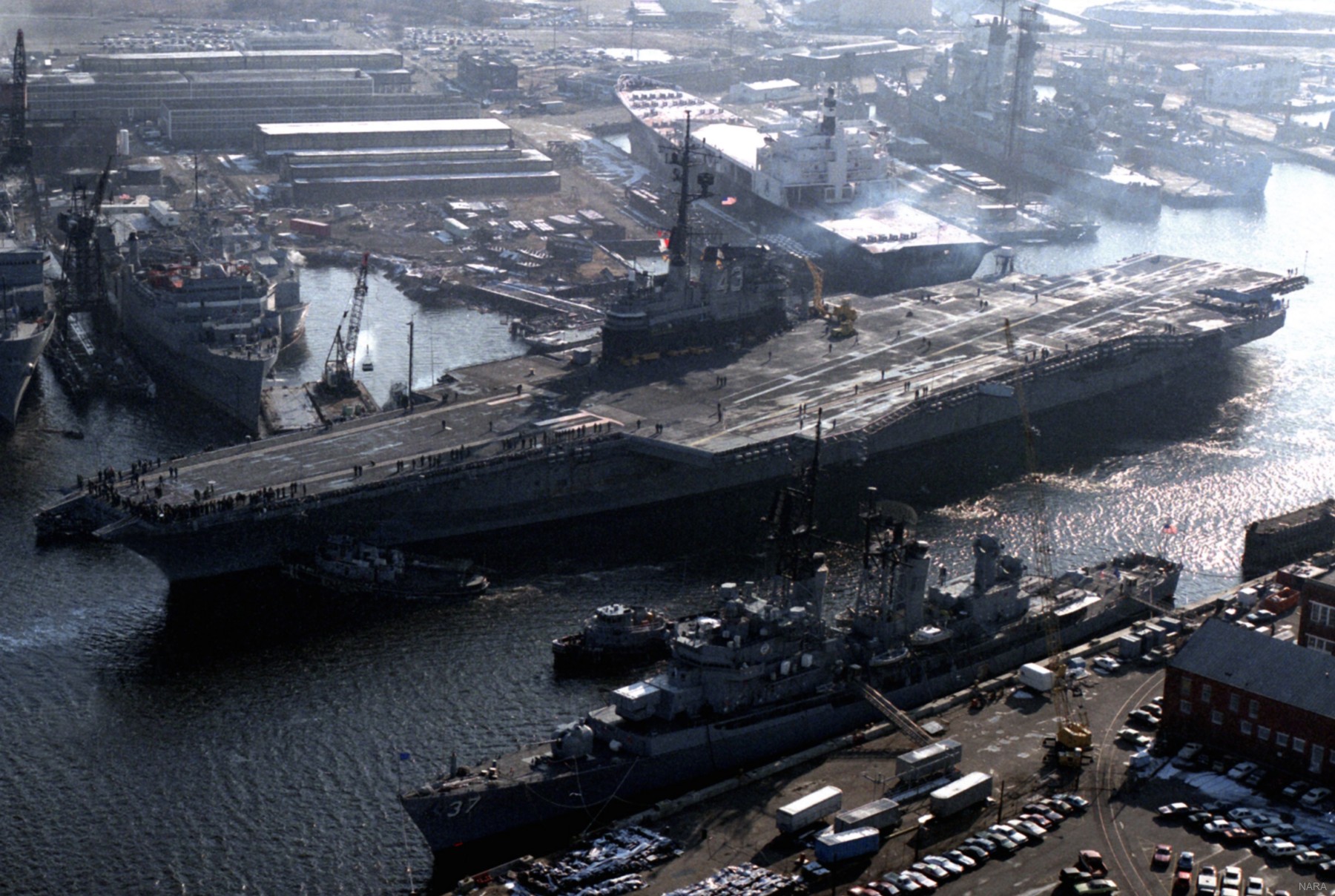 leaving Norfolk Naval Shipyard, Virginia after overhaul - 1985 March 1983 - September 1983 > world cruise - Alameda, California to Norfolk, Virginia via Suez Canal 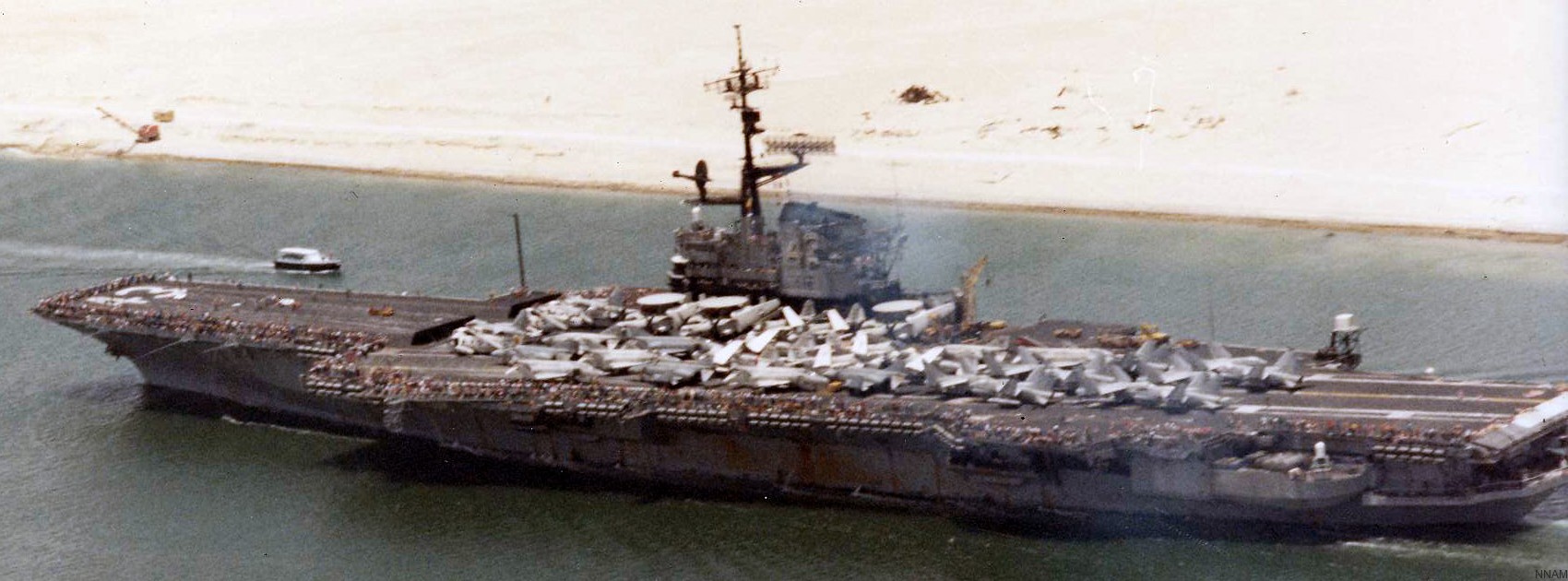 Suez Canal - 1980's 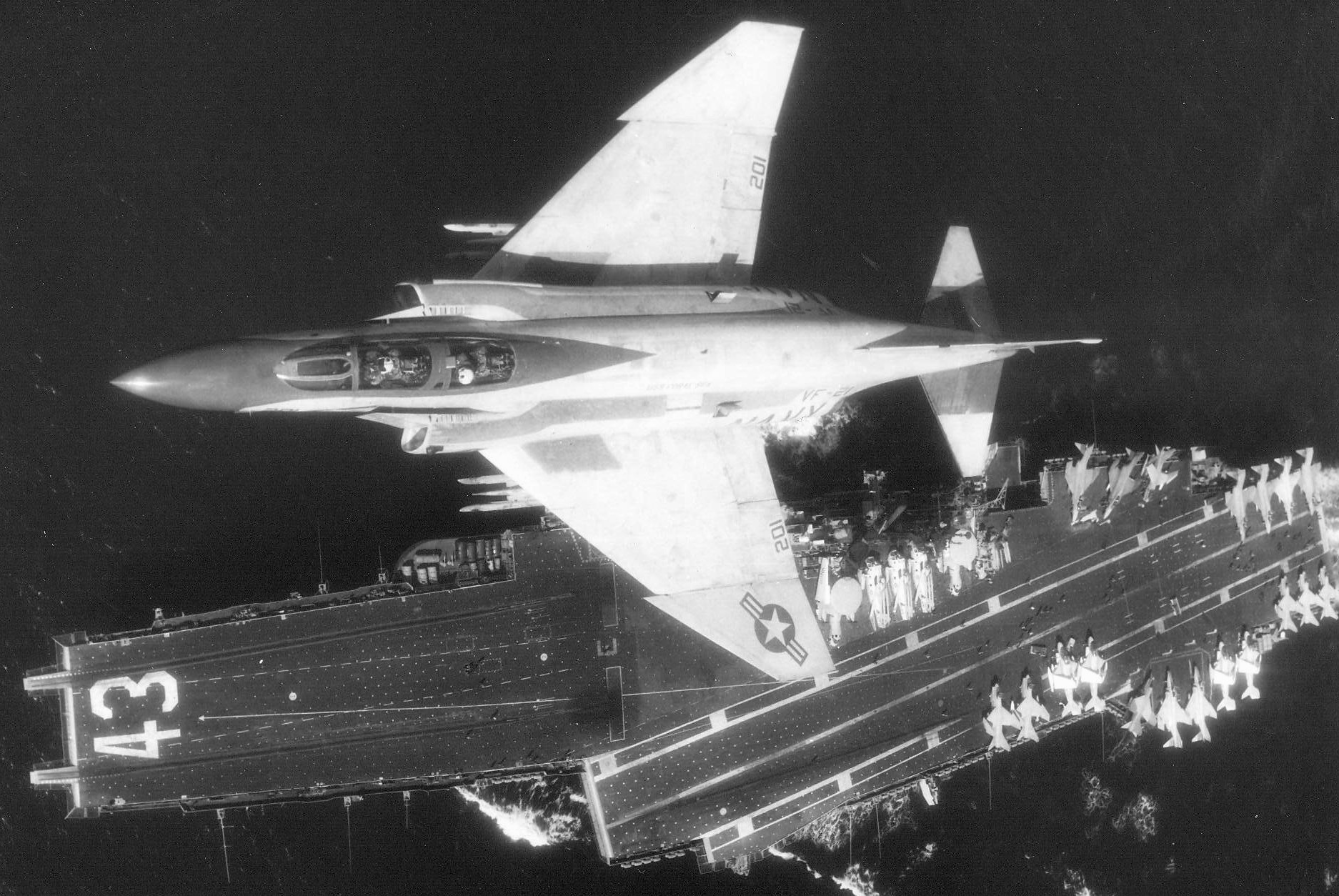 with Carrier Air Wing 14 (CVW-14) embarked - 1983 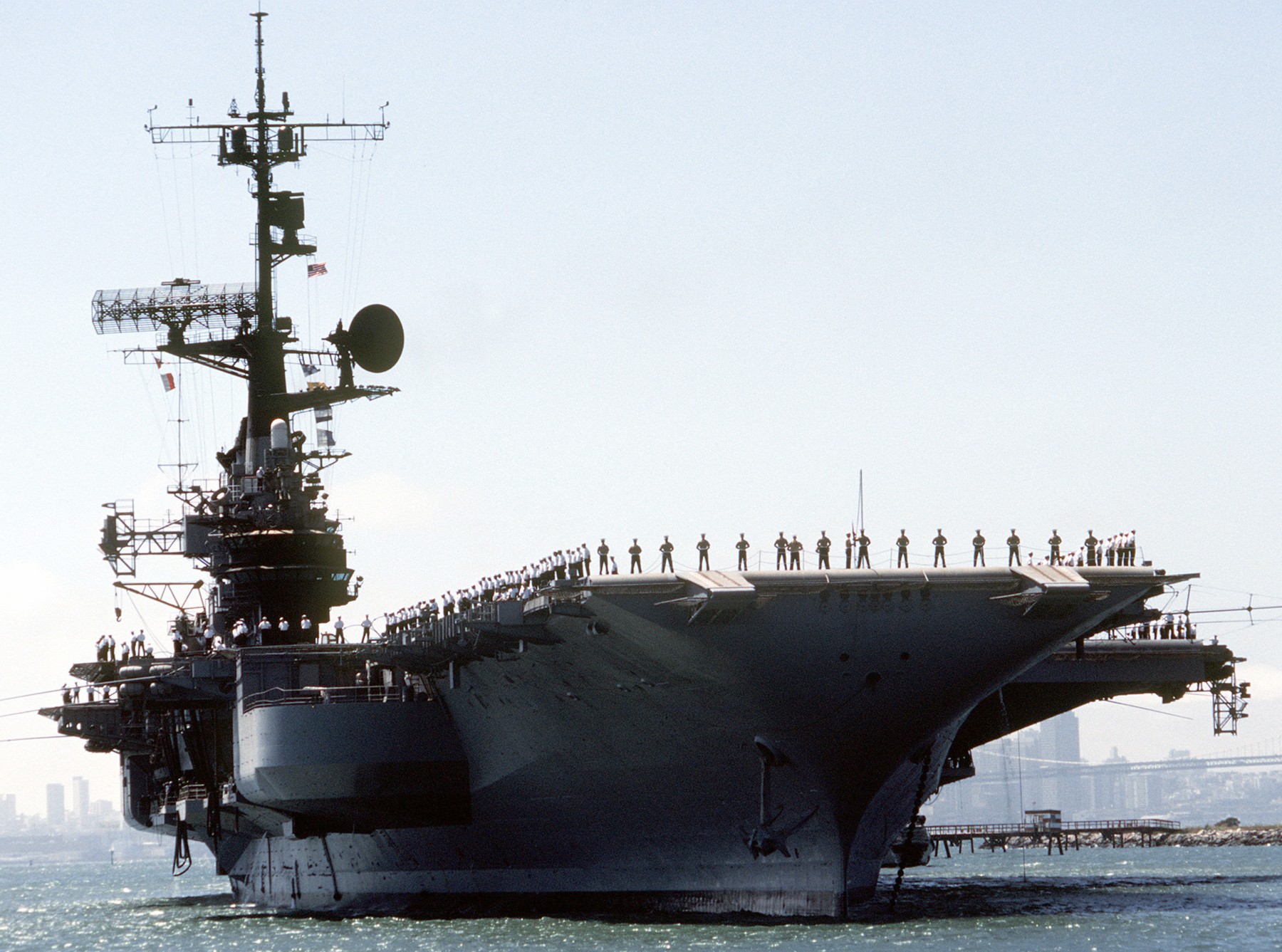 NAS Alameda, California - August 1982 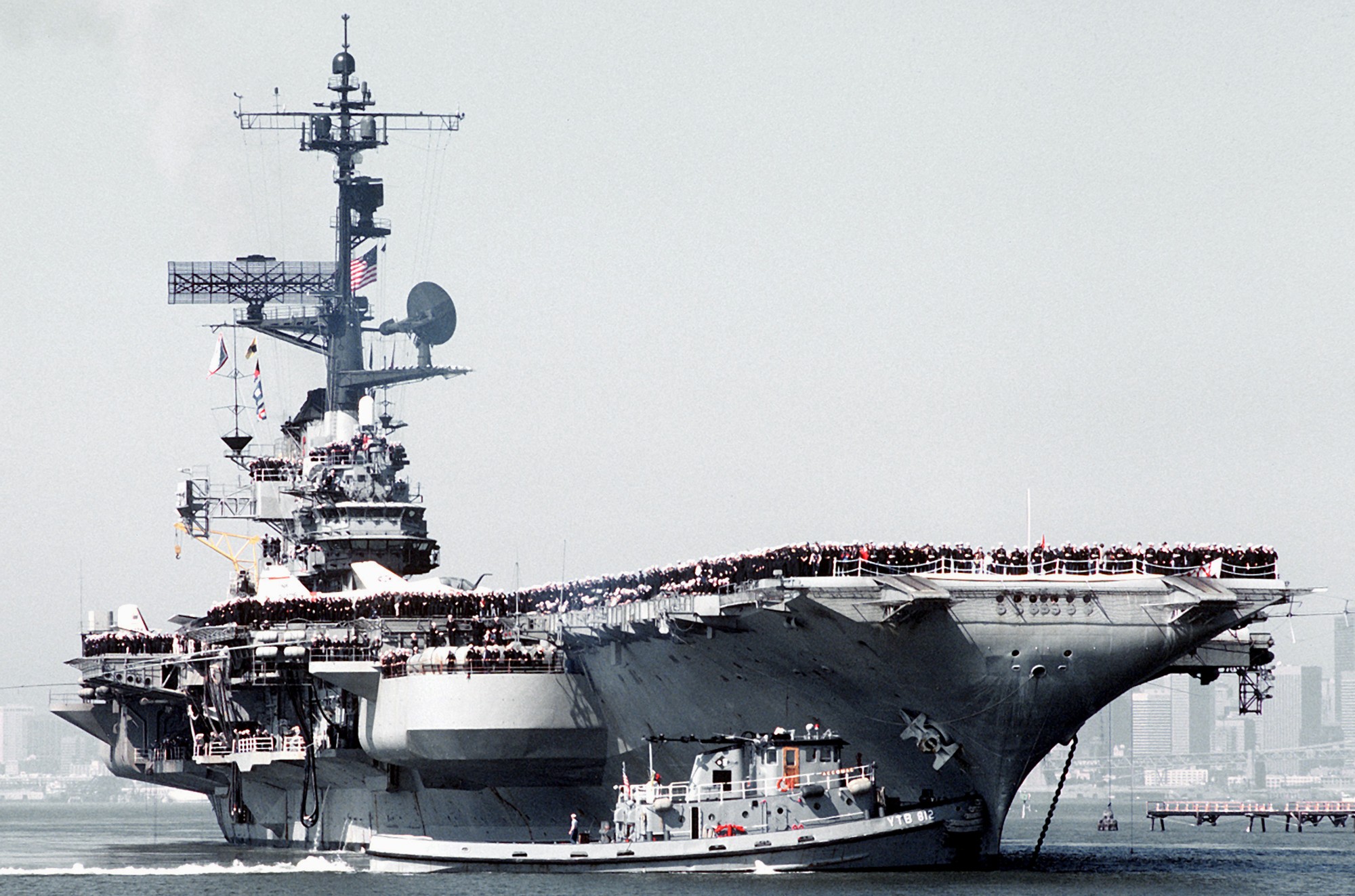 San Francisco, California - March 1982 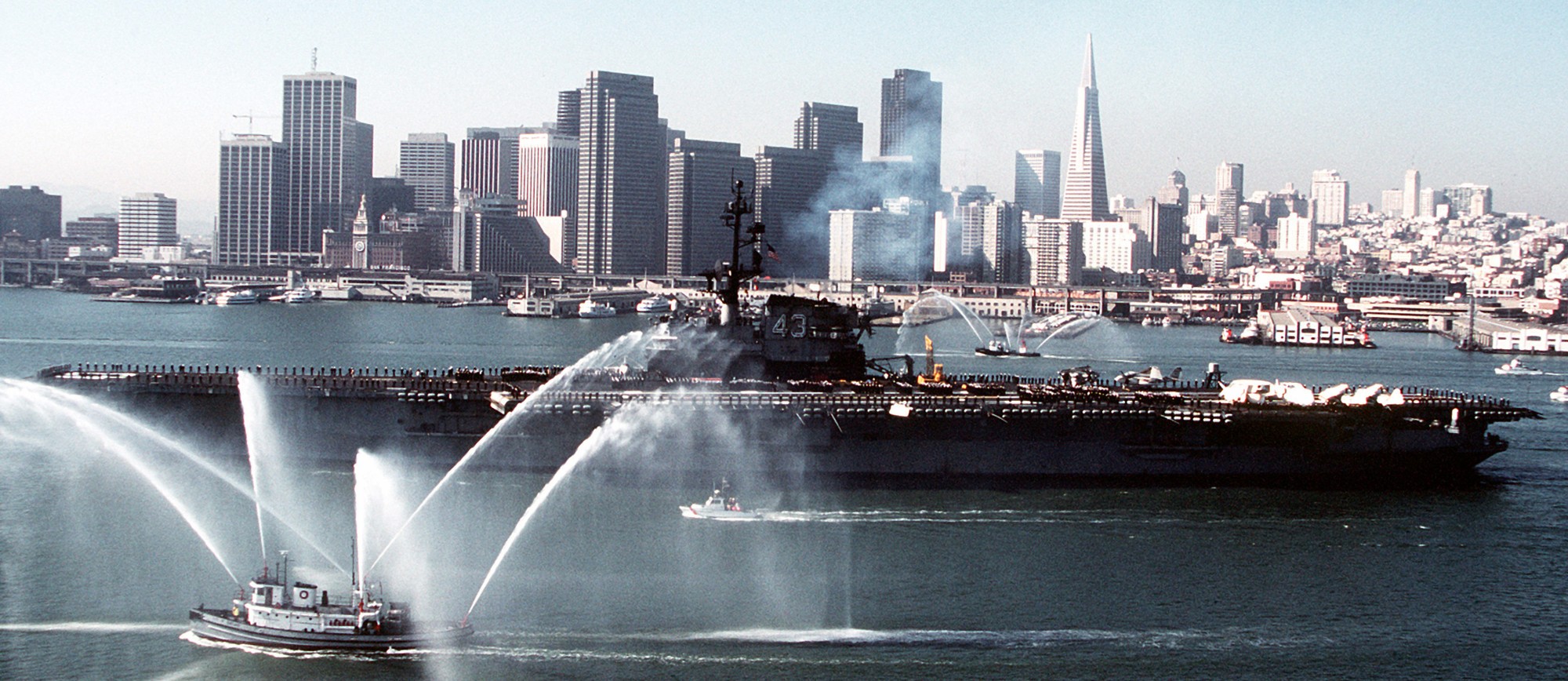 San Francisco, California - March 1982 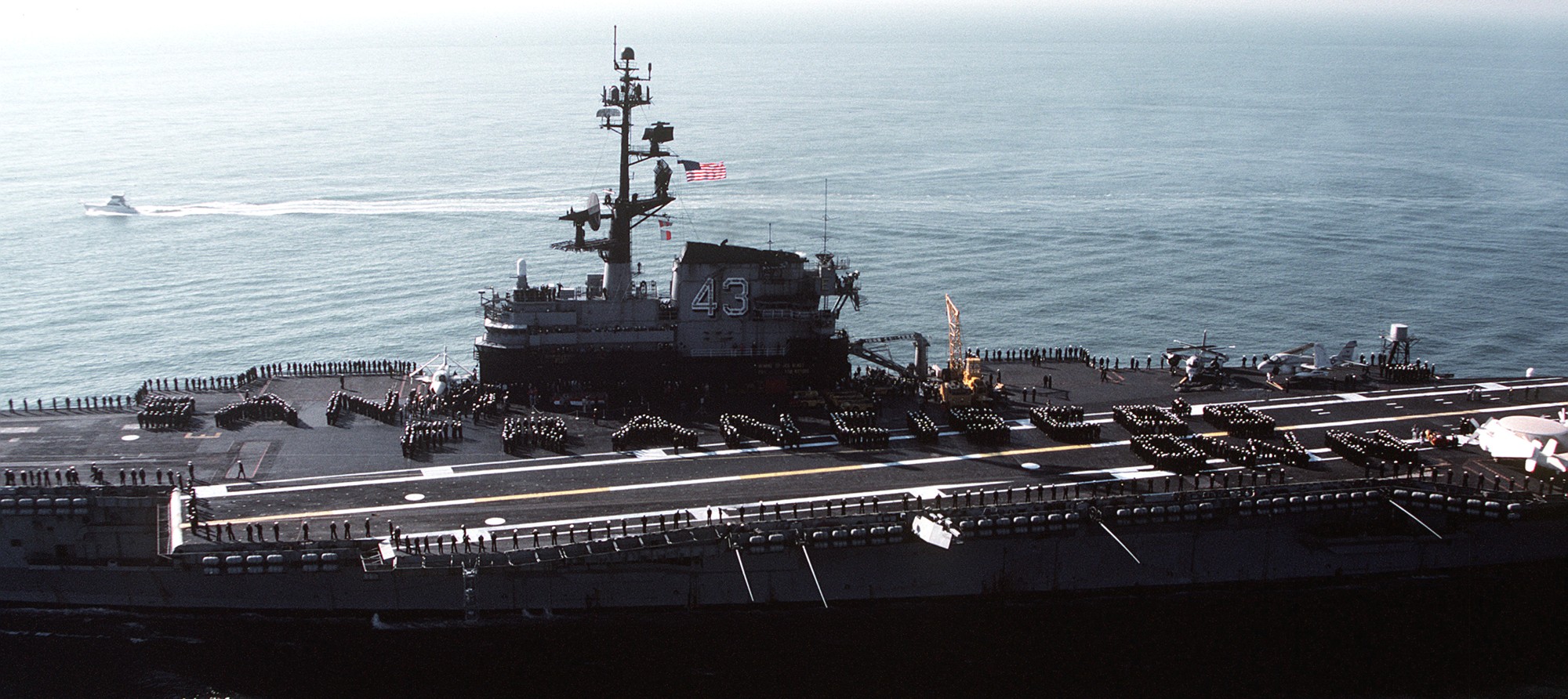 San Francisco, California - March 1982 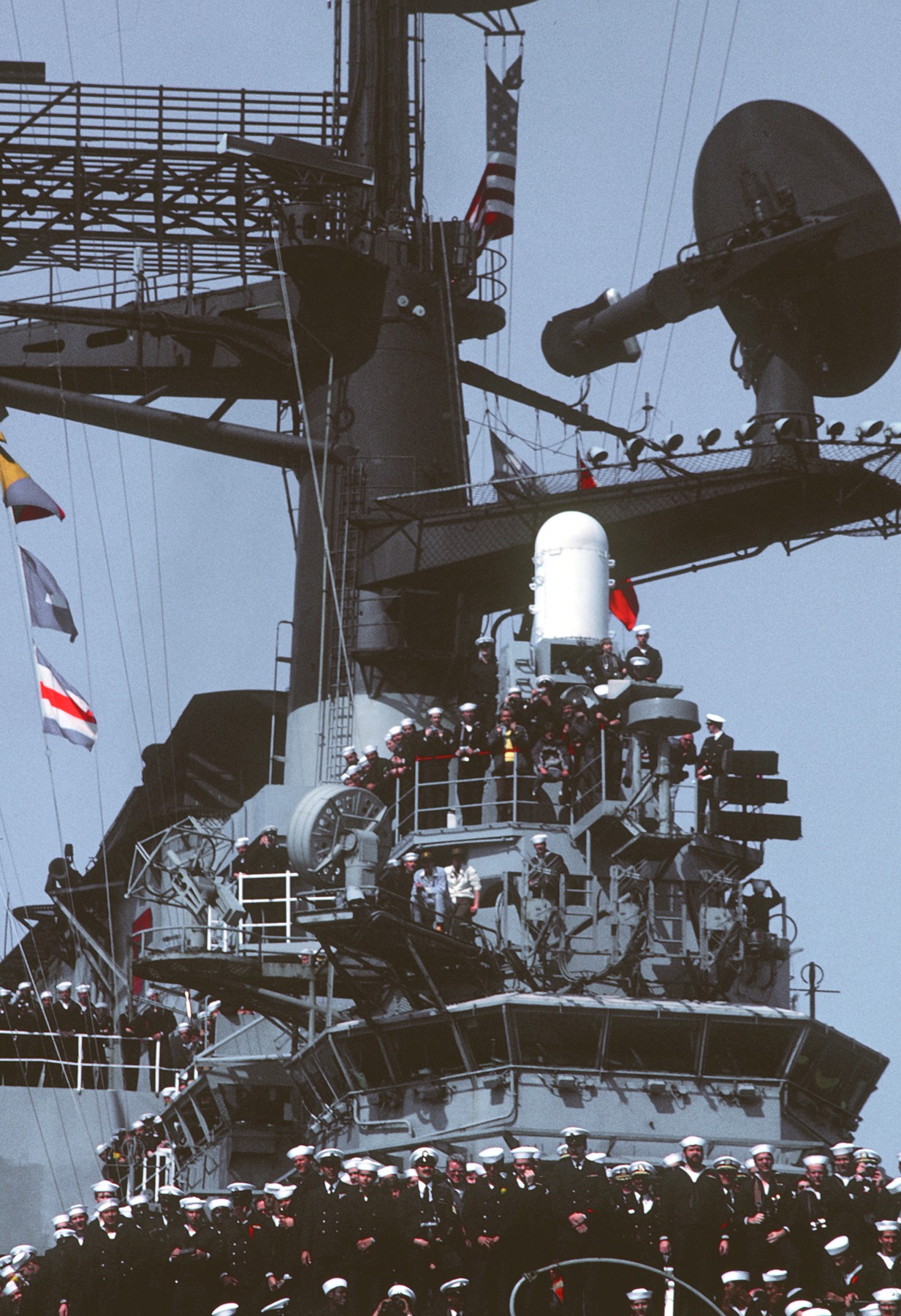 San Francisco, California - March 1982 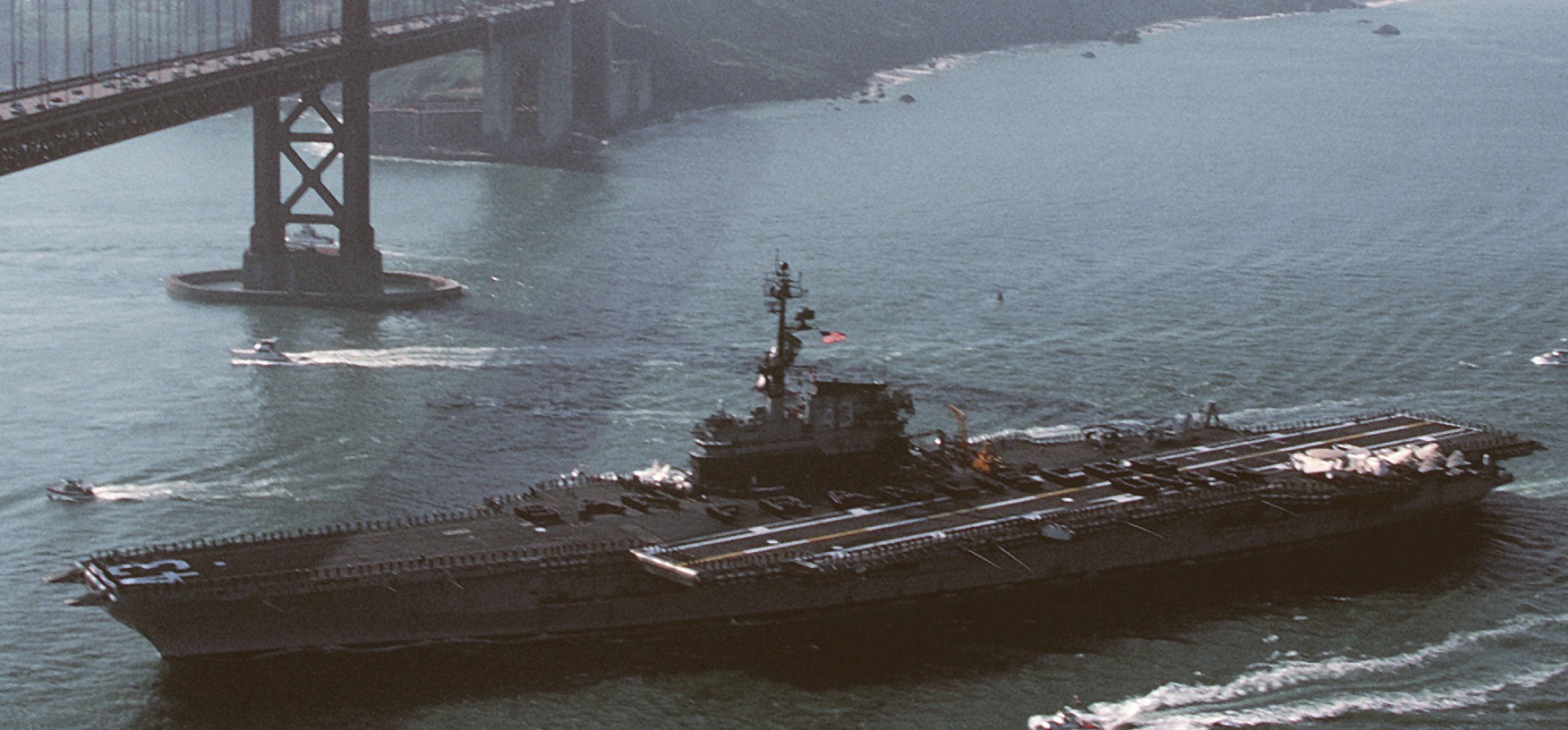 San Francisco, California - March 1982 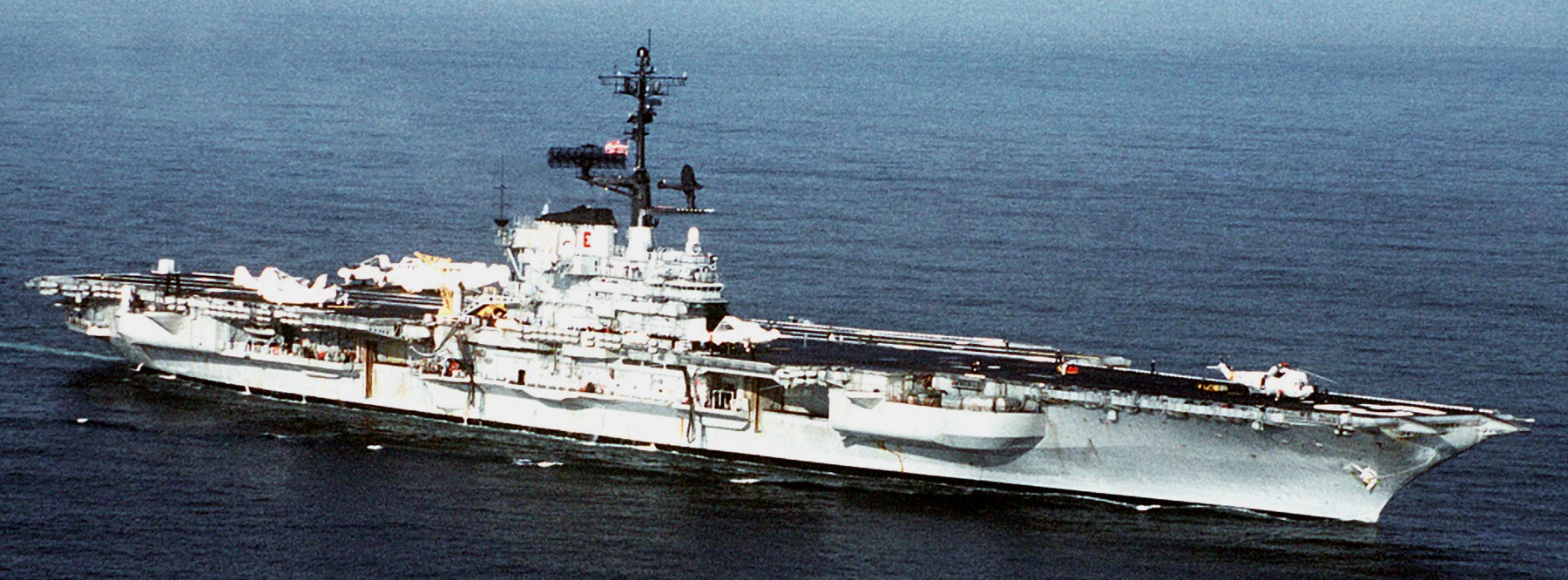 with Carrier Air Wing 14 (CVW-14) embarked - March 1982 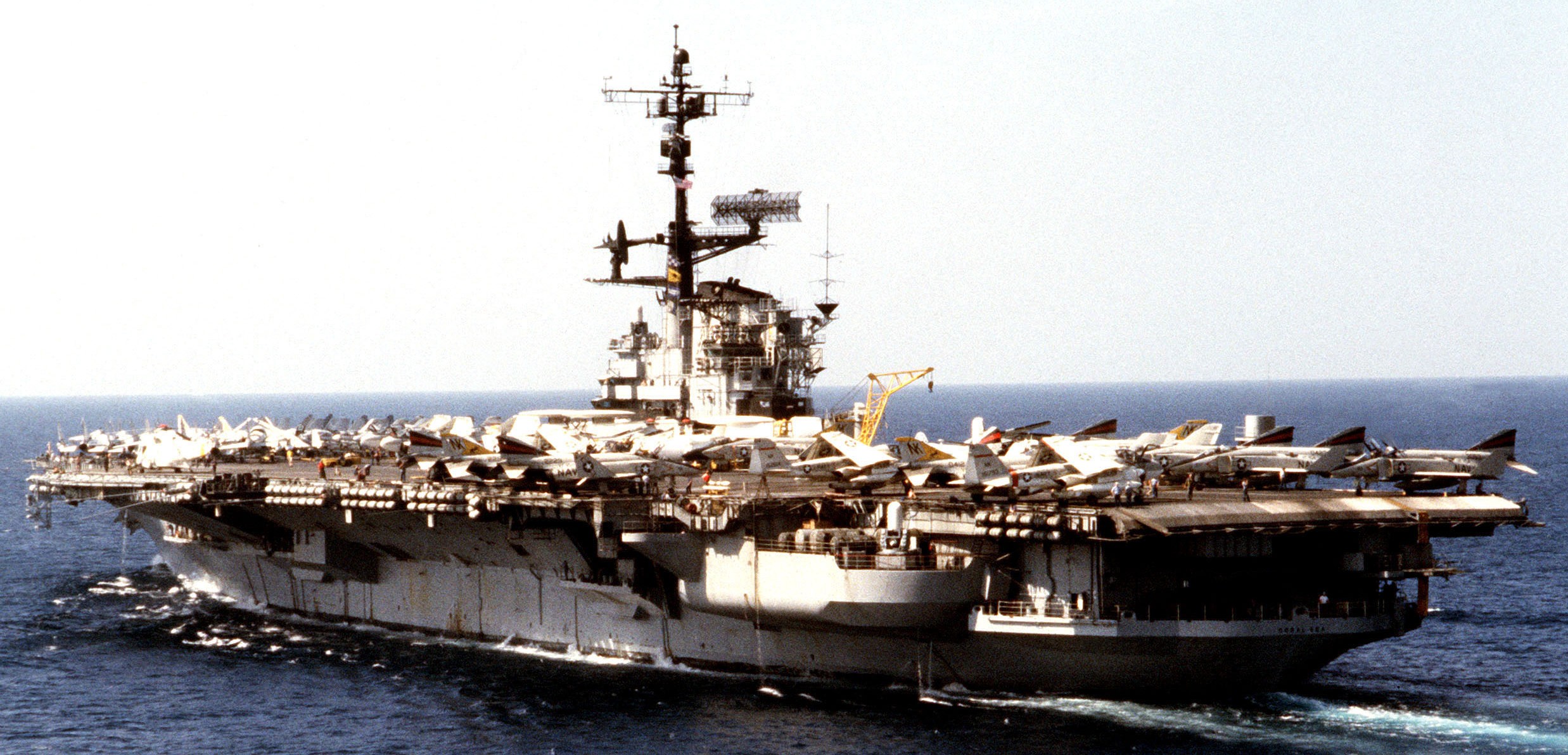 with Carrier Air Wing 14 (CVW-14) embarked - South China Sea - March 1982 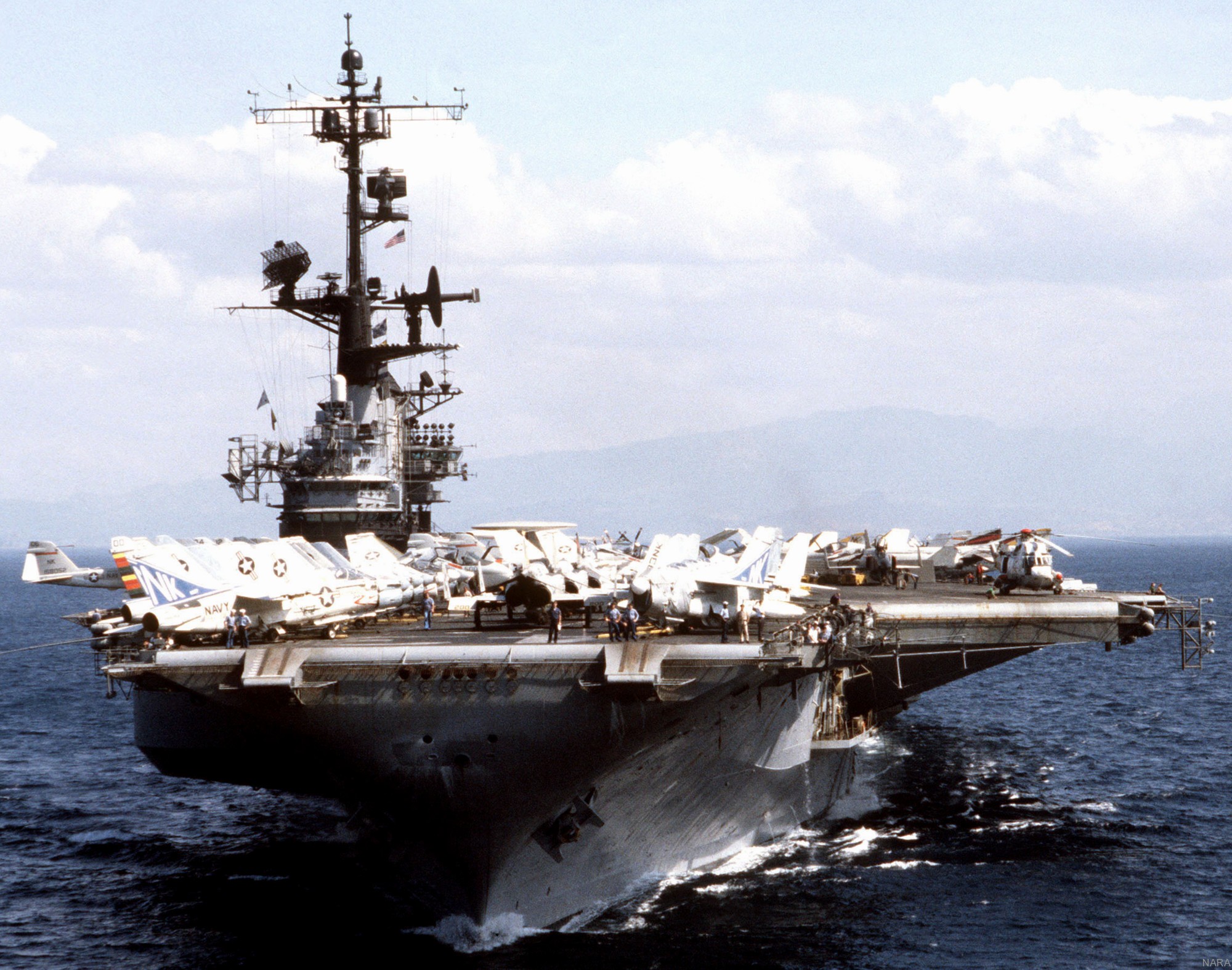 with Carrier Air Wing 14 (CVW-14) embarked - South China Sea - March 1982 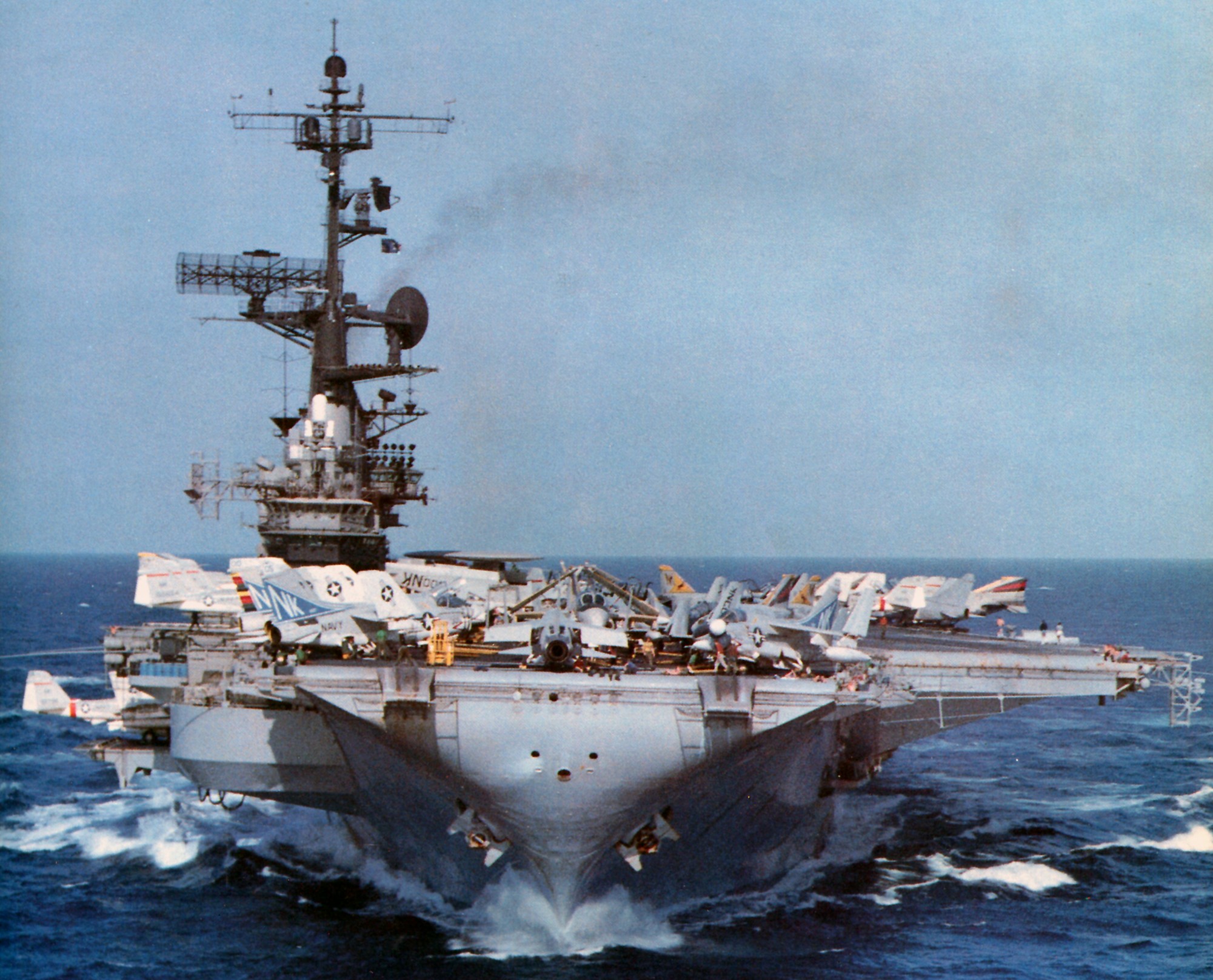 with Carrier Air Wing 14 (CVW-14) embarked - South China Sea - March 1982 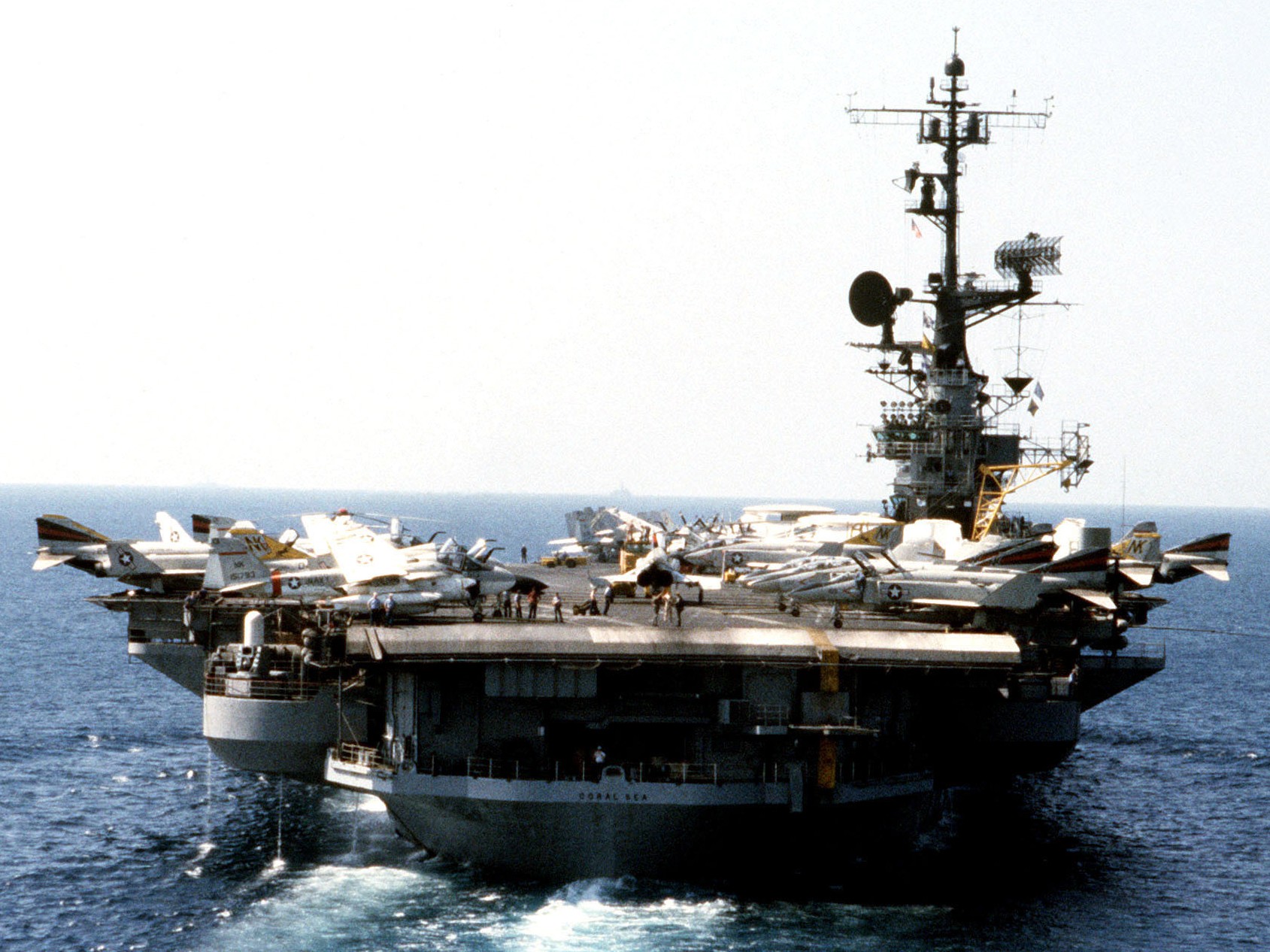 with Carrier Air Wing 14 (CVW-14) embarked - South China Sea - March 1982 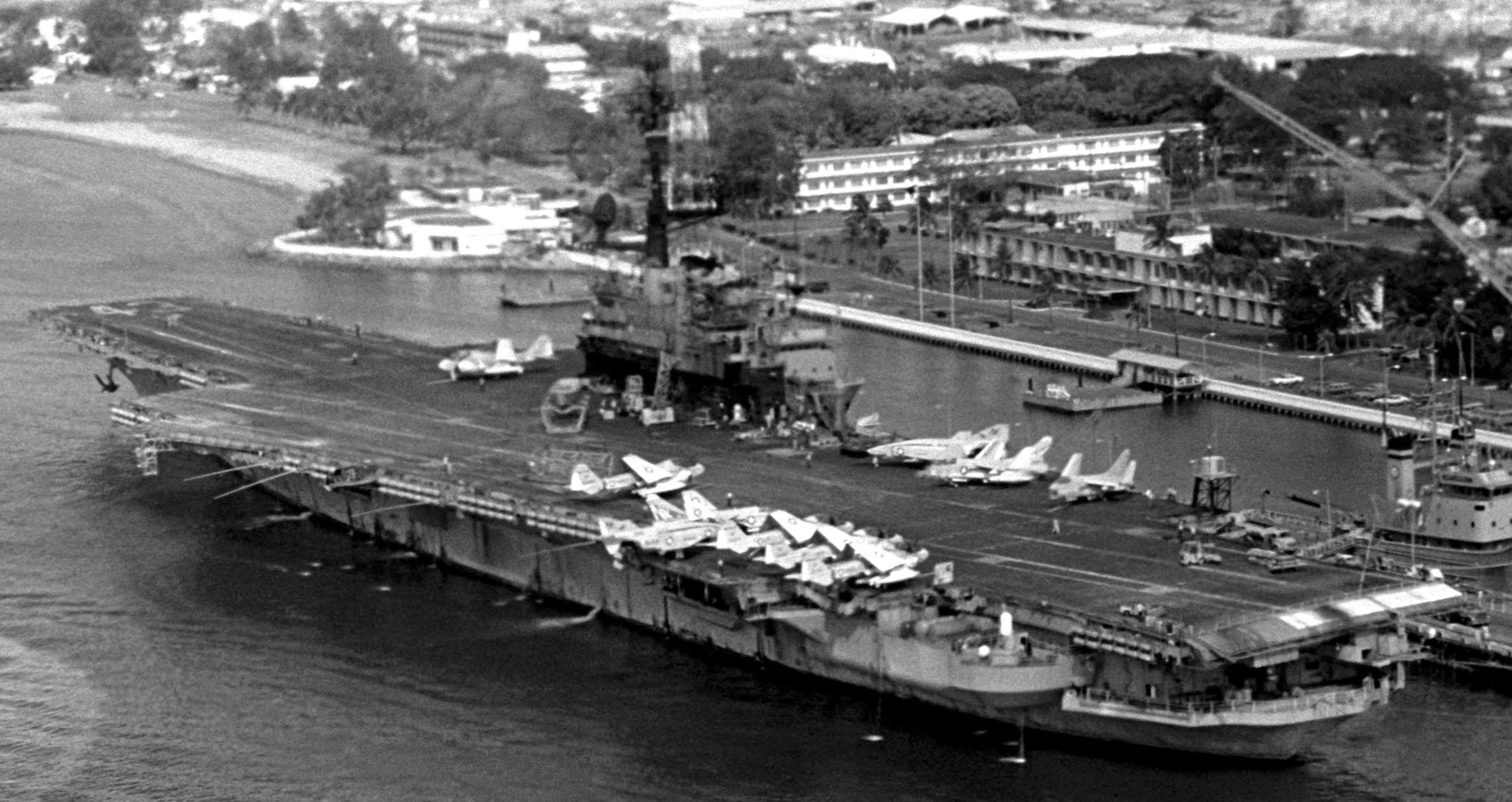 with Carrier Air Wing 14 (CVW-14) embarked - Subic Bay, Philippines - 1982 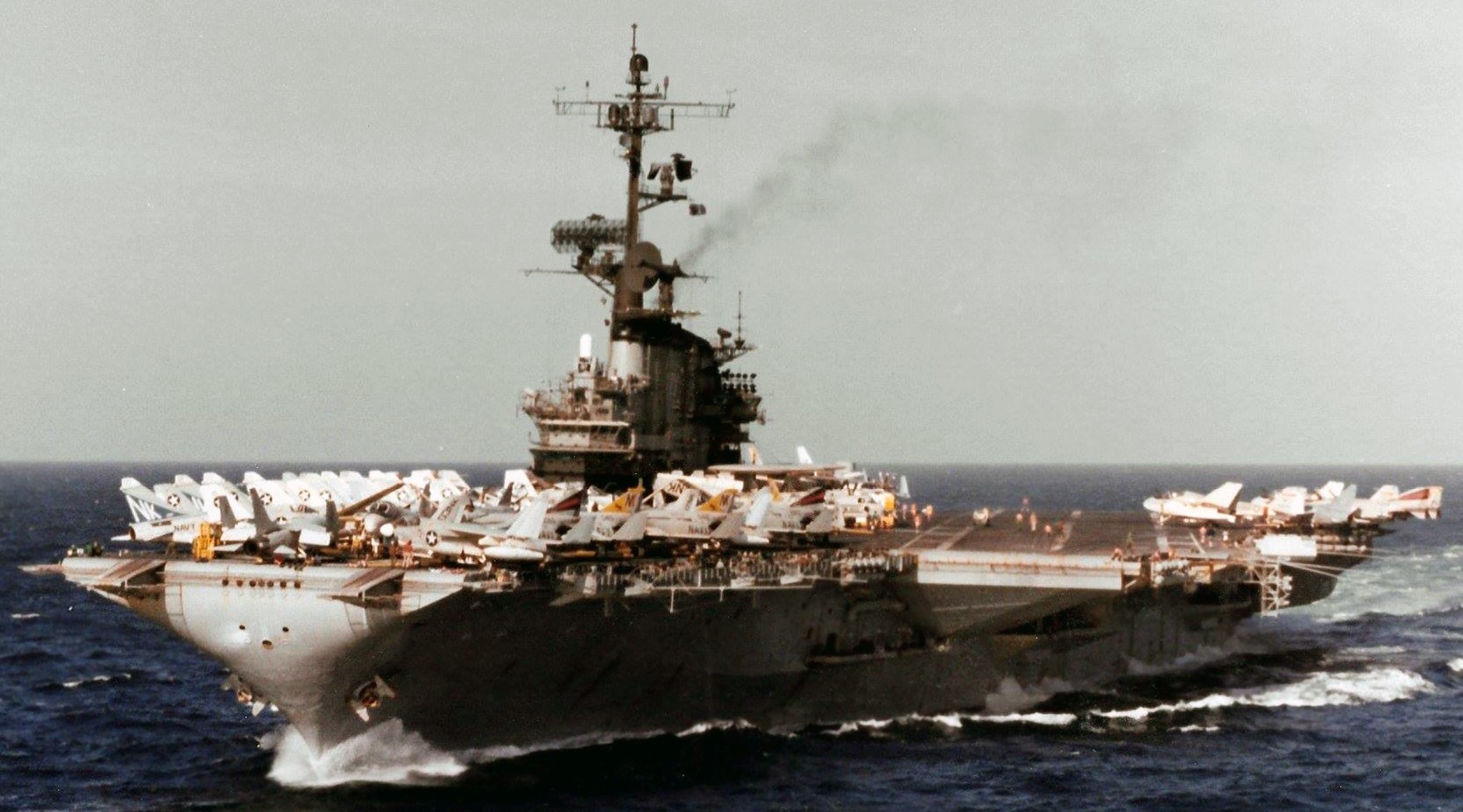 with Carrier Air Wing 14 (CVW-14) embarked - 1982  with Carrier Air Wing 14 (CVW-14) embarked - September 1981  with Carrier Air Wing 14 (CVW-14) embarked - July 1981 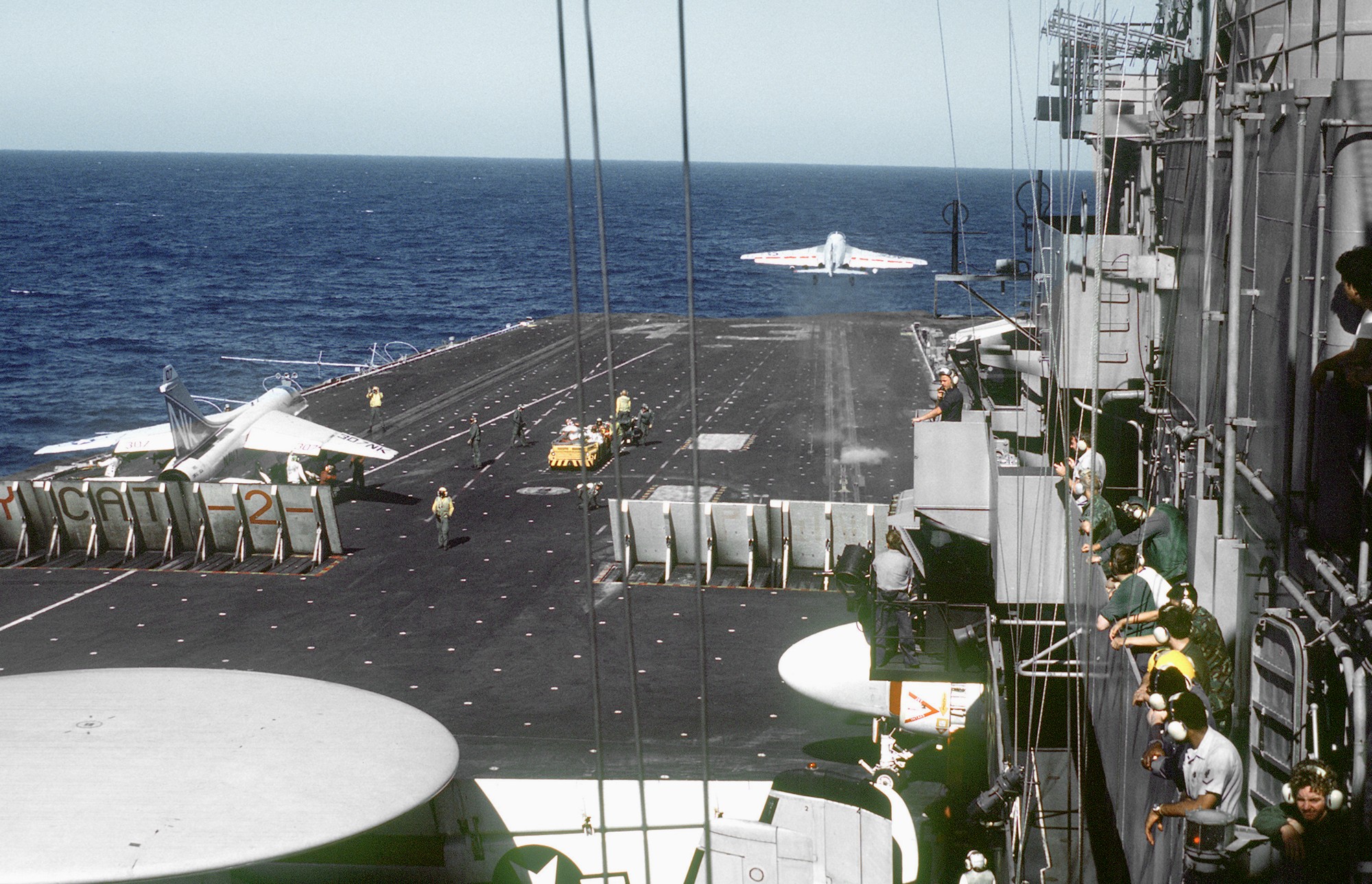 with Carrier Air Wing 14 (CVW-14) embarked - May 1981 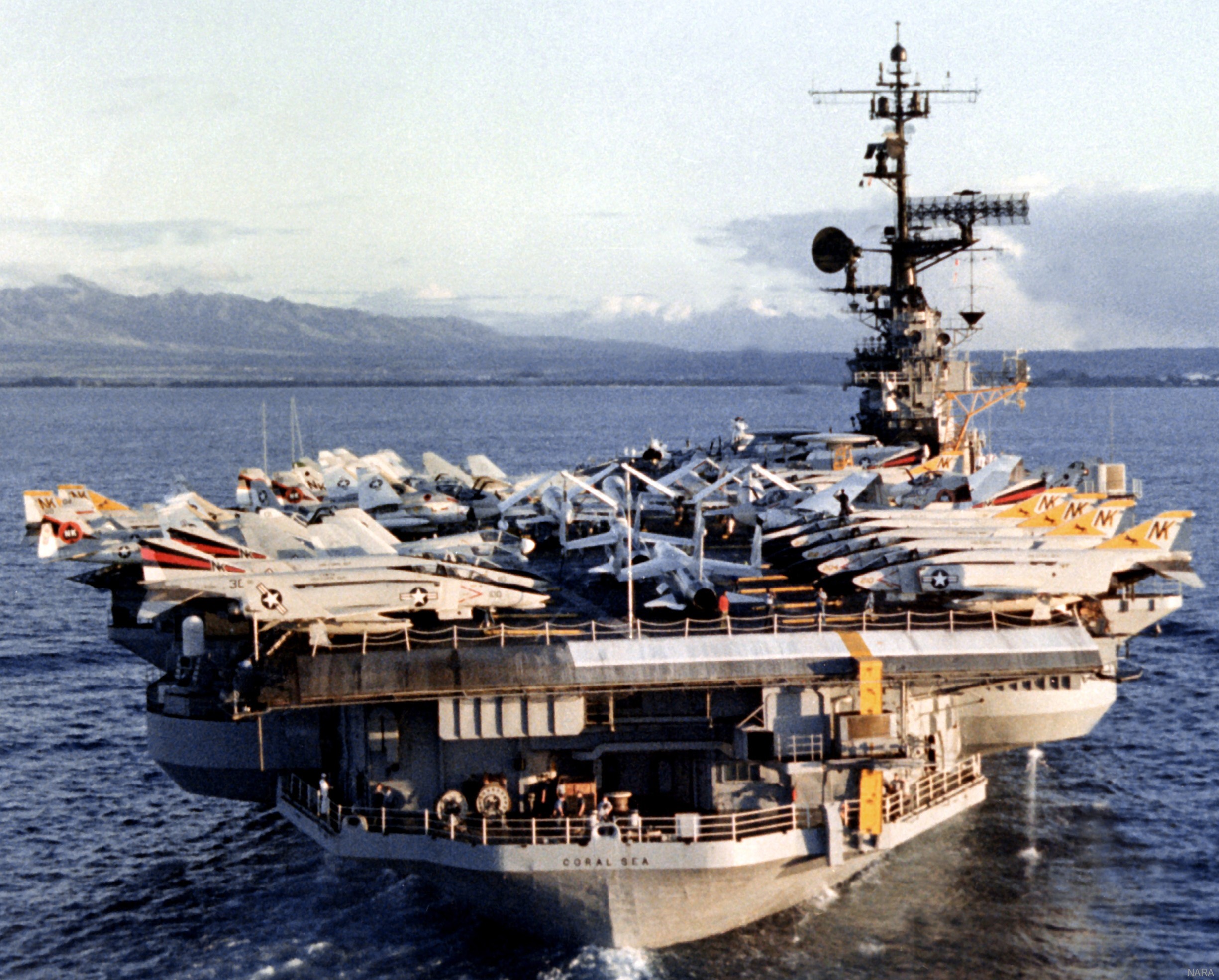 with Carrier Air Wing 14 (CVW-14) embarked - Pearl Harbor, Hawaii - 1981  with Carrier Air Wing 14 (CVW-14) embarked - 1981 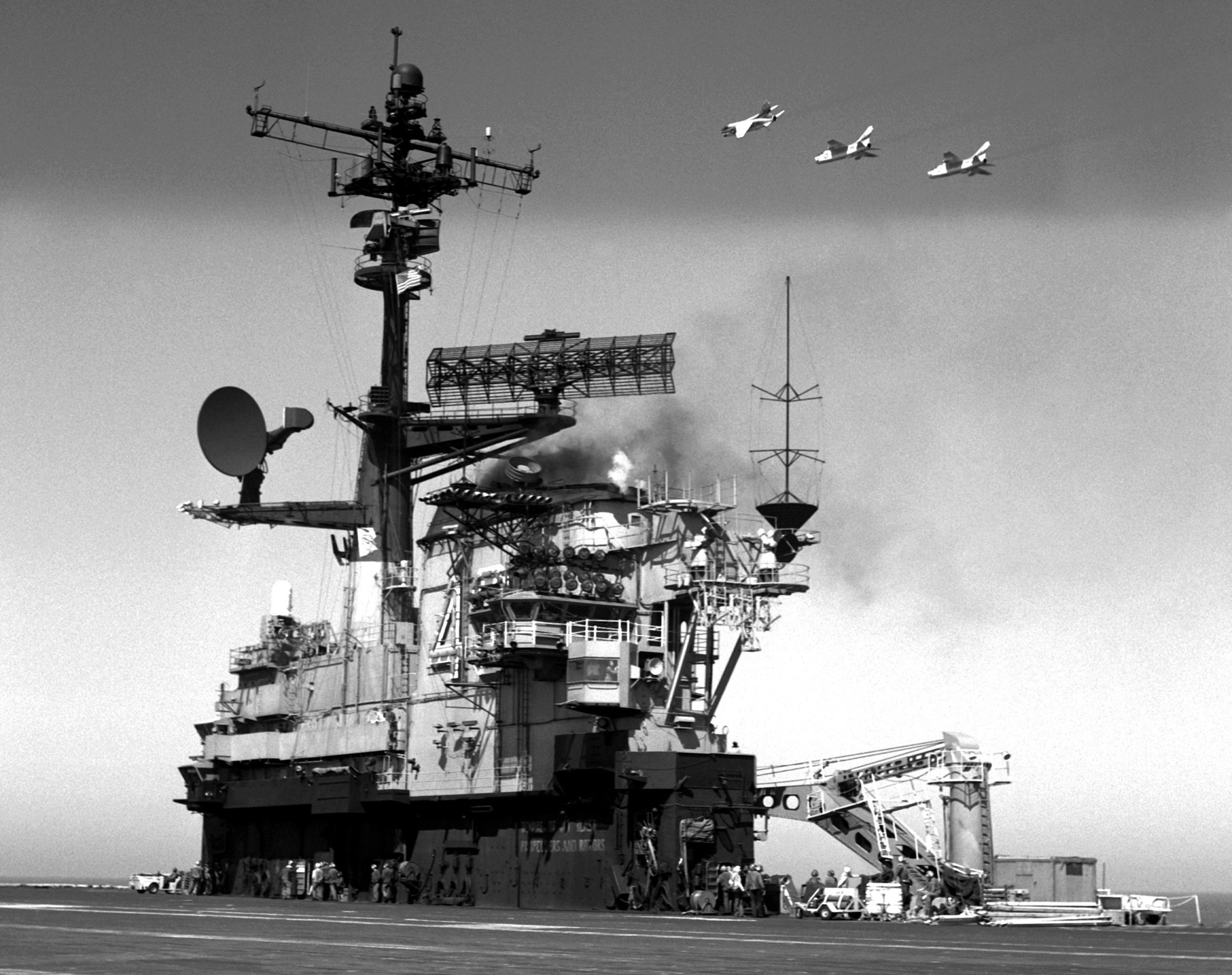 March 1981 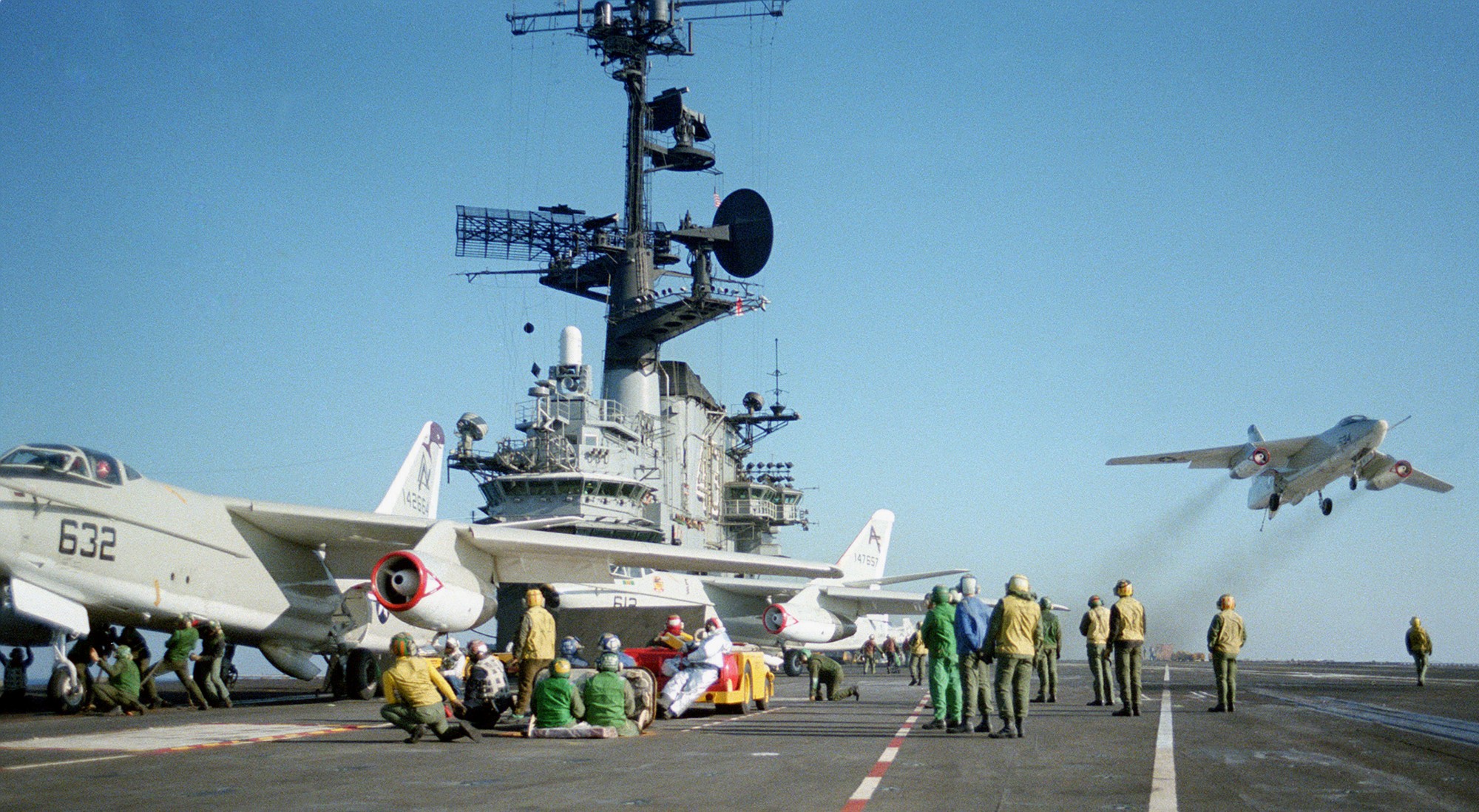 with Carrier Air Wing Reserve 30 (CVWR-30) embarked - 1981 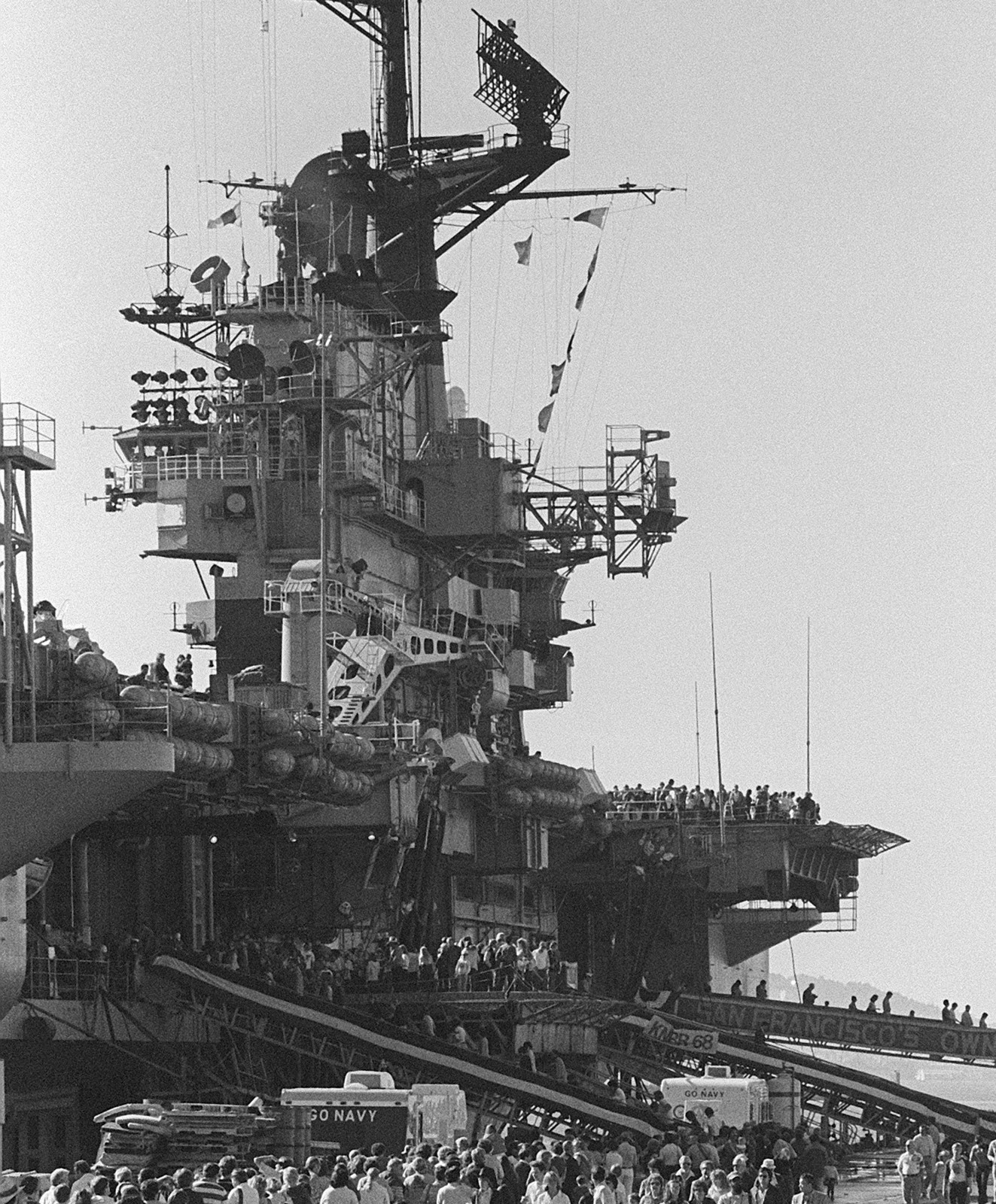 NAS Alameda, California - November 1980  San Francisco Bay - circa 1980 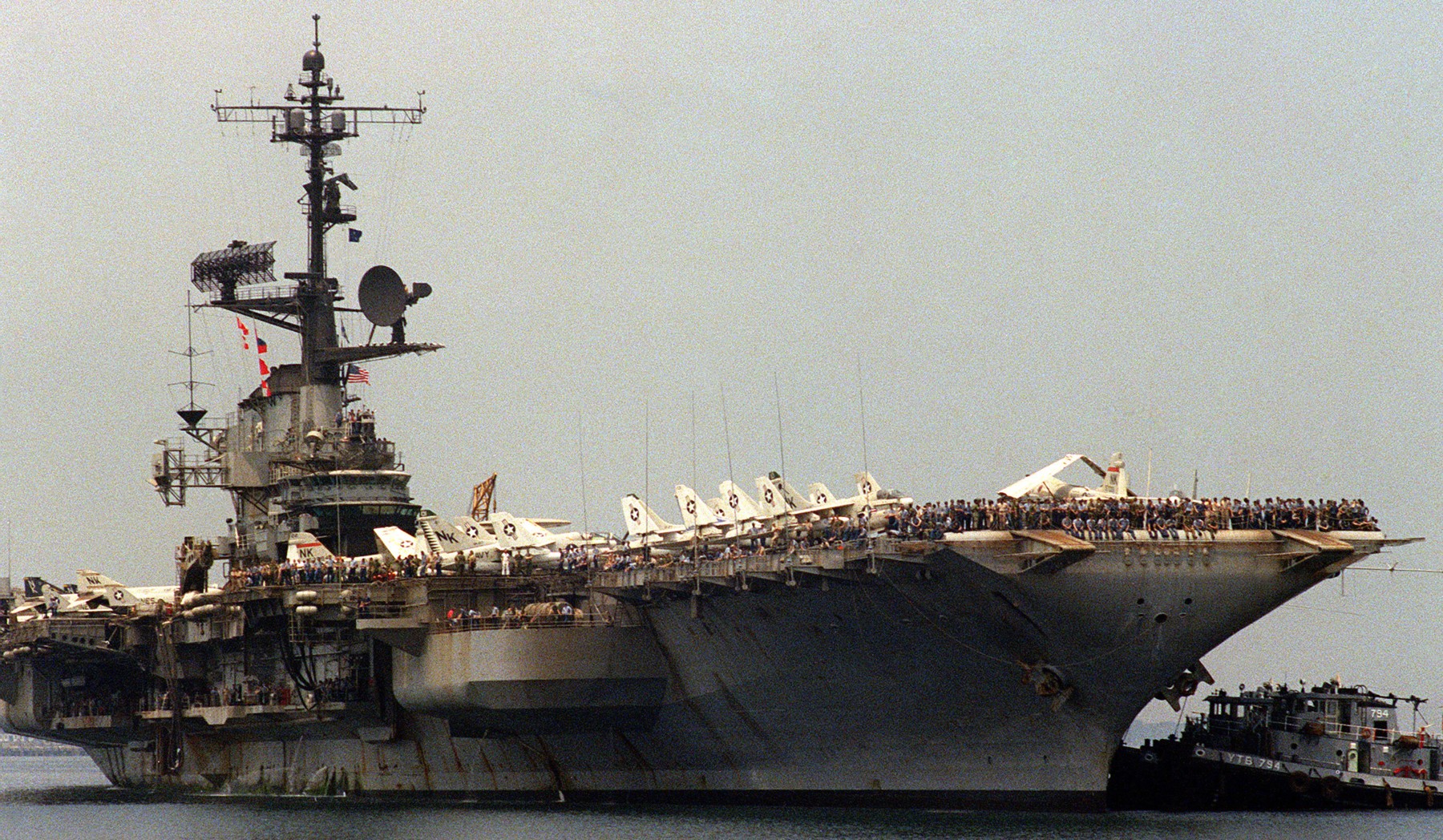 with Carrier Air Wing 14 (CVW-14) embarked - Subic Bay, Philippines - May 1980 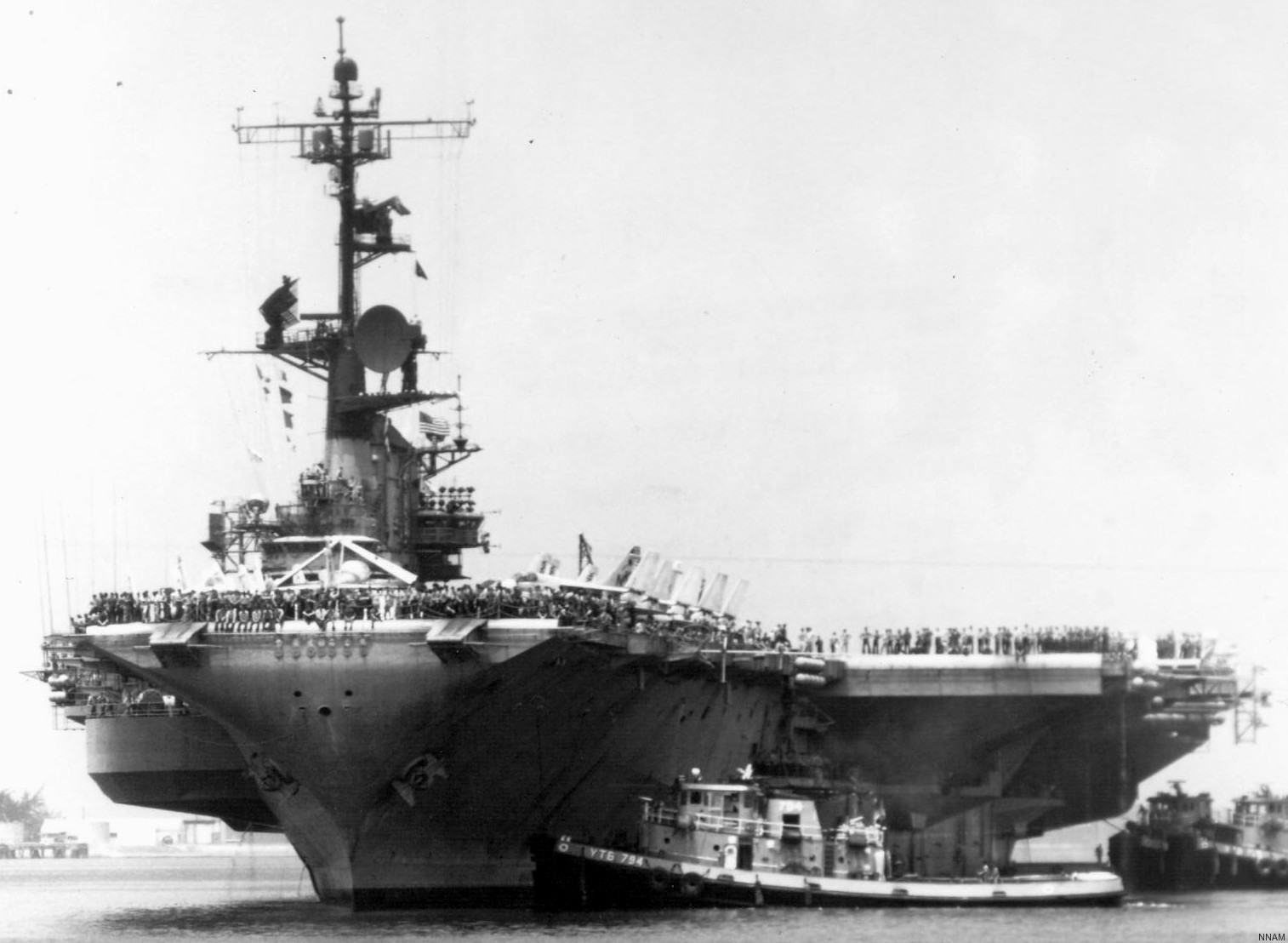 with Carrier Air Wing 14 (CVW-14) embarked - Subic Bay, Philippines - May 1980 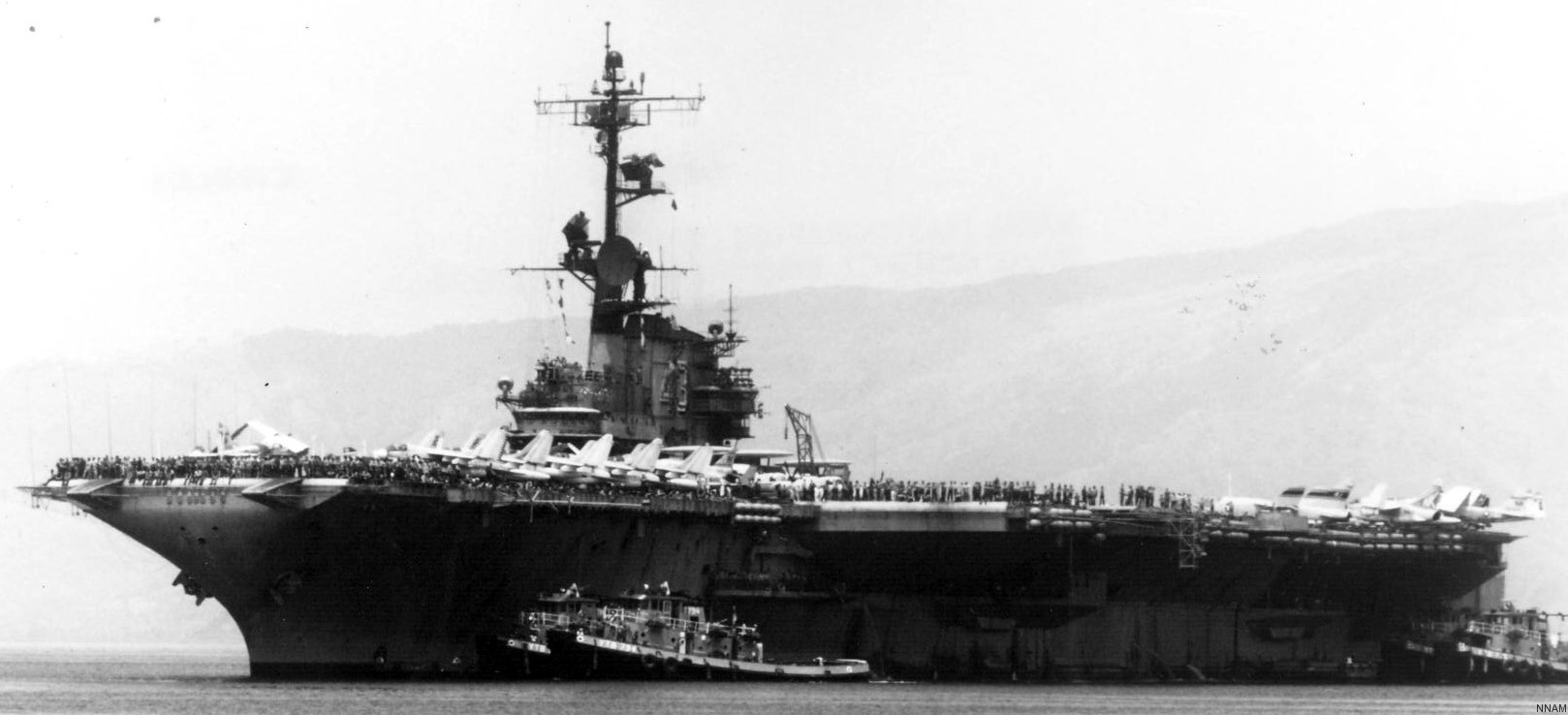 with Carrier Air Wing 14 (CVW-14) embarked - Subic Bay, Philippines - May 1980 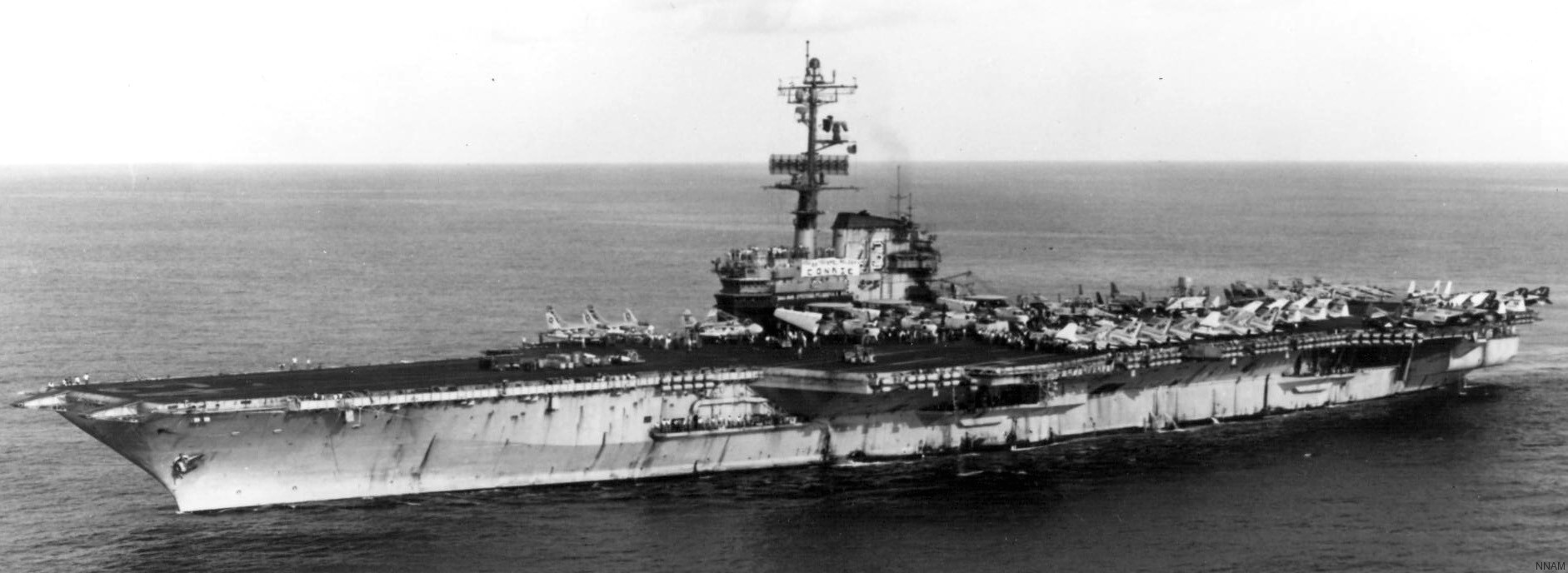 with Carrier Air Wing 14 (CVW-14) embarked - Indian Ocean - May 1980  with Carrier Air Wing 14 (CVW-14) embarked - Indian Ocean - 1980 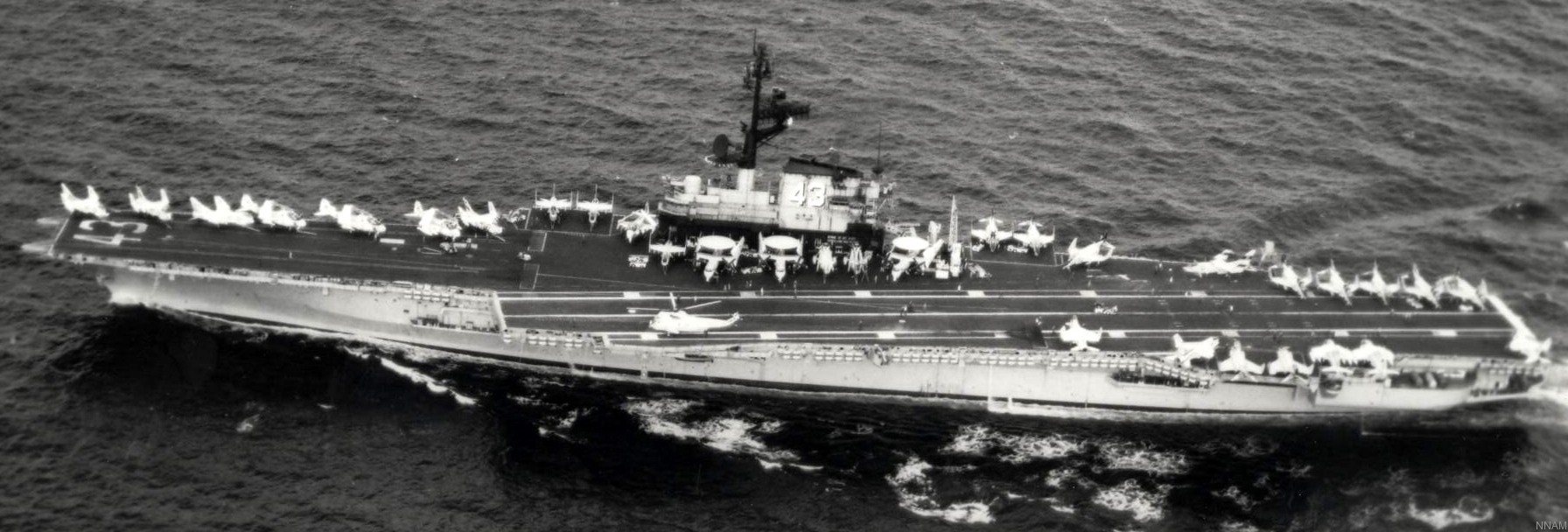 with Carrier Air Wing 14 (CVW-14) embarked - Indian Ocean - April 1980 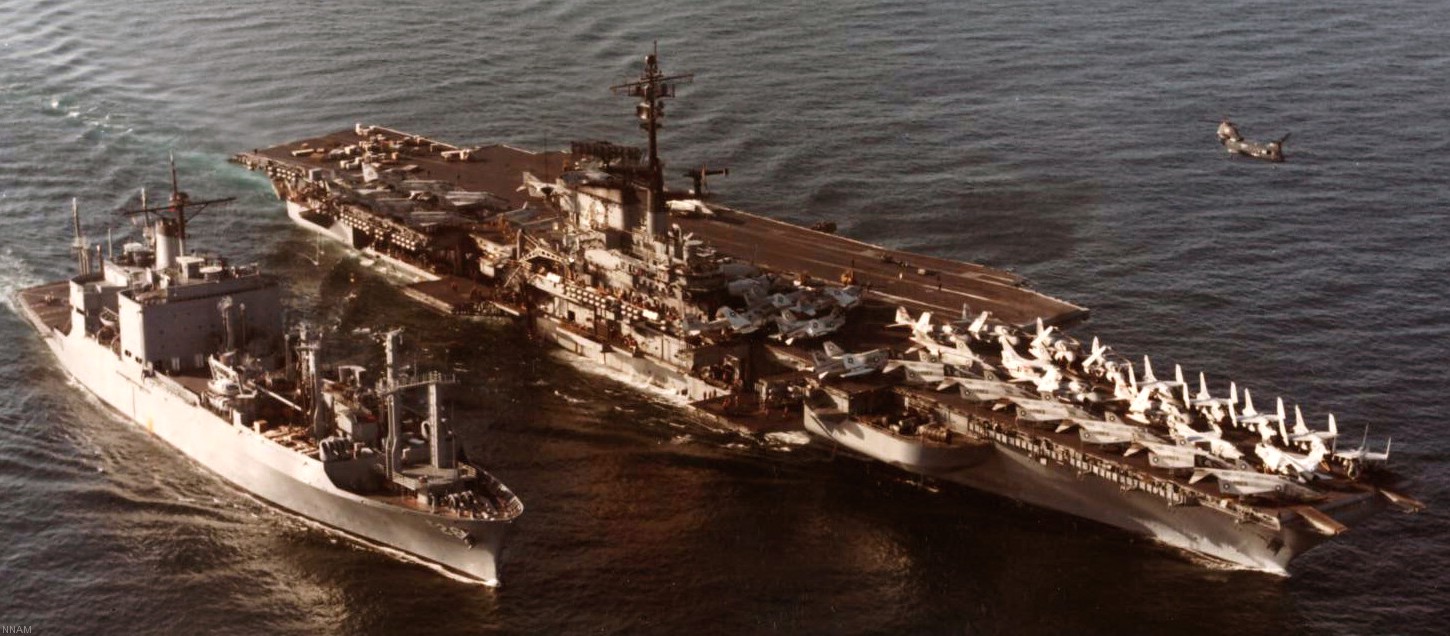 with Carrier Air Wing 14 (CVW-14) embarked - Indian Ocean - February 1980 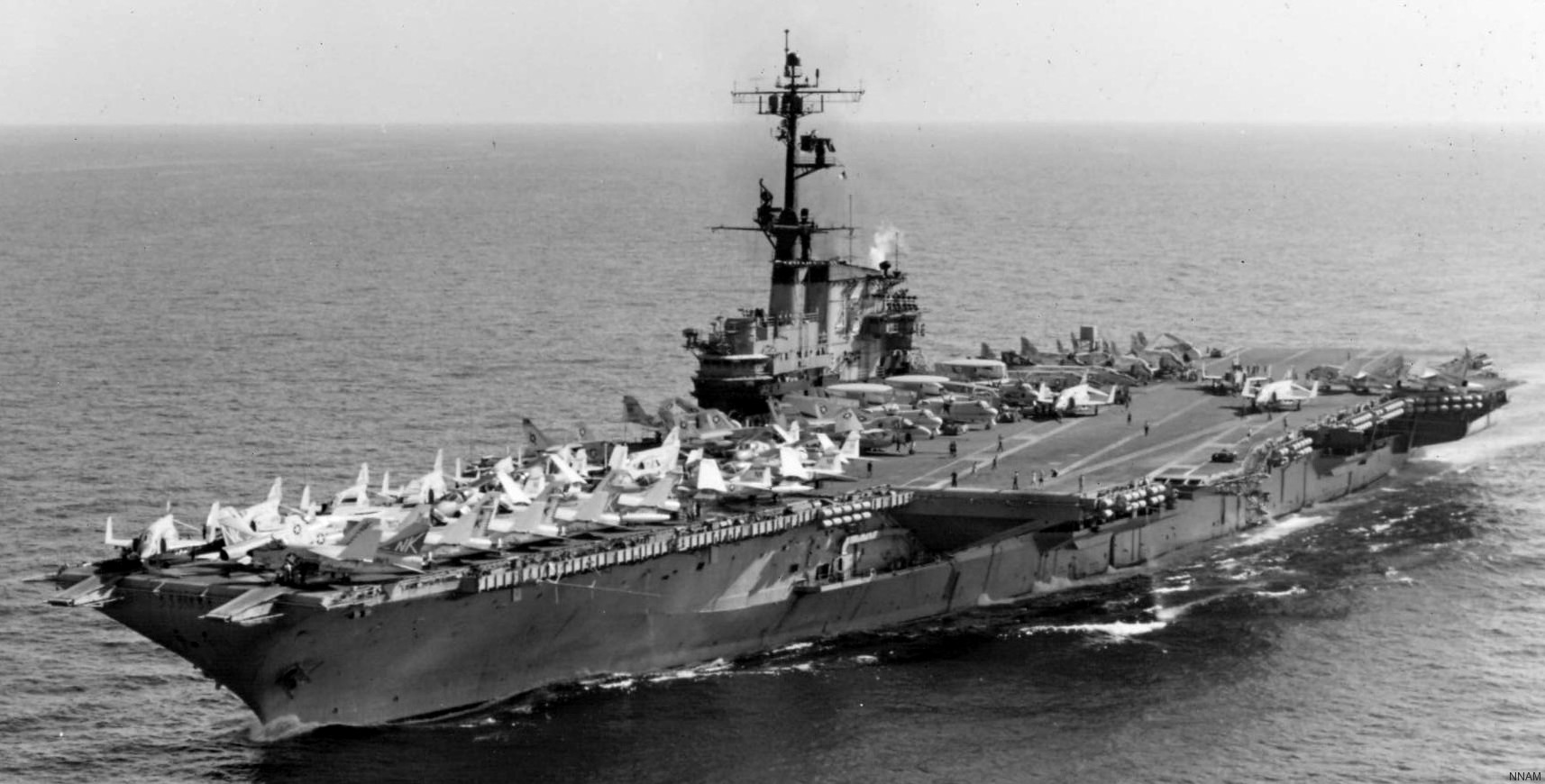 with Carrier Air Wing 14 (CVW-14) embarked - Indian Ocean - February 1980 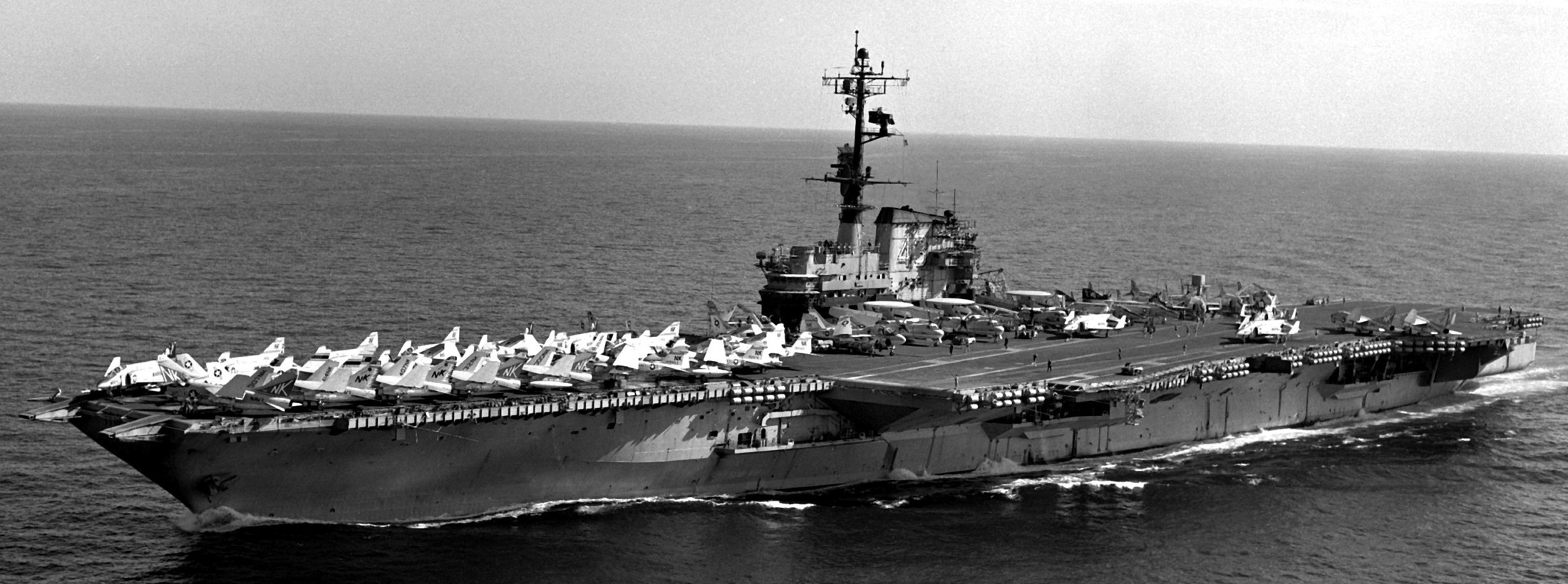 with Carrier Air Wing 14 (CVW-14) embarked - Indian Ocean - February 1980 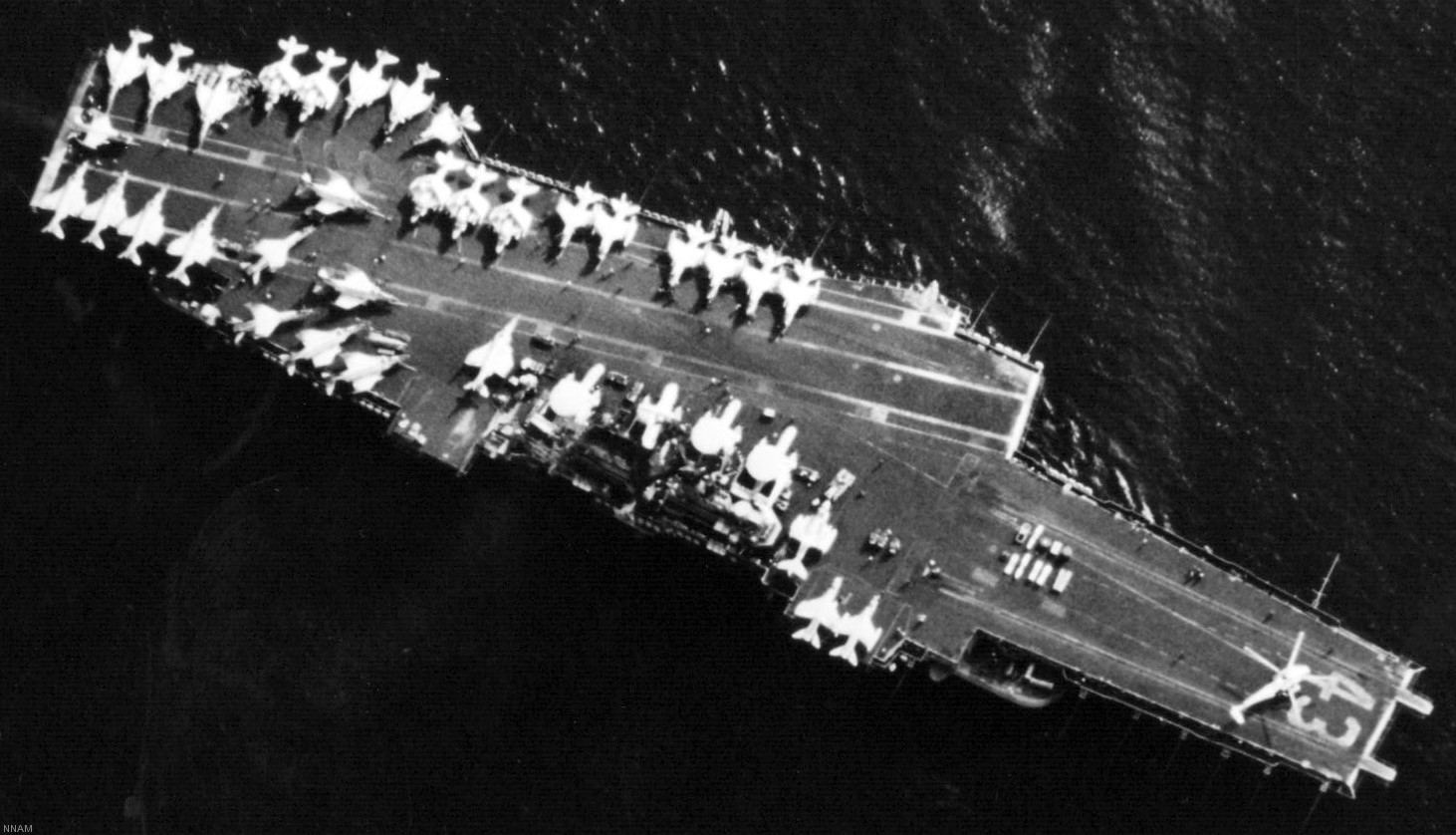 with Carrier Air Wing 14 (CVW-14) embarked - Pacific Ocean - January 1980 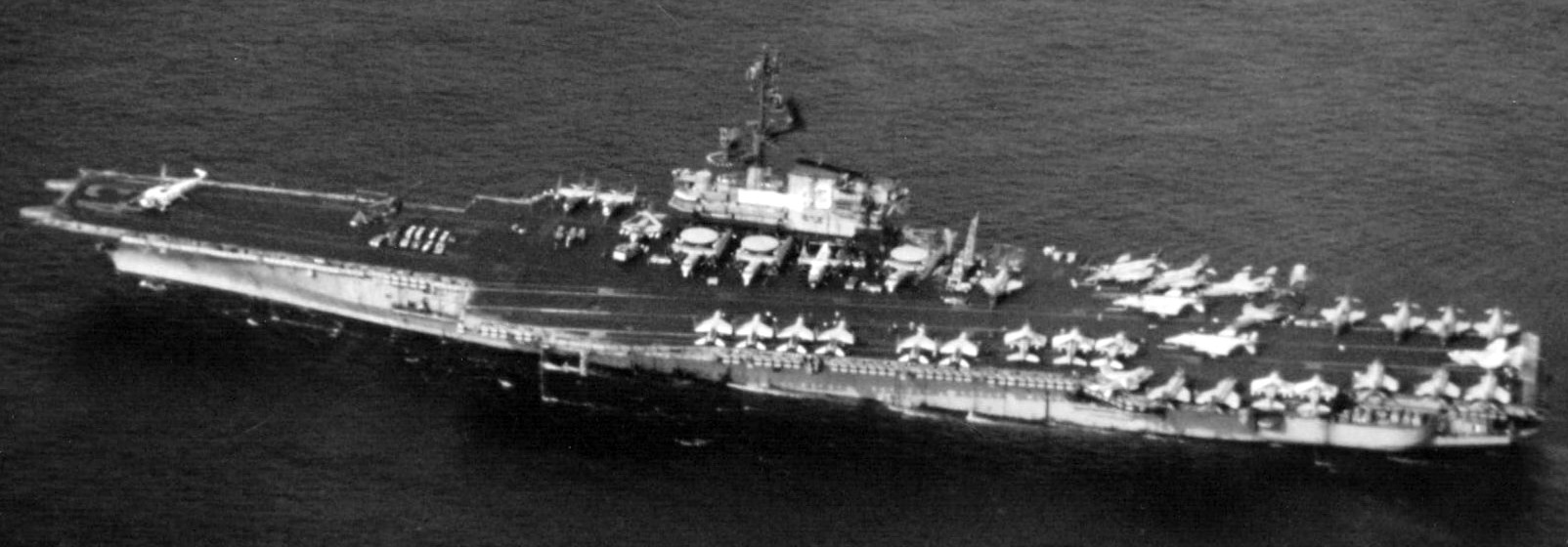 with Carrier Air Wing 14 (CVW-14) embarked - Pacific Ocean - January 1980 >> continue - CV 43 image page 2 << |
||
|
The Battle of the Coral Sea: The Battle of the Coral Sea, in early May 1942, was one of the major turning points of the Pacific War. It was the first battle in which aircraft carriers engaged each other, and the first naval battle in which neither side's ships sighted or fired directly upon each other. The engagement ended with no clear victor, but the damage suffered, and experience gained by both sides, during and after the conflict, set the stage for the Battle of Midway one month later. Background: In early 1942, having conquered nearly all of Southeast Asia in just a few months, Imperial Japan was at the apex of its power. Still reeling from a long series of humiliating defeats, the Allies were just beginning to develop the skills and organise the material assets needed to survive and, eventually, to strike back. Allied strategy at this time was focused on a defensive build-up of the United States Army and Marine strength on New Caledonia (well to the south of the Solomon Islands), and Australian Army and Royal Australian Air Force units in the south and east of the Australian Territory of New Guinea, just north of Australia itself. On March 12, the Prime Minister of Japan, General Hideki Tojo, said: “Australia and New Zealand are now threatened by the might of the Imperial forces, and both them should know that any resistance is futile. If the Australian government does not modify her present attitude, their continent will suffer the same fate as the Dutch East Indies” In April 1942, Japanese forces left their new stronghold of Rabaul (on New Britain, just north of mainland New Guinea), and launched a two-pronged strategy: an amphibious assault against Port Moresby (Operation "MO"), and another against Tulagi in the Solomon Islands. The intention was threefold: to establish control of the Solomons, initially with a seaplane base; to destroy, and then occupy Port Moresby (the last Allied base between Japan and Australia); and in doing these things, to bring the American aircraft carrier fleet to battle for the first time in the war. Historians remain divided about Japanese longer-term intentions. There seems little doubt Japan planned to greatly strengthen their hold on the Solomon Islands, as a bastion against any future US counter-attacks; a reasonable probability northern Australia would be invaded; and considerable doubt about the following strategies, if any were planned. In practice, Japanese military planning structure was complex, had ill-defined areas of responsibility, and was crippled by endless, bitter debates between the army and navy. Regarding longer-term Japanese plans in the South Pacific, there is only one firm deduction: whatever strategy the navy put forward would be challenged by an army counter-plan. Three Japanese fleets set sail: the invasion forces for the Solomons and Port Moresby, and a covering force of two large new aircraft carriers (Shokaku and Zuikaku, both veterans of the Pearl Harbor, a smaller carrier (Shoho), two heavy cruisers, and supporting craft. Alerted by radio intercepts, the Allies knew that Japanese land-based aircraft were being moved south and an operation was impending. In opposition were three main fleets: USS Yorktown (CV-5) already in the Coral Sea under the command of Admiral Frank Jack Fletcher, USS Lexington (CV-2) en route, and a joint Allied surface fleet. The carriers USS Hornet (CV-8) and USS Enterprise (CV-6) were heading south, after the Doolittle Raid on Tokyo, but arrived too late to take part in the battle. The battle: Lexington arrived to join Yorktown on May 1st. The Japanese occupied Tulagi without incident on May 3rd, and construction of a seaplane base began. After fuelling, Yorktown closed on Tulagi and, on May 4, launched three successful strikes against Japanese shipping and aircraft there - revealing the presence of an American carrier to the enemy, but sinking the destroyer Kikuzuki, crippling the island's seaplane reconnaissance capability, and damaging other vessels, before retiring to the south to rendezvous with the Lexington and the newly-arrived cruisers. Meanwhile, the two large Japanese carriers were approaching from south of the Solomons - neatly placing the Allied fleet between the two Japanese fleets. Land-based B-17's attacked the gradually-approaching Port Moresby invasion fleet on May 6, with the usual lack of success. Almost another year would pass before air forces realized that high-level bombing raids upon moving naval targets were pointless. Although both carrier fleets flew extensive searches on the 6th, cloudy weather kept them hidden from each other, and the two fleets spent the night only 70 miles apart. Other allied aircraft joined the battle, from airbases at Cooktown and Iron Range on Cape York Peninsula, Australia. That night Fletcher, mindful that his primary role was to protect Port Moresby, took the difficult decision to detach the Allies' main surface fleet, under the Australian Rear Admiral John Crace, to block the probable course of an invasion fleet. Crace's force consisted of the cruisers HMAS Australia, USS Chicago, HMAS Hobart, and the destroyers USS Perkins, USS Walke and USS Farragut. Fletcher and Crace knew that exposing surface ships to attack by land-based aircraft, without air cover was to risk a repeat of the sinking of HMS Prince of Wales and HMS Repulse five months before. Their fears were realised when the cruisers were located by a squadron of Japanese torpedo bombers, and came under intense air attack, on the afternoon of May 7. Whether as a result of luck or skill, the Allied ships escaped with few casualties and little damage. Only a matter of minutes after the Japanese raid, Crace's force was inadvertently attacked by friendly B-17s, and Farragut and Perkins once again survived narrow misses. On the 7th, both fleets flew off all available aircraft, but neither found the main body of the other, and both mistakenly attacked subsidiary forces. Japanese aircraft found and attacked the US fleet oiler USS Neosho (AO-23) and the escorting destroyer USS Sims (DD-409), mistaking them for a carrier and a cruiser. Sims was sunk, while Neosho was crippled. Meanwhile, the US aircraft had missed Shokaku and Zuikaku but found the invasion fleet, in company with the small carrier Shoho, which was soon sunk. In the previous five months, the Allies had lost a dozen battleships and carriers, and had been unable to sink a single major Japanese unit in return. Shoho was small by carrier standards, but the laconic "scratch one flattop", radioed back to the Lexington, brought news of the first Allied naval success of the Pacific war. Finally, with dawn searches on May 8, the main carrier forces located one another, and launched maximum effort raids, which passed each other in the air. Hidden by rain, Zuikaku escaped detection, but Shokaku was hit three times by bombs. Listing, and on fire, Shokaku was unable to land her aircraft, and effectively, was put out of action. Both American carriers were hit by the Japanese strike: Yorktown by a bomb; the larger, less maneuverable Lexington, by both bombs and torpedoes. Although she survived the immediate damage, and was thought to be repairable, leaking aviation fuel exploded a little over an hour later. The Lexington had to be abandoned and torpedoed, to prevent her capture. Crace's force continued to stand between the invasion force, and Port Moresby. Inoue was misled by returning fliers' reports, as to the strength of the Allied cruiser-destroyer force, and ordered the invasion fleet to return. With Shokaku damaged and Zuikaku short of aircraft, neither was able to take part in the crucial Battle of Midway a month later. The damaged Yorktown returned to Pearl Harbor. |
||
|
USS Coral Sea (CVB / CVA / CV 43): Coral Sea (CVB-43) was launched 2 April 1946 by Newport News Shipbuilding and Drydock Co., Newport News, Va., sponsored by Mrs. T. C. Kinkaid, commissioned 1 October 1947, Captain A. P. Storrs, III, in command; and reported to the Atlantic Fleet. The ship began a series of career milestones when, on 27 April 1948, two P2V-2 Neptunes, piloted by Cmdr. Thomas D. Davies and Lt. Cmdr. John P. Wheatley, made JATO take-offs from the carrier as it steamed off the Norfolk, Va. This was the first carrier launching of planes of this size and weight. Coral Sea sailed from Norfolk 7 June 1948 for a midshipmen cruise to the Mediterranean and Caribbean, and returned to Norfolk 11 August. After an overhaul period, Coral Sea was again operating off the Virginia Capes. On 7 March 1949, a P2V-3C Neptune, piloted by Capt. John T. Hayward of VC 5, was launched from the carrier with a 10,000-load of dummy bombs. The aircraft flew across the continent, dropped its load on the west coast, and returned nonstop to land at the Naval Air Station, Patuxent River, Md. Following training in the Caribbean, Coral Sea sailed 3 May 1949 for her first tour of duty in the Mediterranean with the 6th Fleet, returning 28 September. On 21 April 1950, the first carrier takeoff of an AJ-1 Savage heavy attack bomber was made from Coral Sea by Capt. John T. Hayward of VC 5. The remainder of the pilots of the squadron completed carrier qualifications on board Coral Sea in this aircraft on 31 August, marking the introduction of this long-range attack bomber to carrier operations. At this time, Coral Sea returned to the Mediterranean for duty from 9 September 1950 to 1 February 1951, bringing her impressive strength to the 6th Fleet in its important role as guardian of peace in the Mediterranean. An overhaul and local operations upon her return, as well as training with Air Group 17, prepared her for a return to the Mediterranean once more on 20 March 1951. As flagship for Commander, Carrier Division 6, she took part in a North Atlantic Treaty Organization Exercise Beehive I. She returned to Norfolk 6 October for local and Caribbean operations, next sailing for the Mediterranean 19 April 1952. While on service with the 6th Fleet, she visited Yugoslavia, and carried Marshall Tito on a one-day cruise to observe carrier operations. The ship was reclassified CVA-43 on 1 October 1952 while still at sea, and she returned to Norfolk for overhaul 12 October. Coral Sea trained pilots in carrier operations off the Virginia Capes and Mayport, Fla., and in April 1953 she embarked the Judiciary Committee of the House of Representatives for a three-day cruise. On 26 April, the carrier sailed for a tour of duty in the Mediterranean. This cruise was highlighted by a visit to Spain, and participation in NATO Exercise Black Wave with Deputy Secretary of Defense R. M. Kyes on board as an observer. Returning to Norfolk 21 October, she carried out tests for the Bureau of Aeronautics and trained members of the Naval Reserve at Mayport, Fla., and Guantanamo Bay. Coral Sea returned to the Mediterranean from 7 July to 20 December 1954, and during this tour was visited by Generalissimo Franco as she lay off Valencia, Spain. On her next tour of duty in the Mediterranean from 23 March to 29 September 1955, she called at Istanbul, and participated in NATO exercises. Sailing from Norfolk 23 July 1956 for Mayport to embark Carrier Air Group 10, Coral Sea continued on to the Mediterranean on her next tour. She participated in NATO exercises, and received the King and Queen of Greece on board as visitors in October. During the Suez Crisis, she evacuated American citizens from the troubled area, and stood by off Egypt until November. She returned to Norfolk 11 February 1957. She cleared that port on 26 February and visited Santos, Brazil; Valparaiso, Chile; an d Balboa, C.Z., before arriving at Bremerton, Wash., 15 April. Coral Sea was decommissioned for conversion 24 May 1957, and upon completion was recommissioned 25 January 1960 to rejoin the Fleet. During September 1960, she conducted training with her new air group along the west coast, then sailed in September for a tour of duty with the 7th Fleet in the Far East. Installation of the Pilot Landing Aid Television (PLAT) system was completed on Coral Sea on 14 December 1961. She was the first carrier to have this system installed for operations use. Designed to provide a videotape of every landing, the system proved useful for instructional purposes and in the analysis of landing accidents, thereby making it an invaluable tool in the promotion of safety. By 1963, all attack carriers had been equipped with PLAT and plans were underway for installation in the CVSs and at shore stations. Following the Gulf of Tonkin incident in August, Coral Sea departed on 7 December 1964 for duty with the U.S. Seventh Fleet. On 7 February 1965, aircraft from Coral Sea, along with those from USS Ranger (CVA 61) and USS Hancock (CVA 19), blasted the military barracks and staging areas near Dong Hoi in the southern sector of North Vietnam. The raids were in retaliation for a damaging Viet Cong attack on installations around Pleiku in South Vietnam. On 26 March, the Seventh Fleet units began their participation in Operation Rolling Thunder, a systematic bombing of military targets throughout North Vietnam. Pilots from Coral Sea struck island and coastal radar stations in the vicinity of Vihn Son. Coral Sea remained on deployment until returning home on 1 November 1965. Coral Sea continued WestPac/Vietnam deployments until 1975. She deployed from 29 July 1966 to 23 February 1967; 26 July 1967 to 6 April 1968; 7 September 1968 to 15 April 1969; 23 September 1969 to 1 July 1970; 12 November 1971 to 17 July 1972; 9 March 1973 to 8 November; and from 5 December 1974 to 2 July 1975. Operations by Navy and Marine Corps aircraft in Vietnam expanded significantly throughout April 1972 with a total of 4,833 Navy sorties in the south and 1,250 in the north. Coral Sea, along with Hancock, was on Yankee Station when the North Vietnamese spring offensive began. They were joined in early April by USS Kitty Hawk (CV 63) and USS Constellation (CV 64). On 16 April 1972, aircraft from Coral Sea, along with those from Kitty Hawk and Constellation, flew 57 sorties in the Haiphong area in support of U.S. Air Force B-52 strikes on the Haiphong petroleum products storage area in an operation known as Freedom Porch. Operation Pocket Money, the mining campaign against principal North Vietnamese ports, was launched 9 May 1972. Early that morning, an EC-121 aircraft took off from Da Nang airfield to provide support for the mining operation. A short time later, Kitty Hawk launched 17 ordnance-delivering sorties against the Nam Dinh railroad siding as a diversionary air tactic. Poor weather, however, forced the planes to divert to secondary targets at Thanh and Phu Qui which were struck at 090840H and 090845H, Vietnam time, respectively. Coral Sea launched three A-6A and six A-7E aircraft loaded with mines and one EKA-3B in support of the mining operation directed against the outer approaches to Haiphong Harbor. The mining aircraft departed the vicinity of Coral Sea at 090840H in order to execute the mining at precisely 090900H to coincide with the President Richard M. Nixon's public announcement in Washington that mines had been seeded. The A-6 flight led by the CAG, Cmdr. Roger E. Sheets, was composed of Marine Corps aircraft from VMA-224 and headed for the inner channel. The A-7Es, led by Cmdr. Leonard E. Giuliani and made up of aircraft from VA-94 and VA-22, were designated to mine the outer segment of the channel. Each aircraft carried four MK 52-2 mines. Capt. William R. Carr, USMC, the bombardier/navigator in the lead plane, established the critical attack azimuth and timed the mine releases. The first mine was dropped at 090859H and the last of the field of 36 mines at 090901H. Twelve mines were placed in the inner segment and the remaining 24 in the outer segment. All MK 52-2 mines were set with 72-hour arming delays, thus permitting merchant ships time for departure or a change in destination consistent with the President's public warning. It was the beginning of a mining campaign that planted over 11,000 MK 36 type destructor and 108 special MK 52-2 mines over the next eight months. It is considered to have played a significant role in bringing about an eventual peace arrangement, particularly since it so hampered the enemy's ability to continue receiving war supplies. The Paris Peace Accords, ending hostilities in Vietnam, were signed 27 January 1973, ending four years of talks. North Vietnam released nearly 600 U.S. prisoners by 1 April, and the last U.S. combat troops departed Vietnam on 11 August. However, the war was not over for the Vietnamese. By spring 1975, the North was advancing on the South. Coral Sea, USS Midway (CVA 41), Hancock, USS Enterprise (CVAN 65) and USS Okinawa (LPH 3) responded 19 April 1975 to the waters off South Vietnam when North Vietnam overran two-thirds of South Vietnam. Ten days later, Operation Frequent Wind was carried out by U.S. Seventh Fleet forces. Hundreds of U.S. personnel and Vietnamese were evacuated to waiting ships after the fall of Saigon to the North Vietnamese. South Vietnam officially surrendered to the North on 30 April. On 12 to 14 May 1975, Coral Sea participated with other Navy, Air Force, and Marine Corps forces in the recovery of the U.S. merchant ship SS Mayaguez and her 39 crew, illegally seized on 12 May in international waters by a Cambodian gunboat controlled by the Communist Khmer Rouge. Protective air strikes flown from the carrier against the Cambodian mainland naval and air installations as Air Force helicopters with 288 Marines from Battalion Landing Teams 2 and 9 were launched from Utapao, Thailand, and landed at Koh Tang Island to rescue the Mayaguez crew and secure the ship. Eighteen Marines, Airman, and Navy corpsmen were lost in the action. For her action, Coral Sea was presented the Meritorious Unit Commendation on 6 July 1976. Coral Sea relieved Midway in the northern part of the Arabian Sea on 5 February 1980 in connection with the continuing hostage crisis in Iran. Militant followers of the Ayatollah Khomeini, who had come to power following the overthrow of the Shah, seized the U.S. Embassy in Tehran on 4 November 1979 and held 63 U.S. citizens hostage. The hostage crisis ended on 20 January 1981 when Ronald Reagan succeeded Jimmy Carter as President of the United States and Iran released the U.S. citizens. On 13 October 1985, Coral Sea returned to the Mediterranean Sea for her first Sixth Fleet deployment since 1957. Commanded by Capt. Robert H. Ferguson, with CVW-13 embarked, it was also the first deployment of the new F/A-18 Hornet to the Mediterranean. The Hornets were assigned to VFA-131 and VFA-132 in Coral Sea. On 24 March 1986, Libyan armed forces fired missiles at U.S. naval forces operating in the Gulf of Sidra after declaring international waters as their own. U.S. retaliation was swift and deadly. Additionally, F/A-18 Hornets from Coral Sea and A-7E Corsairs from USS America (CV 66) conducted air-to-surface Shrike and HARM missile strikes against Libyan surface-to-air missile sites at Benghazi and Tripoli on 14 and 15 April. Coral Sea continued deployments to the Mediterranean Sea and Indian Ocean area throughout the remainder of the 1980s and into the 1990s. In 1987, she developed the "Coral Sea configuration" in which to help streamline aircraft maintenance, two attack squadrons on board used a shared maintenance. On 19 April 1989, while operating in the Caribbean, Coral Sea responded to a call for assistance from USS Iowa (BB 61) due to an explosion in the battleship's number two gun turret in which 47 crew members were killed. The explosive ordnance disposal team from Coral Sea removed volatile powder charges from the ship's 16-inch guns and flooded powder magazines. Coral Sea also dispatched a surgical team and medical supplies. VC-8, using SH-3G helicopters, also performed medevac and logistical support to Iowa. Coral Sea was decommissioned 26 April 1990. Sold by the Defense Reutilization and Marketing Service (DRMS) for scrapping on 7 May 1993. Scrapping was delayed by numerous financial, legal and environmental issues; finally completed 8 September 2000. source: US Navy - - - - - another history: USS Coral Sea (CVB/CVA/CV-43), a Midway-class aircraft carrier, was the third ship of the United States Navy to be named for the Battle of the Coral Sea. She earned the affectionate nickname "Ageless Warrior" through her long career. Initially classified as an aircraft carrier with hull classification symbol CV-43, the contract to build the ship was awarded to Newport News Shipbuilding of Newport News, Virginia on 14 June 1943. She was reclassified as a "Large Aircraft Carrier" with hull classification symbol CVB-43 on 15 July 1943. Her keel was laid down on 10 July 1944 in Shipway 10. She was launched on 2 April 1946 sponsored by Mrs. Thomas C. Kinkaid and commissioned on 1 October 1947 with Captain A.P. Storrs III in command. Before 8 May 1945, the aircraft carrier CVB-42 had been known as USS Coral Sea; after that date, CVB-42 was renamed in honor of Franklin D. Roosevelt, the late President, and CVB-43 was named the Coral Sea. Coral Sea was one of the last U.S Navy carriers to be completed with a straight flight deck, with an angled flight deck added on during later modernizations. All subsequent newly-built U.S Navy carriers have had the angled deck included as part of the ship's construction. The ship promptly began a series of career milestones when, on 27 April 1948, two P2V-2 Neptunes, piloted by Commander Thomas D. Davies and Lieutenant Commander John P. Wheatley, made jet assisted takeoffs (JATO) from the carrier as she steamed off Norfolk, Virginia. This was the first carrier launchings of planes of this size and weight. The Coral Sea sailed from Norfolk, Virginia on 7 June 1948 for a midshipmen cruise to the Mediterranean and Caribbean, and returned to Norfolk, Virginia 11 August. After an overhaul period, Coral Sea was again operating off the Virginia Capes. On 7 March 1949, a P2V-3C Neptune, piloted by Captain John T. Hayward of VC-5, was launched from the carrier with a 10,000-lb load of dummy bombs. The aircraft flew across the continent, dropped its load on the West Coast, and returned nonstop to land at the Naval Air Station Patuxent River, Maryland. The mission proved the concept of carrier-based atomic bomb attacks. Following training in the Caribbean, Coral Sea sailed 3 May 1949 for her first tour of duty in the Mediterranean with the Sixth Fleet, returning 28 September. On 21 April 1950, the first carrier takeoff of an AJ-1 Savage heavy attack bomber was made from Coral Sea by Captain John T. Hayward of VC-5. The remainder of the pilots of the squadron completed carrier qualifications on board Coral Sea in this aircraft on 31 August, marking the introduction of this long-range atomic-attack bomber to carrier operations. At this time, she returned to the Mediterranean for duty with the Sixth Fleet from 9 September 1950 to 1 February 1951. An overhaul and local operations upon her return, as well as training with Air Group 17, prepared her for a return to the Mediterranean once more on 20 March 1951. As flagship for Commander, Carrier Division 6, she took part in a NATO Exercise, Beehive I. She returned to Norfolk, Virginia 6 October for local and Caribbean operations, next sailing for the Mediterranean on 19 April 1952. While on service with the Sixth Fleet, she visited Yugoslavia in September and carried Marshal Josip Broz Tito on a one-day cruise to observe carrier operations. The ship was reclassified as an "Attack Aircraft Carrier" with hull classification symbol CVA-43 on 1 October 1952 while still at sea and returned to Norfolk, Virginia for overhaul 12 October. Coral Sea trained pilots in carrier operations off of the Virginia Capes and Mayport, Florida, and in April 1953 the ship embarked the Judiciary Committee of the United States House of Representatives for a three-day cruise. On 26 April, she sailed for a tour of duty in the Mediterranean. This cruise was highlighted by a visit to Spain, and participation in NATO Exercise Black Wave with Deputy Secretary of Defense R. M. Kyes on board as an observer. Returning to Norfolk, Virginia on 21 October, she carried out tests for the Bureau of Aeronautics and trained members of the Naval Reserve at Mayport, Florida, and Guantanamo Bay. Coral Sea returned to the Mediterranean from 7 July to 20 December 1954, and during this tour was visited by Spanish Generalissimo Francisco Franco as she lay off of Valencia. On her next tour of duty in the Mediterranean from 23 March to 29 September 1955, she called at Istanbul and participated in NATO exercises. Sailing from Norfolk, Virginia 23 July 1956 for Mayport, Florida, to embark Carrier Air Group 10, Coral Sea continued on to the Mediterranean on her next tour. She participated in NATO exercises and received King Paul of Greece, and his consort, Friederike Luise Thyra of Hanover on board as visitors in October. During the Suez Crisis, Coral Sea evacuated American citizens from the troubled area and stood by off of Egypt until November. Coral Sea returned to Norfolk, Virginia 11 February 1957. She cleared that port on 26 February and visited Santos, Brazil; Valparaíso, Chile; and Balboa, Canal Zone, before arriving at Bremerton, Washington, on 15 April. Coral Sea was decommissioned at the Puget Sound Naval Shipyard on 24 May 1957 to receive a major conversion (SCB-110A), which included a longer angled deck canted 3 degrees more than the previous overhauls of her sister ships. As the centerline elevators were relocated to the starboard deck edge forward and aft of the island, Coral Sea became the first carrier to mount an elevator on the port quarter resembling the more efficient deck layout of the Kitty Hawk-class then under construction. Other improvements included new steam catapults, an enclosed hurricane bow, hull blisters, and removal of the armor belt and several anti-aircraft guns. Upon completion, she was recommissioned on 25 January 1960 and rejoined the fleet. During September 1960, she conducted training with her new air group along the West Coast, then sailed in September for a tour of duty with the Seventh Fleet in the Far East on her first WestPac (Western Pacific cruise). She recorded her 100,000th arrested landing in October 1961. Installation of the Pilot Landing Aid Television (PLAT) system was completed on Coral Sea on 14 December 1961. She was the first carrier to have this system installed for operations use. Designed to provide a videotape of every landing, the system proved useful for instructional purposes and in the analysis of landing accidents, thereby making it an invaluable tool in the promotion of safety. By 1963, all attack carriers had been equipped with PLAT and plans were underway for installation in the CVSs and at shore stations. Following the Gulf of Tonkin incident in August, Coral Sea departed on 7 December 1964 for duty with the Seventh Fleet. On 7 February 1965, her aircraft, along with those from Ranger and Hancock, conducted Operation Flaming Dart against the military barracks and staging areas near Dong Hoi in the southern sector of North Vietnam. The raids were in retaliation for a damaging Viet Cong attack on installations around Pleiku in South Vietnam. On 26 March, the Seventh Fleet units began their participation in Operation Rolling Thunder, a systematic bombing of military targets throughout North Vietnam. Pilots from Coral Sea struck island and coastal radar stations in the vicinity of Vinh. On 3 April MiG-17s attacked aircraft from Coral Sea and Hancock in the first United States aerial combat of the Vietnam conflict. A Coral Sea RF-8 took the first photographs of a North Vietnamese surface-to-air missile site on 5 April. Coral Sea remained on deployment until returning home on 1 November 1965. Coral Sea made another Westpac/Vietnam deployment from 29 July 1966 to 23 February 1967. In the summer of 1967, the city of San Francisco adopted the ship as "San Francisco's Own." This might seem ironic given the strong anti-military sentiment in the San Francisco Bay Area, and the fact that this occurred during the Summer of Love. Despite this, the city and the ship enjoyed a formal, official relationship. However, there were probably many times the crew did not enjoy the attitudes of Bay Area residents at all. The feeling was mutual. In July 1968, prior to a deployment to Vietnam, Coral Sea participated in the carrier trials of the US Navy's proposed new interceptor, the General Dynamics-Grumman F-111B. The ship continued to make WestPac/Vietnam deployments until 1975: 26 July 1967 to 6 April 1968; 7 September 1968 to 15 April 1969; 23 September 1969 to 1 July 1970; 12 November 1971 to 17 July 1972; 9 March 1973 to 8 November; and from 5 December 1974 to 2 July 1975. Operations by the United States Navy and the United States Marine Corps aircraft in Vietnam expanded significantly throughout April 1972 with a total of 4,833 Navy sorties in the south and 1,250 in the north. Coral Sea, along with Hancock, was on Yankee Station when the North Vietnamese spring offensive began. They were joined in early April by Kitty Hawk and Constellation. On 16 April 1972, their aircraft flew 57 sorties in the Haiphong area in support of U.S. Air Force B-52 Stratofortress strikes on the Haiphong petroleum products storage area in an operation known as Freedom Porch. After refitting, from 1970 through to 1971, and during refresher training (REFTRA) down to San Diego, Coral Sea on her return trip to Alameda caught fire in the communications department. The fire spread so fast that Captain William H. Harris commanded that the carrier is placed just offshore between San Mateo and Santa Barbara in order to abandon ship if the fire could not be put under control. Several communications personnel were trapped and Radiomen Bob Bilbo and Bill Larimore pulled many shipmates out of the burning and smoke-filled compartments.L/Cpl Thomas P Howard Jr. of ships Mar/Det received a "Meritorious Mast" from Captain Harris as a result of his location and rescue of shipmates overcome by toxic smoke in security weapon space. An OBA was L/Cpl Howard's only breathing protection at the time. Operation Pocket Money, the mining campaign against principal North Vietnamese ports, was launched 9 May 1972. Early that morning, an EC-121 aircraft took off from Da Nang airfield to provide support for the mining operation. A short time later, Kitty Hawk launched 17 ordnance-delivering sorties against the Nam Dinh railroad siding as a diversionary air tactic. Poor weather, however, forced the planes to divert to secondary targets at Thanh and Phu Qui. Coral Sea launched three A-6A Intruders and six A-7E Corsair II aircraft loaded with naval mines and one EKA-3B Skywarrior in support of the mining operation directed against the outer approaches to Haiphong Harbor. The mining aircraft departed the vicinity of Coral Sea timed to execute the mining at precisely 09:00 local time to coincide with President Richard M. Nixon's public announcement in Washington that naval mines had been seeded. The Intruder flight led by the CAG, Commander Roger E. Sheets, was composed of United States Marine Corps aircraft from VMA-224 and headed for the inner channel. The Corsairs, led by Commander Leonard E. Giuliani and made up of aircraft from VA-94 and VA-22, were designated to mine the outer segment of the channel. Each aircraft carried four MK52-2 mines. Captain William R. Carr, USMC, the bombardier/navigator in the lead plane, established the critical attack azimuth and timed the naval mine releases. The first mine was dropped at 08:59 and the last of the field of 36 mines at 09:01. Twelve mines were placed in the inner harbor and the remaining 24 in the outer. All mines were set with 72-hour arming delays, thus permitting merchant ships time for departure or a change in destination consistent with the President's public warning. It was the beginning of a mining campaign that planted over 11,000 MK36 type destructor and 108 special Mk 52-2 mines over the next eight months. It is considered to have played a significant role in bringing about an eventual peace arrangement, particularly since it so hampered the enemy's ability to continue receiving war supplies. In 1971, widespread dissatisfaction with the Vietnam War led to an unusual action by at least 1000 crew members who formed the on-ship organization named "Stop our ship" (SOS) and signed a petition against the war. The petition stated that the signers "do not believe in the Vietnam War" and that Coral Sea "should not go to Vietnam". On 6 November 1971, over 300 men from Coral Sea marched in an anti-war demonstration in San Francisco and on 12 November 1971 around 600-1200 protestors demonstrated outside of Naval Air Station Alameda to encourage sailors to not sail with the ship. Thirty-five men missed her departure after the Berkeley City Council and 10 churches offered sanctuary. While this number is not unusual for a ship this size, at least one military service member sought sanctuary. The petition and demonstrations by the sailors of Coral Sea were part of a larger movement of anti-war protests by military service members. Earlier in 1971, about 400 servicemen in Saigon signed a petition against the war, and nine sailors in Hawaii took sanctuary in a church and missed the sailing of the Constellation. (In contrast, the Coral Sea crewmen did not want their protest "to be a thing like the Constellation" and therefore likely were not looking for sanctuary.) "These ‘flattop revolts’ expanded the next year, as sailors signed petitions or disrupted operations on Kitty Hawk, Oriskany, Ticonderoga, America, and Enterprise. Sabotage on Ranger and Forrestal prevented their scheduled port departures while aviators became increasingly concerned about their role in the bombing campaign and questioned the war openly." The Paris Peace Accords, ending hostilities in Vietnam, were signed on 27 January 1973, ending four years of talks. North Vietnam released nearly 600 American prisoners by 1 April 1973, and the last U.S. combat troops departed Vietnam on 11 August 1973. However, the war was not over for the Vietnamese. By spring 1975, the North was advancing on the South. Coral Sea, Midway, Hancock, Enterprise, and Okinawa responded on 19 April 1975 to the waters off South Vietnam when North Vietnam overran two-thirds of South Vietnam. On 29-30 April 1975, Operation Frequent Wind was carried out by Seventh Fleet forces. Hundreds of U.S. personnel and Vietnamese were evacuated from Saigon to the ships of the Seventh Fleet lying off Vũng Tàu. South Vietnam surrendered to the North on 30 April 1975. On 12 to 14 May 1975, Coral Sea participated with other United States Navy, United States Air Force, and the United States Marine Corps forces in the Mayaguez incident, the recovery of the U.S. merchant ship SS Mayaguez and her 39 crew, illegally seized on 12 May in international waters by a Cambodian gunboat controlled by the Communist Khmer Rouge. Protective air strikes flown from the carrier against the Cambodian mainland naval and air installations as Air Force helicopters with 288 Marines from Battalion Landing Teams 2 and 9 were launched from U Tapao, Thailand, and landed at Koh Tang Island to rescue the Mayaguez's crew and secure the ship. Eighteen Marines, Airmen, and Navy corpsmen were lost in the action. For her action, Coral Sea was presented the Meritorious Unit Commendation on 6 July 1976. Meanwhile, she had been reclassified as a "Multi-Purpose Aircraft Carrier", returning to hull classification symbol CV-43, on 30 June 1975. On 4 November 1979, militant followers of the Ayatollah Khomeini (who had come to power following the overthrow of the Shah of Iran) seized the US Embassy in Tehran and held 63 Americans hostage. Thus began the Iran hostage crisis. Coral Sea relieved Midway in the northern part of the Arabian Sea, off the coast of Iran, on 5 February 1980. This operating area was nicknamed Gonzo Station by the men on the ships operating there, apparently because of its vicinity to Iran and the assumption that war with Iran was likely. Later, along with Nimitz and other ships in company, Coral Sea participated in Operation Evening Light, the unsuccessful and aborted rescue attempt of 24 April 1980. (Their aircraft played a supporting role.) The crew of Coral Sea and other ships in the company received the Navy Expeditionary Medal for their efforts. By the time the ship pulled into Subic Bay, the Philippines for a port call on 9 May 1980 the crew had spent 102 consecutive days at sea - mostly off the coast of Iran. (The Iran hostage crisis ended on 20 January 1981 when Ronald Reagan succeeded Jimmy Carter as President of the United States and Iran released the Americans.) At this time (1979-1981) the ship was commanded by Captain (later Admiral) Richard Dunleavy, who was to play a role in the Tailhook scandal, which forced him into retirement. However, while commanding Coral Sea he was considered an excellent commanding officer by his crew, who respected him greatly, even though they worked long, difficult hours under him and he could be a strict disciplinarian. On 10 June 1980, Coral Sea returned to her homeport of Alameda. Shortly after her return, the San Francisco Bay Area press reported the theft of a set of golden bear statues from the ship. These statues had been presented by the city of San Francisco after the city had adopted the ship as "San Francisco's Own." Two sailors from Coral Sea were caught with the statues after attempting to sell them, and the sailors were subsequently court-martialed and sentenced to prison. All of the statues were recovered in good shape. The ship embarked on her final Western Pacific deployment on 20 August 1981. After making port calls at Pearl Harbor and Subic Bay, the Philippines, she operated in the South China Sea. After a port call at Singapore, Coral Sea headed to the Indian Ocean where she relieved America at Gonzo Station and operated with Royal Navy units in GonzoEx 2-81 (17–23 November). The Coral Sea battle group, under Rear Admiral Tom Brown, was involved in exercises with the Royal Navy under Rear Admiral Sandy Woodward - who operated with HMS Glamorgan as his flagship. During one exercise, Woodward was able to manoeuver Glamorgan into a position where he could have "sunk" Coral Sea with Exocet missiles. The result of this exercise played a part in the belief of Admiral Woodward that the British should sink the Argentine cruiser General Belgrano because of the fear of a similar situation arising between that ship and the British aircraft carriers Hermes and Invincible during the Falklands War. Later, Coral Sea participated in Exercise Bright Star 82, an exercise involving the defense of Egypt and the Suez Canal (4-9 December). Relieved on 17 December 1981 by Constellation, she departed Gonzo Station and called at Pattaya, Thailand after 98 consecutive days at sea. After departing Pattaya the ship called at Subic Bay and Hong Kong. Coral Sea then operated in the Sea of Japan before making a port call at Sasebo, Japan. After departing Japan Coral Sea made another port call at Subic Bay, then again at Pearl Harbor before steaming to California. The ship arrived at her home port of Alameda on 23 March 1982. Coral Sea then began upkeep, training, and operations off of California. In late July 1982, she served as a movie prop in the filming of portions of the motion picture The Right Stuff. On 25 March 1983, Coral Sea, having been reassigned to the Atlantic Fleet, left Alameda for her new homeport of Norfolk. The Navy sent the ship on a six-month around-the-world cruise, with ports of call in five countries. Coral Sea was replaced on the west coast by Carl Vinson. On 1 March 1984, Carrier Air Wing 13 was established. The wing would make three deployments aboard Coral Sea from 1 October 1985 to 30 September 1989. On 11 April 1985, while on refresher training with her air wing in the Guantanamo Bay area, Coral Sea collided with the Ecuadorian tanker ship Napo and subsequently underwent two months of repairs at Norfolk Naval Shipyard in Portsmouth, Virginia. This resulted in the skipper along with 4 other officers being relieved of duty. On 13 October 1985, Coral Sea returned to the Mediterranean for her first Sixth Fleet deployment since 1957. Commanded by Captain Robert H. Ferguson, with CVW-13 embarked, it was also the first deployment of the new F/A-18 Hornet to the Mediterranean. The Hornets were assigned to VFA-131, VFA-132, VMFA-314 and VMFA-323 on Coral Sea. On 2 January 1986, EA-6B Prowlers from VAQ-135 reported aboard. The Squadron was called on a "No Notice Deployment" by The Joint Chiefs of Staff to augment CVW-13 with Electronic Countermeasures/Jamming Support. On 24 March 1986, Libyan Armed Forces units fired missiles at Sixth Fleet forces operating in the Gulf of Sidra after declaring international waters as their own. A missile (originating from an SA-5 missile site at Sirte) attack on CV-43's aircraft (Prowler/Hornet package) conducting a "Blue Darter" fell short and dropped into the Mediterranean. VFA-131 F/A-18's from Coral Sea and America flew combat air patrols, protecting the carrier groups from Libyan aircraft. The Hornets were frequently called upon to intercept and challenge numerous MiG-23s, MiG-25s, Su-22s, and Mirages sent out by Libya to harass the fleet. On 5 April 1986, in response to the US show of force, the La Belle Discothèque in the Federal Republic of Germany was bombed, resulting in the death of one U.S. serviceman and many injured. On 15 April 1986, aircraft from Coral Sea and America, as well as USAF F-111Fs from RAF Lakenheath in the U.K., struck targets in Libya as part of "Operation El Dorado Canyon." The Hornets went into action for the first time, flying several ship-to-shore air strikes against Libyan shore installations that were harassing the fleet. During this action, the Hornets from Coral Sea attacked and destroyed the SA-5 missile site at Sirte which had been "painting" US aircraft on its radars. This was the combat debut for the Hornet, and incidentally marked the first combat use of the AGM-88 HARM anti-radiation missile. The Hornets attacked the SAM sites in bad weather and at wave top heights. All of them returned without mishap. Coral Sea continued deployments to the Mediterranean and Indian Ocean area throughout the remainder of the 1980s. In 1987, she developed the "Coral Sea configuration" in which two attack squadrons on board used a shared maintenance program, helping to streamline aircraft maintenance. On 19 April 1989, while operating in the Caribbean, the ship responded to a call for assistance from the battleship Iowa, due to an explosion in her number two gun turret in which 47 crew members were killed. The explosive ordnance disposal team from Coral Sea removed volatile powder charges from the ship's 16 inch (406 mm) guns. Coral Sea also dispatched a surgical team and medical supplies. Medevac and logistical support to Iowa were provided by Coral Sea's deployed helicopter squadron HS-17 (Neptune's Raiders) flying the Sikorsky SH-3H, along with VC-8 flying the Sikorsky SH-3G aircraft from Naval Station Roosevelt Roads, Puerto Rico. She returned to Norfolk for the final time on 30 September 1989. Coral Sea was decommissioned 26 April 1990 and stricken from the Naval Vessel Register two days later. She was sold by the Defense Reutilization and Marketing Service (DRMS) for scrapping on 7 May 1993 to Seawitch Salvage of Baltimore, but scrapping was delayed by numerous financial, legal and environmental issues. Investigative reporting by the Baltimore Sun about the problems scrapping ex-Coral Sea and other navy vessels helped earn it the Pulitzer Prize in 1998. Nearly 70,000 tons by the time she was struck, Coral Sea was the largest vessel ever scrapped up until that date. The company attempted to sell the hulk to China for scrapping, but the Navy blocked the sale in court. The scrapping continued off and on for several years until finally completed on 8 September 2000. source: wikipedia - - - - - another history: Coral Sea (CVB-43) was launched 2 April 1946 by Newport News Shipbuilding and Drydock Co., Newport News, Va., sponsored by Mrs. T. C. Kinkaid, commissioned 1 October 1947, Captain A. P. Storrs, III, in command; and reported to the Atlantic Fleet. The ship began a series of career milestones when, on 27 April 1948, two P2V-2 Neptunes, piloted by Cmdr. Thomas D. Davies and Lt. Cmdr. John P. Wheatley, made JATO take-offs from the carrier as it steamed off the Norfolk, Va. This was the first carrier launching of planes of this size and weight. Coral Sea sailed from Norfolk 7 June 1948 for a midshipmen cruise to the Mediterranean and Caribbean, and returned to Norfolk 11 August. After an overhaul period, Coral Sea was again operating off the Virginia Capes. On 7 March 1949, a P2V-3C Neptune, piloted by Capt. John T. Hayward of VC 5, was launched from the carrier with a 10,000-load of dummy bombs. The aircraft flew across the continent, dropped its load on the west coast, and returned nonstop to land at the Naval Air Station, Patuxent River, Md. Following training in the Caribbean, Coral Sea sailed 3 May 1949 for her first tour of duty in the Mediterranean with the 6th Fleet, returning 28 September. On 21 April 1950, the first carrier takeoff of an AJ-1 Savage heavy attack bomber was made from Coral Sea by Capt. John T. Hayward of VC 5. The remainder of the pilots of the squadron completed carrier qualifications on board Coral Sea in this aircraft on 31 August, marking the introduction of this long-range attack bomber to carrier operations. At this time, Coral Sea returned to the Mediterranean for duty from 9 September 1950 to 1 February 1951, bringing her impressive strength to the 6th Fleet in its important role as guardian of peace in the Mediterranean. An overhaul and local operations upon her return, as well as training with Air Group 17, prepared her for a return to the Mediterranean once more on 20 March 1951. As flagship for Commander, Carrier Division 6, she took part in a North Atlantic Treaty Organization Exercise Beehive I. She returned to Norfolk 6 October for local and Caribbean operations, next sailing for the Mediterranean 19 April 1952. While on service with the 6th Fleet, she visited Yugoslavia, and carried Marshall Tito on a one-day cruise to observe carrier operations. The ship was reclassified CVA-43 on 1 October 1952 while still at sea, and she returned to Norfolk for overhaul 12 October. Coral Sea trained pilots in carrier operations off the Virginia Capes and Mayport, Fla., and in April 1953 she embarked the Judiciary Committee of the House of Representatives for a three-day cruise. On 26 April, the carrier sailed for a tour of duty in the Mediterranean. This cruise was highlighted by a visit to Spain, and participation in NATO Exercise Black Wave with Deputy Secretary of Defense R. M. Kyes on board as an observer. Returning to Norfolk 21 October, she carried out tests for the Bureau of Aeronautics and trained members of the Naval Reserve at Mayport, Fla., and Guantanamo Bay. Coral Sea returned to the Mediterranean from 7 July to 20 December 1954, and during this tour was visited by Generalissimo Franco as she lay off Valencia, Spain. On her next tour of duty in the Mediterranean from 23 March to 29 September 1955, she called at Istanbul, and participated in NATO exercises. Sailing from Norfolk 23 July 1956 for Mayport to embark Carrier Air Group 10, Coral Sea continued on to the Mediterranean on her next tour. She participated in NATO exercises, and received the King and Queen of Greece on board as visitors in October. During the Suez Crisis, she evacuated American citizens from the troubled area, and stood by off Egypt until November. She returned to Norfolk 11 February 1957. She cleared that port on 26 February and visited Santos, Brazil; Valparaiso, Chile; an d Balboa, C.Z., before arriving at Bremerton, Wash., 15 April. Coral Sea was decommissioned for conversion 24 May 1957, and upon completion was recommissioned 25 January 1960 to rejoin the Fleet. During September 1960, she conducted training with her new air group along the west coast, then sailed in September for a tour of duty with the 7th Fleet in the Far East. Installation of the Pilot Landing Aid Television (PLAT) system was completed on Coral Sea on 14 December 1961. She was the first carrier to have this system installed for operations use. Designed to provide a videotape of every landing, the system proved useful for instructional purposes and in the analysis of landing accidents, thereby making it an invaluable tool in the promotion of safety. By 1963, all attack carriers had been equipped with PLAT and plans were underway for installation in the CVSs and at shore stations. Following the Gulf of Tonkin incident in August, Coral Sea departed on 7 December 1964 for duty with the U.S. Seventh Fleet. On 7 February 1965, aircraft from Coral Sea, along with those from USS Ranger (CVA 61) and USS Hancock (CVA 19), blasted the military barracks and staging areas near Dong Hoi in the southern sector of North Vietnam. The raids were in retaliation for a damaging Viet Cong attack on installations around Pleiku in South Vietnam. On 26 March, the Seventh Fleet units began their participation in Operation Rolling Thunder, a systematic bombing of military targets throughout North Vietnam. Pilots from Coral Sea struck island and coastal radar stations in the vicinity of Vihn Son. Coral Sea remained on deployment until returning home on 1 November 1965. Coral Sea continued WestPac/Vietnam deployments until 1975. She deployed from 29 July 1966 to 23 February 1967; 26 July 1967 to 6 April 1968; 7 September 1968 to 15 April 1969; 23 September 1969 to 1 July 1970; 12 November 1971 to 17 July 1972; 9 March 1973 to 8 November; and from 5 December 1974 to 2 July 1975. Operations by Navy and Marine Corps aircraft in Vietnam expanded significantly throughout April 1972 with a total of 4,833 Navy sorties in the south and 1,250 in the north. Coral Sea, along with Hancock, was on Yankee Station when the North Vietnamese spring offensive began. They were joined in early April by USS Kitty Hawk (CV 63) and USS Constellation (CV 64). On 16 April 1972, aircraft from Coral Sea, along with those from Kitty Hawk and Constellation, flew 57 sorties in the Haiphong area in support of U.S. Air Force B-52 strikes on the Haiphong petroleum products storage area in an operation known as Freedom Porch. Operation Pocket Money, the mining campaign against principal North Vietnamese ports, was launched 9 May 1972. Early that morning, an EC-121 aircraft took off from Da Nang airfield to provide support for the mining operation. A short time later, Kitty Hawk launched 17 ordnance-delivering sorties against the Nam Dinh railroad siding as a diversionary air tactic. Poor weather, however, forced the planes to divert to secondary targets at Thanh and Phu Qui which were struck at 090840H and 090845H, Vietnam time, respectively. Coral Sea launched three A-6A and six A-7E aircraft loaded with mines and one EKA-3B in support of the mining operation directed against the outer approaches to Haiphong Harbor. The mining aircraft departed the vicinity of Coral Sea at 090840H in order to execute the mining at precisely 090900H to coincide with the President Richard M. Nixon's public announcement in Washington that mines had been seeded. The A-6 flight led by the CAG, Cmdr. Roger E. Sheets, was composed of Marine Corps aircraft from VMA-224 and headed for the inner channel. The A-7Es, led by Cmdr. Leonard E. Giuliani and made up of aircraft from VA-94 and VA-22, were designated to mine the outer segment of the channel. Each aircraft carried four MK 52-2 mines. Capt. William R. Carr, USMC, the bombardier/navigator in the lead plane, established the critical attack azimuth and timed the mine releases. The first mine was dropped at 090859H and the last of the field of 36 mines at 090901H. Twelve mines were placed in the inner segment and the remaining 24 in the outer segment. All MK 52-2 mines were set with 72-hour arming delays, thus permitting merchant ships time for departure or a change in destination consistent with the President's public warning. It was the beginning of a mining campaign that planted over 11,000 MK 36 type destructor and 108 special MK 52-2 mines over the next eight months. It is considered to have played a significant role in bringing about an eventual peace arrangement, particularly since it so hampered the enemy's ability to continue receiving war supplies. The Paris Peace Accords, ending hostilities in Vietnam, were signed 27 January 1973, ending four years of talks. North Vietnam released nearly 600 U.S. prisoners by 1 April, and the last U.S. combat troops departed Vietnam on 11 August. However, the war was not over for the Vietnamese. By spring 1975, the North was advancing on the South. Coral Sea, USS Midway (CVA 41), Hancock, USS Enterprise (CVAN 65) and USS Okinawa (LPH 3) responded 19 April 1975 to the waters off South Vietnam when North Vietnam overran two-thirds of South Vietnam. Ten days later, Operation Frequent Wind was carried out by U.S. Seventh Fleet forces. Hundreds of U.S. personnel and Vietnamese were evacuated to waiting ships after the fall of Saigon to the North Vietnamese. South Vietnam officially surrendered to the North on 30 April. On 12 to 14 May 1975, Coral Sea participated with other Navy, Air Force, and Marine Corps forces in the recovery of the U.S. merchant ship SS Mayaguez and her 39 crew, illegally seized on 12 May in international waters by a Cambodian gunboat controlled by the Communist Khmer Rouge. Protective air strikes flown from the carrier against the Cambodian mainland naval and air installations as Air Force helicopters with 288 Marines from Battalion Landing Teams 2 and 9 were launched from Utapao, Thailand, and landed at Koh Tang Island to rescue the Mayaguez crew and secure the ship. Eighteen Marines, Airman, and Navy corpsmen were lost in the action. For her action, Coral Sea was presented the Meritorious Unit Commendation on 6 July 1976. Coral Sea relieved Midway in the northern part of the Arabian Sea on 5 February 1980 in connection with the continuing hostage crisis in Iran. Militant followers of the Ayatollah Khomeini, who had come to power following the overthrow of the Shah, seized the U.S. Embassy in Tehran on 4 November 1979 and held 63 U.S. citizens hostage. The hostage crisis ended on 20 January 1981 when Ronald Reagan succeeded Jimmy Carter as President of the United States and Iran released the U.S. citizens. On 13 October 1985, Coral Sea returned to the Mediterranean Sea for her first Sixth Fleet deployment since 1957. Commanded by Capt. Robert H. Ferguson, with CVW-13 embarked, it was also the first deployment of the new F/A-18 Hornet to the Mediterranean. The Hornets were assigned to VFA-131 and VFA-132 in Coral Sea- On 24 March 1986, Libyan armed forces fired missiles at U.S. naval forces operating in the Gulf of Sidra after declaring international waters as their own. U.S. retaliation was swift and deadly. Additionally, F/A-18 Hornets from Coral Sea and A-7E Corsairs from USS America (CV 66) conducted air-to-surface Shrike and HARM missile strikes against Libyan surface-to-air missile sites at Benghazi and Tripoli on 14 and 15 April. Coral Sea continued deployments to the Mediterranean Sea and Indian Ocean area throughout the remainder of the 1980s and into the 1990s. In 1987, she developed the "Coral Sea configuration" in which to help streamline aircraft maintenance, two attack squadrons on board used a shared maintenance. On 19 April 1989, while operating in the Caribbean, Coral Sea responded to a call for assistance from USS Iowa (BB 61) due to an explosion in the battleship's number two gun turret in which 47 crew members were killed. The explosive ordnance disposal team from Coral Sea removed volatile powder charges from the ship's 16-inch guns and flooded powder magazines. Coral Sea also dispatched a surgical team and medical supplies. VC-8, using SH-3G helicopters, also performed medevac and logistical support to Iowa. Coral Sea was decommissioned 26 April 1990. Stricken from the Navy List, she was sold by the Defense Reutilization and Marketing Service (DRMS) for scrapping on 7 May 1993. source: US Navy |
||
| patches + more | ||
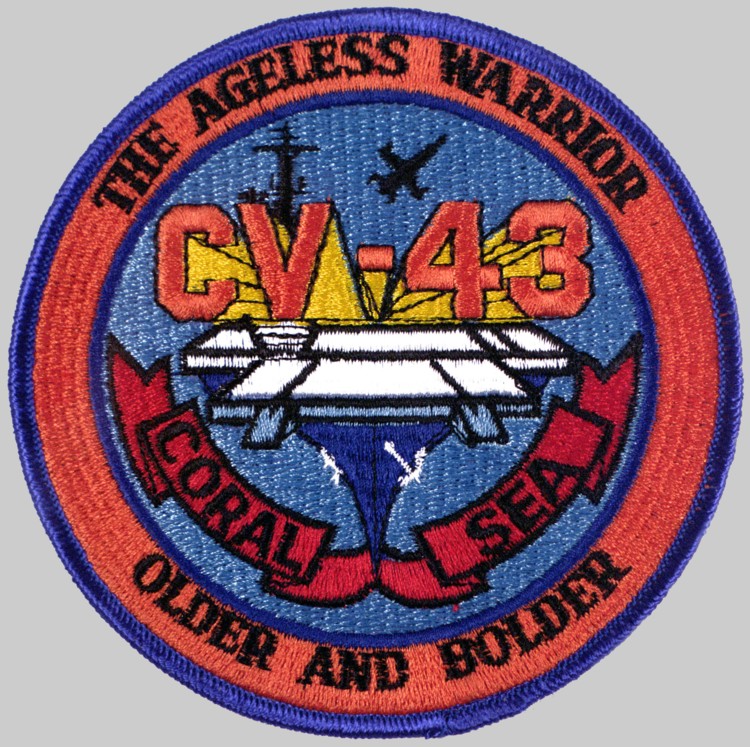 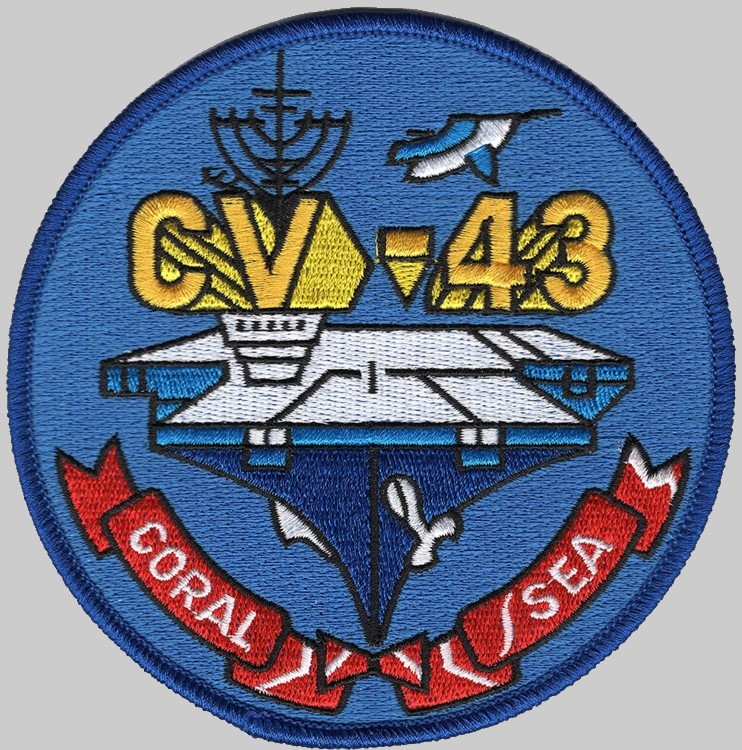 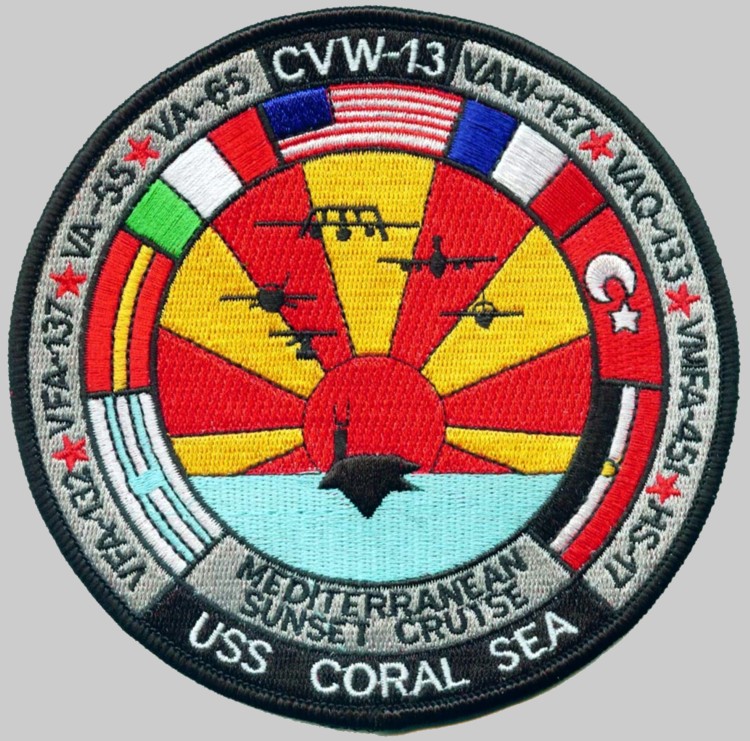 |
||
|
|
seaforces.org |
USN ships
start page | |
